Chobe National Park | Travel guide
Chobe National Park (NP) is Botswana’s first national park and its third-largest protected area at 4,517 square miles. Named after the Chobe River, forming the border with Namibia’s Caprivi Strip, Chobe is famous for its biological diversity, wildlife, lodges and water activities.
Fondly known as ‘The Land of The Giants’, the park has four distinct geographical areas: the Chobe Riverfront, the Ngwezumba pans, Savuti and Linyanti with large elephant herds spanning the riverways and landscapes in the incredible part of southern Africa.
The river plays a big part in daily life here and a trip to Chobe is not complete without a boat trip along the Chobe river, discovering wildlife and birdlife from a different perspective.
Table of Contents

Why visit Chobe National Park?
Safari at chobe national park.
Chobe national park safari drives are a real treat with abundant wildlife and beautiful scenery galore along the waterways.
Chobe has a huge population of elephants as well as lions, giraffes and other, captivating the attention of visitors and guides alike.
The birding here is also excellent with superb photo opportunities on game drives and upmarket lodges for visitors to rest after a long day viewing predators.
Visitors can also combine their African safari tours with the nearby Victoria Falls with easy border transfer into neighbouring Zambia.
A popular destination with safari tours , the park offers plenty of attractions and wildlife for couples on a Botswana honeymoon safari and groups on a luxury safari .
Home to the big five and Africa’s largest elephant population at around 50,000, Chobe also hosts large numbers of lions as well as African painted dogs, blue wildebeest, Cape buffaloes, civets, crocodiles, giraffes, hippos, hyenas, leopards and pukus.
The elephants and buffaloes are a permanent presence on the riverbanks in the dry months and zebras are very common as well, while smaller numbers of sable, roan and greater kudu can be found in the park interior.
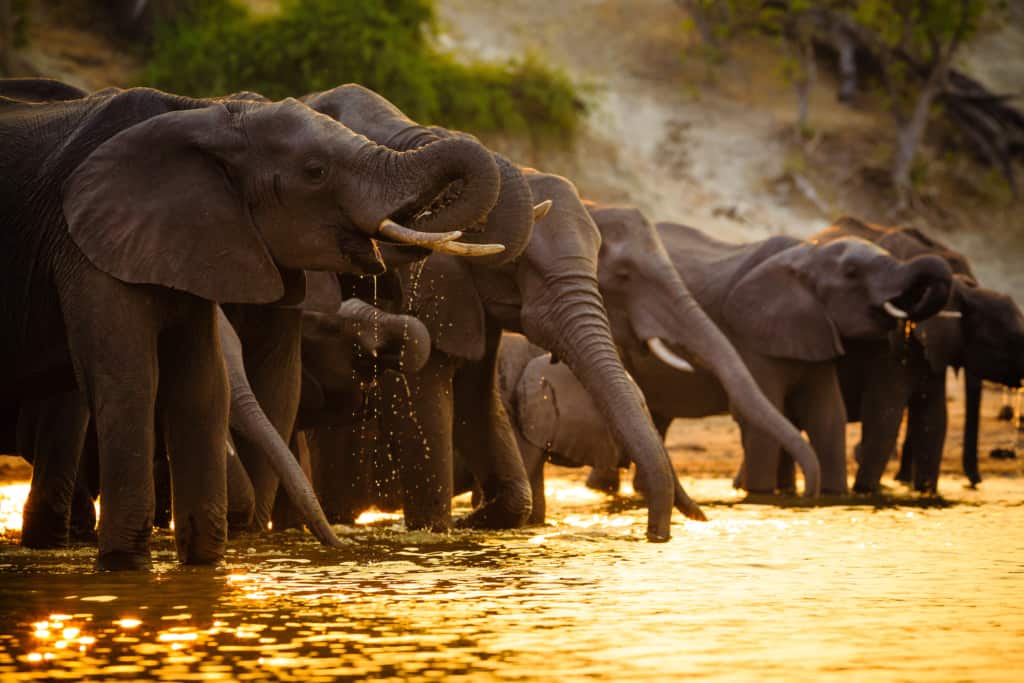
More than 450 bird species can be found in Chobe including fish eagles, skimmers, long-toed lapwings, African darters and saddle-billed storks.
Other activities at Chobe NP
Chobe offers visitors a large range of different and exciting activities in this beautiful setting.
Boat safari cruises
Starting from $49.50 per person, visitors can choose a boat cruise. Departing from Kasane, with regular morning and afternoon departures. For the more adventurous, try a white water rafting trip on the mighty Zambezi river.
Zambezi Queen river cruise
Visitors can expect to sip cocktails with a close view of relaxed wildlife. The Zambezi river queen offers a true luxury hotel experience on the Chobe River with excellent views.
Chobe Princess boat cruise
Only a small number of guests permitted per boat with the Pride of the Zambezi accommodating passengers in five elegant en-suite cabins.
Photographic safari
Limited to just a small number of travellers, visitors can share a different type of Chobe safari, a photography tour , with like-minded individuals whilst enjoying big game views and capturing favourite moments.
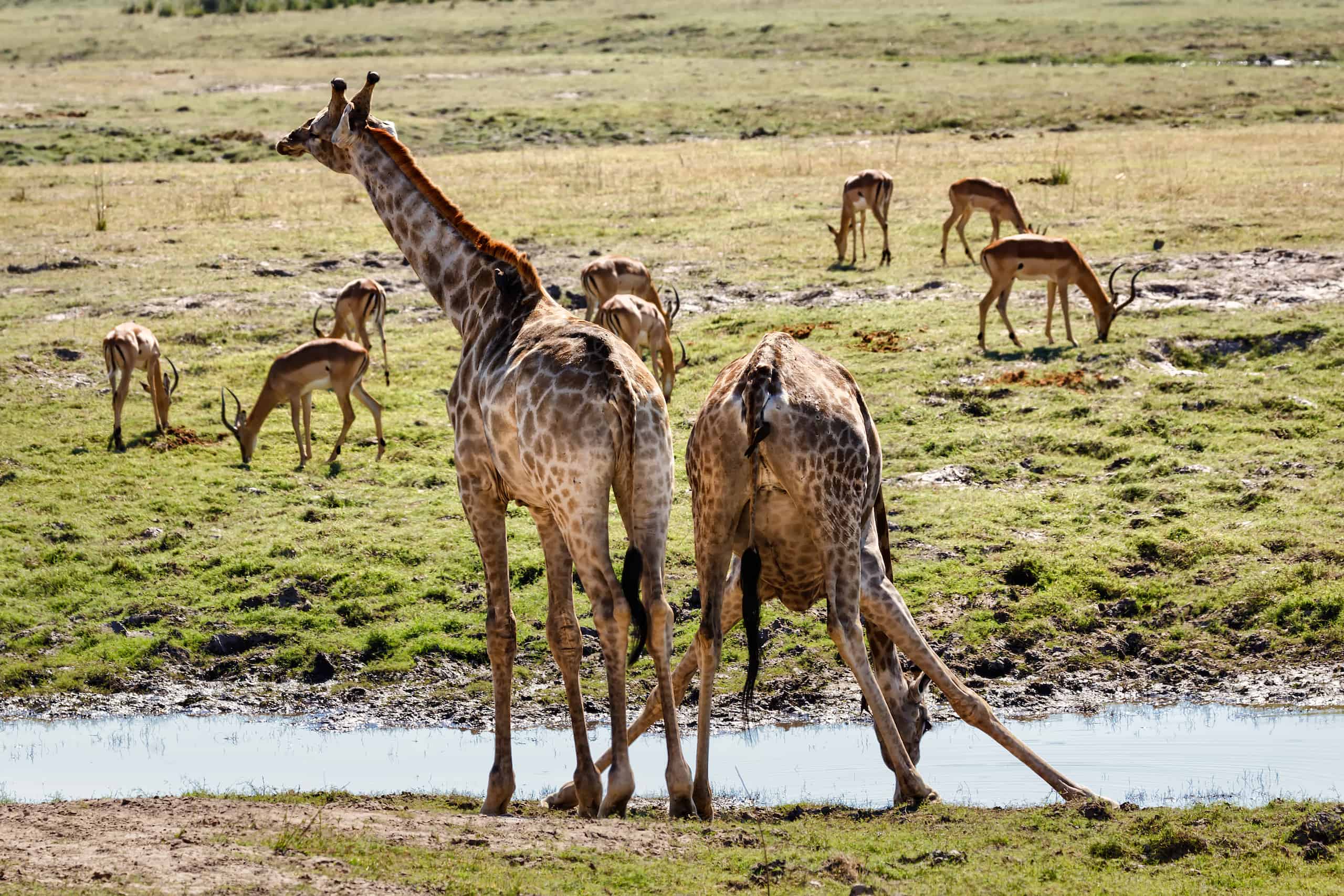
Fishing
Fishing in the Chobe river appeals to many visitors looking for a relaxing activity with these ‘catch and release’ trips.
Safari tours
Visitors can book customised safari tours to see multiple parks and game reserves over a week or longer. With some of Botswana’s best parks and reserves an easy charter flight away, trips to Chobe are often combined with tours to the Okavango Delta .
Village tours
Discover the cultural heritage of the region, traversing across the Chobe River by wooden mokoro canoe and then on foot to traditional tribal villages.
Get up close and personal with the African bush on a guided bush walk visiting the Chobe Forest Reserve.
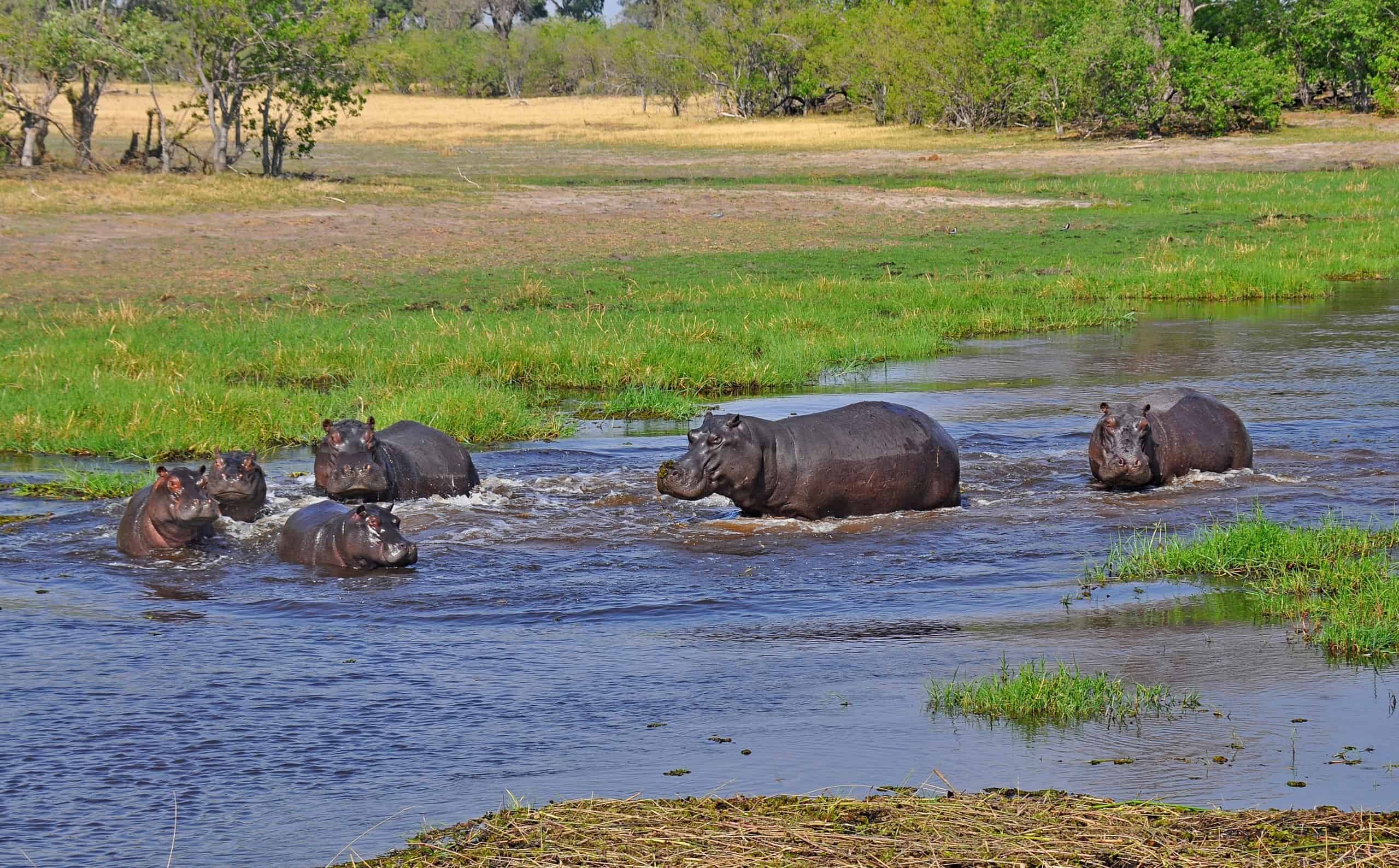
Chobe to Victoria Falls day trip
Visitors can get from Chobe to Victoria Falls either by joining a tour bus/boat or driving themselves. The drive is approximately 100km (62 miles) and takes just over one hour.
Hotels on the Zambian side of Victoria Falls typically charge approximately USD $150 per person for the day trip with pick ups via road transfer at 7am.
Check out our article on the best things to do in Botswana which includes other activities including eco safari walks with local bushmen.
How to get to Chobe NP?
For visitors wondering how to get to Botswana , you can fly to Maun (MAU), Gaborone (GAB) or Kasane (BBK) airports. A Botswana visa and certain vaccinations may also be required to enter the country.
Chobe NP in northern Botswana has multiple areas that can be visited.
The most popular and accessible of which is the riverfront, just 3 miles west of Kasane and 50 miles/1hour driving from the Victoria Falls.
The Savuti and Linyanti areas can be reached by 4×4 in the Dry season, but most people fly-in by chartered plane to their lodge.
From Maun, the route is 370miles taking over 3.5 hours. Car rental in Botswana is an excellent way to tour this stunning country and see the incredibly diverse range of Botswana animals and scenery.
Visitors to this area usually fly into Kasane Airport (BBK), and self-drive visitors can pick up their 4×4 at the airport.
Another entry point is Maun Airport (MUB). From here, visitors can fly to Kasane.
Tariffs & Regulations
Entrance fee to Chobe National Park
For international non-residents, adult daily fees cost $11 and children cost $5.50.
Carrying a small amount of Botswana currency , the Pula (BWP) is useful when paying for smaller food or ticket items.
Regulations
When visitors enter the park, they must follow common sense rules including picking up waste, respecting the reserve schedules and staying in the vehicle when required.
Accommodation at Chobe National Park
Excellent accommodation options for all parties can be found at Chobe including luxury lodges, houseboats and camping.
Chobe has very few lodges within its boundaries as the accommodation is mostly set in private concessions on the borders of various parts of the Park.
Belmond Savute Elephant Lodge Chobe NP Botswana
Situated on the banks of the Savute Channel, Savute Elephant Camp offers a magnificent birds-eye view of the majestic elephants in its natural habitat.
Savute Elephant Lodge features spacious and airy rooms atop raised wood lined decks with rich thatch roofing. Suites boast contemporary, minimalist décor with fine linens, ensuite bathrooms with el fresco showers, dressing areas, and personal bars.
Chobe Game Lodge
Chobe Game Lodge is a five-star eco-lodge situated on the banks of the Chobe River and offers 44 guest rooms.
Each lodge boasts air con, an ensuite bathroom, and a private terrace with views of the river. Four decadent suites add to the experience with their own infinity plunge pools.
Pangolin Chobe Hotel
This Chobe National Park hotel is situated on the top of a hill in the nearby town of Kasane, overlooking the mighty Chobe River.
Rooms come complete with air conditioning and modern bathrooms, and an on-site plunge pool is available for a refreshing dip.
Chobe Chilwero Lodge
Offering great views above the river, this luxury accommodation is an excellent option also.
Chobe Houseboats
Choose from a floating hotel with 14 suites, a sun deck, and a hot tub, a houseboat that sleeps 10, or a more private affair on a boat with only two or three suites.
All boat options give visitors ringside seats to the wildlife action along the riverbank and come complete with all meals, complimentary drinks and spirits, and airport transfers.
Chobe National Park camping
Visitors looking for budget accommodation in Chobe can avail of camping options starting from $12 per person per night. There are some designated camping areas in the park, though visitors are strongly recommended to camp only with a guide.
Chobe National Park offers three public campgrounds that are very popular and book up fast.
Ihaha Campground
This campground is located on the riverfront and contains 10 sites, a solar-powered washing station with flush toilets and hot water, and daily trash collection. This campground overlooks a hippo pool during the dry season when the river’s water level below it recedes.
Savuti Campground
This unfenced campground is for the adventurous, as wildlife can meander through camp at any time, and a four-wheel-drive vehicle is needed to access it. The campground contains 14 sites.
Linyanti Campground
This camp contains five sites that overlook the Linyanti rivers. This campground also has a washing station with flush toilets and cold showers and is pretty remote.
Private camps offer a step up from roughing it, with mobile tent suites, complete with ensuite bathrooms, flush toilets, steaming hot buckets, and solar-powered lamps.
Useful information
Chobe National Park can be found in northern Botswana close to the border between Namibia and Zimbabwe.
Weather
The climate in Kgalagadi TP is warm to hot with day time temperatures ranging from 25C/77F to 35C/95F.
Best time to visit Chobe NP
August to October is the best time to visit Chobe for wildlife viewing along the riverfront. Understanding the best time to visit Botswana is useful as this can impact safari prices and availability.
Health
Chobe NP lies in a high-risk malaria zone and antimalarial medication is advised. It is recommended to consult with your doctor prior to your trip.
Where is Chobe National Park located?
In the north of Botswana close to Namibia and Zimbabwe. Visitors typically fly into Kasane Airport (BBK).
How much is the park entrance fee?
For international non-residents, adult daily fees cost $11 and children cost $5.50.
What animals will visitors see?
Big 5 including herds of elephants, lions, Cape buffaloes, lions, leopards and rhinos as well as African painted dogs, blue wildebeest, civets, crocodiles, giraffes, hippos, hyenas, impala and leopards.
Chobe National Park definitive safari guide
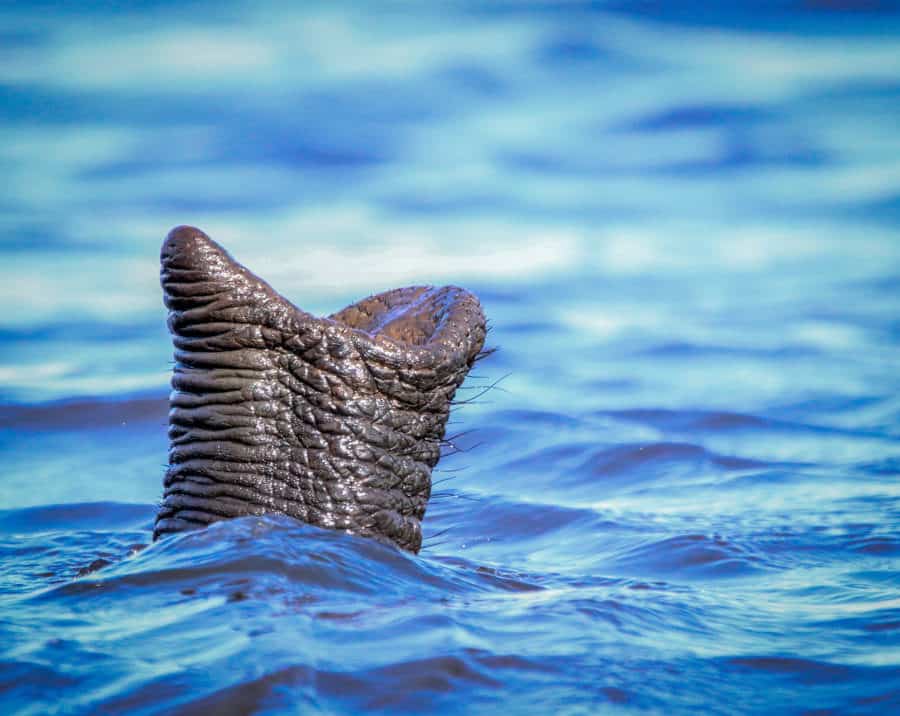
Elephants , everywhere . That’s the iconic highlight of a safari in Chobe National Park. And giraffe. Lots of giraffe actually, wandering around in their towers.
Situated in the north of Botswana, Chobe National Park is one of Africa’s most legendary safari destinations . It’s home to the world’s largest elephant population, along with a wonderful variety of other wildlife.
Chobe is also a great destination for a budget safari . The park is easily accessible and highlights as big as elephants are impossible to miss.
This definitive safari guide will immerse you in Chobe National Park and covers all the different visitor options , from super budget day trips to the most evocative of four-day safaris.
Why is Chobe National Park So Special

The abundant and diverse wildlife
Let’s get excited about what you are going to see.
Imagine the sight of an elephant, a giant swinging his trunk and flapping his ears. Now imagine a herd of elephants, perhaps 20 pachyderms barging through the bush. Now try to imagine the sight of 100 elephants. Can you do that?
How about 100,000 elephants? 100,000 ! That’s how many elephants are in Chobe National Park during the dry season, when resident herds are joined by migratory herds.
Not only is this the world’s largest elephant population , they are the world’s largest elephants. These Kalahari elephants are bigger than those you will see elsewhere in Africa and double the size of Asian elephants. They even dwarf the elephant bulls of Ngorongoro Crater .
Chobe is also one of the best places in Africa to see giraffe . The Angolan giraffe is abundant all over the national park and you cannot miss the world’s tallest animal. Hey – check out all these facts about baby giraffe , the cutest newborn on the savannah!
Then what else? Cape buffalo gather in large herds. Zebra stripes are a common sight. Hippos fill the rivers, grunting and guffawing throughout the day. Crocodiles sunbathe on the banks, causing a stir of commotion when grazers come close.
Baboons cause a racket in the trees while various large antelope species graze around the riverbanks. You can see endangered puku , tsessebe , wildebeest and many more.
Chobe National Park is also the home of predators. This is where you can see lions, leopards, cheetahs, hyenas, and even wild dogs .
So what doesn’t Chobe have? Well, there are no mountain gorillas nor chimpanzees. What else? Hmmm, Chobe has just about all the animals you will want to see on an African safari . The only real exception is the lack of rhinos . Without rhinos Chobe cannot be a big five destination.
A beautiful range of habitats
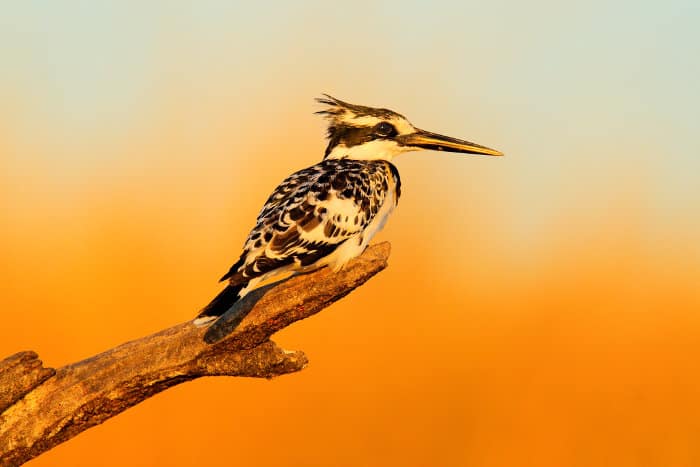
Don’t get too excited just yet. Before you book a flight to Botswana and move permanently to Chobe National Park, you need to understand the habitat, because this has a huge impact on the wildlife viewing experience.
Most of Chobe National Park is dense bush and forest . The vegetation is tall and thick but it’s not all the same. Chobe has four very distinctive ecosystems and these help to attract the wonderful diversity of wildlife.
Thick swathes of teak trees are broken by small lush plains. This is elephant paradise and you can see where herds have bashed new trails in the forest.
The Chobe River meanders along the north of Chobe National Park, forming a natural barrier between Botswana and Namibia . It joins the Kwando and Linyanti, two of Africa’s other most iconic rivers.
Riverine forest dominates the landscape between these rivers, another great habitat for elephants and forest-dwelling antelope.
Elsewhere in the park you will see open woodlands mixed with seasonal swamps and great patches of mud. Again, nice for elephants, as well as being a place where predators can hide.
Animals are attracted to Chobe National Park because there is a lot to eat . They also make a home here because there is so much water . In a Southern African region of arid desert, Chobe provides a haven of fluid bounty.
Vegetation provides places for animals to hide
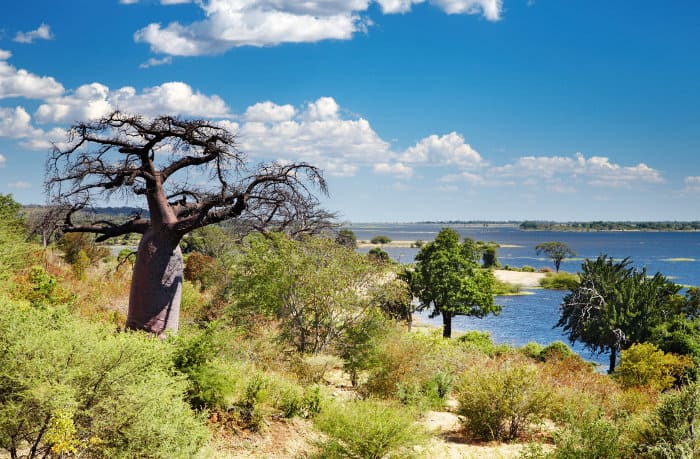
The concentration of lions and leopards in Chobe National Park is as good as anywhere else in Southern Africa. However, not many people will see the big cats because the vegetation is so dense.
It’s easy to encounter predators on open plains, such as Serengeti National Park or the Masai Mara . You enjoy incredible visibility and can hone in on the most famous safari sights.
However, explore Chobe’s dense landscapes and you will not be able to see very far . Trees and bushes block the way. A lion pride may be sleeping just 20 meters from the four-wheel drive trail, but if the lions are completely hidden you will easily miss them.
Giraffe are taller than the trees. Elephants are bigger than the bush. So these animals cannot be missed. But the predators deliberately hide away and it is rare to see them, even though they are so abundant.
Secretive animals like roan antelope can also be difficult to find. While they may be one of Africa’s largest antelope species, it’s easy for them to sneak into the trees and avoid your eyes.
So to recap – Chobe National Park has an incredible wildlife abundance and variety, but the vegetation means you will not encounter it all.
But…just as you cannot see them, the animals cannot see you coming. In dense landscapes like Chobe you can usually get closer to animals than on open grasslands and plains. And getting closer is a wonderful way to connect with your wild side.
A thrilling combination of safari activities

Game drives are the standard activity in most national parks and game reserves. Game walks and nighttime game drives are also an option in private concessions, but rarely in national parks.
Chobe National Park is a wonderful experience because you can combine different activities .
River cruises are integral to every Chobe safari. You can cruise for a few days in a custom boat, down the Chobe River and along its tributaries. Most people do at least a half-day river safari, enjoying all the animals drinking along the banks.
Game drives are also part of the safari, weaving along sandy trails through the forests, to swamps and open grasslands where you look for more than just safari giants.
In some parts of Chobe you can also go on walking safaris , an intimate experience in some of Africa’s wildest areas.
This opportunity to explore in different ways is the biggest highlight of a Chobe National Park safari. You get alternative perspectives and see different animals in different habitats.
Plan a Chobe National Park Safari Around How Much Time You Have
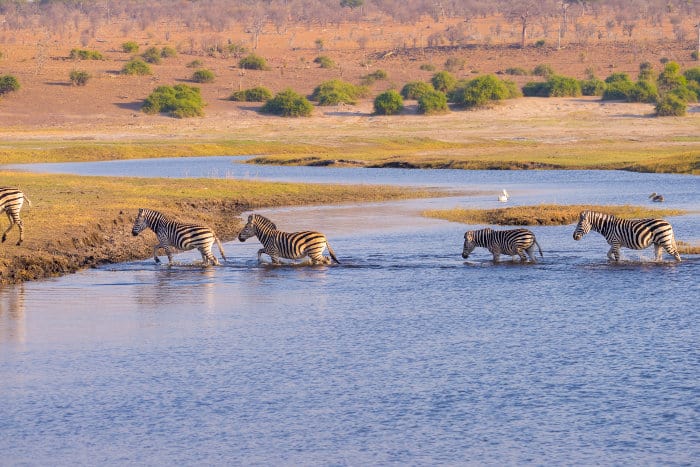
Chobe covers the northeastern corner of Botswana and practically shares a border with Namibia, Zimbabwe and Zambia. You can approach the national park from four different countries! A safari here can even be a day trip from Victoria Falls .
Chobe can roughly be split into four different areas . Each has its own habitat and contrasting animal population.
The key difference is their accessibility . A river runs along the north of Chobe so you can reach some places by water. A highway runs along the eastern boundary and you can spot elephants crossing this road on route to Zimbabwe and other places.
But getting into the heart of an enormous national park will take time . The roads are rough and bumpy. Elephants and buffalo literally block the trails. Plus, you really won’t want to rush.
You need to plan a Chobe safari around how much time you have. This length of time also equates to budget . Although a Chobe National Park is very affordable in comparison to other safari destinations, it’s still not a cheap day out.
Choose the Serondela area for a one-day safari
Serondela in the northeast is less than an hour from the Botswana border with Zambia and Zimbabwe. It’s the most popular area because it’s so accessible by road. Many people visit Serondela on a day or overnight trip from Victoria Falls.
Expect to see lots of elephants , giraffe , buffalo and hippos . Don’t expect to encounter many predators. The vegetation is thick and big cats shy away from the abundance of vehicles in Serondela.
Serondela is the touristic part of Chobe National Park because of all the day trips. You can also stay in affordable lodges overlooking Chobe River, on the Serondela part boundaries.
However if you are going to spend the night it’s better to camp inside the park , so you can also explore the Ngwezumba pans.
With two days try mobile camping and the Ngwezumba pans

The Ngwezumba interior is dry, dense and hot. It’s the heart of the Chobe ecosystem, packed full with surprises and subtle animal behaviour.
The Ngwezumba pans provide water during the dry season so animals don’t need to stick around the rivers. They help to create exceptionally diverse game viewing from July to October.
Wildlife gathers around thick nutritious vegetation and you can get very close to a wide range of Chobe National Park favourites. Expect to see the giants, as well as lesser known species and a small selection of predators.
You need at least two days in Chobe National Park to explore Ngwezumba. Many tour operators run two-day one-night Chobe tours that use basic mobile camps inside the national park.
With three days, immerse yourself in Savute
Forests and grasslands merge together around the Savute Marsh and Savute River, in the far west of the park.
For decades the Savute Channel ran dry. Now the water has returned, along with a stunning abundance of animals.
This is probably Chobe National Park’s ultimate big-game area and you will need three days. Okay, you can do it in two days, but why cut short an African safari?
Open grasslands are great for spotting predators during the dry season. Here you will also encounter large antelope herds. And of course there will be elephants – there are always elephants in Chobe National Park.
Around Savute the national park shares unfenced borders with private concessions . That means your movements will be limited somewhat. However, a safari in Chobe National Park is less than a fifth of the price as a safari in the private concessions.
If you can spend more than USD 500 a day choose Linyanti
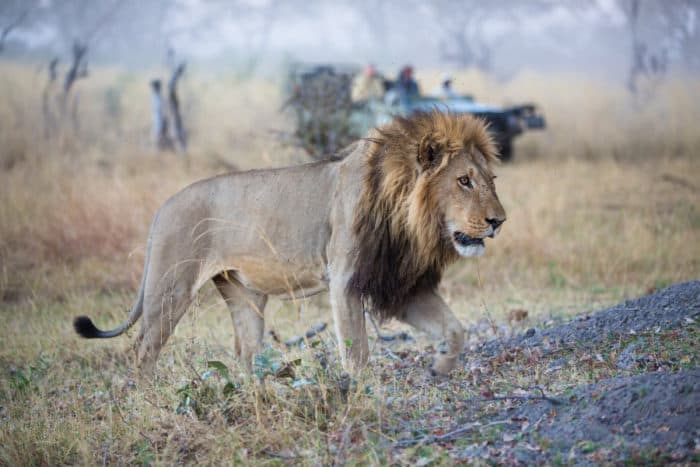
Savute and Linyanti are very similar in habitat , with permanent rivers, woodlands, grasslands and marshes.
Both offer a wonderful variety of habitats, which helps them attract an equally wonderful variety of animals.
In particular, Linyanti is the best place in the Chobe ecosystem to see predators . Lions and leopards are complemented by regular African wild dog sightings. It’s spectacular and it’s really wild, on safari so far from the day-tripping hordes.
If you have three or four days then you can visit Ngwezumba, Savute and Linyanti. However, note that most of the Linyanti area is gazetted as a private concession .
This Linyanti concession joins with Kwando and Selinda, two other phenomenal safari destinations.
These concessions are very expensive but they do offer some of Africa’s ultimate safari experiences.
Planning Where to Stay in Chobe National Park

Lodges on the Chobe River are beautiful, relatively basic, and offer a good safari on a budget. These are the most typical places to stay for a Chobe safari.
You can watch hippos and elephants from the verandah, as well as enjoy Chobe’s superb bird life.
However, these river lodges are not located inside the national park . Whether you go on a game drive or boat safari, you cannot get very far into the park before you need to return to the lodge.
By sleeping inside the park you can travel further and experience more. Mobile camping is very affordable here. It’s more adventurous than the river lodges and can still be comfortable.
Camps move every few days and are pretty basic, with tents, sleeping mats, outdoor bush toilets, and…well, that’s about it. This is camping, not glamping .
But just imagine…you can camp in a national park where 100,000 elephants roam! You can camp in a woodland occupied by big cats and big game. Talk about a connection with your wild side!
When to Visit Chobe National Park

Many Chobe animals are permanent residents. They have all the food and water they need. Except there are two problems .
Chobe National Park isn’t the safest place for many animals , not with so many predators and so many places for these predators to hide. There’s also an issue of overpopulation . Vegetation is depleted with all the mouths that need feeding.
So many of the animals leave Chobe during the green season, which is roughly from late-November to March and April . This is the hottest time of year as well, so it’s not great for being out in the bush, as you can read more about in our detailed Botswana safari guide .
When the rains come the animals spread far and wide. They go off to fresh pastures and vegetation, knowing they can drink from seasonal waterholes and swamps.
November to April is off season so the park will be less crowded. The birdlife is fantastic during these months but you can’t get the complete Chobe big game experience.
After the rains have stopped and the sun has shriveled the earth, Africa’s wildlife returns to Chobe. This is the dry season so there isn’t much water except for in Chobe and the Okavango Delta .
Chobe always has water so it’s an incredibly popular migratory destination , especially for elephants. Animals start arriving from May onward and by July the wildlife population has swelled.
The best time to visit Chobe is June to September, at the height of the dry season, when the vegetation is at its lowest and the animal population is at its highest.
Planning a Safari Itinerary

From the Victoria Falls area
Arrive from Victoria Falls and you will first reach Serondela. By the time you cross the border it will be mid-morning, so not the best time for a game drive.
Most itineraries start with a boat safari along the Chobe River. Then later in the afternoon you can go on a game drive. Spend another day and you can do an early-morning game drive followed by an afternoon boat cruise.
Expect to pay upwards of USD 200 for a Chobe day trip from Vic Falls. Make it USD 300 for an overnight trip – this is really good value for the experience.
From elsewhere in Botswana or from Namibia
Arrive from anywhere in Botswana and you can access Chobe from the south . So it’s best to start with game drives, work your way through the national park, then end with a boat cruise.
Safaris really vary in price and you can find space on a shared safari for USD 150 per day upwards. Expect the price to be much higher for a private safari.
Still, in comparison to the Okavango Delta and elsewhere in Africa, this is good value.
Extended boat cruises

Standard boat cruises are in small boats that go up and down the river past hippos and elephants.
Large live-aboard boats offer multi-day Chobe river safaris. These are ideal if you seek downtime and a very relaxed safari. They travel west towards Linyanti and Savute, so the game viewing is better than a half-day cruise.
These extended Chobe cruises are pretty expensive and start from USD 450 per day.
Extended safaris
Hey, you want to connect with your wild side, right? Well, there aren’t too many national parks wilder than Chobe.
Our advise – try to make your Chobe National Park safari as long as possible .
It takes a long time to even reach the Chobe wilderness, so don’t cut your time short. Immerse yourself and savour the complete Chobe experience.
Right, we’re off to marvel at some elephants in Botswana. Happy safari! 🙂
About The Author
Editorial Team
Related posts.
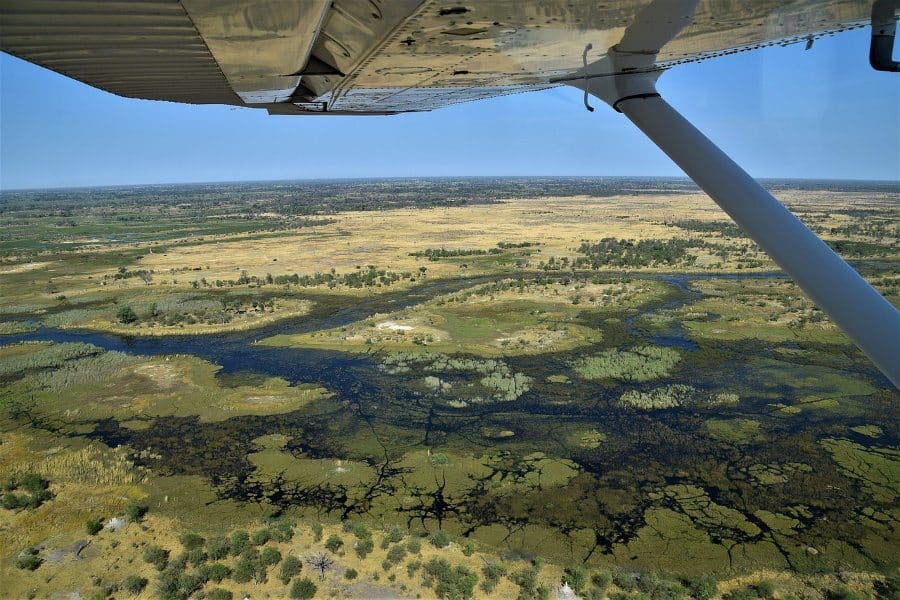
Bird’s eyeview of the Okavango

Botswana safari: the planning guide for beginners
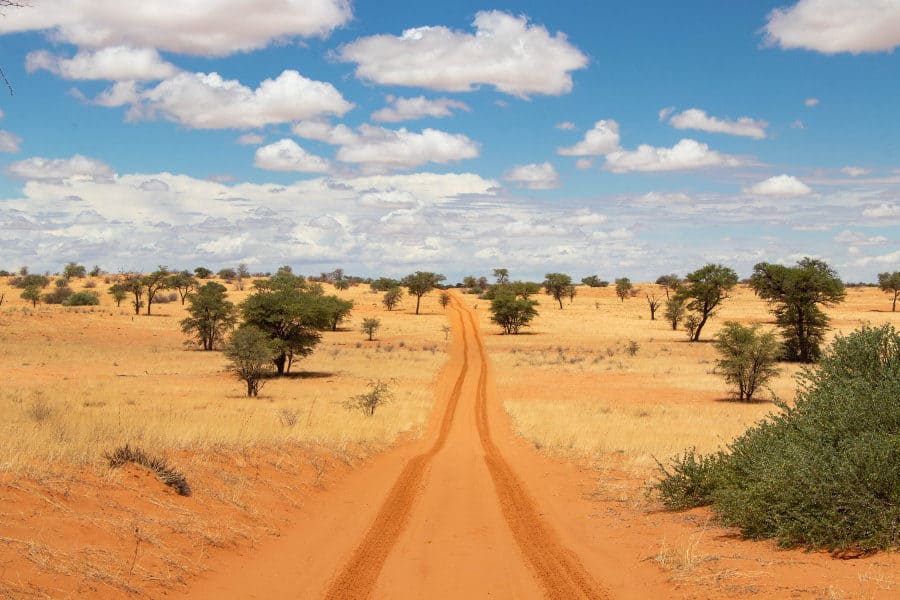
Kgalagadi Transfrontier Park safari guide
Leave a comment cancel reply.
Your email address will not be published. Required fields are marked *

The Ultimate Guide to a Chobe National Park Safari
Chobe National Park in Botswana, known as the ‘ elephant capital of the world ‘, is one of my absolute favourite safari destinations in Africa.
Chobe was declared a national park in 1967 and it covers over 11,700km 2 – that’s about the size of Qatar. It’s a popular destination for both guided and self-drive safaris – although a 4×4 is needed as it’s pretty sandy!
If I were able to dream up the perfect safari location, in terms of the scenery, the location, the accessibility, the animals, the lighting, the experience… then Chobe is probably it!
So here’s the Helen in Wonderlust guide to a Chobe National Park safari to help you plan and have an incredible trip!
Please Note: Some of the links in this post are affiliate links, which will earn me a small commission at no extra cost to you. Affiliate sales help with the running costs of this site, so thank you for your support!
Table of Contents
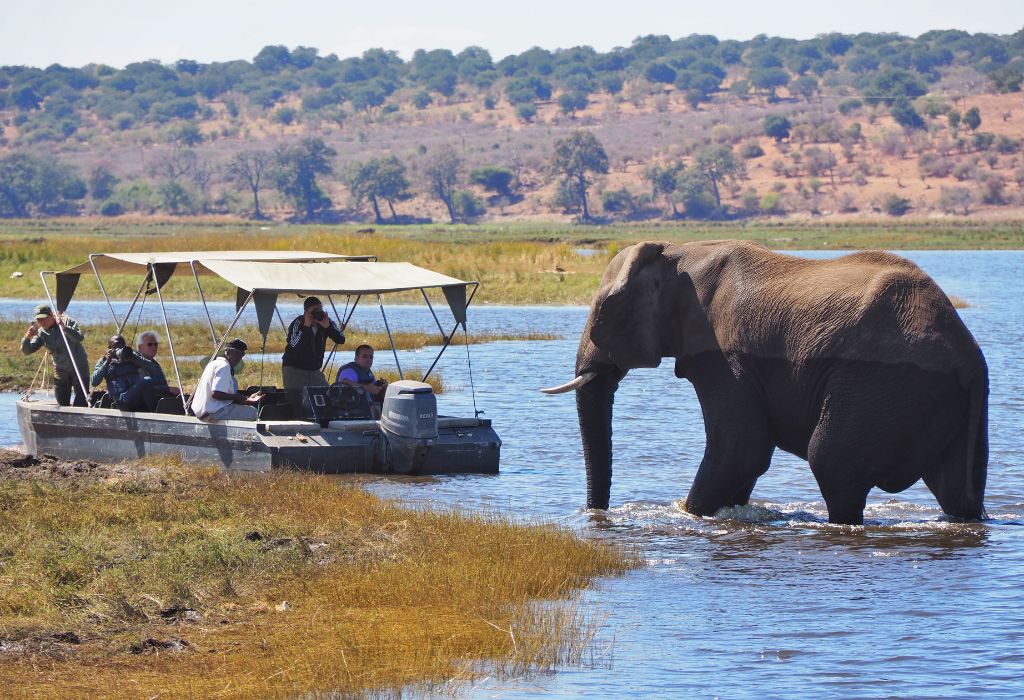
Is Chobe National Park Worth Visiting?
Absolutely! As I said above, I LOVE Chobe and I’ve visited quite a few times over the last 15 years.
Whilst Chobe covers a very large area, I’ve had some of my best ever wildlife sightings here. It’s renowned for being one of the best places in the world for elephants – with population estimates of between 50,000 – 120,000! That’s quite a wide range, but whatever the actual number – it’s a lot!
I was once on safari in the Chobe Riverfront area and we were literally surrounded by hundreds of elephants as far as the eye could see. It was absolutely magical.
It’s also one of the parks where I’ve had the most luck with leopard sightings (probably equal with the Masai Mara in Kenya , Serengeti in Tanzania and South Luangwa in Zambia), and it’s also quite common to see huge prides of lions. The Chobe Riverfront is where I saw my first (and only) brown hyena – albeit briefly.
It’s a really special place. And the light…. there’s just something very special about those Botswana sunsets, and sunrises for that matter.
Most Botswana group tours and overland tours will include Chobe National Park in their itineraries as it’s a very accessible park and also, very wonderful!
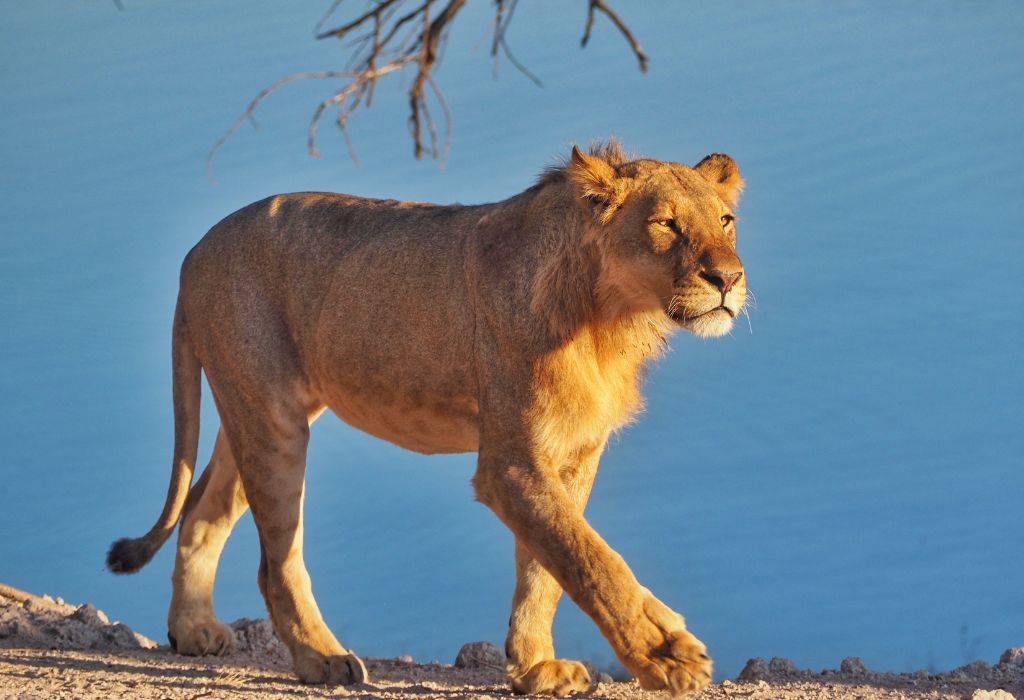
Geography of Chobe National Park
Chobe National Park is located in the northern part of Botswana and has many different areas, but here are the 4 ‘main’ areas:
- Chobe Riverfront (or Serondela): In the northeast of the park, close to the borders with Zambia, Zimbabwe and Namibia. This is the main area people are talking about when they refer to ‘Chobe National Park’ and it’s the most popular area to visit as it’s easy to get to and has a high concentration of wildlife, that is very used to humans.
- Savuti (or Savute) Marsh: In the southwest of the park, closer to the Khwai Conservancy, Moremi National Park and the Okavango Delta – we had great lion, leopard and elephant sightings here but this area is very remote and tricky to get to, so best to do a fly-in safari or if you’re driving, combined with Moremi/Khwai on a multi-day safari. You cannot drive there from any major town for a day trip and it’s too far to drive for a day trip if staying outside the park.
- Linyati Marsh: Located in the remote northwestern part of the park – most people fly to Linyati as the roads can be ‘ brutal ‘. Known for having elephant ‘megaherds’ as well as plenty of predators. This area can get waterlogged with the rains, so it’s best to check the road conditions before trying to reach here if driving yourself and perhaps best avoided if you’re not an experienced 4×4 driver.
- Nogatsaa: Located south of the Riverfront area. I went through here once and it is a very untouched, desolate and wild part of the park. We found the animals were a little more skittish here, compared with the Riverfront area. But I only briefly drove through here on the way out of the park, so we didn’t explore much.
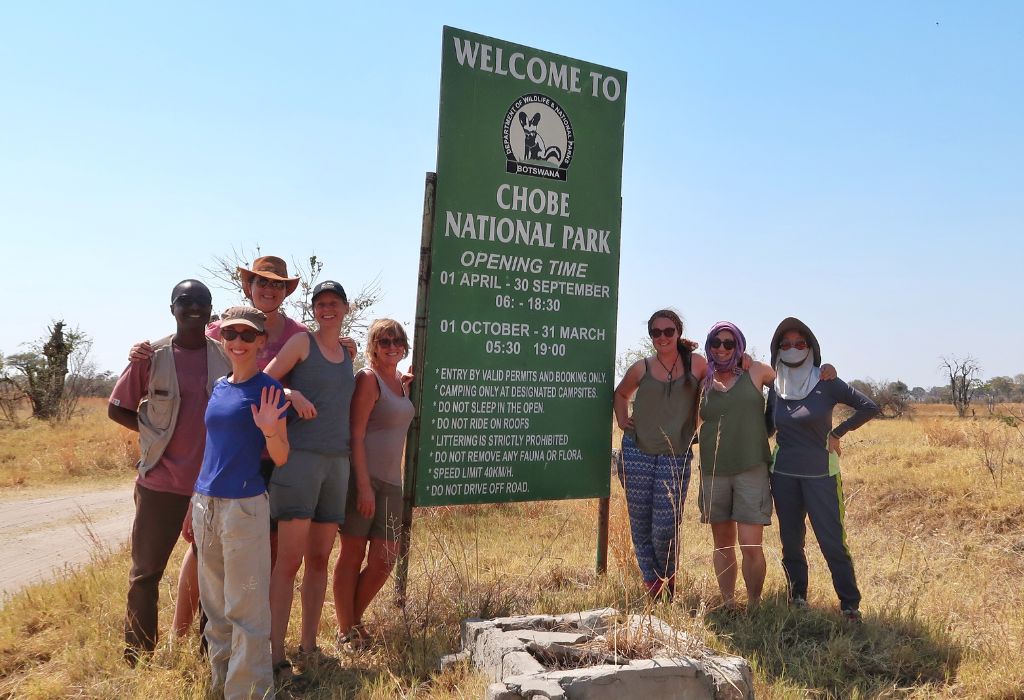
Getting To & Around Chobe National Park
There are a few different ways to enter Chobe National Park, including road, plane or boat.
If travelling by road, there are 3 main entry gates for Chobe National Park – Sedudu near Kasane, Mababe ‘near’ Maun (but closer to Moremi and Khwai) and Ngoma near the Caprivi Strip in Namibia.
There is also the Ghoha gate which is inside the park just north of Savuti. You can also exit at the Poha gate in the Nogotsaa area (we used this gate to go from Savuti to Elephant Sands), but you can’t enter there – and there’s very little info about it online. But I did find this .
If you stay near to one of the gates, you can do day trips into the park. But if you have the time, you could do a multi-day safari – either staying in one area of the park, entering and exiting through the same gate. Or entering through one gate and leaving through another.
To self-drive in the park, you will need a 4×4. For those without a 4x 4, you can get to Kasane relatively easily using local buses (or a 2-wheel drive car) and then take tours from there – either day tours or longer. You can also take tours from Maun (which is also easily reachable on the main roads), but these can be more expensive as this side of the park is much less accessible and needs to be part of a multi-day trip.
For those with a larger budget, flying into the park (from Kasane/Maun) and between airstrips inside the park/other parks is another option. Most of the lodges inside the wider national park are only accessible by light aircraft or helicopter.
Some of the luxury lodges/camps may be (technically) reachable by road, but park regulations prohibit self-driving to these locations due to vehicle restrictions and most don’t accommodate self-drivers anyway.
From Kasane (Sedudu Gate)
The main gate is the Sedudu gate, which leads to the Chobe Riverfront area. The gate is on the outskirts of Kasane town, near to the ‘Four Corners of Africa’ where Botswana, Namibia, Zimbabwe and Zambia meet.
Kasane has an international airport, with flights arriving from Maun in Botswana, Johannesburg and Cape Town in South Africa and Victoria Falls in Zimbabwe.
Kasane is also accessible by road from Maun – it’s around an 8 hour drive, but you can break up the journey stopping in places like Gweta (for the Makgadikgadi/Nxai Pans) and Nata (Elephant Sands) on the way (or vice versa).
Kasane is only 15 – 20 minutes from the Kazungula borders (where you cross to Zambia and Zimbabwe). Both Livingstone, Zambia and Vic Falls in Zimbabwe are just over an hour’s drive away.
As this gate is so accessible, you can take day trips to the Riverfront/Chobe Forest Reserve areas from Kasane, or even Livingstone and Vic Falls. You can also take short boat safaris into the park from Kasane and most of the lodges on the river.
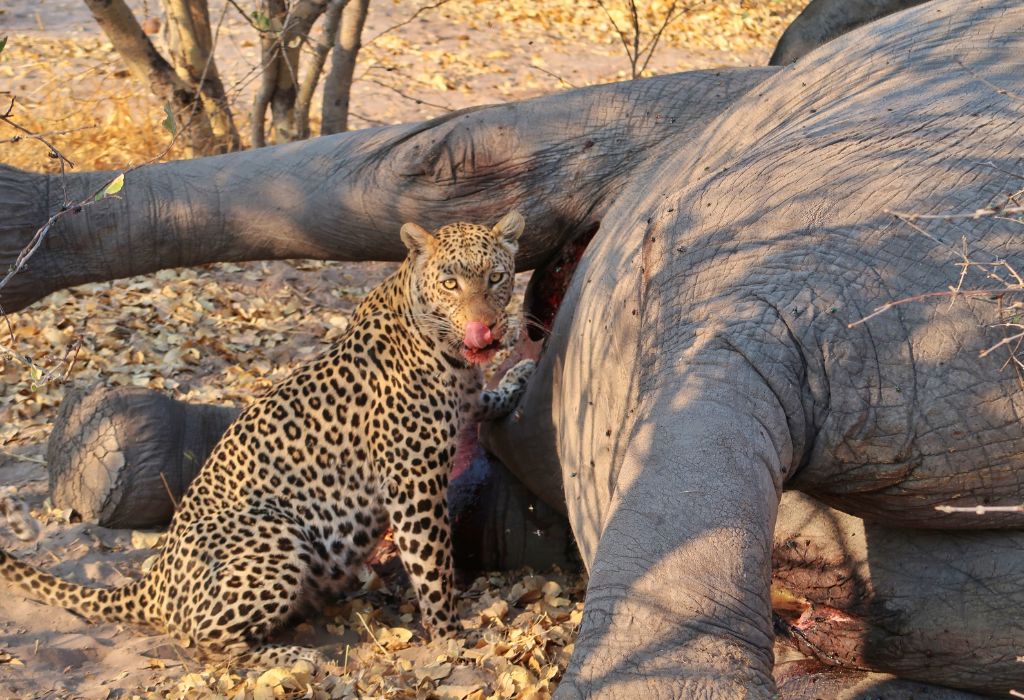
From Maun (Mababe Gate)
The Mababe gate is the one you would use if coming from/going to Maun, Moremi Game Reserve or the Khwai Concession. This brings you into the Mababe Depression area which is south of the Savuti area of the park.
This gate isn’t close to a major town (Maun is at least 3 or 4 hours by road on a good day), so it’s best if combined with a safari in Khwai and/or Moremi. There are also some lodges/campsites just outside the gate if you want to stay in one place and then day trip (to Mababe Depression/Khwai/Moremi) from there.
Maun has an international airport, with flights from Kasane and Gaborone in Botswana, Johannesburg and Cape Town in South Africa, Victoria Falls in Zimbabwe and Adis Ababa in Ethiopia.
We came through this gate during a multi-day trip where we drove in through the Mababe Gate (coming from Khwai/Moremi), camped in and travelled through Savuti and then left by the Poha Gate (Nogotsaa) travelling through the wilderness to join the A33 going south enroute to Nata and Elephant Sands, and then we travelled back north on the A33 to the Riverfront area via the Sedudu Gate.
The route from Nogotsaa to Elephant Sands wasn’t the best, so I probably wouldn’t do that gain!
Savuti and Nogotsaa felt very wild, compared with the Riverfront as you see a lot less other people. We had lots of great sightings, including lions, leopards and of course, lots of elephants. But you also need to be well prepared and a lot more self-sufficient – as you’re a bit more out on your own here! There are no shops or petrol stations to stock up!
From the Caprivi Strip (Ngoma Gate)
The Ngoma gate is near Namibian border (Ngoma Border) which is on Caprivi Strip (sometimes called the Namibian Panhandle). You can cross into Botswana here and then drive outside the park on the A33 transit road to Kasane (I did this, going the other way on an Intercape bus once) or you can enter the park through the gate and travel through the park to either Kasane or Savuti.
This gate brings you into the north of the park, not far from the Riverfront area and is a good option if you’re doing a Namibia and Botswana trip and don’t want to double back on yourself!
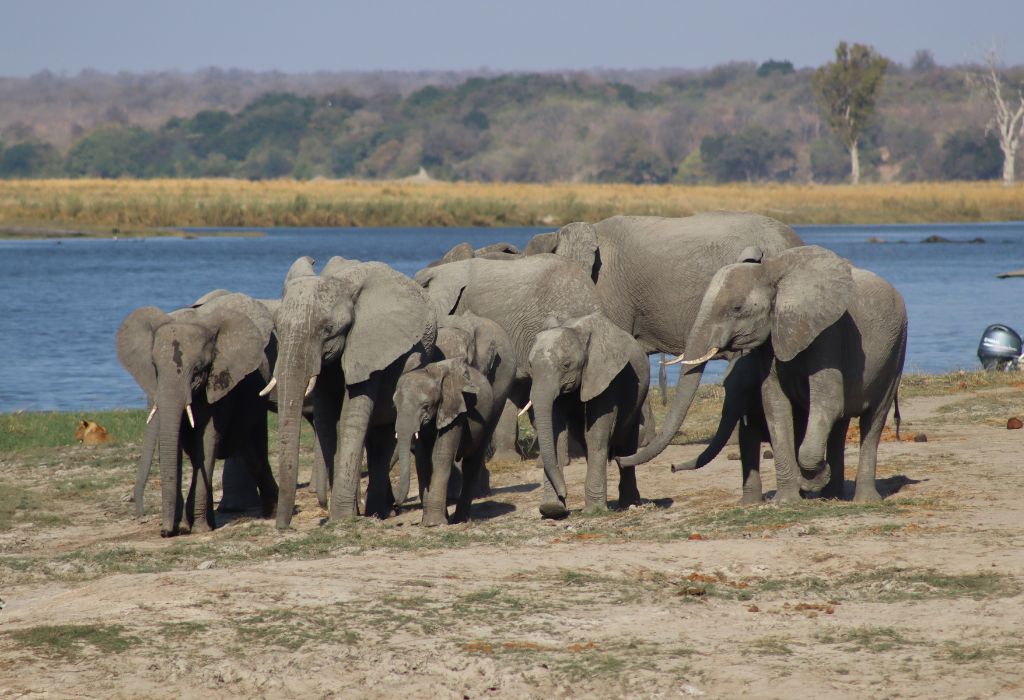
How Long to Spend in Chobe National Park?
As Chobe National Park is so accessible from Kasane/the Caprivi Strip, you can just visit for the day and see quite a lot in that time as the concentration of animals around that area is so high.
It’s also quite common for people to do day trips to the Riverfront from Livingstone, Zambia or Vic Falls, Zimbabwe. And if you’re just visiting for the day, without staying overnight in Botswana, you don’t forfeit your Zambia, Zimbabwe (or KAZA) visas.
But if you want to see more, it’s worth spending a couple of days or a night or two in the park. And if you want to see different areas, you’ll need to spend at least 3 or 4 nights, or even longer, inside the park.
But, likewise, a day trip to the Chobe Riverfront is also great if you are short on time.
When is the Best Time to Visit Chobe National Park?
The best time to go on a Chobe National Park safari is the cool, dry season, between May and October. During this time of year, the vegetation is less dense and the animals tend to gather near the water sources making them easier to spot.
But this is winter, so whilst it’s generally quite pleasant in the day, mornings and evenings, can be very chilly – especially in June – August (or when camping)! Between June/July and October is also the ‘high’ season, so the prices tend to be a lot higher.
The shoulder seasons of April, May, November and December are also good times to visit. You may get a little rain, but it shouldn’t be too bad and prices will be lower. Although these days the weather is becoming increasingly unpredictable.

Types of Chobe National Park Safari
There are lots of ways to go on a safari in Chobe depending on your preference or budget!
Self-Drive Safari
If you have your own 4×4 vehicle, either your own car or a rental, you can drive through the park camping at designated camping spots. I don’t think (but don’t hold me to it) that there are any lodges inside the actual park that you can self-drive to (so I would suggest checking with the lodge before you book if your plan is to self-drive).
For the campers, you can stay in ground tents, roof tents or camper vans. I’ve seen some incredible set ups from the overlanders and South Africans who travel up through Botswana with everything – including the kitchen sink!
You could also stay just outside one of the park gates and take day trips from there. Some companies (see below) can also help you plan, book and support you on your self-drive safari.
If you are self-driving I would strongly advise you to check the road conditions before you drive and join the overlanding communities on Facebook for advice. Apps like iOverlander and Tracks4Africa are also very useful!
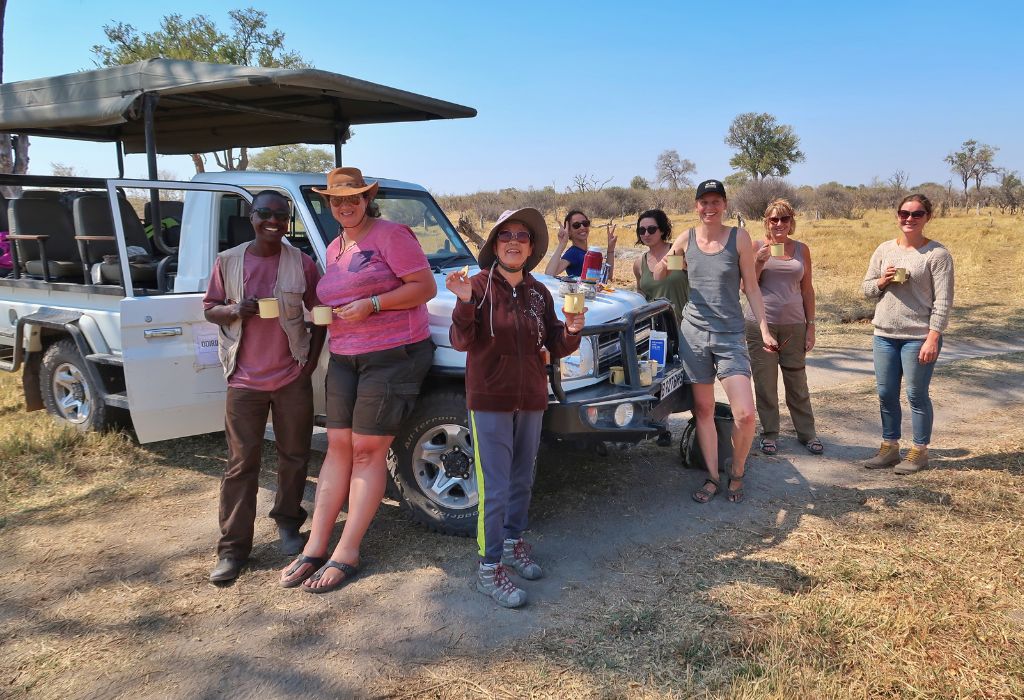
Guided Safari
If you don’t have your own transport, you can book a guided safari with a safari company or game drives with your camp/lodge. A guided safari allows you to relax and enjoy the safari, rather than worrying about driving or looking for animals.
These can be short one or two day safaris from Kasane or as I mentioned above, you can do multi-day safaris venturing through the park. I have some written up some Botswana safari itineraries here .
For the multi-day safaris, where you are moving locations, accommodation can be camping or lodges, with one guide driving you between them. You would usually arrange this via a safari company and they can organise a trip, based on your budget and accommodation preferences.
For the camping safaris, these vary from participatory safaris, where you help the crew with the set up of the camp (putting up your tents etc), cooking etc, through to non-participatory safaris, where everything is done for you. The cost will usually depend on how fancy the set up is and how much work you do. Non-participatory is always more expensive than participatory – for obvious reasons!
If you don’t want to move about too much, you can book accommodation with one lodge in or near to one of the park gates and then book game drives with them in one area.

Boat Safari
Most people who do a safari in the Chobe Riverfront area will also do a boat safari on the Chobe River at some point. These can be morning/afternoon/sunset safaris or even overnight if you stay on one of the very luxurious riverboats! All lodges and safari companies can arrange these for you.
Fly-in Safari
On the higher end of the budget are the fly-in safaris. This is where you fly into the park to the more remote airstrips, staying in lodges or static camps. You will then do your safaris from the lodge, as they will have their own fleet of safari cars.
You may fly to just one lodge and then out again, or fly between different areas of the park. You can also fly-in if you’re doing a mobile camping safari too, but most people don’t to save costs – as you’ll be paying for the cost of the road transfer and the flight, as you still need a vehicle to meet you to do your safaris in once you get there.
Some luxury companies own multiple lodges and they can arrange everything for you as a package.
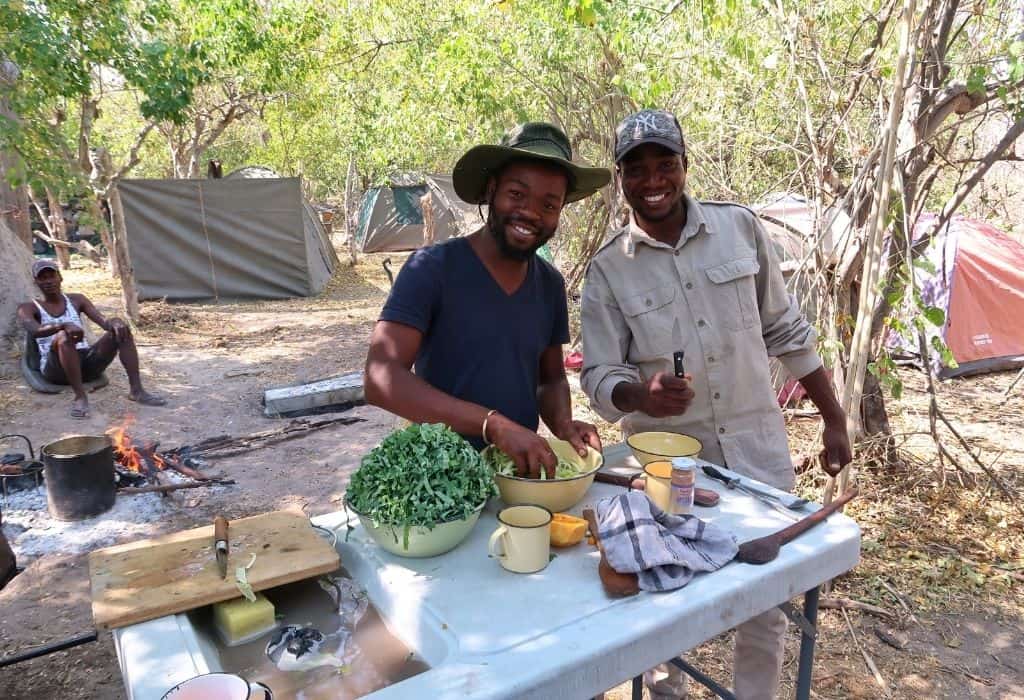
Recommended Companies
There are a few companies that I can personally recommend for your Chobe National Park safaris.
Rock My Adventure – Small Group African Adventure Tours
If you’re a solo traveller, couple or small group who wants to join a larger group, then why not join me on the Rock My Botswana & Victoria Falls Adventure tour. We visit Chobe National Park, as well as the Okavango Delta, we sleep under the stars in the Makgadikgadi Pans National Park, get up close to meerkats, go quad biking, stay at Elephant Sands and visit the incredible Victoria Falls in Zimbabwe!
The trip is a mix of comfortable (non-participatory) camping and lovely lodges! It has the best of both worlds – and the price is pretty reasonable too!
Kalahari Breeze Safaris
Based in Maun, my friends at Kalahari Breeze Safaris offer a range of different guided and non-guided safaris through Botswana, including Chobe.
They do mobile, non-participatory camping where you stay in 2-person dome or Meru tents with stretcher beds, ensuite bathrooms (short drop toilet and hot bucket showers), campfire, mess tent (with table and chairs) and a crew to look after you. Everything is provided including bedding, food and water/soft drinks – you can also add an alcohol package!
Whilst you are on your safari with your guide, the rest of the crew will go ahead of you to set up camp. When you arrive, everything is done so you can just relax and enjoy the bush. I absolutely love our mobile safaris with them.
They also organise driving lodge safaris, fly-in lodge safaris, a mix of mobile camping/lodge safaris and day trips to the Okavango Delta from Maun. If you are self-driving, they can help you arrange everything, including car hire.
Their guides are amazing and highly recommend them!

Kalahari Tours
Based in Kasane, my friends at Kalahari Tours organise trips into the Chobe Riverfront area – from day trips to 3 day, 2 night safaris. They do pick ups from Kasane, Kazungula, Livingstone and Vic Falls.
Their trips usually start with a 3-hour boat safari on the Chobe River, followed by lunch and then you head into the park in an open vehicle for the rest of your safari.
If you camp overnight with them, you’ll stay in a wild bush camp with your fellow travellers, guide and camp staff, in 2-person dome tents with bedding provided (floor mattress, sheet duvet and pillow) and shared toilets/showers (usually small tents with a small short drop toilet in one and a shower in the other).
The crew will have everything set up for you when you arrive. Dinner is usually a self-service affair, eating around the campfire. They usually stay at private campsites in the park that are only accessible to tour operators, rather than the public campsites, so there’s usually no other groups around.
They can arrange private safaris and they also have joining safaris which are great for solo travellers.
SafariBookings
If you want a quick way to look at different Botswana & Chobe National Park safari tours , then take a look at SafariBookings – the largest online marketplace for African safari tours. You can filter by different parks, length of trip and price!
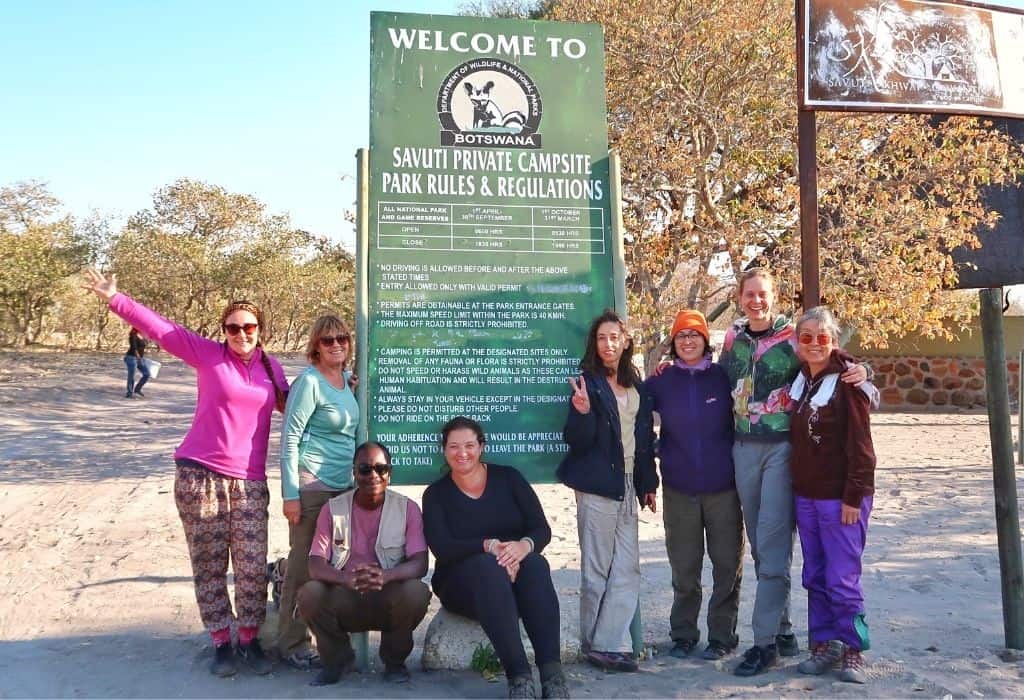
- Where to Stay in Chobe National Park
Chobe has options for everyone! There are private campsites, public campsites and more luxurious lodges/tented camps – both inside and near to the park gates.
Public Campsites Inside the Park
If you’re self-driving, there are a number of public campsites inside the park. These are very popular and get very busy in high season, so you should book these ahead of time – I’ve been told a year in advance is best!
The public campsites have access to water, showers and toilets, but not all have electricity – so bear that in mind. The campsites aren’t fenced, so animals will often wander through! So be sure to secure all food when away from your camp, unless you want some uninvited guests.
If you want to book your campsites:
- Ihaha (Chobe Riverfront) campsites are managed by Kwalate Safaris .
- Savuti and Linyati campsites are managed by SKL Camps .
- There are currently no public campsites around Nogotsaa.
If you don’t want to do everything yourself, there are companies such as Kalahari Breeze who can help you with planning and booking your campsites which would save you a lot of planning work!
The local tour operators do have access to other, more private bush campsites through HATAB (Hospitality & Tourism Association of Botswana), but they are not open to self-drivers. If booking a guided camping safari, your safari company will arrange the campsites (and everything else) for you.
The tour operator bush camps don’t have bathrooms, so your safari operator will provide those as part of your package.
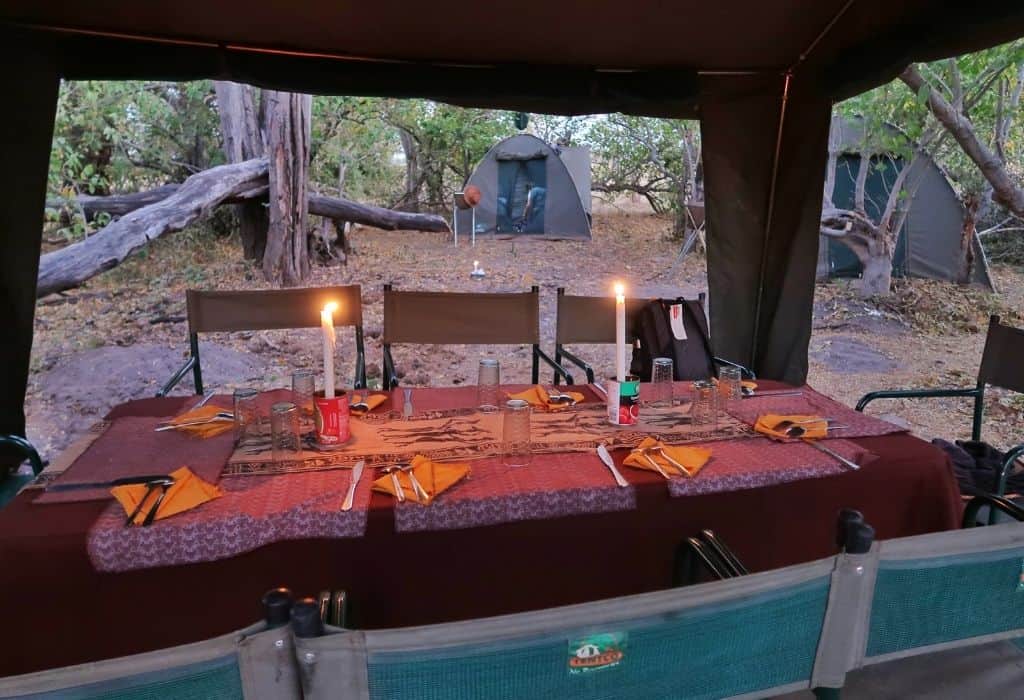
Campsites Outside the Park
There are some campsites located just outside the gates in Kasane, Ngoma and Mababe. These include:
- Thebe River Safaris : Lively lodge and campsite in Kasane. They have a popular bar. The campsite works on a first come, first service basis – you can’t book for camping.
- Senyati Safari Camp : Situated in the Lesoma Valley, 20km from Kasane, Senyati is a self-catering camp. They have campsites and some chalets. There is a bar but no restaurant. This place is popular due to its elephant waterhole.
- Chobe Forest Camp : Located about 45 minutes from Kasane on the way to Nata. They have 9 campsites with private ablutions and a pool.
- Chobe Mopani Forest Lodge & Campsite : Beautiful lodge close to Chobe Forest Camp. They have a pool that overlooks an amazing waterhole.
- Muchenje Campsite & Cottages : S elf-catering cottages and campsites situated outside the park, about 7.2 km from the Ngoma gate . Communal sundowner terrace and a pool.
- Mababe River Lodge & Campsite : Family run lodge and campsite on the Khwai River with a lovely infinity pool. 9km from the Mababe Gate and about an hour from Khwai & Moremi.
- Sunset Riverview Campsite : On the transit road, near to Kavimba, about 23km from the Ngoma gate.
Lodges in Chobe National Park
There are many hotels and lodges around Chobe National Park and a few inside the park too. Most fall under the luxury category, but there are some reasonably priced hotels and campsites (above) in Kasane and outside the main gates. I’ve written a full guide to the Chobe safari lodges here.

Things To Do in and Around Chobe
The number one thing to do in Chobe, is to go on a game drive safari – but you probably knew that already! All hotels and safari companies can arrange these for you!
Specialist Safaris
Many lodges also offer specialist safaris, such as birdwatching or photographic safaris.
Get a Spa Treatment
Some of the hotels and lodges have a spa of some sort – in the Chobe Riverfront area, this includes Cresta Mowana Resort & Spa, Chobe Chilwero, Chobe Safari Lodge and Chobe Game Lodge. There is also a beauty salon in Kasane called Frotusa Beauty Spa .
Take a Scenic Flight
A popular activity in the area is to take a scenic flight over Chobe National Park or Victoria Falls, either by small plane or helicopter. There are several companies who do this including Pyrus Eagles , in Botswana, Batoka Sky in Zambia and The Zambezi Helicopter Company in Zimbabwe.
You can also microlight over Victoria Falls for the ultimate thrill!
Village Tours
You can take tours from some of the lodges to the local villages. It’s best to speak to your lodge/safari company to see if they can arrange this. I know of some lodges that do tours to Kazungula village and also Subiya tribe villages on the Namibian side of the Chobe River.
If you are staying near to the Mababe Gate, Khwai village is an interesting place to visit.
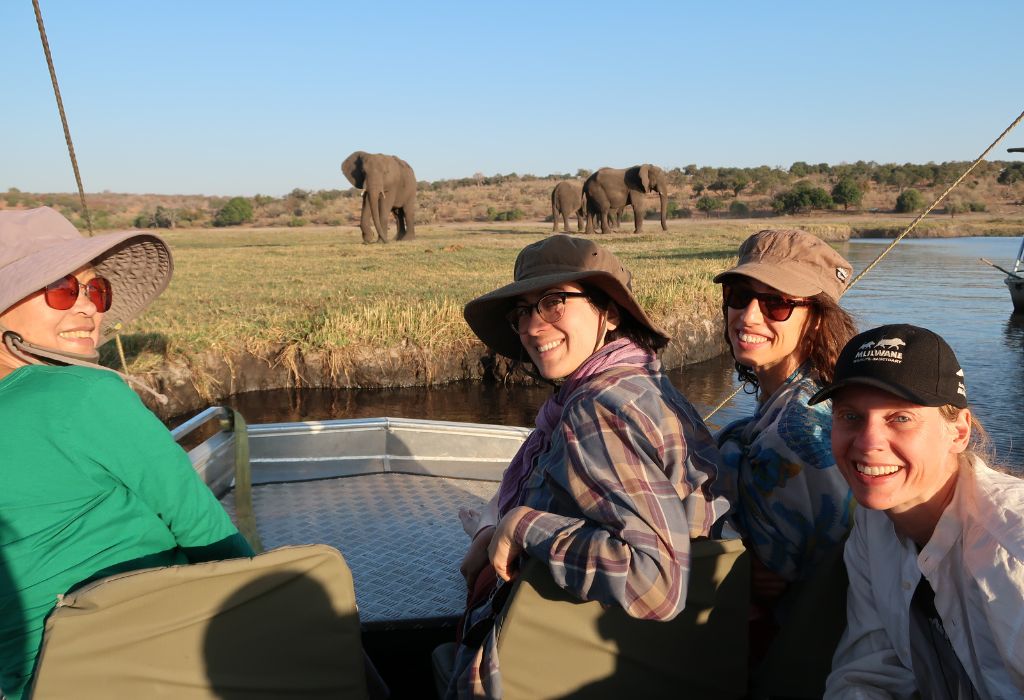
Boat Cruise
Boat safaris and sunset cruises are a popular thing to do in Chobe National Park. All safari companies and hotels in Kasane can organise these for you.
Go Shopping
There are plenty of shopping opportunities with lots of craft shops at the hotels as well as in and around Kasane, including Chobe Women’s Arts and Crafts.
If you need to pick up supplies, Kasane has plenty of supermarkets – Spar, Choppies and Shoprite Mini.
Centre for African Resources: Animals, Communities and Land Use (CARACAL)
Visit CARACAL, a non-profit conservation organisation based in Kasane, committed to preserving the local environment and wildlife. The tour lasts approximately one hour, during which you’ll have the opportunity to explore the center and observe some of the wildlife undergoing rehabilitation.
Visit the Kasane Hot Springs
Nestled in the Nyungwe valley, a historic wildlife corridor leading to the Chobe River, the Kasane Hot Springs are a natural wonder, formed millions of years ago through geological processes.
The local people believe that the water is sacred and is believed to have medicinal properties. It’s a great place to unwind after a day on safari.
Fishing is another popular activity on the Chobe River, with most aiming to catch tiger fish, the most powerful power to weight ratio fresh water fish in the world. Other species include bream , African pike, tilapia or catfish .
The best time to go fishing is between June and August. Anglers must adhere to a strict catch and release policy for fishing activities and fishing is prohibited in Chobe during the months of January, February, and March to protect the spawning season of tiger fish.
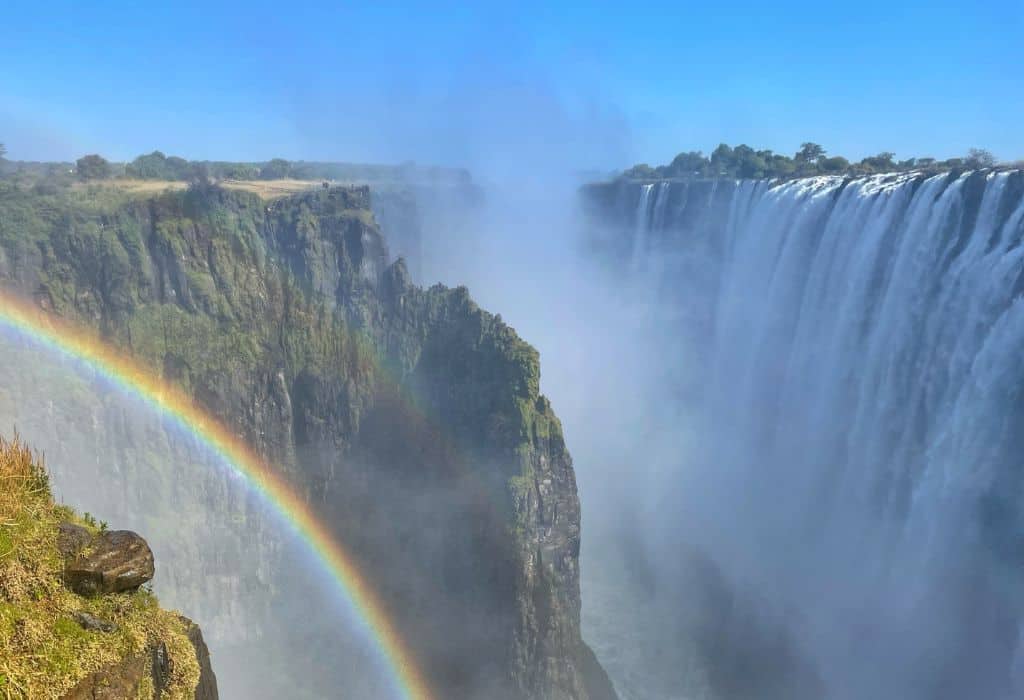
Visit Victoria Falls
About an hour away from Kasane, in Zambia and Zimbabwe, you will find Victoria Falls. You can either see Victoria Falls from the Zambian side or the Zimbabwean side. You could visit both in a day – crossing the ZimZam bridge.
If you are travelling from Botswana and want to visit both – make sure you get the KAZA visa! For more incredible things to see and do near Victoria Falls, take a look at this post .
Go for a Game of Golf
Fancy a game of golf? Then head the the Cresta Mowana Resort which has a 9-hole course on site.
Kazungula Bridge Tour
Visit the Kazungula Bridge and the world’s only Quadripoint, where 4 countries meet – Botswana, Namibia, Zambia, and Zimbabwe.
Visit Impalila Island
Take a day trip across to Impalila Island in Namibia. Visitors from Botswana are allowed to day trip here without a visa. As well as a boat tour, the trip usually includes a cultural visit to a local village.
You can also take canoeing trips down the Chobe River in a traditional mokoro. This is a great way to see the animals, although it isn’t for the faint of heart! It can be a bit freaky being that close to the animals without a big boat and an engine to whizz you away quickly! But the guides know what they’re doing!
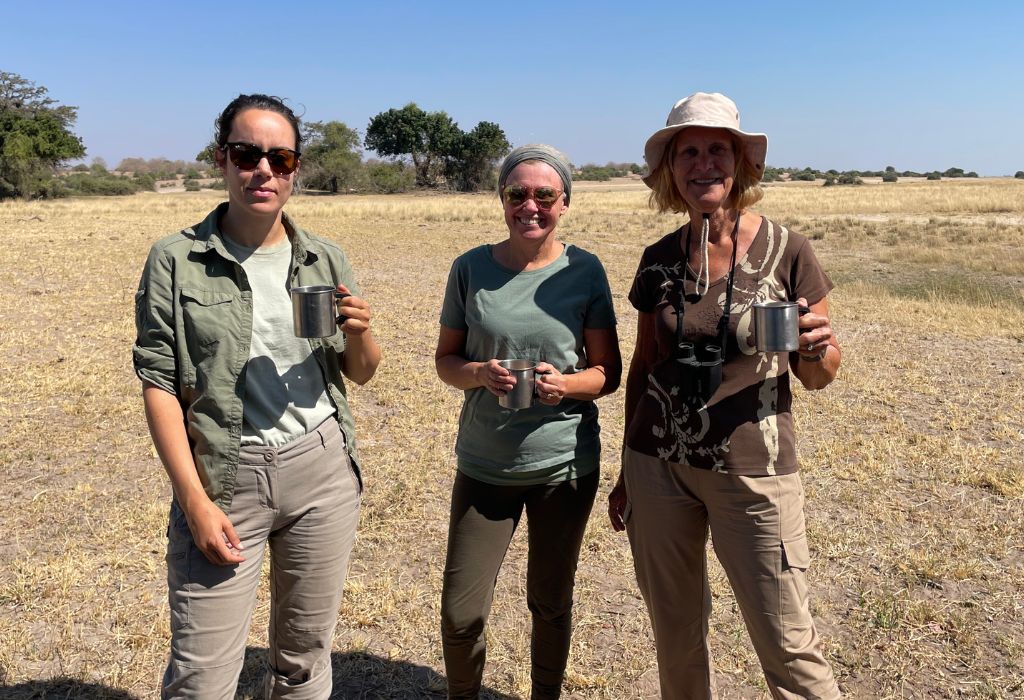
What to Wear on Safari in Chobe
For safari, I always say the key is practical, comfortable, durable and easily layered clothing – things that you don’t mind getting dusty, won’t rip easily and that are easy to wash (leave the dry-clean only clothes at home). Depending on the time of year that you go, it can be freezing in the morning and evenings (see above) but warm during the day.
You don’t have to buy a whole new wardrobe for safari. When you’re on a driving safari, you can realistically wear any colour, as the animals won’t really see you specifically – I’ve worn my bright pick puffer jacket on many safaris and never scared off an animal because of it.
However… Botswana does suit the more neutral colours and they are generally more practical anyway. And if you go on any walking safaris on your trip, they will tell you to wear more greens, khaki, brown etc and avoid bright pink, red, yellow, blue, black and white! Black and blue are said to attract tsetse flies.
And let’s face it, those cute safari outfits look great in your pics!
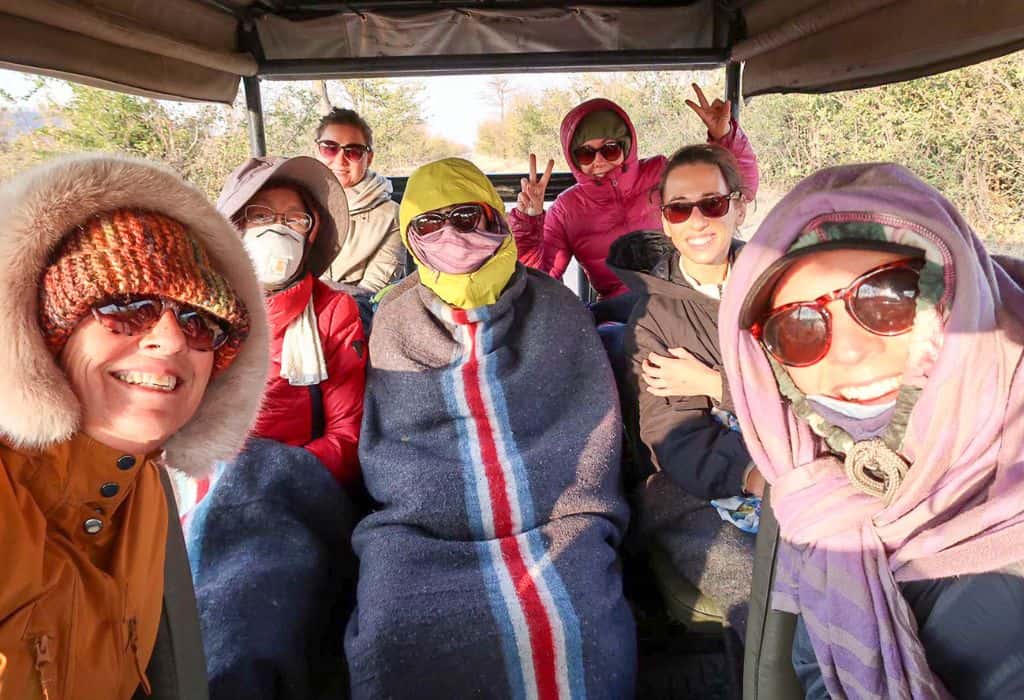
During the day, I usually wear a t-shirt, long sleeved lightweight shirt for sun protection, comfy pants or shorts, Birkenstocks, a wide-brimmed hat and sunglasses. I’ll add socks, a fleece, puffer jacket, beanie, gloves if it’s cold.
During the evenings, I generally wear the same, but switch into closed toed shoes! I would avoid jumpsuits (in case you need to pee in the bush), as stripping off isn’t fun or easy!
For more info on what else to bring, check out my full guide on What to Wear on Safari & Packing List .
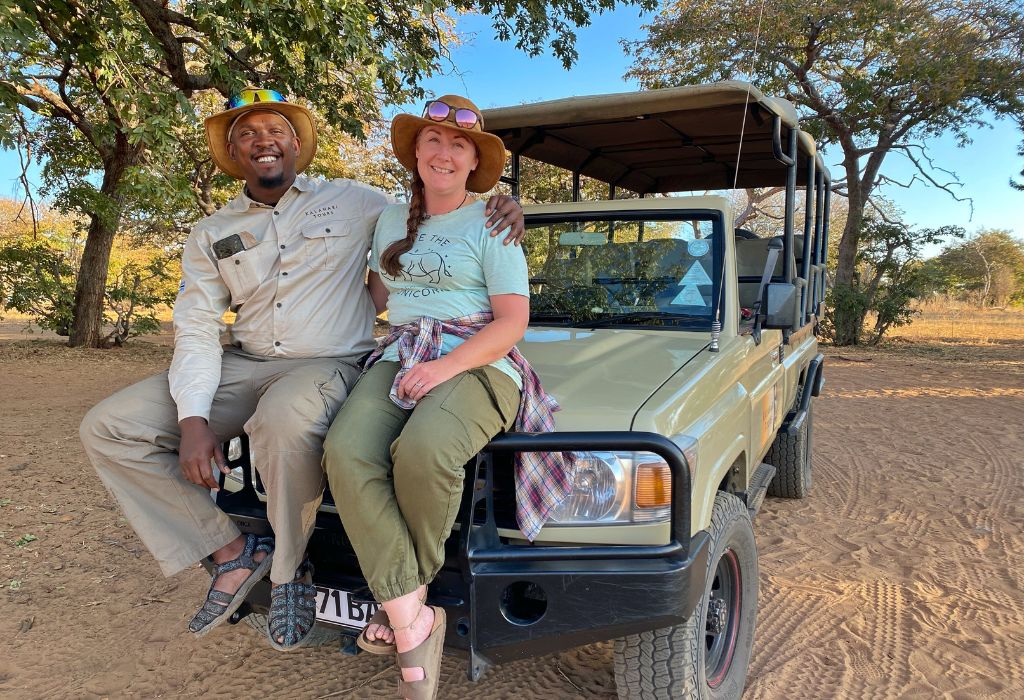
Health & Safety in Chobe National Park
Botswana is one of the safest countries in Africa , and Chobe is generally very safe in terms of crime but you do need to be careful of the wild animals! Remember Chobe is very wild and full of dangerous animals – elephants, hippos, lions, leopards, crocs…
When on an organised safari, listen to the advice and safety instructions given to you by your guides. If self-driving, familiarise yourself with the park rules.
Do not hang out (or hang anything out) of the safari cars or get out of your car to get a better look at the animals. I have seen self-drivers do this numerous times.
They usually get back in quickly when the guides start screaming at them. Only get out at designated camps and picnic sites and check around before you do so. Remember that the animals can move quickly!
Don’t go wandering about in the bush on your own, especially at night and do not approach any animals and definitely do not feed them. Be careful when storing food – everything must be stored away correctly – not in your tent, unless you want some unwanted visitors.
To avoid bites from mosquitos (malaria is prevalent in Chobe and Botswana) and tsetse flies (whilst sleeping sickness, wear a strong bug spray and cover up, especially as dusk and dawn when the mosquitos are more active. And avoid black and blue clothing, as this is said to attract tsetse flies.
Drink lots of water and cover up from the sun to avoid heatstroke. Do not drink the tap water directly, instead drink bottled, treated, boiled or filtered water.

How Much Does it Cost to Go on Safari in Chobe National Park?
The park fees for Chobe are pretty reasonable, so the cost of a safari in Chobe National Park really depends on how you travel and what type of accommodation you choose.
Prices for a 3-hour guided safari in the Riverfront area start at around $50 (inc. park fees) and full day from around $100 (inc. park fees, but not including tips/accommodation/food etc), to thousands and thousands of dollars for a high-end multi-day trip.
If you are taking a package tour, almost everything will be included, aside from things like tips, any optional activities and extras like alcohol/drinks. Most high-end lodges include everything.
The daily park fees for Chobe National Park are:
There are also vehicle fees to pay too, so just be aware of those:
Opening Times
- April to September: The gates open at 6am and close at 6.30pm.
- October to March: The gates open at 5.30am and close at 7pm.
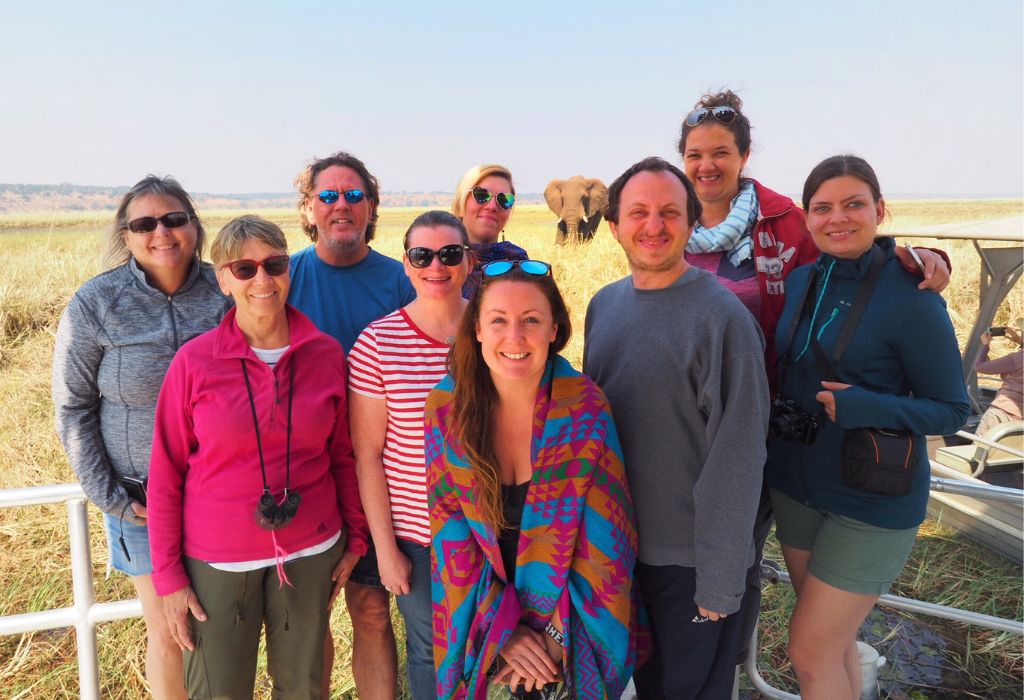
Tipping in Chobe National Park
The general tip guidelines for a camping safari in Chobe are $10 a day per person, per day for guides and $5 per person, per day for other staff. You can either tip in USD or BWP.
So if you’re doing a group safari, for 3 days you personally would put in $30 for the guide, $15 for the cook, $15 for the camp assistants/managers etc. You can of course, tip more or less, depending on the level of service you got.
It may seem like a lot – considering how much you’re probably paying for your safari anyway, but unfortunately Botswana is just an expensive country and tipping does ensure that you get good service.
If you’re staying at a luxury lodge, you will be expected to tip more. Your lodge or safari company should be able to offer tip suggestions.
Other Botswana posts you might enjoy…
- Where to Stay in Chobe National Park, Botswana
- How to Visit Botswana on a Budget: Everything You Need to Know
21 Amazing Things to Do in Botswana
- The Best Botswana Safaris – 3 Incredible Itineraries
- The Best Places in Africa to See Elephants
- Visiting the Okavango Delta on a Budget – Everything You Need to Know
- Botswana & Victoria Falls Group Trip
- The Safest Places in Africa
I hope this blog post helps you plan a great safari in Chobe National Park! I’d love to hear about your experiences in the comments below!
Pin This Post For Later
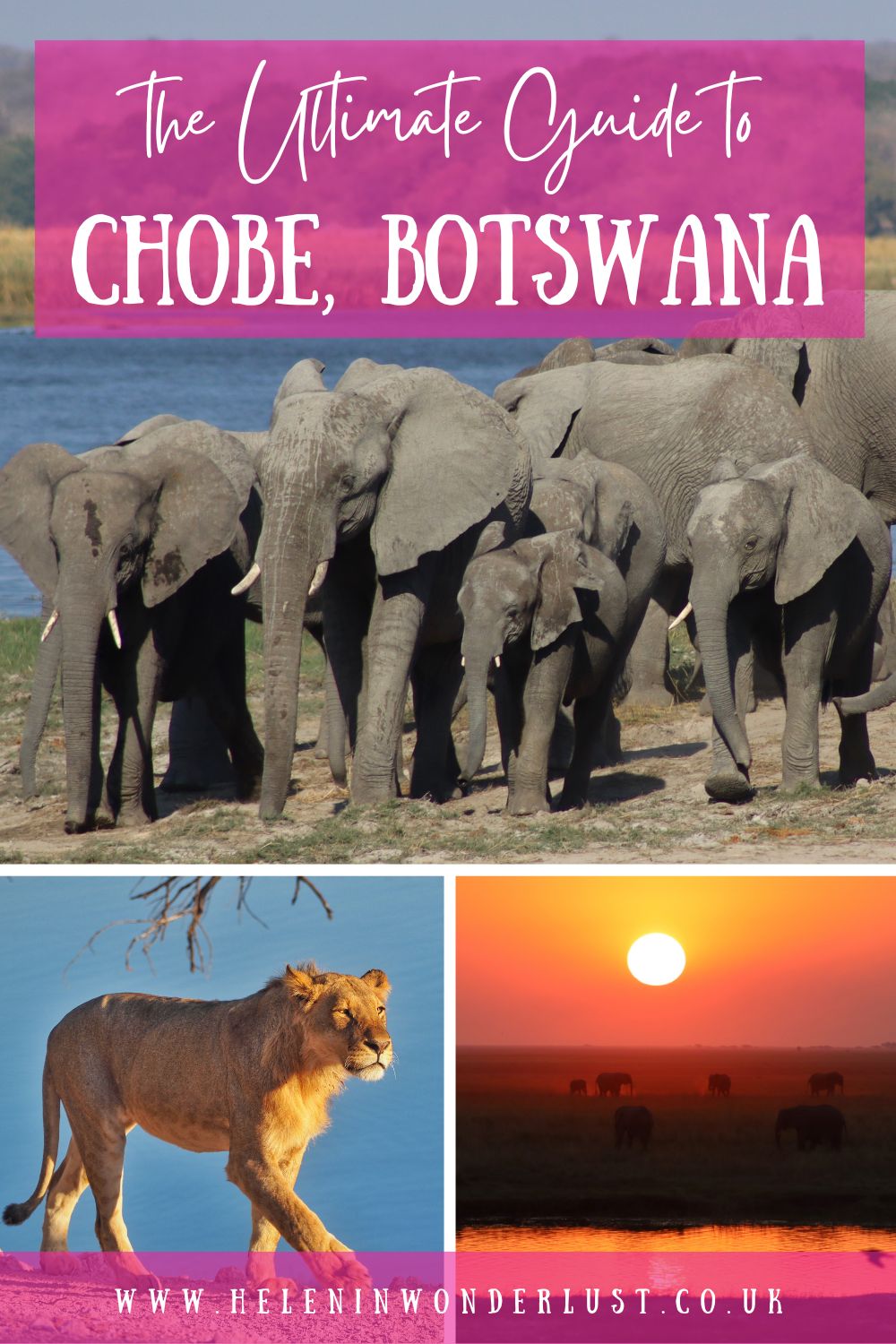
I love to travel all over the world, but it's Africa that holds a special place in my heart. My mission is to help people travel Africa in an authentic, safe, fun, adventurous and ethical way.
Similar Posts
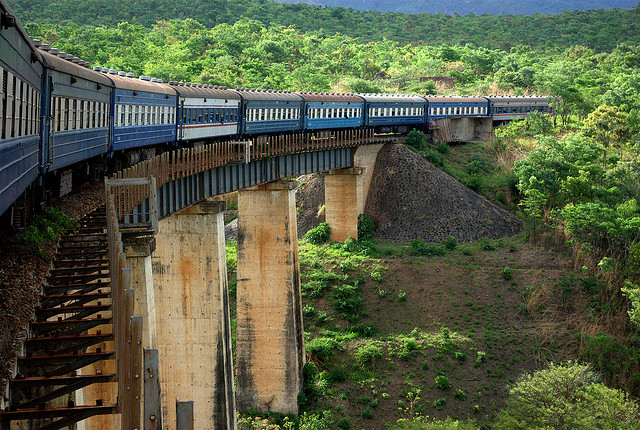
The Tazara Train – Travelling Overland from Zambia to Tanzania
I’m a big fan of train travel and the Tazara train between Zambia and Tanzania is one of my favourite…
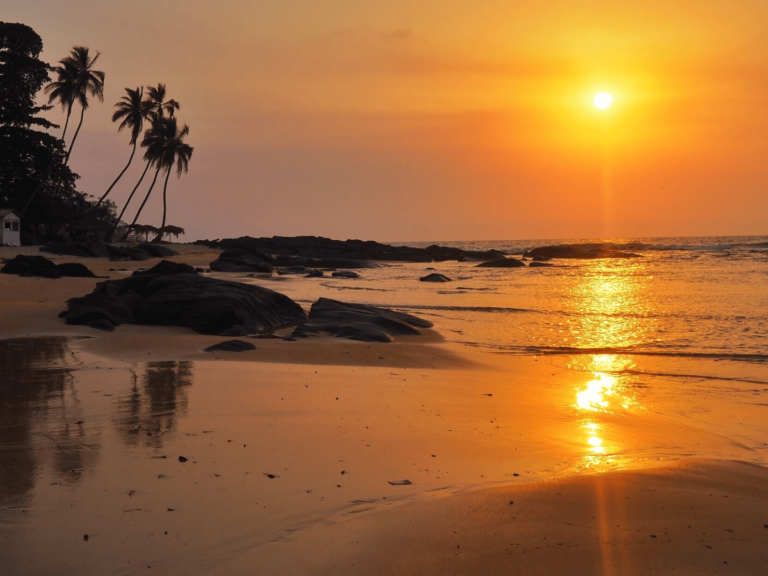
15 Things You Should Know Before Visiting Sierra Leone
Travelling in Sierra Leone (or as the locals call it, ‘Salone’) was an amazing experience. But what I found when…
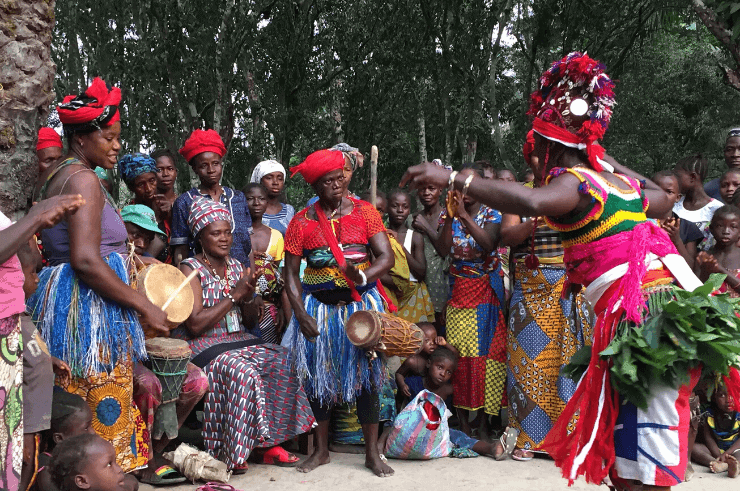
The Best Things To Do in Sierra Leone & Itinerary
Sierra Leone had been a bucket list destination of mine for years before I finally got to visit in 2019…
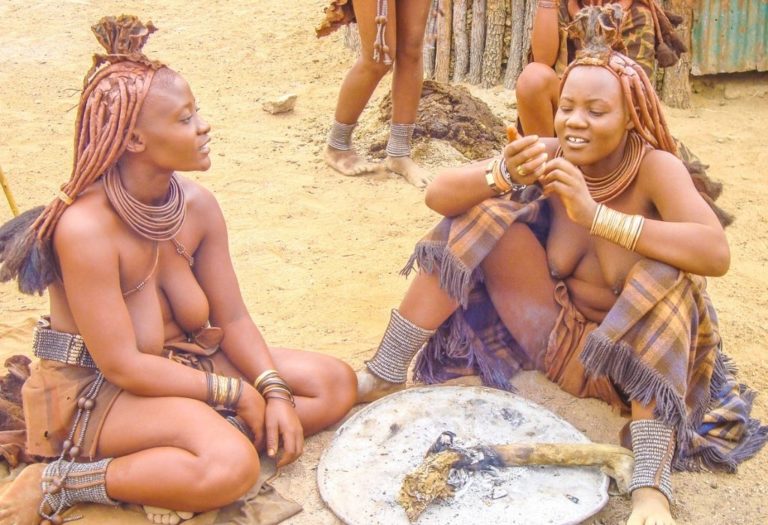
A Visit to the Himba Tribe – What I Wish I’d Known
I visited the Himba tribe for the first time on my first trip to Namibia in 2009. The Himba are…

17 Travel Lessons for Everyday Happiness
This time of year always leaves me feeling a little bit reflective and maybe a little bit melancholy, even though…
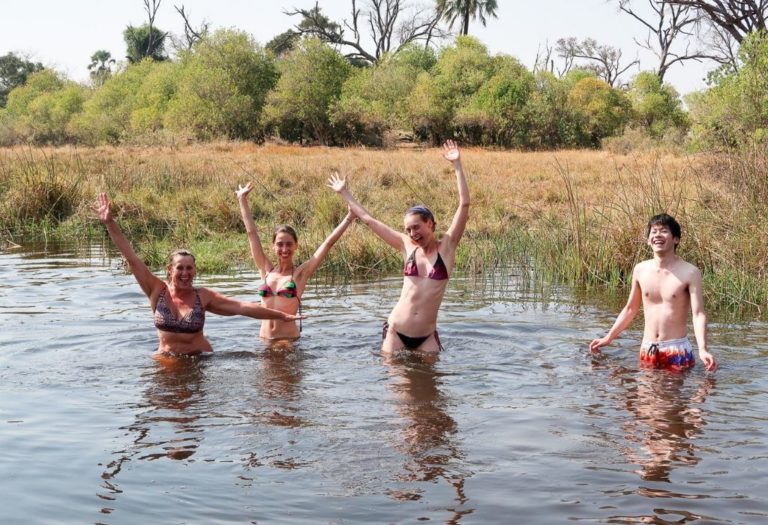
Botswana is one of my favourite countries in Africa for safari especially, but there’s so much more to Botswana than…
With Kalahari Tours It seems the a one-day water and land safari with a light breakfast, lunch, and transportation from Livingstone lodges is US$180. If you drive yourself to the border, it is about $130.
But a 3-hour private boat tour and a 3-hour private game tour (with Kalahari) is about $60 per person (including entrance fees). We could drive ourselves to the border, get a taxi to the Kalahari Tour office, do the boat tour, buy our own lunch, and then do the game drive. We would save about $100 per person.
Am I missing something?
As far as I am aware, Kalahari Tours don’t do short game drives/boat trips like that into the park – they do the packages, and the full day, with lunch included is the minimum (and their lunch is usually amazing). So, yes, with the return transfers, you’re paying around an extra $50 pp – $25 pp each way. I’m sure they would reduce if only going 1 way.
However, some of the hotels based in Kasane (like Thebe River Safaris) do the game drives/boat trips that you can book separately.
Transfers from Livingstone aren’t very cheap these days, $30 pp each way seems to be about the going rate. If you can get cheaper – awesome. But if you get a taxi, you would usually need them to wait if the plan was to go back to Livingstone, so that can bump up the cost.
Then you’d need pick up on the other side – not sure how much it would cost going from Kazungula into Kasane. I don’t think (but don’t quote me) that there were any taxis waiting at the border last time I went as very few people rock up to the border without transport already planned. I could be wrong though.
But it’s probably easiest to arrange a pick up with the safari company you choose. Not sure how much that would cost, you’d have to ask them. But I can’t imagine that you’d get transport from Livingstone (in one car) and then transport from Kazungula to Kasane in another car (return) cheaper than $50 pp. Unless you used public transport – but then you’d probably miss your safari! 🙂
If you have your own car, it will be cheaper, obviously. If you plan to leave your car at the border – I would just check if you are able to do so. There is a car park, but I’m not sure how long you can park there for.
And if you plan to cross the Kazungula Bridge with a car, then I presume there will be toll fees and a TIP to pay for (probably not worth the hassle unless you plan to stay in Botswana for a while).
Hello Helen
I really enjoyed your post on Chobe National Park in April 2024. You covered the whole of Chobe.
We just went on a three day camping safari to Chobe following on from a Rockjumper birding tour of Namibia and Botswana finishing in Victoria Falls. I had been to Chobe previously in 1975 with my South African girlfriend. It had and hadn’t changed!
I have just written an article on this visit to Chobe and I included a link to your article as a comprehensive addition to exploring Chobe in the further information section. My article is at breadtagsagas: https://www.breadtagsagas.com/chobe-national-park-camping-safari/ I hope you enjoy it.
Let me know if you find any mistakes.
All the best Tony
Leave a Reply Cancel reply
Your email address will not be published. Required fields are marked *
Privacy Overview
TOP DESTINATIONS
- Kruger Park
- Okavango Delta
- Serengeti National Park
- Victoria Falls
TOP COUNTRIES
- South Africa
TRAVEL DEALS
View All Travel Deals
SOUTHERN AFRICA
East africa, indian ocean islands, top experiences.
- Beach Holidays
- Family Safaris
- Honeymoon Safaris
- Desert Safaris
- Luxury Rail Safaris
- Multi-Generational Safaris
- Positive Impact Safaris
Photographic Safaris
- Walking Safaris
WILDLIFE SAFARI
Big Five Safaris
Birding Safaris
- Gorilla Trekking Safaris
- Migration Safaris
Mobile Camping Safaris
- Horseback Safaris
FEATURED EXPERIENCES
Comfort levels, property types.
- Tented Camps
- Boutique Hotels
Featured Safari Collections
- Natural Selection
- Desert & Delta
- Extraordinary
- Elewana Collection
- Ker & Downey Botswana
GET TO KNOW US
- Meet The Team
- Pricing Explained
- Traveller Reviews
- Traveller Stories
- Why Book With Us?
- HerdTracker
- Safari Cost Calculator
- South Africa In 360
- Trusted Safari Partners
- Newsletter Sign Up
What are you looking for?
- Multi-generational Safaris
- Positive Impact
- Meet the team
- Why book with us?
- Herdtracker
- Safari Cost Estimator
Hello traveller!
It's in Cape Town now.
We're sorry. Our safari planners aren't available now. Our office hours are 08:00 - 19:00 (GMT+2).
Call us to speak to an experienced safari planner.
Alternatively, we recommend...
Schedule a phone or Zoom call with one of our safari planners
Complete our travel enquiry form to connect with a safari planner
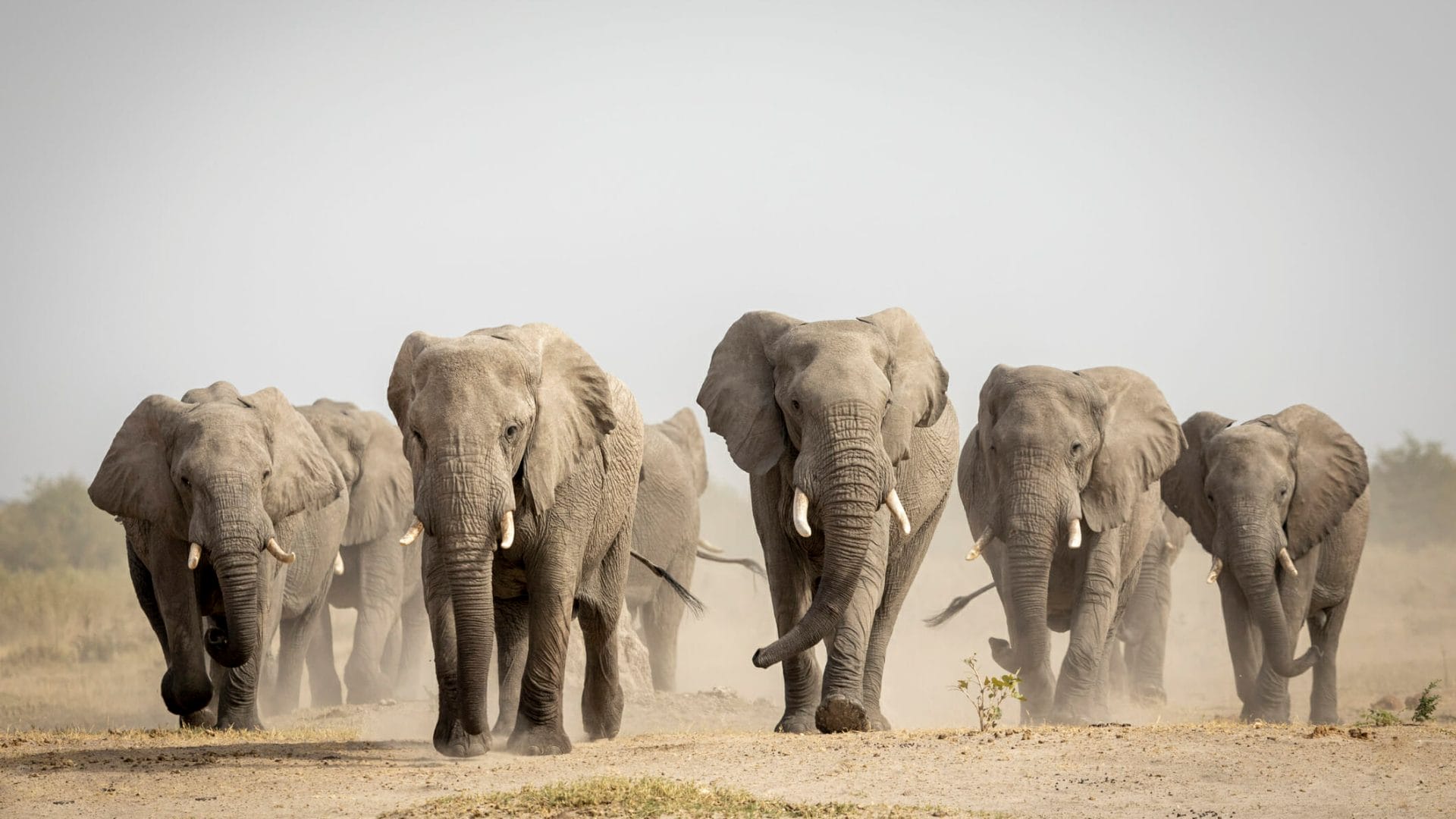
- Chobe National Park Safari
The ultimate guide to your next Chobe National Park Safari
- Chobe National Park Gallery
- Where to go
- Experiences
- Travel Advice
Get to Know Chobe National Park

By Devryn Panaino
Safari Travel Planner
Date Published: 2 January 2014
Experience the thrill of Africa’s wild heart in Chobe National Park, a sanctuary where nature’s drama unfolds daily. Picture yourself surrounded by the largest herds of elephants in Africa, witnessing their majestic presence as they meander along the lush banks of the Chobe River.
Journey through diverse landscapes, from verdant floodplains to the legendary Savuti Marsh, where fierce predators and their prey engage in timeless battles.
Chobe’s stunning beauty and rich biodiversity make it a premier safari destination. Whether you’re seeking thrilling wildlife encounters or serene moments in nature, Chobe offers an unforgettable adventure. Join us and craft timeless memories in this captivating wilderness.
Chobe National Park Video
Chobe national park.
How it Works
View our recommended safaris for inspiration and get ready to plan your dream safari
Contact us or fill out an enquiry form and one of our travel experts will help you tailor make your perfect safari
Enjoy an authentic African experience.
Why Visit Chobe National Park?
Chobe National Park captivates the heart and soul of every traveller. Here’s why you should set off on an unforgettable journey to this incredible destination:
Wildlife Encounters
- Elephant Kingdom: Witness the awe-inspiring sight of Africa’s largest elephant population.
- Diverse Wildlife: Beyond elephants, Chobe is home to lions, leopards, buffaloes, and over 450 bird species.
Scenic Beauty
- Stunning Landscapes: From the serene Chobe River to the dramatic Savuti Marsh, the park’s landscapes are breathtaking and varied.
- World-Class National Parks: Explore one of Africa’s most famous parks, renowned for its rich wildlife and picturesque scenery.
Cultural Richness
- Local Communities: Discover the culture and traditions of local communities living near the park.
- Historical Sites: Explore ancient rock paintings and historical landmarks within the park.
Luxury and Comfort
- Exclusive Lodges and Camps: Stay in world-class luxury safari lodges and camps that offer exceptional comfort and service.
- Gourmet Cuisine: Indulge in exquisite dishes and fine wines while enjoying stunning views of the African wilderness.
Adventure and Activities
- Outdoor Adventures: Engage in thrilling activities like game drives, boat safaris, and walking safaris.
- Water Activities: Enjoy boat cruises along the Chobe River, fishing, and more.
Accessibility and Infrastructure
- Easy Access: Chobe boasts excellent infrastructure with a range of flight options, making travel convenient and comfortable.
- Tourism Services: Benefit from well-developed tourism services, ensuring a seamless and enjoyable travel experience.
Responsible Tourism
- Conservation Efforts: Your visit supports vital conservation and community initiatives, contributing to the protection of wildlife and local communities.
Photography Opportunities
- Capture Stunning Moments: With its diverse landscapes and abundant wildlife, Chobe offers some of the best photography opportunities in the world.
Set off on a journey to Chobe National Park and uncover a destination brimming with adventure, beauty, and unforgettable memories.
Where to go in Chobe
Chobe National Park offers a variety of stunning landscapes and unique safari experiences. Each area provides its own distinct attractions and activities, making Chobe a versatile and captivating destination for all types of adventures.
- Chobe Riverside
- Nogatsaa and the Southern Private Concessions
- Where to Go on Safari in Chobe National Park
As a well-traveled Frommer’s Guide writer says, “Chobe is all about the river”. She says this is where the best, most varied sightings are, and yes, it’s home to the densest concentrations of game, perfect for safari. This is especially true in winter when the sapphire blue Chobe offers a ribbon of opportunity for game to come to drink deeply and cool off, making visibility better than ever.
Forest and floodplains line the Chobe River , and besides some semi-permanent pans further south in the park and the Linyanti River, there’s not much other water to be had in the dry season. This is where the main action takes place. It’s a magnet for elephants – sometimes, they dot the floodplain for as far as the eye can see.
Lucky guests cruising along the river on a houseboat safari can see lions on the banks and hippos slumber and wallow in the shallows. Every so often, a croc will be seen basking in the sun like all reptiles love to do. Chobe is also virtually the only place in Botswana to find Puku antelope and the Chobe bushbuck.

The riverside is also close to the most accessible point of entry to the park, the town of Kasane , and is popular with families, couples, and solo travelers alike.
Lodges and accommodation are scattered along the Chobe River . Most establishments are not within the boundaries of the park itself, and a couple are even on the other side of the river, in neighboring Namibia .
There is also the option of a tented or mobile safari. Operators set up camp – some a lot more luxurious than you might expect – in a private space within the park, which means no rush for the gate on the early morning game drive.
The Chobe River is also where the distinctive houseboats moor and river safaris take place in slipper-shaped craft. This area (also sometimes called Serondela) is a megatick for birders year-round. Author of Birds of Botswana, Peter Hancock, recommends the Kasane Rapids to keen birders for a birding safari .
“This is the best place in Botswana to see African Finfoot, Half-collared Kingfisher, and Rock Pratincole [which nest here]. It is also a good place to see Pel’s Fishing Owl. In addition, there is a large, active heronry at the rapids where significant numbers of Yellow-billed Storks nest annually.”
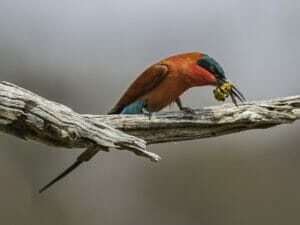
Highlights of the Chobe Riverside
A safari boat cruise.
Few parks in Africa can offer this Chobe staple. Languid safaris, safely afloat on the blue river, get close to numerous herds and birds. A languid sunset cruise in one of the nimble riverboats that ply the watercourse is an excellent contrast to rocking about the plains in a vehicle.
Elephants by the hundred can be seen during their social drinks hour, hosing themselves down, applying soothing mud to the skin, and interacting in endlessly fascinating ways. Crocs, buffalo, hippos, and water birds such as spoonbills and kingfishers add to the show.
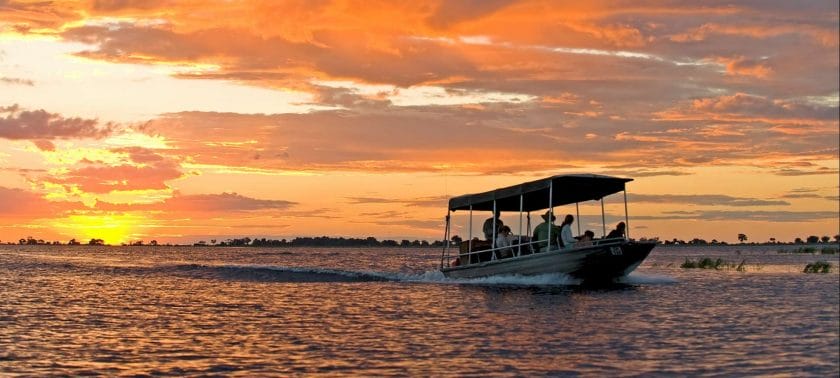
Tiger fishing
The Chobe is home to over 90 fish species, but the king of them all is the tigerfish, the fastest freshwater fish in Africa. This vigorous striped predator has an average weight of 10 to 12kg/26lbs (the record is a 70kg/154lbs monster) and likes to fight back. The Chobe is also home to gigantic catfish, bream, and Zambezi yellow fish. Most lodges practice ‘catch and release’ fishing.
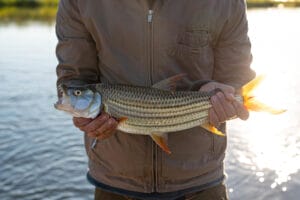
Photographic Safari
Photographic safaris are another Chobe Riverside specialty, featuring specially kitted-out safari boats for photographers. Photo boats come with swivel seats and arms upon which experts can mount their gear; some of the better outfits even provide the camera and lenses. Guides know both river and photo opportunities intimately and will share their technical knowledge, so snappers have the freedom to concentrate on the shots.
Dedicated photo trips that combine time on the plains (in a vehicle with bean bag mounts) can also be booked.
All things great and small besides umpteen elephants, spotted hyena, impala, bushbuck, sable, wildebeest, kudu, and giraffe can be seen. In 2017, Travel Africa magazine noted that 40 lions in four prides hunted along the Chobe Riverside.
Bird specials (some of which are summer migrants) include osprey, African skimmers, and that leopard of the bird world, Pel’s fishing owl, making a birding safari fun and eventful .
Surprises may include water lilies in the river, the size of the ants, bushbabies in the trees, and the eerie squeaks and whistles of Peter’s Epauletted Fruit Bat. Also remarkable are the Great White pelicans that “commute” almost daily from the Chobe River 300km (186mi) south to feed fish to their chicks on Sua Pan.
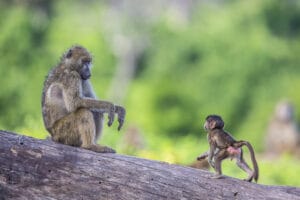
A houseboat trip is one of the best ways to experience the Chobe. Happiness is floating about at night, the deck washed with starlight, hippos honking, and hyenas whooping in the distance.
River and game safaris can be arranged from these floating lodgings. These are generally all-inclusive experiences, popular with families and honeymooners.
Meals are of good quality, although check whether Halaal and Kosher requirements can be met. The itineraries are relaxed and tailor-made. As some of the craft operate from Namibian waters, there can be some extra paperwork, but your tour operator will steer you in the right direction.
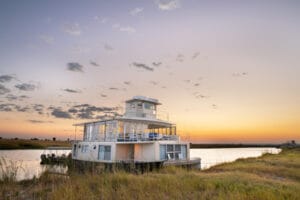
Good to Know about the Chobe Riverside
The kick-off point for most Chobe adventures is the growing town of Kasane, where warthogs cross the main street and residents have found elephants munching through their flowerbeds.
Chobe is not fenced; all the better to allow natural migration routes and patterns to play out. Kasane is not the frontier town it once was; the gravel airstrip is now an international airport, and you can get just about anything you might need. Most guests will fly here from Johannesburg, South Africa, or via Botswana’s capital city Gaborone, and it is perfectly possible to drive the 1,200km (746mi) in an ordinary car. However, not everyone would be up for such a long trip.
Just past Kasane, the Chobe River spills into the Zambezi , at the confluence of four countries: Botswana , Namibia , Zimbabwe , and Zambia . Its waters travel all the way from its original source in Angola, where it is called the Cuando River; it later becomes the Linyanti and then, at Ngoma, the Chobe.
At this point, the Chobe is a convoluted, wide channel dotted with islands and swampy areas. A ferry crosses the Zambezi at Kazungula. Opposite Kasane is Impalila Island (Namibian territory), where David Livingstone once camped before pressing on to Victoria Falls.
Guests can walk through local villages to see an ancient baobab tree, alive when the Romans were still around. While eastern Chobe Riverside’s proximity to town may not be a plus for everyone, it does add an extra layer of possibilities to a trip, which is good for families that need to break up the game-watching regime.
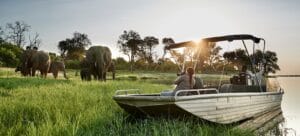
Practical Advice for the Chobe Riverside
- Many lodges in Chobe – the more luxurious offer private plunge pools and voluminous rooms – charge all-inclusive rates, as do mobile and guided safaris. This includes all meals and standard drinks, park fees, and a couple of daily activities, such as guided game drives or cruises. This makes the total less alarming than it may seem at first.
- There is only one permanent lodge in the park itself at Chobe Riverside (and some mobile outfits), so most game drive vehicles in this area travel to Sedudu Gate for access – and must leave by dark. Being in the park is advantageous as one can linger longer and be first on the scene at dawn.
- Different lodges cater to varying needs for families, couples seeking romance, and solo travelers. Note that not all accept children, and tots may not be allowed on game drives. Ask your Discover Africa expert about child-friendly accommodations.
- The area closest to Kasane gets super busy in the high season. To try and manage high season congestion at opening time, officials at Sedudu Gate allow tour operators entry for the first hour, followed by day visitors. Guidebook writer and journalist Gill Staden says she “always stays at the western end of the Riverside. That end is quiet.” Gate times from 1 April to 30 September are 06h00 to 18h30; from 1 October to 31 March, they open at 05h30 and close at 19h00.
- The park’s very sandy and slippery clay roads require a 4×4 vehicle. Petrol is only available at Kasane – or Maun. Take a good map, ask about road conditions, and factor in much higher fuel consumption in deep sand, says guidebook author and occasional guide Mike Main.
- More adventurous overland, mobile safari participants and some self-drivers will camp. There is only one public campsite in this area, unfenced Ihaha (GPS: S 17 50. 19; E 24 52. 40). It has ten sites (avoid the tempting #2 as baboons like to sleep in that shady tree) and simple ablutions with hot showers and flushing toilets. These sites get booked up fast, especially during local school holidays. The DWNP has outsourced the campsite to Kwalate Safaris to run. Contact them at +267 686-1448 or [email protected] .
- The old picnic site on the Chobe, known as Serondela, has since closed, but it is Botswana-based author Mike Main’s favorite spot in the park. “Not only is it very beautiful,” he says, “but it was here, in the 1930s, that the Susman brothers, foresters who had concessions in Western Zambia, cut timber and hauled it to the crest of the escarpment overlooking the Chobe River. It was loaded onto carts that ran on a wooden railway line down the riverbank.” Main’s African Adventurer’s Guide to Botswana is a valuable resource for self-drivers.
- Tiger fishing permits can be obtained from the Department of Wildlife & National Parks, Kasane, +267 625-0486.
- Kasane International Airport (+267 625-0133) is the main transit point for Chobe National Park.
There are two more areas within this 11,700km2 (4,517 square mile) wilderness to explore, both very distinctive and far more remote than the bustle of the Chobe Riverfront. These are Nogatsaa, and Linyanti.
Nogatsaa, an off-the-beaten-path sweeping expanse of grasslands with mopane and deciduous woodlands, is only 80km (50mi) south of Kasane but feels like another world. There is just one lodge in Nogatsaa (at Kwikamba Pan , opened in 2017), and the tricky deep sand and notorious ‘black cotton’ soil in the area tend to keep all but the most tenacious of self-drive vehicles at bay. The clay-bottomed pans here are magnets for game and provide water well into the dry season. Herds of elephant, buffalo, and antelope stop by, making viewing excellent on a Chobe safari. Exciting species include oryx (gemsbok), eland, roan, and the delicately limbed oribi.
Boreholes now top up key drinking holes when it’s dry, so the area is never deserted, although it’s not the best destination for those desperate to tick off key species within 24 hours. Nogatsaa is a place for repeat safari-goers who will relish the pure wilderness experience, couples wanting a remote and beautiful bolthole, or adventurous families and groups keen to explore on a mobile safari or private guided tour.
The game is less used to traffic and can be skittish. A bit further south of Nogatsaa is Tchinga Pan, and there are hides at various water sources in the area, too, perfect for those who like to stretch and picnic between game-driving stints. The oft-dry Ngwezumba River runs to the west of the Nogatsaa area and has some beautiful trees along its length. The road further south to Zweizwe Pan and Goha Gate runs alongside it.
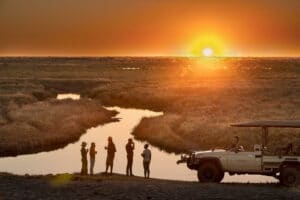
This beautiful part of Chobe, located on the far western boundary, runs along the Linyanti River for just 7km (4mi) or so. Across the river is Namibia. Further south, the wilderness extends to Moremi and the Delta. It’s blessed with lagoons, wetlands, and floodplains, dramatically different terrain to Savuti.
Lush riparian woodlands dot the landscape and contain the birds that enjoy this habitat, which is perfect for a birding safari. There is a public campsite and several permanent tented safari camps and lodges, some dripping with style and comfort. This is especially true for the private concessions that extend the wilderness beyond Chobe’s borders: the Linyanti Game Reserve and Selinda (where you can go exploring by mokoro, the canoes of the Okavango).
Many big names in the African safari world have signature camps in this slice of wilderness, where roads are few and far between, and expert guides seek out excellent game encounters. Guest numbers in the concessions are limited, and lodges offer walks and, in some cases, horse-riding safaris.
Linyanti is a perfect place for adventure – as well as romance. Going private guarantees being the only vehicle at a sighting during busier times of the year (like school holidays and high season).
The permanent Linyanti River that gives the region its name becomes the Chobe River further north. This region is the stomping ground of many elephants, hippos, and crocs, especially in the dry season.
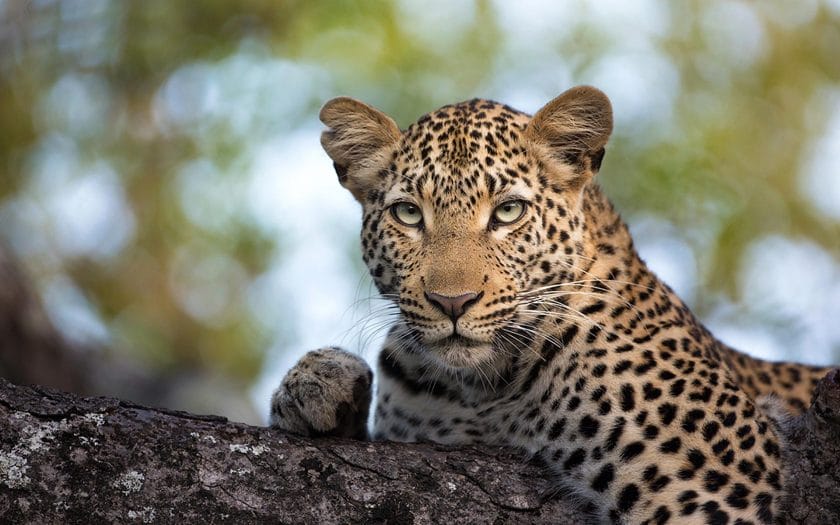
For the average visitor, driving all the way across Chobe National Park – or from Maun or Namibia – will be “brutal” as one traveler on Tripadvisor puts it.
Aside from adventurers who like nothing better than taking a vehicle where few have gone before, this is the time to opt for a flight. Then, if the budget allows, check in at a fine lodge, where the excellent staff will ensure you don’t have to lift a finger, never mind decipher a map or tackle the marshy areas.
Flying in is one of the great Chobe experiences in its own right, as charter flights zoom across the great expanses of the park, puffy clouds throwing shadows on pebble-sized elephants.
Highlights of Nogatsaa and the Southern Private Concessions
The Linyanti area is one of the best places to encounter these characteristic animals, which are nowhere common but always sought-after. Even fenced reserves can’t keep wild dogs in – they are remarkable nomads, often covering huge areas. But they have been known to den in the region, which means that for a time, they stay put.
Botswana has a third of the remaining population, and northern Botswana is their favorite. Kasane-based conservation organization Caracal’s Dr. Kathleen Alexander says domestic dog diseases and road accidents threaten the painted dogs, but Chobe offers a haven from both.
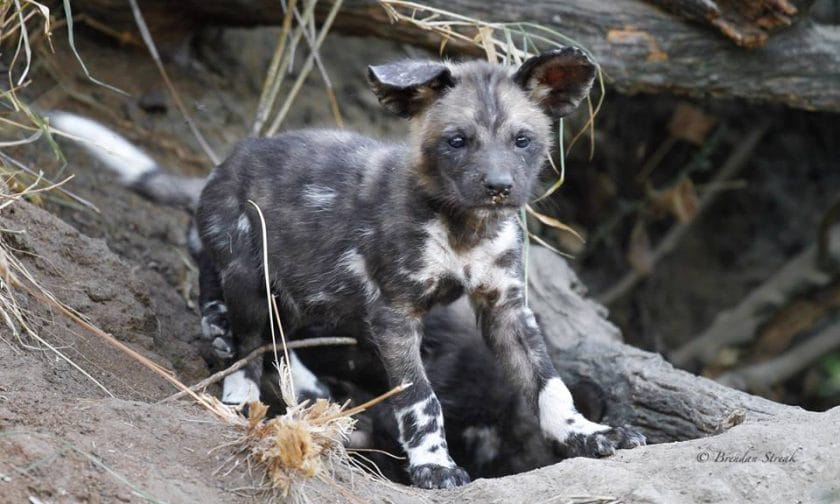
The Selinda Spillway
Walk, ride, paddle- the Selinda Spillway is another erratic watercourse, but when it contains water, paddling in Mokoro is possible and a silent (if somewhat strenuous) way to experience the bush. The best times for this activity are June to August when floodwaters from Angola peak.
The concession areas of Linyanti and Selinda also offer the chance to do bush walking safaris, not available to most lodges in the Chobe National Park itself. Coming upon a creature as small as a warthog – never mind an elephant – on foot can be an incredible experience.
Lastly, the occasional operator offers horseback safaris for competent riders, a surreal chance to admire game at close range.
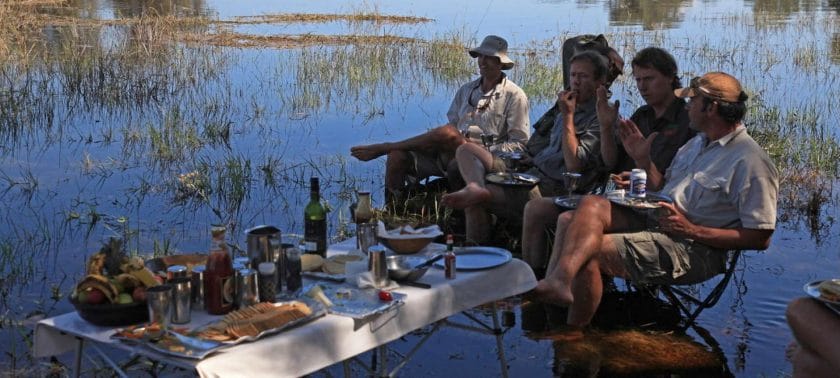
Nogatsaa’s birds
Nogatsaa doesn’t have the big rivers that attract some flashier bird species, but Peter Hancock, the co-author of Birds of Botswana, notes that the area has a host of specials.
Look out for the Western Banded Snake Eagle, Orange-winged Pytilia, Brown-backed Honeybird, Green-backed Honeybird, Racket-tailed Roller, Stierling’s Wren-Warbler, Purple-banded Sunbird, Northern Grey-headed Sparrow, African Emerald Cuckoo, Miombo Rock thrush, and Magpie Mannikin.
Other species you’ll encounter include the Bearded Scrub Robin, African Goshawk, Pennant-winged Nightjar, Three-banded Courser, Isabelline Wheatear, Dickinson’s Kestrel, Lizard Buzzard, Croaking Cisticola, Cuckoo-finch, Western Marsh Harrier and Woodland Pipit.
Taking a birding safari in Nogatsaa is something birders dream of.
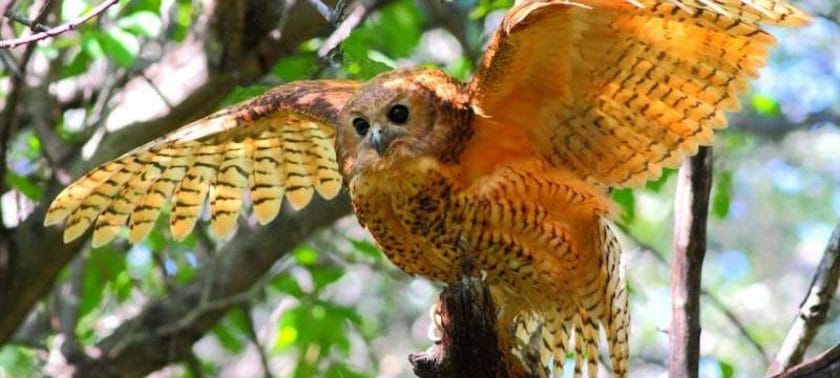
Starry Nights
Far from serious light pollution, the enormous African sky glitters like the Queen’s jewels. Dusk turns to dark abruptly on a Botswana safari, and the light show begins. Some of the best-known sights at the right time of the year are the flashy planets Venus and Mars and the arrangement of stars known as the Southern Cross.
The heavens also contain the “Big Five of the African Sky”, according to the Astronomical Society of Southern Africa: celestial deep-sky objects. These are the flickering Southern Pleaides (an open star cluster), Omega Centauri (a globular cluster), the eta Carinae Nebula (a bright nebula), the marvelously named Coal Sack (a dark nebula), and our own expansive galaxy, the Milky Way.
When the stars come out, so do the night creatures. Listen for the initially alarming yowls of bushbabies, the snickering spotted hyena, and of course, lion roars, which can be heard for up to 8km (5mi) away and, if close, reverberate in your chest. The fiery-necked nightjar is a quintessential sound of the bush. Moths take to the air, as do bats, including “megabats”: fruit bats with ethereal calls. Of course, canvas walls bring all these delights so much closer.
Mobile safaris and many lodges will offer dinner under the stars, while some stellar accommodations have “star beds”: safe places to sleep outdoors under a mere mosquito net and starlight.
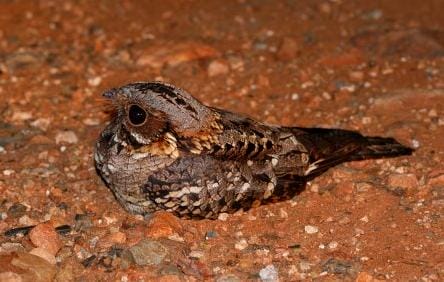
Nogatsaa is about 80km (50mi) south of Kasane, but the roads may not be accessible when wet.
Linyanti is on the far northwest boundary of the park.
The Linyanti private concessions border the Linyanti River (Namibia is over the water) and stretch further west and south.
Practical Advice for Nogatsaa and the Southern Private Concessions
- Charter flights limit luggage to just 20kg/44lbs (including hand luggage and cameras), and bags must be small, soft, and flexible to fit into the tiny craft: no shell suitcases! Bags should be no bigger than 62cm/24in long, 30cm/12in wide, and 25cm/10in high. Many lodges offer complimentary laundry services so you can pack light. Flying is generally essential when visiting the Linyanti and Selinda concessions. It will affect the budget: a flight from Kasane to Savuti, for example, can set you back around $325, excluding VAT.
- You can’t yet fly to Nogatsaa; the lodge in the area organizes land transfers.
- Private reserves can offer guided walks , off-roading to pursue game sightings, and horse-riding safaris .
- Linyanti is a good add-on to Okavango, Moremi or Chobe Riverside destinations.
- Self-driving in the Linyanti area is limited: there are not many game drive roads in the area to ramble around – another reason why choosing a lodge in this area makes sense.
- Baboons and vervet monkeys can and do raid supplies. As Gill Staden says, it’s vital to understand that “animals have a much better sense of smell than humans. Humans tend to think that if food is not visible, then it won’t be found. Wrong. Keep it in containers that do not allow the smell to get out.”
- There is currently no public campsite in the Nogatsaa area.
Nestled in a remote section of Chobe National Park, Savuti provides a dynamic game-viewing experience.
Savuti is a huge area sprawling across the western side of Chobe National Park . It comprises grassland and savanna habitats that attract astounding concentrations of wildlife. It’s renowned for its annual zebra migration and the associated predators that give chase, such as lions, hyenas, and cheetahs.
Savuti is also known for its elephant-hunting lions, a relatively rare phenomenon and one that might be attributed to the notoriously large size of prides there. Elephants congregate in impressive numbers in the dry season.
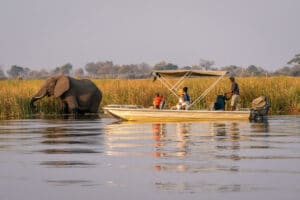
Chobe National Park offers a variety of stunning landscapes and unique safari experiences.
Each area provides its own distinct attractions and activities, making Chobe a versatile and captivating destination for all types of adventures.
1. Chobe Riverfront
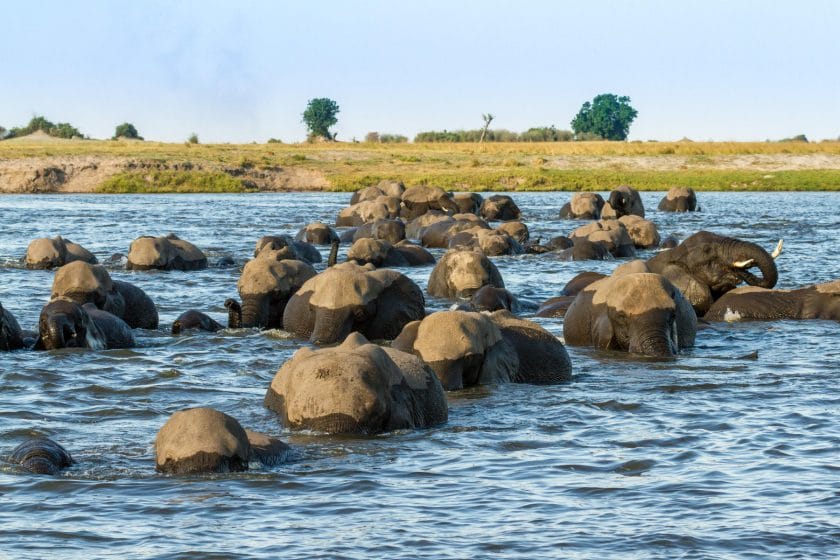
Overview: The Chobe Riverfront is famed for its massive herds of elephants and breathtaking river views. It is the most accessible part of the park and offers excellent wildlife viewing opportunities.
Highlights:
- River Safaris: Experience close encounters with hippos, crocodiles, and a variety of birds on a boat safari.
- Elephant Viewing: Witness large herds of elephants congregating along the riverbanks, especially during the dry season.
- Scenic Sunsets: Enjoy spectacular sunsets over the Chobe River, a perfect end to a day of adventure.
Activities:
- Game Drives
- Boat Cruises
- Bird Watching
- Photography
Best Time to Visit: The dry season from May to October is the best time to visit, as wildlife congregates around the river.
2. Savuti Marsh

Overview: Savuti Marsh is known for its dramatic landscapes and intense predator-prey interactions. The area is renowned for its population of lions and hyenas, as well as seasonal zebra migrations.
- Predator Sightings: Spot lions, leopards, and hyenas in action, especially during the dry season.
- Zebra Migration: Witness the annual zebra migration, one of nature’s great spectacles.
- Ancient Rock Paintings: Explore rock paintings created by the San people, adding a cultural dimension to your safari.
- Cultural Tours
Best Time to Visit: The dry season from May to October is ideal for wildlife viewing, while the wet season from November to April brings lush landscapes and migratory birds.
3. Linyanti Marsh

Overview: Linyanti Marsh is a remote and less-visited area, offering an exclusive and intimate safari experience. It is known for its diverse wildlife and beautiful, untouched landscapes.
- Exclusive Safaris: Enjoy a more private and secluded safari experience, away from the crowds.
- Diverse Wildlife: Encounter a variety of wildlife, including elephants, buffaloes, and wild dogs.
- Water-Based Activities: Take part in unique water-based activities like mokoro (traditional canoe) excursions.
- Night Drives
- Mokoro Excursions
Best Time to Visit: The dry season from June to October is the best time for wildlife viewing, while the wet season offers lush scenery and birdwatching opportunities.
4. Ngwe Zumba Plains

Overview: The Ngwe Zumba Plains are located to the northwest of the Chobe River and offer a different safari experience with open grasslands and scattered pans.
- Wildlife Diversity: The plains are home to a variety of animals, including zebras, giraffes, and antelopes.
- Scenic Beauty: The open grasslands provide stunning views and excellent photography opportunities.
Best Time to Visit: The best time to visit is during the dry season from May to October, when wildlife congregates around water sources.
Explore More Safari Destinations in Chobe National Park
Chobe National Park offers a variety of unique and captivating safari experiences. Whether you’re exploring the elephant-filled riverfront, the predator-rich Savuti Marsh, or the secluded Linyanti Marsh, Chobe provides unforgettable adventures for every traveller.
Discover Africa offers a range of safari packages tailored to different interests and budgets. Choose from luxury lodges, guided tours, and self-drive options to create your perfect Chobe adventure. Explore our recommended safari packages to find the one that best suits your travel style and preferences.
At Discover Africa, we understand that every traveller is unique. That’s why we offer customised itineraries to ensure your safari experience is tailored to your specific interests and needs. Whether you’re travelling solo, with a partner, or with family, we’ll help you create an unforgettable journey through Chobe’s stunning landscapes and rich wildlife.
Start planning your Chobe safari today and set off on an adventure that promises to be both thrilling and memorable.
Travel with Confidence
With over 20 years of experience, our team will help you tailor your itinerary to your perfect adventure., 24/7 support, personalised, popular chobe national park safaris.
Experience Chobe’s exceptional safaris, renowned for its high concentration of elephants and diverse wildlife. Enjoy boat safaris along the Chobe Riverfront and thrilling predator sightings in the Savuti Marsh, offering unforgettable adventures in this stunning national park.
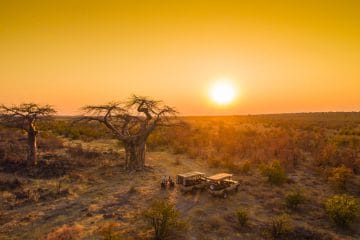
Elephant Kingdom with a Chobe – Savute Safari
Southern Africa Botswana Chobe Savuti
From $ 2500 /USD
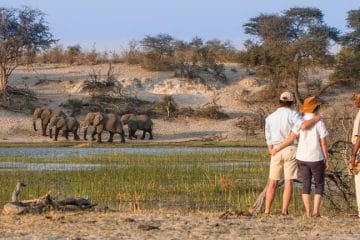
Classic Botswana Family Safari
Southern Africa Botswana Makgadikgadi Pans Okavango Delta Moremi Savuti
From $ 6060 /USD
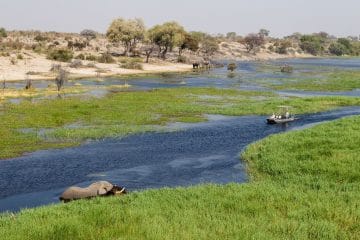
Botswana Highlight Safari Collection
Southern Africa Botswana Chobe Moremi Okavango Delta Makgadikgadi Pans
From $ 4640 /USD
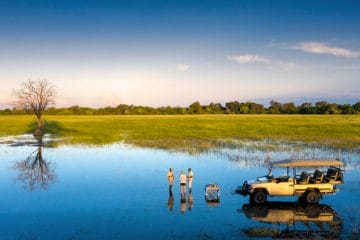
Botswana Wild Wonders: Linyanti & Khwai Safari
Southern Africa Botswana Chobe Okavango Delta
From $ 4580 /USD
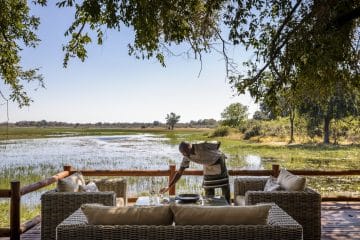
Vic Falls, Chobe and Delta Luxury Fly in Safari
Zambia Victoria Falls Botswana Chobe Okavango Delta
From $ 7620 /USD
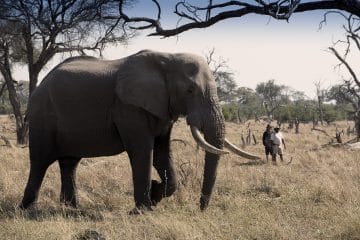
Photographic Tour of Botswana
Botswana Chobe Moremi Okavango Delta Southern Africa
From $ 3615 /USD
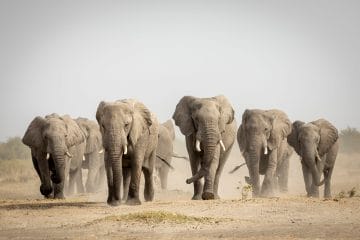
20 Chobe Safaris to choose from
Stay for 3 - 18 days
Experience our Tailor-made Tours in Chobe National Park
When is the best month to travel to chobe national park.
Visit Chobe from May to October for prime wildlife viewing during the dry season, when animals gather around water sources. For bird watching, the wet season from November to April offers vibrant birdlife and lush landscapes, perfect for avid birders.
- Chobe in January
- Chobe in February
- Chobe in March
- Chobe in April
- Chobe in May
- Chobe in June
- Chobe in July
- Chobe in August
- Chobe in September
- Chobe in October
- Chobe in November
- Chobe in December
Our Recommended Tours in Chobe National Park
Discover our top Chobe National Park tours, tailored to provide the best wildlife experiences. From guided game drives to boat safaris, our tours ensure you see the park’s highlights, offering memorable encounters with Africa’s iconic animals.
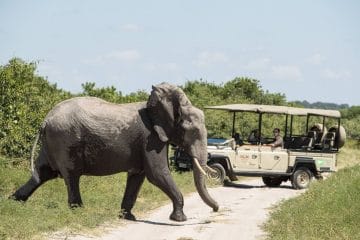
Affordable Chobe and Delta Explorer
From $ 3345 /USD
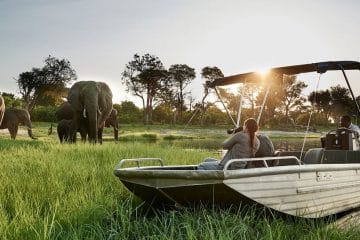
- Luxury Explorers Safari in Botswana
Southern Africa Botswana Selinda Game Reserve Okavango Delta
From $ 5080 /USD
Looking for Something Unique?
For a unique Chobe adventure, consider a night safari, allowing you to witness nocturnal wildlife. Alternatively, take a photographic safari with a professional guide to capture stunning wildlife moments. These experiences provide a different perspective on Chobe’s beauty.
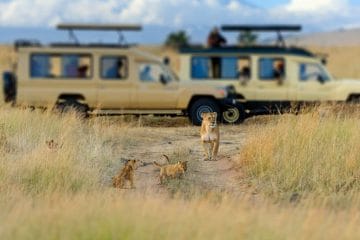
Big Cat Safaris
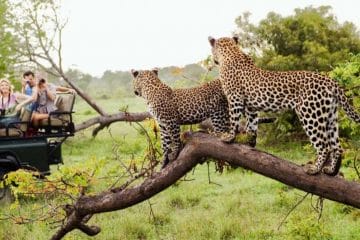
Family and Kid-Friendly Safaris
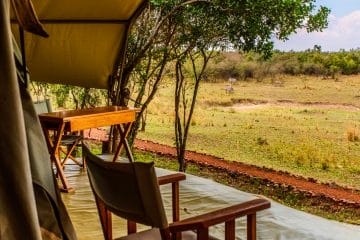
Chobe Safari Reviews
Hear from our guests who have experienced the wonders of Chobe National Park. Their stories of exceptional trip planning, life-changing adventures, and memorable experiences reflect the magic of our safaris and the unmatched beauty of Chobe. Set off on a journey to Chobe National Park and uncover a destination brimming with adventure, beauty, and unforgettable memories.
Vihann was very reactive and gave us excellent advice based on our...
Ngorongoro & Zanzibar Review
Pamela & Victor, France 04 Aug 2022
As a solo traveller it was fantastic to have everything organised for....
Maasai Mara Solo Safari Review
Bronwyn Hughes Photography, Australia 17 Jul 2022
Outstanding, knowledgeable, trustworthy, friendly and very customer responsive service.
Botswana Review
Alana, United Kingdom 23 Apr 2022
Prompt, professional and excellent service.
Senior Safari to Kruger & Botswana Review
Chetan Vora, Canada 20 Nov 2019
Sabi and Botswana Safari Review
Aly, United States 04 Jun 2017
Very professional and responsive engagement.
Booking with Discover Africa Review
Andy J, United States 08 Feb 2017
Ready to plan your tailor-made safari.

Alice Lombard, Destination Expert
Free safari planning advice from destination experts
See chobe in your comfort.
Experience Chobe in comfort with luxury lodges and tented camps offering stunning views and top-notch amenities. Opt for private game drives and river cruises to enjoy personalized wildlife encounters, ensuring a relaxing and intimate safari experience.
- A Luxury Chobe Holiday
- Affordable Chobe Holiday
- Budget-Friendly Chobe Holiday
Chobe National Park has safari accommodations to rival the best on the continent. If price is not a concern, choosing a safari is more about personal preferences and the desire for action and adventure or peace and tranquility. Some may also choose accommodations according to their key interests, such as summer migrant bird species or certain predators.

The Chobe Riverside will have suitable suites and lodges, but it depends on whether you’ve come to Botswana to avoid the crowds. In high season, this entire area becomes very busy, and as Chobe is a national park, sightings are often shared with other vehicles, to the point of jostling for position.
If the thrill of river cruises and seeing enormous herds of elephants and buffalo are more important than exclusivity, visitors will be more than happy. There are also excellent birding safari opportunities and fishing in this area. You can also consider renting an entire “floating villa” or houseboat .
Otherwise, those who prefer more intimate lodges with ample space will wish to head further afield, deeper into the park, or to the private concessions. Flying is the quickest and easiest way to get around (and scenic planes fly low). Charter flights from Kasane or Maun are easily arranged.
It may be best to pinpoint your primary aim. If the sights and sounds of the bush and game drive safaris with expert trackers are all that is required, look for an intimate lodge with fewer guests. Private concessions will be able to offer night drive safaris and guided walking safaris , unlike most of the rest of the park, adding an extra dimension to the trip.
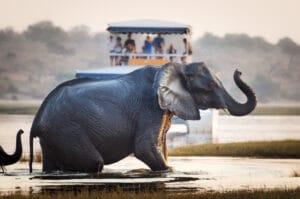
For predators, a Savuti safari remains a must-do, both in the dry season when animals congregate around the waterholes and when the zebra pass through on their annual migrations. Lions, leopards, cheetahs, and wild dogs are all present.
Those who know they enjoy an extra level of activity may consider adventures such as a mokoro paddling adventure in Selinda (note this is entirely dependent on water levels). Include the Okavango if it’s on your bucket list. Horse riding safaris and walking safaris , again all in the private concessions, are easier to guarantee.
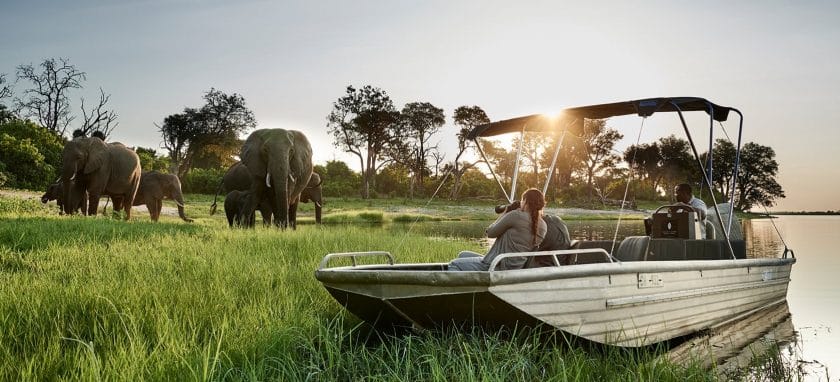
Birding and photography specialists can ask about top-end guides to help scratch the itch for that elusive species or perfect shot. Private guided safaris that offer the best guides in the business and a deluxe camping experience are options for those who want the sound of the bush filtered through canvas and no electricity to dim the stars.
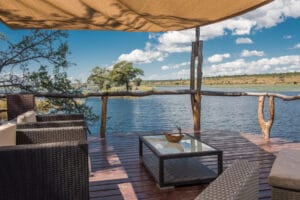
Top-end names to consider, which all have their own style and approach, include Great Plains, Wilderness Safaris, &Beyond, and Desert & Delta.
Practical Advice for a Luxury Chobe Holiday
- Botswana isn’t really a shopping destination, but look out for quality wooden carvings, and the area’s specialty: intricate baskets made from Mokolwane palm fibres, handwoven as taught to Hambukushu women by their mothers, grandmothers and great-grandmothers. The colours are made by soaking the fibres in natural dyes. Traditional patterns had evocative names such as Flight of the Swallows or Knees of the Tortoise, Ian Michler writers in The Insider’s Guide to Botswana. The baskets are world class but quite hard to find in Chobe; ask your lodge for advice.
Travelers lucky enough to be armed with strong international currencies should be able to explore Chobe in perfect comfort (sometimes top-end comfort) for a reasonable price – but remember that Botswana is a destination where low-volume, high-income tourism is promoted. As such, you might need to look for ways to keep costs down.
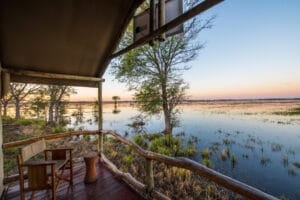
Most lodges and camps in Chobe Riverside , Savuti , and Linyanti are all-inclusive, which means that once you’ve paid the lump sum, you theoretically won’t need to touch your wallet until it’s time to tip the staff and say goodbye.
But not all seasons are equal, and this is where you can make considerable savings. Great deals can be had in the shoulder season (around May and November, when the weather and animal activity is less predictable) and the “green season” (December to March, when it’s hot and humid, and wet weather can make road travel tricky).
As an example, one high-end brand’s high-season lodge rates were $1,000 per person per night in 2019; their low-season special was $580, and shoulder season rates $750. This does not include a single supplement.
For those determined to get close enough to the wilderness to hear buffalo chewing at night in, say, Savuti, a mobile safari operator is an option. These cater to varying budgets, but the better options will take the trouble to pack good bedding and quality food, and guests can enjoy a deluxe camping experience.
Guests will sleep in large dome or walk-in tents with stretcher beds and good linens, and water will be warmed for hot showers, plus short-drop toilet facilities provided rather than a spade and a loo roll. Better mobile safaris may even have “en-suite” tents.
Guests usually travel in an appropriate game-viewing vehicle while a second vehicle hauls the gear and sets up camp. This has the advantage of getting one deeper into Chobe without flying and having that authentic safari experience so many yearn for.
Of course, affordable options mean traveling with a group of other people. As an example of costs, one “mini” seven-day mobile safari with a top-end outfit is from $3,540 per person in low season to $6,050 per person in high season. This is based on a group of six.
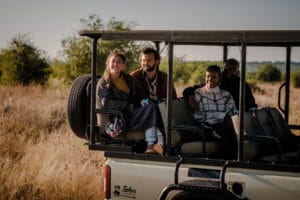
For pure exclusivity, you need to book a private guided safari, and that, unfortunately, is not within everyone’s budget.
Although the private concessions of Linyanti and Selinda are generally more high-end and thus possibly only an option in green season, there are a few simple yet quality options that are easier on the budget. Check with your Discover Africa expert .
Practical Advice for an Affordable Chobe Holiday
- The Chobe Riverside lodges and camps can work out to be more reasonable than those deeper in the park, especially the concessions. The western Chobe Riverside can be more expensive than the east. Also, check accommodations over the Chobe River in Namibia .
- Another possible way to save is to look at newer lodges opened by the excellent safari lodge brands. These sometimes offer lower prices as they are becoming established.
- Tipping can be an awkward subject. There is no obligation to tip for poor service, and it’s always voluntary. Don’t be embarrassed to ask the manager about the camp’s policy – some lodges will have this information in the info packs in your room. As a general guide, tip only at the end of your stay. Consider first tipping your guide, who you will spend a lot of time with and who may become a friend. $10 a day is suggested for group guides and $20 for private guides. Then most camps have a “staff tip box” or envelope for the general staff, from cleaners to chefs and waitrons. Here, we recommend giving a lump sum divided equally between the staff, based on around $5 per guest per day.
Firstly, it’s best to accept that Botswana is a pricey destination. The country’s rulers have elected to promote low-volume, high-income tourism to protect its remarkable wilderness areas while creating as many jobs as possible – it’s possibly the most expensive safari destination on the continent.
There are many ways to get close to the marvels of Chobe National Park . Still, those on a budget will generally save hard cash but expend more time and effort.
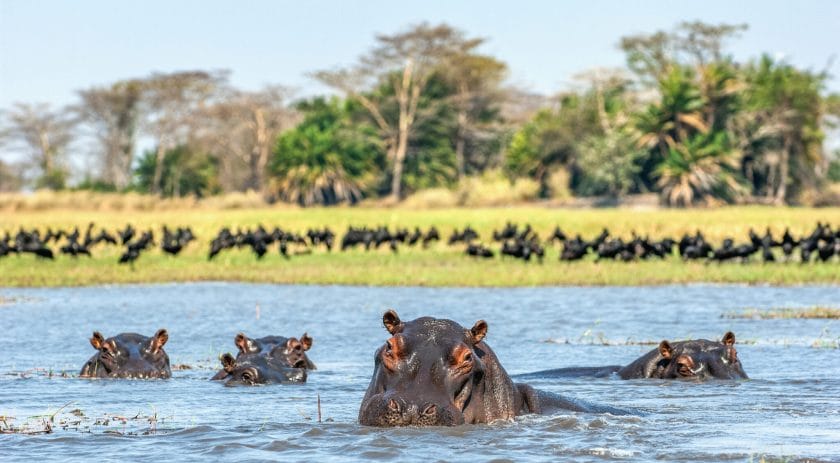
It’s also worth considering that while the prices of certain accommodations may seem excessive, they are all-inclusive. Meals, drinks, park entrance fees and, importantly, activities such as game drives and river cruises are included in the rates.
If you add up the extras needed to be self-sufficient, from fuel to cooking equipment, tents, and 4×4 hire cars, maps, and permits, the camp and lodge prices start to come into perspective. Add the difficulty of sourcing fuel and quality food in a more remote area such as Savuti or Linyanti to the mix. Of course, for adventurers and families, this can still be the way to go.
For independents with their own 4×4 and gear, the public campsites at Ihaha, Savuti, and Linyanti are reasonable ($50 per adult a night for internationals, $25 per child aged eight to 17 a night).
One campsite can accommodate up to three vehicles and eight people. Park fees are extra. The three public campsites aren’t huge and are extremely popular, especially in local school holidays. Booking a year or more in advance is recommended.
There’s also the option of booking into self-catering accommodation in Kasane (there are also private camping options available) and dipping into the Riverside area as desired. Note the daily entrance fee allows for multiple entries.
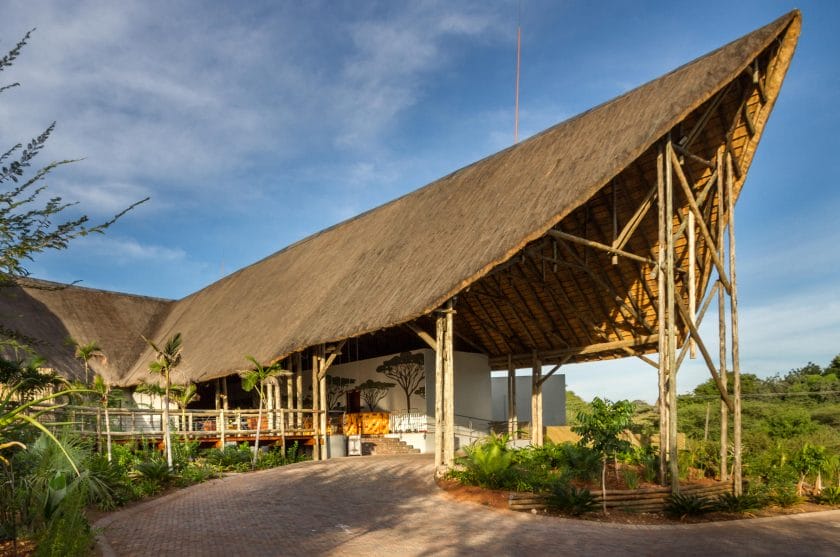
Charter flights are a significant expense, so the park’s further reaches are more inaccessible to budget travelers who wish to avoid driving or camping.
Consider a budget mobile safari. This involves traveling with a group and camping in private areas, and some outfits pare back the luxuries to make the experience more affordable.
You will generally stay in two-person dome tents with sleeping bags and mats rather than walk-in tents with camp beds and good linen, but guides are skilled, and you can get away from the crowds and into the really wild places. Ask your Discover Africa expert about the best options .
The other possibility for social adventurers is an overland tour. Overland safaris involve traveling long distances in relatively large groups in a heavy-duty vehicle. Trips tend to take in all the major sights and not linger in any one place for long, and guests often help set up camp and help with food preparation. While they are not for everyone, others find them full of camaraderie and company.

Of course, wildlife has no respect for budgets and is wonderfully egalitarian. A budget safari vehicle has just as much chance of stumbling on explosive predator action or being surrounded by a breeding herd of elephants rumbling to each other and chewing on trees. What really counts is your guide’s experience and knowledge. It’s worth paying for the best you can afford.
Travel Tips for a Budget-Friendly Chobe Holiday
Self-driver alert: the black-cotton soils around the Nogatsaa area are notorious when wet. Author Mike Main’s tips for driving on it? “Don’t unless you absolutely have to. Try to select the appropriate gear before entering a stretch of mud; slow and steady without excessive speed or revving is the key. At any water stretches which might be doubtful, send [an unfortunate companion] ahead to wade through!”
Holiday Styles and Options in Chobe
Whether you’re seeking adventure, relaxation, or cultural immersion, Chobe offers a variety of holiday styles to choose from. Enjoy thrilling game drives, serene river cruises, vibrant cultural experiences, or tranquil nature walks. Customise your trip to include activities like birdwatching, historical tours, and wildlife photography, ensuring a diverse and enriching travel experience tailored to your interests.
- Romantic Holiday in Chobe
Enter wonderland. Tucked up against Botswana’s northern border with Namibia , the Chobe National Park is the ultimate haven for vast herds of elephants. As many as 120,000 of the charismatic animals depend on its life-sustaining waterways as the dry season kicks in.
Nowhere else on Earth has more of these remarkable giants; many travel from neighboring countries to this, the Elephant Capital of Africa. Of course, they’re not alone.
Quintessential African game species such as buffalo, zebra, and wildebeest swirl around the 11,700km2 (4,517 square mile) Chobe National Park, trailed by the big cats: lion, leopard, and cheetah. Spotted hyenas are common, wild dogs less so, while hippos, crocs, and water-loving antelope like the red lechwe call the park home. The skies are alive with some 450 bird species, making it perfect for a birding safari .
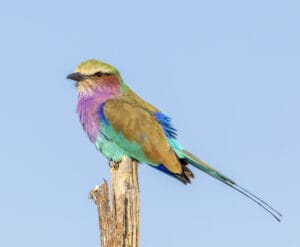
For many, the focal point of this famous park is the flashing blue Chobe River itself. It’s described as one of Africa’s most beautiful rivers, winking at the world through its fringes of jackalberry and ana trees. The beauty of Chobe Riverside and the tiger fishing, safari cruises, and riverside lodges that accompany it make this the park’s most accessible game-watching safari destination, and it can get busy.
Happily, there is plenty of room in Chobe National Park and other habitats further afield to explore. Savute is the best known: a crispy dry region that inexplicably turns into a wetland on the rare occasion water flows through the Savute channel – famous for elephant-hunting lions.
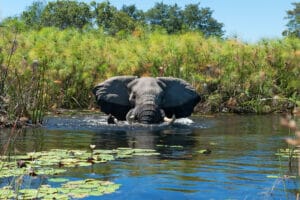
Little-visited Nogatsaa , to the south of the Chobe River , boasts a cluster of clay pans, valuable drinking holes that last well into the dry season. Last is Linyanti , a wedge in the northwest of the park, rich in floodplains, woodlands, and predators like wild dogs. Plus, the borders of Chobe are extended by various private concessions, like Selinda and the greater Linyanti area , which offer excellent, exclusive experiences away from the crowds. Top-quality, differing experiences can be had in all these safari locations.
The enormous ecosystem is blessed with a range of accommodation options, from top-end lodges which will anticipate your needs to more pared-down nights under canvas. Specialized experiences cater to many tastes, be it birdwatching, wildlife photography, or fishing.
Most Botswana guides are highly skilled and experienced, ensuring you’re best placed to see marvels on game drive safaris and cruises. Imagine cruising out early, before the sun warms the dust, to see a lioness erupt from hiding to topple a buffalo calf – and the calf then being rescued by a snorting mass of protective aunts!
As a guide working at a lodge in Savuti wisely says, “Yesterday’s not today; today’s not tomorrow”. The bush is ever-changing, from season to season, and visit to visit. Every pink-tinged dawn is an invitation to adventure.
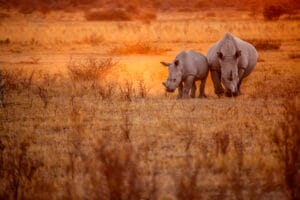
Chobe Fast Facts
- Chobe National Park and its animal inhabitants have been protected since 1968
- The park stretches over 11,700km2 (4,517 square miles)
- Four of the Big Five roam the bush (rhinos have been reintroduced to Botswana, so chances to see them will increase in years to come)
- 450+ bird species can be seen
- There are more elephants here than anywhere else on Earth
- Chobe is located in a country that has banned hunting
Meet the Locals of Chobe
- Puku: a medium-sized and rare antelope that likes wetlands and floodplains; males whistle to tell others to stay away from their territory
- Wild dogs: rare, rangy, gregarious hounds that hunt in packs (rather messily). They are also called painted dogs.
- Buffalo: like enormous cows at first sight, until you realize they’re just great slabs of muscle capable of violence. Some say they look at you “as if you owe them money”.
- Secretary birds: long-legged birds of prey that dispatch snakes with a kick and have glorious eyelashes.
Couples heading to Chobe National Park will be able to find accommodations, pick modes of travel to suit all tastes and budgets, and always have someone to share that marvelous encounter when an entire herd of elephants crosses the road ahead of you, bulls trumpeting and matriarchs encircling the baggy-skinned babies.
Whether on a top-end cruise or camping independently, couples can seek out the creatures and experiences that make them happiest. And certain adventures are just made for two, like mokoro rides, although you’ll have to go to the Selinda concessions for that.
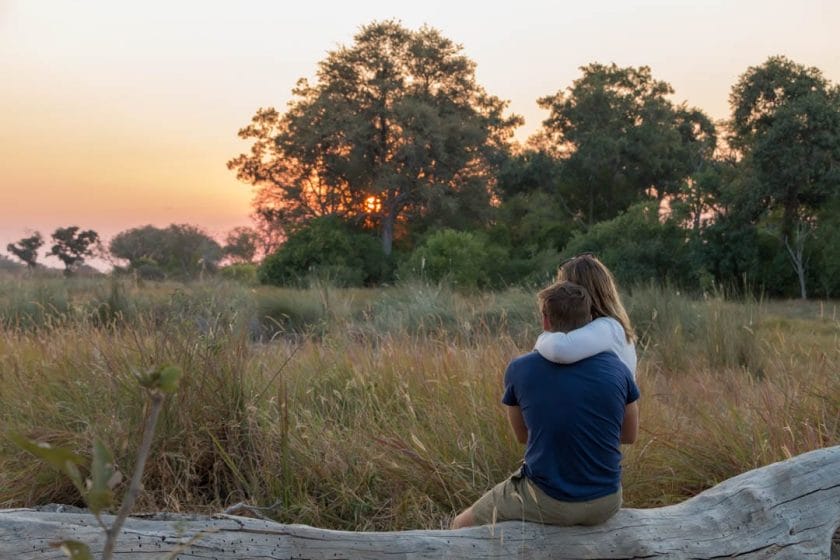
Many couples come to Chobe National park to mark an exceptional occasion: a honeymoon, an anniversary, or a romantic retreat. Privacy and luxury can be as important as the quality of the game viewing, and this may also influence decision-making.
First-time safari-goers and honeymooners will enjoy the quieter options on the Chobe Riverside . Elizabeth Taylor and Richard Burton spent a five-week honeymoon here decades ago, and many more have found a love for the bush while celebrating their marriages. Note that the western side is quieter, with fewer vehicles vying for entry at the gates at dawn.
The luxurious “floating boutique hotels” or houseboats on the Chobe also appeal to many. Drifting in the currents and savoring the stars from the deck are lovely and romantic experiences.
Honeymooners and couples seeking romance should also look at the size of the camps and lodges – often, the smaller they are, the more intimate the experience. They will also probably prefer to avoid the more family-friendly establishments. Still, even camps that cater to both markets will ensure the honeymoon suite or tent is suitably located in the quietest area.
Getting to Savuti in a bean-sized Cessna 206 is part of the fun. It’s a raw and wild place that will satisfy newcomers and old hands alike. Now that Nogatsaa has a spacious camp , too, couples seeking peace and wilderness as much as wildlife viewing can consider this less-utilized area too.
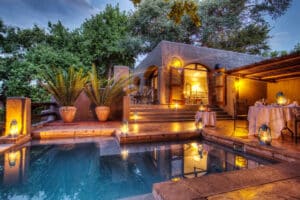
If you’re in a position to splurge, you’ll find excellent accommodations, perfectly appointed with the highest standards of service and dining. Some will have extra romantic activities, such as “star beds”: sleep-outs in fine linen under the enormous sky, bathed only in mosquito nets and moonlight. Exclusivity is assured in private concessions in Linyanti and Selinda, outside the park.
Not all couples want petal-strewn beds and perfumed baths. Many enjoy the experience of being out in the wilds and will forgo the trappings of electricity and formal plumbing in favor of being surrounded by the night’s chirps and roars in the middle of the wilderness. Authentic tented mobile safaris also hark back to the romance of bygone eras, when getting away from it all meant leaving the world behind in favor of flickering firelight and freedom of movement.
Independent camping is also possible in Chobe’s three public campsites, and equipment and vehicles can be hired in Maun and Kasane . Being on the road alone is something many couples relish; both partners should, however know what to do in the unlikely event of an emergency.
Guided specialist mobile safaris are the preferred alternative for extra creature comforts and peace of mind. Couples can team up with like-minded people on such adventures, and small groups will be formed for set-date departures. Of course, a private guided safari is the most exclusive alternative, but costly.
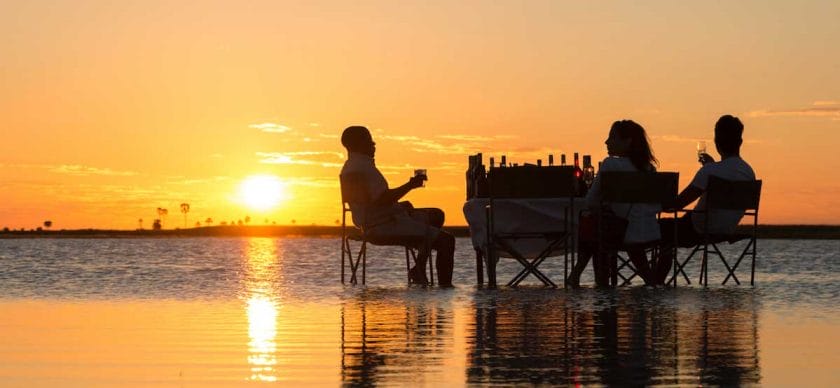
Overland safari adventures, which involve traveling long distances in relatively large groups in a heavy-duty vehicle and often participating in camp and meal preparation, definitely ticks the adventure box rather than the romance box for most.
Travel Tips for a Romantic Holiday in Chobe
- While dinner is communal at most camps, private dining in your room or at a table for two can be arranged.
- If prepped and there is the staff available, some camps will provide a private game drive vehicle and guide at a price, but generally, the small groups in safari vehicles are good company and not intrusive.
Who is Travelling to Chobe with you?
Planning your Chobe adventure? Tailor your journey with experiences designed for every type of traveller. Whether you’re exploring with a loved one, embarking on a family adventure, discovering solo, celebrating a honeymoon, or enjoying a trip with friends, Chobe offers unique and unforgettable experiences for all. Select your travel type to find the perfect itinerary and make the most of your safari holiday.
- Family Safari in Chobe
- Going Chobe Solo
Watching a child see their first elephant twirling trunkfuls of water to its mouth or laughing in delight at the impossible scale of a giraffe is a wonderful thing. Children and wilderness areas can go together like ducks and water. The bush can be wildly exciting and a tactile and stimulating experience for children – miles away from the screens and stresses of their ordinary lives. Few children will not delight in a good tent and a campfire on a family safari.
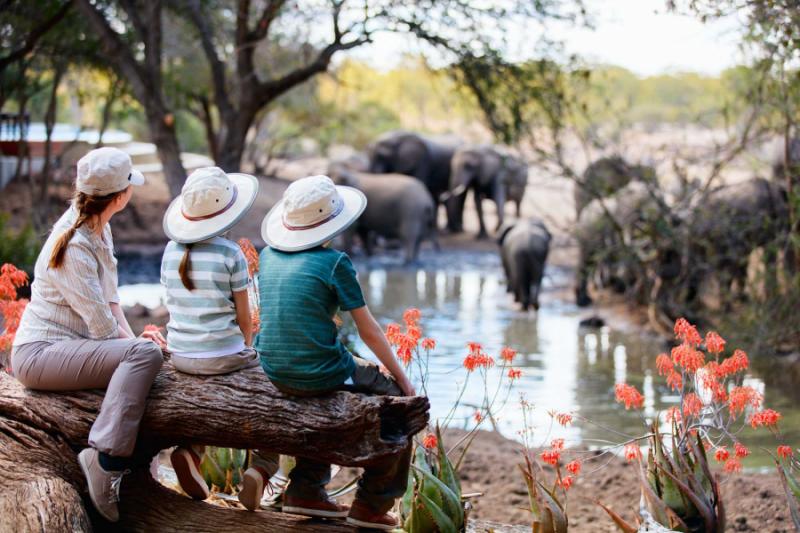
That said, young ones have very different energy levels, attention spans, and, when they get older, interests. Long, bumpy car journeys and extreme heat will not make small children happy on a safari with the family. The hours-long game drives that keep adults enthralled may also feel interminable to a very young child.
Lodges may insist that families with children under a certain age have their own vehicle for game drives or other activities, which can involve extra costs. And there are potential health issues such as malaria, making travel for under-fives riskier. As such, doing adequate research or asking for expert advice before booking your dream family trip are wise decisions.
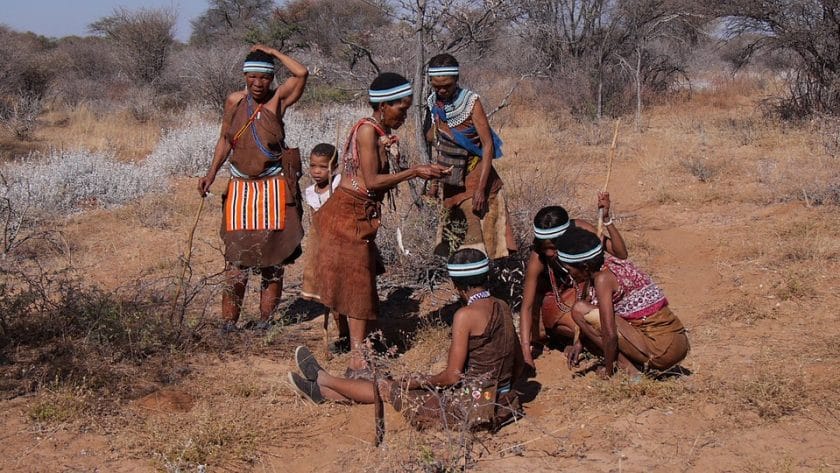
In the end, however, it’s important to remember that you know your child best. There is often no need for a lengthy list of child-friendly activities; some “games” can leave children nonplussed. Decide what’s most important for your family: babysitting, children’s meals, a swimming pool, and the right accommodation with interleading rooms or family suites and tents are all some families need. Making memories together on your family safari is the important thing.
We’d recommend the Chobe Riverside area to families with young children. There are more activities on offer, from river cruises and land-based safari game drives to tiger fishing (yes, some lodges will help your child catch and-release their first fish).
Prices, too, can be more manageable as accommodations are more plentiful and charter flights need not be taken. Proximity to town can be a plus and a distraction from the daily game drive regime. Attractions here include CARACAL, a conservation center where you can see rescued animals such as long-fingered bushbabies (they do excellent conservation work, too); open 9 am to 5 pm daily.
Shopping doesn’t interest most kids, but they may enjoy curio shops while parents seek out the beautiful handwoven mokolwane palm leaf baskets made by Botswanan women. Even buying a stick of sugarcane from a roadside vendor can be fun; chewing on the stalks is bound to be a new experience.
And visiting an African village on Impalila Island or elsewhere will give the children a lot to think about (cultural tours can be booked). Take a soccer ball to make instant friends.
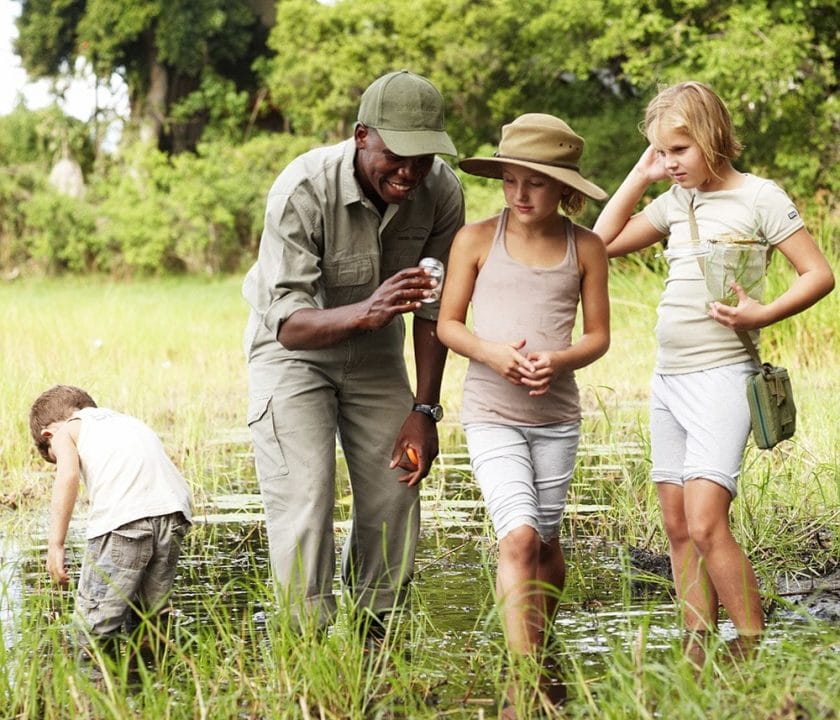
Some accommodations will also have games and TV rooms, whereas a swimming pool is a real plus for families with children of all ages on a safari – although they may be unfenced.
Older teens will miss contact with their peers more, and (unless you can persuade them to pack away their phones), will appreciate WiFi connectivity. Again, the Chobe Riverside is best placed to offer this, although you may get lucky in patches deeper in the park.
Mobile and private guided safaris in the Riverside area as well as Savuti and Linyanti , are options families – and family friends – can consider, although once again, there are likely to be age limits, and we would recommend children who are 12 and up. Pairing with other families where possible and depending on the group sizes may be desirable.
Gill Staden, a Zambian-based journalist and author, notes that “parents have to think carefully when taking small children into Chobe National Park because distances and driving time can be long. And then, when in camp, parents have to be on the lookout for wildlife hazards. I took my son through Chobe when he was small, but he was used to being in the bush and loved every minute of it. Having said that, we were often in the company of friends with other children. I think if I were a parent of young children, I would want to be in a group of at least one other family. Parents can take turns entertaining the children.”
For those lucky few for whom budgets really are not an issue and who have children over six years old, fly-in options within the private concessions in the Linyanti and Selinda areas may be the answer. It’s not as busy and commercial as the Chobe Riverside, and you can expect excellent service and care on your family safari.
Travel Tips for a Family Safari in Chobe
- Before leaving, let first-time safari kids practice using binoculars.
- Keeping checklists gives children that sense of achievement many enjoy.
- Pack child-friendly sunscreen in case it is difficult to find.
- The hottest month is usually October, and even the green season may be too warm for some.
- Most lodges (and mobile or privately guided trips that set up camp) are located in unfenced areas. If your child is small enough to need constant supervision, this is likely to be exhausting for the parents. Some Chobe Riverside properties are fenced.
- Some lodges don’t accommodate children, and others will have age limits (over six or over 12 is quite common). Speak to your safari expert before setting your heart on a particular location.
- Babies under two, if accommodated, can usually stay free, but note the next point.
- Game drives will often have an age limit. Expect rules such as “Children between the ages of 5 and 11 years are permitted to participate in the game drives at the sole discretion of the lodge manager. Children under 5 require the permission of the lodge manager and is subject to the booking of a private vehicle.”
- Game walks are generally off-limits for children.
- Chobe is a malaria area, and prophylaxis is officially recommended. Use mosquito nets, repellent, and long sleeves and trousers to avoid being bitten, as no medication is guaranteed 100% effective. Most antimalarial medications, however, cannot be given to infants or very young children: discuss this with your doctor or travel clinic.
- The sun can be shockingly intense: hats and high factor sun-creams are essentials year-round. Remember the top of the feet!
- A basic first-aid kit is recommended for independent travelers, but those on all-inclusive trips can be sure guides and staff will be equipped for most common ailments. Some staff will have excellent first-aid training.
- Avoid standing water; there is a risk of bilharzia.
- Parents on self-drive holidays can pack or take the ingredients to prepare oral rehydration salts to treat diarrhea in children.
- No one wants to get bitten by insects on holiday, but it can happen. Take antihistamine creams and keep a sharp eye on any sting sites. Also, treat all minor scrapes and bumps with respect, and disinfect at the first sign of infection. But try not to let health concerns spoil your trip. Botswana has excellent medical facilities. Good health travel insurance is all most will need.
Solo travelers looking to safari in Chobe National Park are spoiled for choice, especially those with a little more to spend. The only limit to consider when enjoying Chobe’s delights? The prospect of self-driving within the park. Even highly skilled local 4×4 drivers used to the lonely routes, deep sand, and unexpected elephant encounters, might not consider driving too far alone. When planning park transects, it’s highly advisable to set out in company and with the right equipment.
The exception may be the main routes in the Chobe Riverside area . This gets so busy in season that, should a vehicle run into trouble, rescue won’t be too far away. For anyone unfamiliar with the bush, it will be infinitely more relaxing to join a tour, hire a guide, or book in at a lodge that caters to all needs and offers game drives.
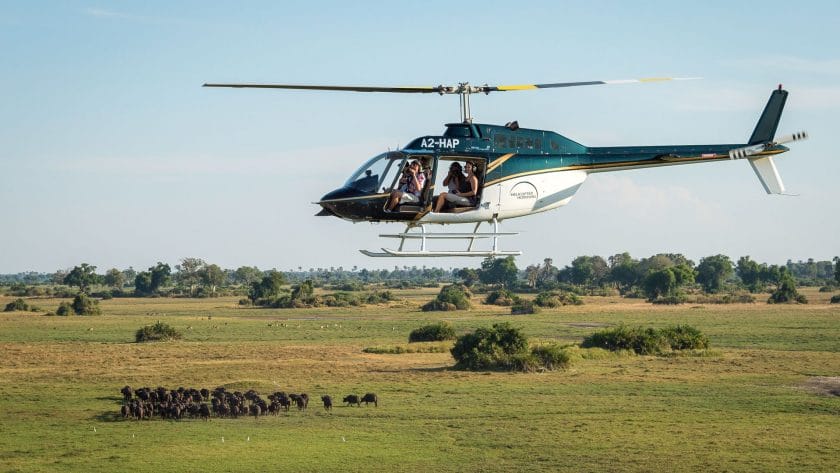
Solo travelers can indulge in the specialist activities they are passionate about. Trips that focus on birding and photography besides game viewing are available – a Discover Africa safari expert can advise on suitable specialist outfits and guides .
Trips to the glorious, deep blue Chobe River in the north of the park can include time on a safari boat that’s been kitted out for photographic safaris . Some even provide the gear and lenses to make that perfect shot, so there’s no need to lug cases worldwide. Small charter flights limit you to 20kg/44lbs.
The unique vantage point of the Chobe River allows close-up encounters with splashing herds of elephants, strings of weighty buffalo, charismatic water birds like kingfishers, and – with luck – African skimmers. The guides are tech-savvy and there to teach and help.
Dedicated photo trips that combine time on the plains (in a vehicle with bean bag mounts) can also be booked. This is an all-seasons activity: even if the herds are sparser in green season, there are dramatic skies and deep green vegetation, plus tottering babies that make for irresistible shots.
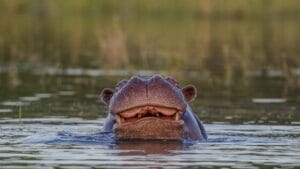
Solo travelers are welcome on mobile safaris for all budgets and are placed in an appropriately sized group. Some may feel lodge-based safaris are a better option. Lodges need not be lonely places. Guests tend to be allocated a guide on arrival, and activities such as game drives and cruises take place with other travelers.
These groups can become firm friends thanks to the intensity of the shared encounters with wildlife! Dinners, too, are often communal and lively. Again, your Discover Africa expert will be able to pinpoint the lodges best placed for soloists . Happily, there are options in all areas: Chobe Riverside , Savuti , and Linyanti , at various budget levels from simple to sumptuous.
A Chobe safari is perfect for solo travelers. Set entertainment – from boat cruises to the thrill of game drives – is part of the experience. As any safari regular can attest, if you do both daily activities and all meals, there isn’t actually all that much downtime!
Lodges often have lounges full of private nooks, expansive decks, and daybeds for dreaming and reading. Some have libraries, and an excellent selection of books on the area, and some even provide newspapers. Should a little bit of privacy be welcome, private dining or breakfast in your room are options at the better lodges.
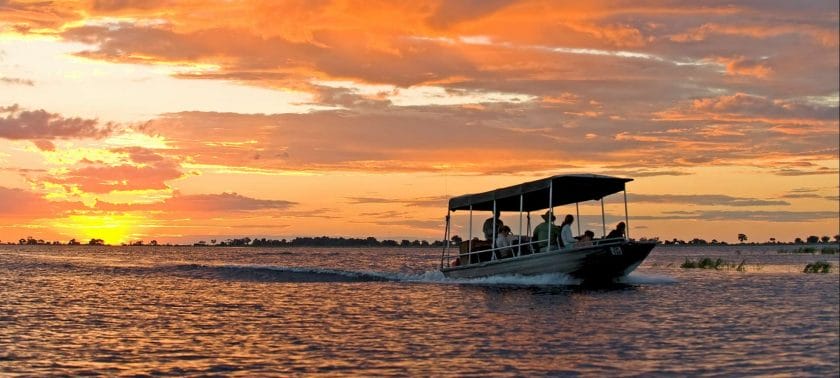
Travel Tips for Going Solo
- Travel for individuals is often considerably more expensive thanks to the dreaded single supplement. And Botswana is, in any case, especially pricey as the government has committed to high-income, low-volume tourism. The quality of the game viewing and unspoiled wilderness, of course, make up for this. But to help bring costs down for singles facing a 50% surcharge, consider traveling during shoulder season (May and November, when weather and animal movements are less easy to predict) or the “green season” (December to March). Rates can fall quite dramatically, by as much as 40%. A handful of lodges also waive or lower the single supplement at various times. Ask us about which outfits are most likely to have such specials.
- Trips with set-date departures are also good options, as solo travelers can join a group without extra costs.
- The smaller and more intimate the lodge, the more likely it is to be a favorite with honeymooners and couples. And just as some lodges are genuinely more child-friendly than others, you can find lodges that support and welcome singles. A safari expert’s advice will be invaluable here.
What You Need To Know
Planning a trip to Chobe National Park involves considering several important factors to ensure a smooth and enjoyable experience. From understanding visa requirements and health precautions to knowing the best times to visit and local customs, having the right information will help you make the most of your journey. Discover Africa provides essential tips and insights to help you prepare for an unforgettable adventure in this diverse and beautiful park.
- Why Should you Visit Chobe?
- When to Go on Safari in Chobe National Park
Fast Facts:
Chobe and its animal inhabitants have been protected since 1968
The park stretches over 11,700km2
Four of the Big Five roam the bush (and rhino have been reintroduced to Botswana, so chances to see them will increase in years to come)
Eyes on the sky: 450+ bird species can be seen
More wise and wonderful elephant than anywhere else on Earth
Located in a country that has banned hunting
Meet the Locals
Puku: A medium sized, rare antelope that likes wetlands and floodplains; males whistle to tells others to stay away from their territory
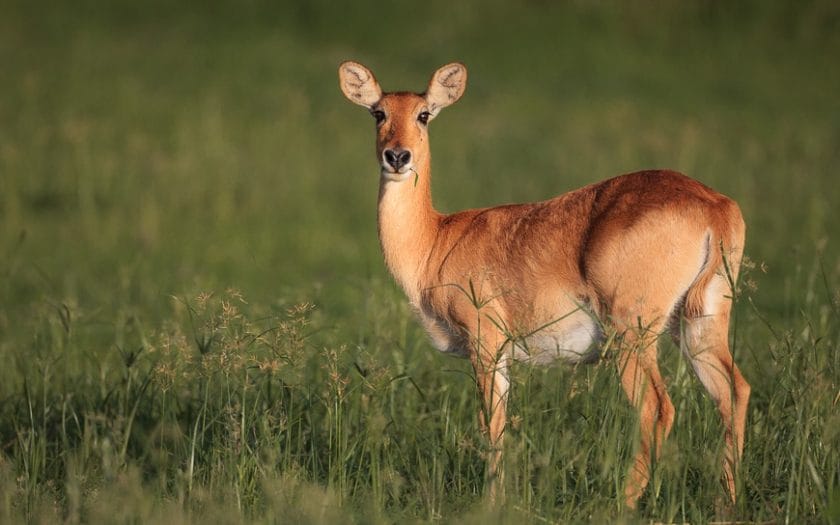
Wild dogs: Rare, rangy, gregarious hounds that hunt in packs (rather messily). Also called painted dogs or wolves
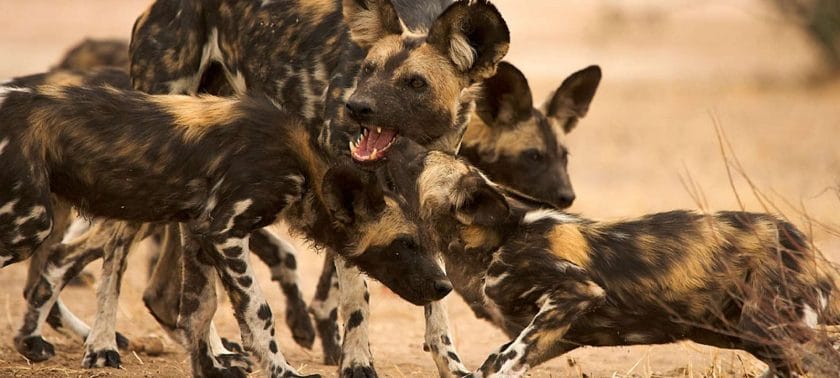
Buffalo: Like enormous cows at first sight, until you realise they’re just great slabs of muscle capable of violence. Some say they look at you “as if you owe them money”… Respect
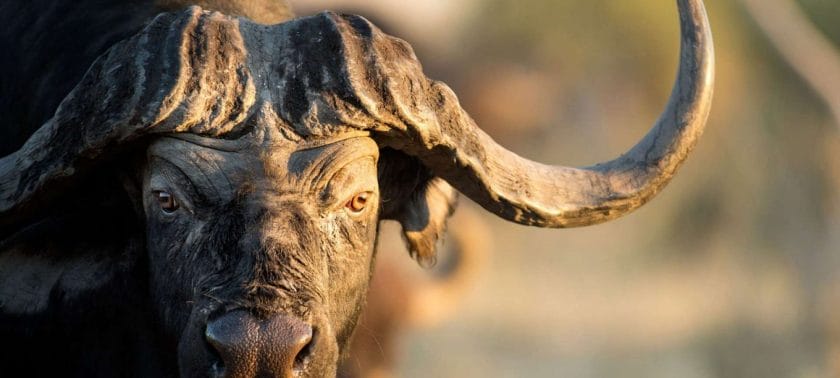
Secretary birds: long-legged birds of prey that dispatch snakes with a kick and have glorious eyelashes
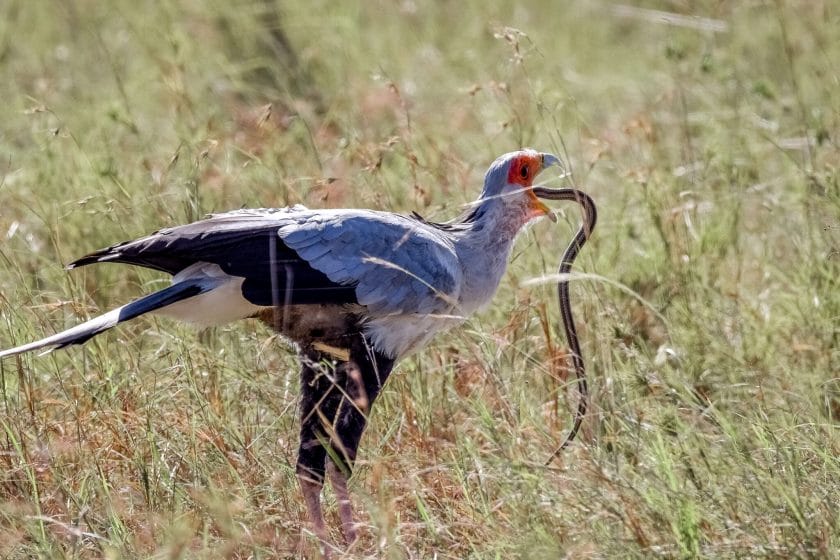
Chobe National Park is a year-round safari destination, but the best time to visit can depend on what you want to experience. Each season offers unique opportunities to explore the park’s diverse landscapes and abundant wildlife.
Best Time to Visit

The best time to visit Chobe National Park for a safari is during the dry season, which runs from May to October. During this period, the weather is cooler and wildlife congregates around water sources, making it easier to spot animals.
Month-by-Month Guide
January – march: wet season.
- Weather: Hot and wet, with afternoon thunderstorms. Average temperatures range from 20°C (68°F) at night to 30°C (86°F) during the day.
- Rainfall: High, with monthly averages of about 150-200mm (5.9-7.9 inches).
- Winds: Generally light but can increase during thunderstorms.
- Wildlife Viewing: Wildlife can be harder to spot due to dense vegetation, but bird watching is exceptional with migratory species present.
- Highlights: Lower rates and fewer tourists offer a more exclusive experience. This is also a great time for photographers due to the vibrant, green landscapes.
April – May: Transition Period
- Weather: The rains begin to subside, with temperatures ranging from 18°C (64°F) to 28°C (82°F).
- Rainfall: Decreasing, with monthly averages of about 50-100mm (2-3.9 inches).
- Winds: Light and variable.
- Wildlife Viewing: Increasingly good wildlife sightings as animals begin to gather around remaining water sources.
- Highlights: Clear skies and fewer tourists, making for a more intimate safari experience.
June – August: Long Dry Season
- Weather: Cool and dry, with clear skies. Average temperatures range from 10°C (50°F) at night to 27°C (81°F) during the day.
- Rainfall: Minimal, with monthly averages of about 0-10mm (0-0.4 inches).
- Winds: Light and steady, making for pleasant game drives and boat safaris.
- Wildlife Viewing: Peak season for game viewing as animals congregate around waterholes and the Chobe River.
- Highlights: Ideal for boat safaris on the Chobe River and game drives. This is the best time to see large herds of elephants.
September – October: Peak Wildlife Viewing
- Weather: Hot and dry, with temperatures ranging from 20°C (68°F) to 35°C (95°F).
- Rainfall: Very low, with monthly averages of about 0-10mm (0-0.4 inches).
- Wildlife Viewing: Peak game viewing as animals are highly concentrated around limited water sources.
- Highlights: Excellent for photographic safaris due to clear skies and abundant wildlife. The Chobe River is a hub of activity with animals coming to drink.
November – December: Start of Wet Season
- Weather: Hot with the onset of rains. Afternoon thunderstorms are common. Temperatures range from 22°C (72°F) to 32°C (90°F).
- Rainfall: Increasing, with monthly averages of about 50-150mm (2-5.9 inches).
- Winds: Light, with occasional gusts during thunderstorms.
- Wildlife Viewing: Wildlife is still good, but animals begin to disperse as water becomes more available.
- Highlights: The landscape turns green, and birdlife is abundant. Fewer tourists make for a more peaceful safari experience.
By Activity
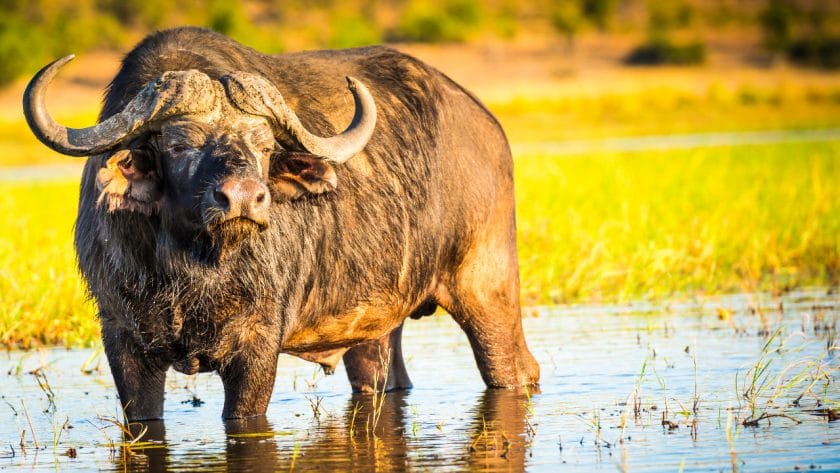
- Game Viewing: Best from June to October when wildlife congregates around water sources.
- Bird Watching: Best from November to April when migratory birds are present.
- Boat Safaris: Best during the dry season from May to October when animals are concentrated around the Chobe River.
- Photographic Safaris: Best from June to October for clear skies and optimal wildlife viewing conditions.
Climate Overview
Chobe National Park’s climate is generally warm and temperate. The park experiences two main seasons: the dry season and the wet season.
- Dry Season (May to October): Characterized by cooler temperatures and minimal rainfall. Ideal for wildlife viewing as animals gather around water sources. Average temperatures range from 10°C (50°F) at night to 27°C (81°F) during the day.
- Wet Season (November to April): Hot and wet, with frequent thunderstorms. The landscape is lush and green, offering different wildlife experiences and excellent bird watching opportunities. Average temperatures range from 20°C (68°F) at night to 32°C (90°F) during the day.
No matter when you choose to visit Chobe National Park, you’re guaranteed a memorable safari experience. Each season brings its own unique charm and opportunities for adventure.
Plan your trip according to your interests and enjoy the best that Chobe has to offer year-round. Set off on a journey to Chobe National Park and uncover a destination brimming with adventure, beauty, and unforgettable memories.
We have 5 rating for 447 reviews
We have 4.7 rating for 35 reviews
We have 4.9 rating for 73 reviews
- Why Chobe National Park
Join our newsletter
Sign up to receive exclusive offers, safari inspiration, and expert tips straight to your inbox.
By proceeding you agree to our Privacy Policy and Terms & Conditions .
POPULAR DESTINATIONS
Popular tours.
- Romantic Cape Town & Luxury Safari
- Masai Mara and Serengeti Combo
- Wildlife and Gorillas of Rwanda
- Luxury Honeymoon in Mauritius
POPULAR ACCOMMODATIONS
- Sabi Sabi Earth Lodge
- Chobe Game Lodge
- Khwai Lediba
- Camp Okavango
- Khwai Leadwood
QUICK LINKS
- Safari Cost Estimator Tool
- [email protected]
Wanderlust Travel & Photos
Seeing the world one trip at a time.
- Work With Me
- Travel Journal
- Privacy Policy
- Browse by Continent
- Tanzania Travel
- Thailand Travel
- Dominican Republic Travel
- Italy Travel
- Spain Travel
- Canada Travel
- Australia Travel
- New Zealand Travel
- Peru Travel
- Browse by Region
- East North Central
- East South Central
- Mid-Atlantic
- New England
- South Atlantic
- West North Central
- West South Central
- Central America
- North America
- South America
- Travel Vlog
- Instagram Photos
The Ultimate Chobe National Park Safari Guide
LAST UPDATED: 7/9/24 – Chobe National Park Safari Guide
This Chobe National Park Safari guide post contains my Viator affiliate links. I may receive a commission when you book a tour from this article, though at no additional cost to you. I hand-pick and recommend only the tours that I have thoroughly researched and feel comfortable recommending.
There are some truly incredible travel experiences that you can have throughout the world but visiting Africa and going out on safari is one of the most unique and exhilarating experiences that I have been fortunate enough to enjoy. Getting up close and personal with some of the world’s most amazing and endangered animals in their natural environment is something you need to experience first-hand to appreciate.
I have been lucky enough to have gone on safari in seven different national parks, and three different reserves, all in four different African countries. I have treasured each of these experiences greatly for their own distinct reasons, but my favorite has undoubtedly been my Chobe National Park safari this past autumn.
Unlike Any Other Park in Africa
Chobe National Park is unlike any other national park you can tour in Africa. It is home to one of the largest concentrations of elephants on the continent, is at the epicenter of Botswana’s great zebra migration, and offers one of the wildest and most authentic safari experiences you will find anywhere.
Whether you decide to take a boat safari in the Chobe Riverfront Region to see herds of elephants playing in the water amongst hippos and crocodiles or venture into the wild interior of the Savute Region to see the park’s dense population of apex predators hunt big game, a Chobe National Park safari will leave an imprint on your soul that will be with you for your lifetime. An African safari is truly one of the world’s most incredible travel adventures and Chobe National Park is one of Africa’s most amazing parks to have that experience.
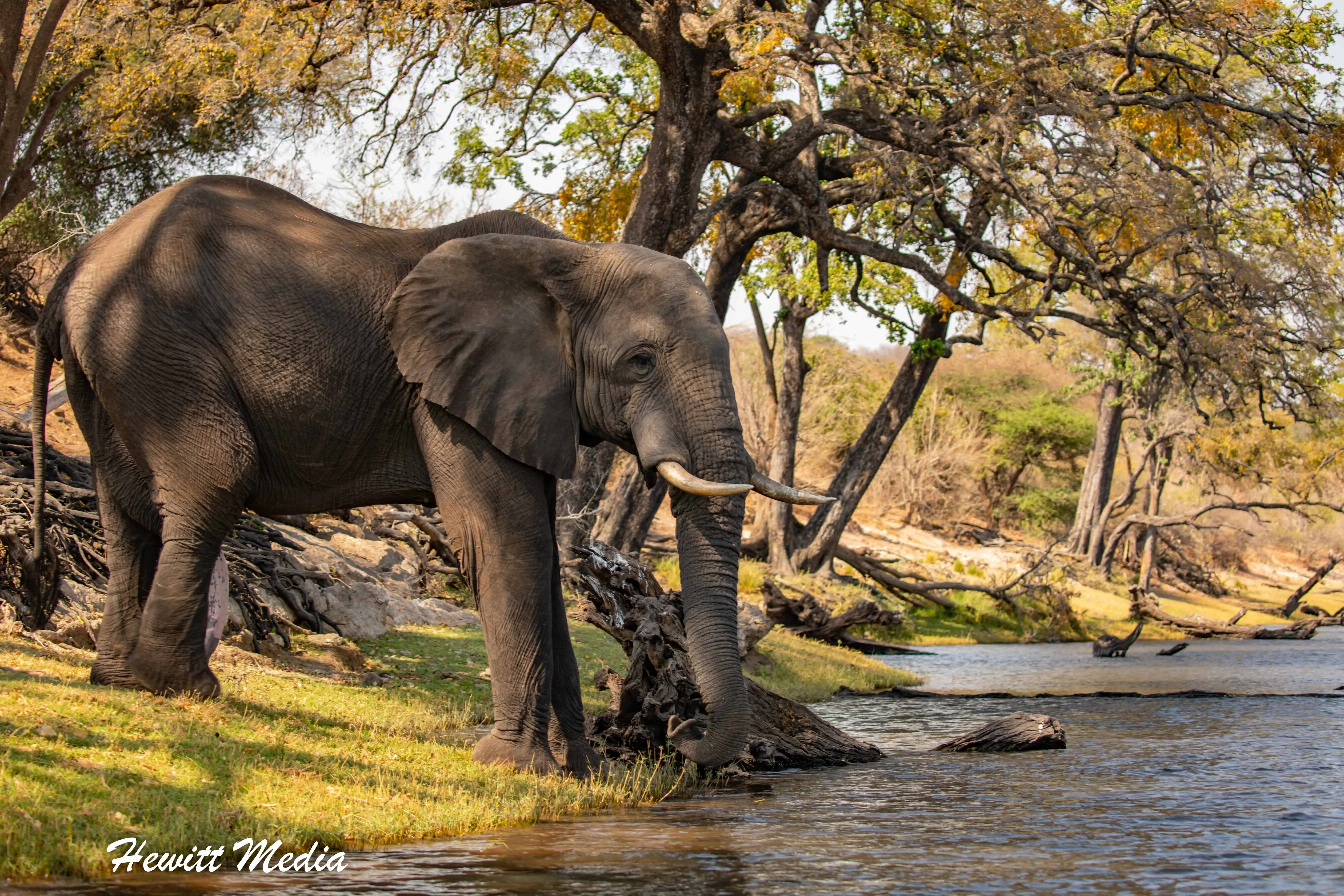
It is for this reason that I have created this Ultimate Chobe National Park Safari Guide. Not only do I want to share my incredible experience and safari photographs with you to inspire you to have your own adventure, but I also want to give you the resources you will need to successfully make that inspiration and reality.
In this Chobe National Park safari guide, I will let you know what requirements you will need to visit Botswana, give you some tips on how to get to the park, let you know which regions of the park you can visit, and provide you with information on which tours, lodges, and campsites I recommend. With this information in hand, you should be able to confidently plan an incredible safari adventure in Chobe National Park that you’ll never forget.
Chobe Safari Guide Navigation Menu
Botswana entrance requirements.
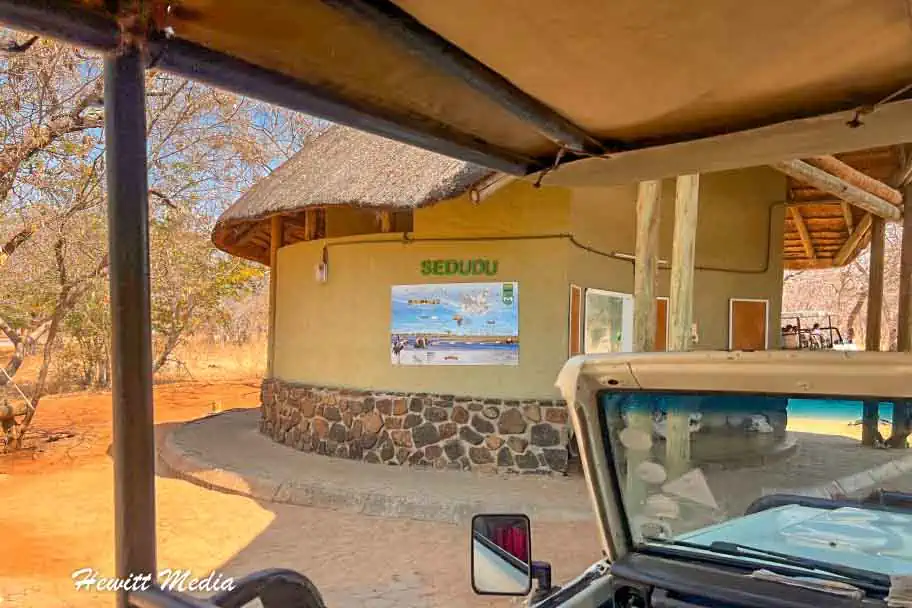
Before you depart for your Chobe National Park safari in Botswana, you will need to make sure that you meet all of the requirements for entry into the country. To assist you in this preparation, I have created a short article that outlines all of the Botswana entry requirements for visitors. This includes the necessary passport, VISA, and customs requirements that you will need to consider before you depart for your trip.
Recommended Travel Immunizations

Important Note: I am not a medical doctor and do not have any medical experience. The information provided in this section is a summary of information that I got from the recommendations of the Centers for Disease Control and Prevention in the United States for travel to Botswana. I am providing you this information to help bring awareness of the necessary vaccinations to you, but consultation with my guide should not replace a discussion about your travels with your doctor or a travel medical clinic.
One of the most important, and yet most often overlooked, aspects of travel is the necessary vaccinations that are required or recommended to keep you safe and healthy when you travel. Before you depart for Botswana, you are going to want to make sure that you have all of the proper vaccinations.
Some of these vaccinations, like the Yellow Fever vaccination, are included in the Botswana entrance requirements if you are traveling to Botswana from certain high-risk locations. Other vaccinations, such as a flu shot and the Typhoid vaccine, are recommended, but not required.
For your convenience, I have summarized the CDC’s recommendations on vaccines and healthcare for travelers visiting Botswana for you to review in my “Botswana Passport, VISA, Customs, and Immunization Requirements” guide linked below.
What to Bring on Your Chobe Safari
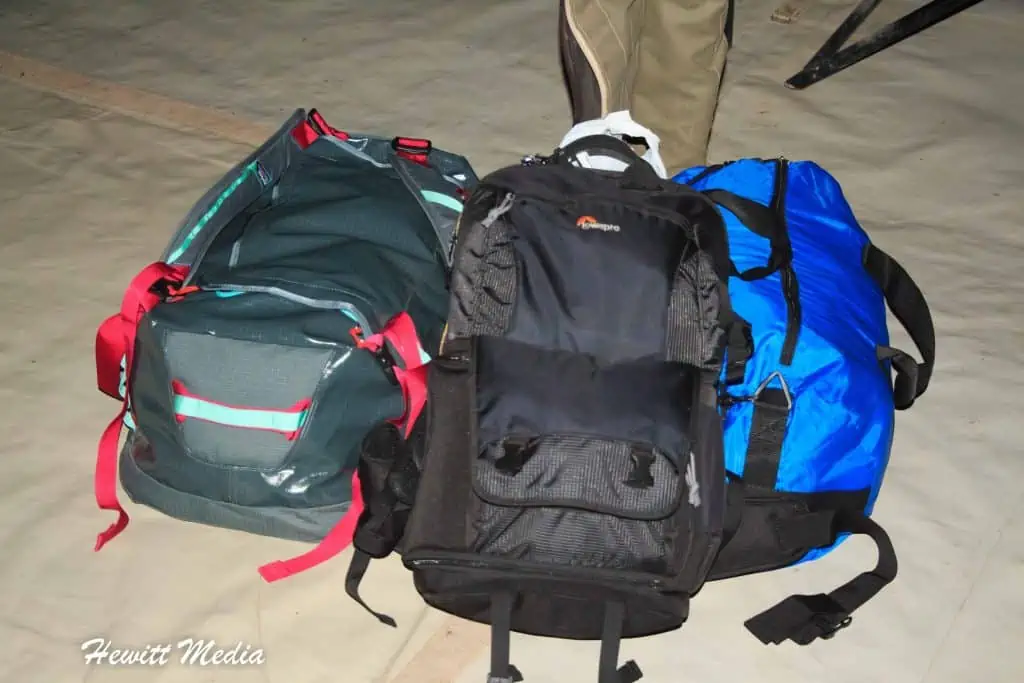
If you are visiting Africa to go on safari for the first time, you might not be sure of what to bring with you. To help you with these questions as you prepare for your Chobe National Park safari, I have developed several guides that you should review. First, my article on the “20 Tips for Those Visiting Africa for the First Time” will help you get prepared for what to expect when you arrive in Africa. It outlines what you should do, what you shouldn’t do, and gives you some tips that will help you know what to expect on your first visit to the continent of Africa.
Then, as you start to prepare for your trip, you will want to review my “Essential Safari Packing List” to make sure that you have all of the gear that you need and don’t pack what you won’t need with you. Finally, if you plan to take pictures on your safari, you will definitely want to review my “Tips for Photography on African Safaris” guide to make sure you get the best photographs possible to remember your adventure!
How to Get to Chobe National Park
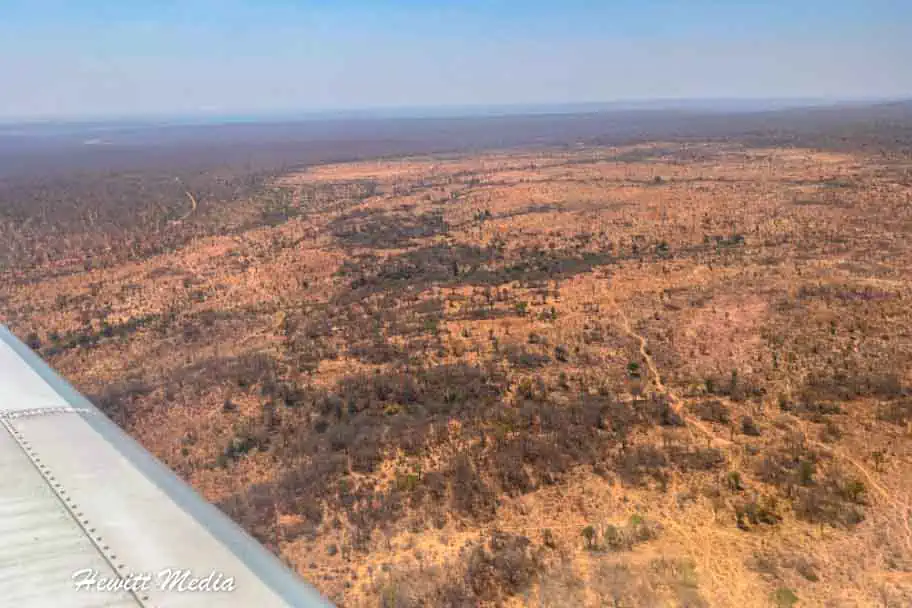
Depending on how you plan to take a Chobe National Park safari, there are several different ways in which you can plan to get there. Chobe National Park is a huge park that covers over 4,500 square miles, so where you plan to tour within the park will have a big impact on how you will want to get there. In this section of my Chobe National Park Safari Guide, I provide you with some valuable information on how it will be best for you to plan your transportation to Botswana.
Getting to the Park
There are two airports within 1.5 hours of Chobe National Park, one in Kasane, Botswana, and the other in Victoria Falls, Zimbabwe. In addition, there is also an airstrip for smaller aircraft that is located in the Savute area of Chobe National Park. If you are planning to book a multi-day safari in Chobe National Park, the tour operator you choose is likely to want to pick you up in either Kasane or will help you organize your flight into Savute.
For those who are visiting the Victoria Falls area and would like to take a full-day safari in Chobe National Park, many tour operators will organize transportation for the one-hour drive from Victoria Falls to Chobe National Park. This includes assisting you with the border crossing from Zimbabwe to Botswana and then back to Zimbabwe when your tour is finished. For a general understanding of where Chobe National Park is located in Botswana and relative to other parks and reserves in Botswana, please refer to the map I have included below.
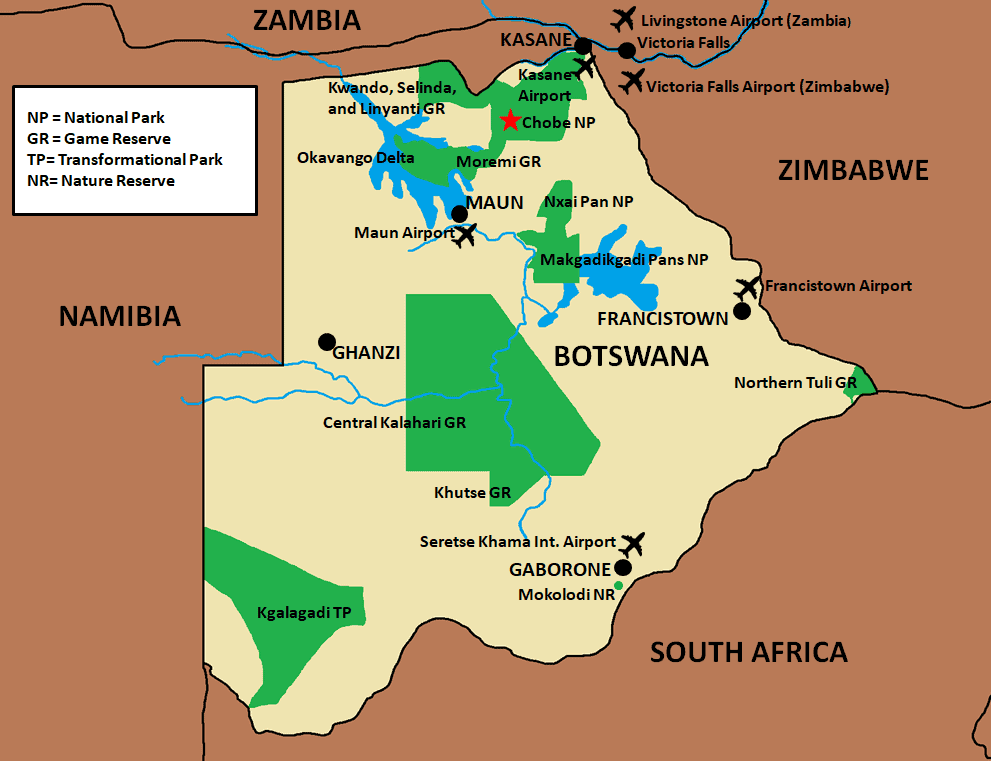
View Larger Map
Recommended Chobe Safari Tours
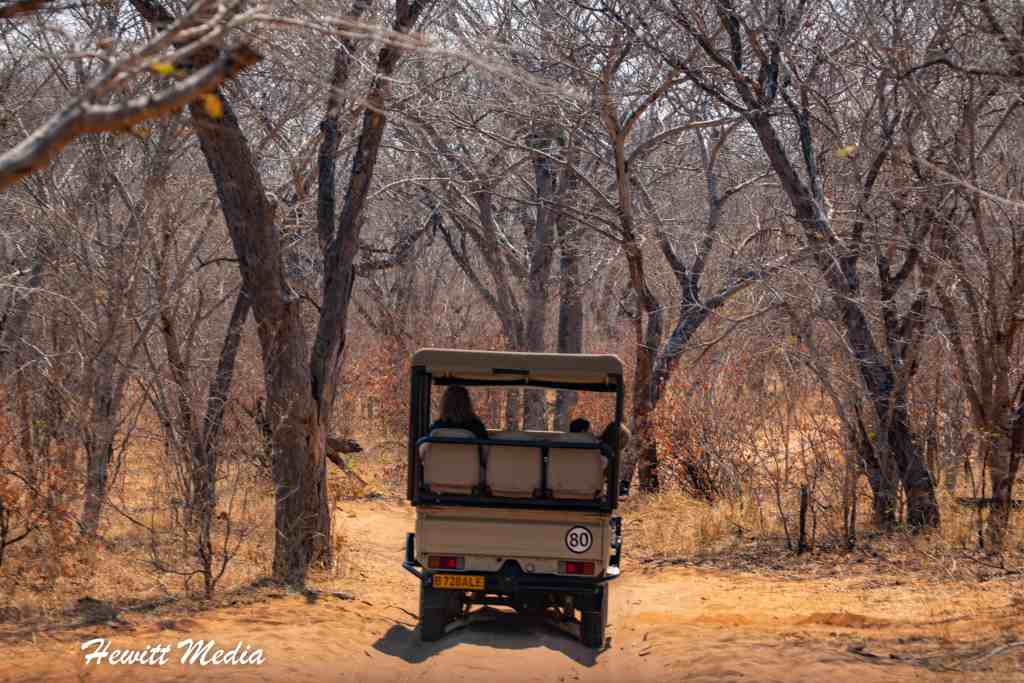
Because Chobe National Park is such a big park, it will be difficult to see all of it in one visit. Which parts of the park you visit will depend a great deal on how much time you want to spend in the park and what tour you choose to book. If you are in the process of looking at Chobe National Park safari tours and would like some assistance with choosing the right one for your trip, I have included some resources below to assist you.
Chobe National Park Map
Before you choose a tour operator for your Chobe National Park safari, I think it is really important to understand a little bit about Chobe National Park. For those of you who aren’t familiar with the park, Chobe National Park is divided into four main areas. These areas include the Ngwenzumba Pans, Linyanti, Savute, and the Chobe Riverfront. To assist you in deciding which parts of the park you’d like to visit; I have included a park map and a description of each of these areas for you to review below.
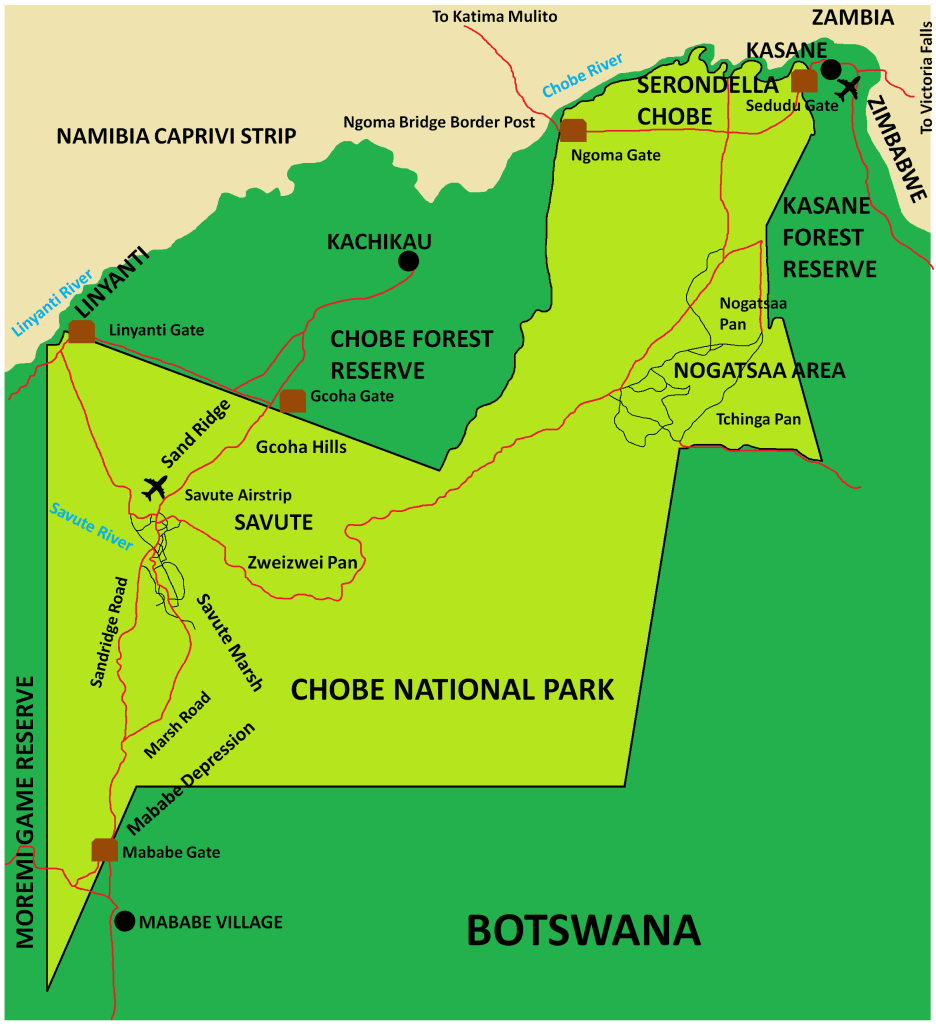
Recommended Chobe National Park Tours
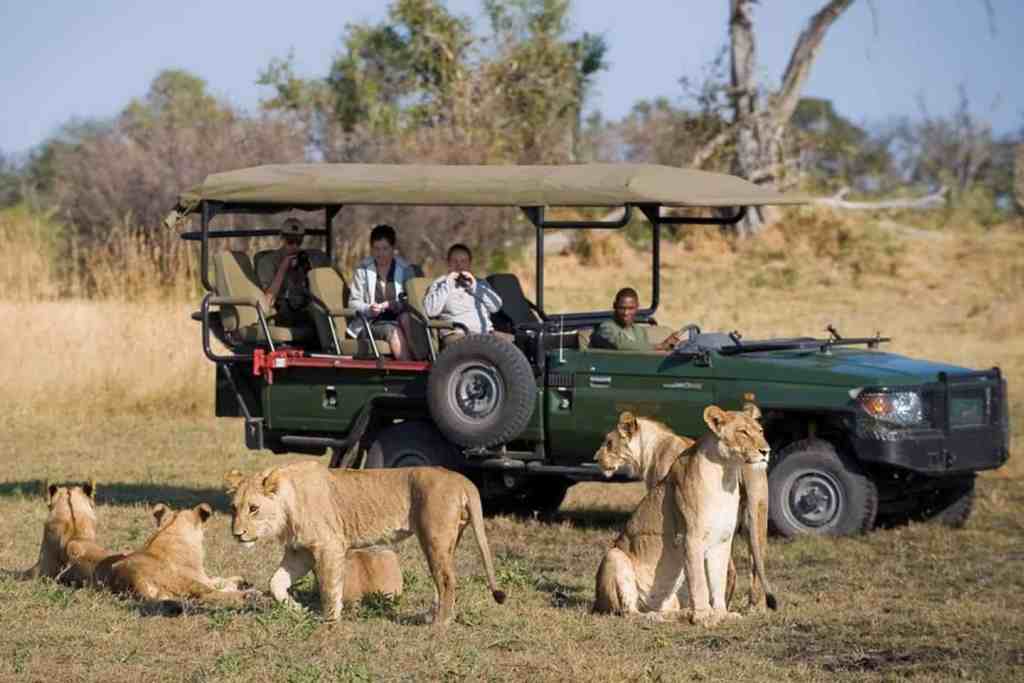
Africa Beast Safaris
If you are looking for a tour operator to use to see Chobe National Park in Botswana and will be flying into the Victoria Falls, Zimbabwe area, I would highly recommend using Africa Beast Safaris . Simon from Africa Beast Safaris is super passionate about what he does and takes extraordinary care of his customers. We used Africa Beast Safaris for our Chobe National Park tour and were thrilled with the level of service.
Other Highly Rated Tours
Chobe riverfront region.
If you are interested in booking a day tour of Chobe National Park, these tours primarily focus on the Chobe Riverfront area of Chobe National Park. This area of the park is near the town of Kasane, which is roughly an hour West of Victoria Falls, Zimbabwe. Many tour operators will facilitate travel from Victoria Falls to Chobe National Park for the day, including assistance in getting thru the border crossing to Botswana and back at the end of the tour. This makes day tours to Chobe National Park from Victoria Falls incredibly popular.
Most tours in the riverfront region include both land and boat safari. Depending on the tour operator you choose, this will include either a morning or afternoon boat cruise along the Chobe River, with a land safari the other half of the day and lunch in between. You will typically see large numbers of elephants, antelope, buffalo, and other grazing animals along the edge of the Chobe River and on the island between Botswana and Namibia. There is also a high concentration of crocodiles and hippos in the river, so they are frequently spotted on boat cruises as well.
Depending on when you visit, it isn’t uncommon to spot giraffes, elephants, antelope, and even lions and leopards on land safaris in the area. However, your chances of spotting wildlife from land in this region greatly increase when you visit during the dry season.
Linyanti Region
If you have more time to explore Chobe National Park and would like to maximize your chances of spotting predators, then one region of the park you might consider visiting is the Linyanti Region. Situated to the North of Savute in the corner of the park, the Linyanti Swamp is one of the prettiest areas of Chobe National Park. It is characterized by papyrus-lined waterways, vast reed banks, and beautiful riverine forests. In many ways, the Linyanti Swamp resembles the Okavango Delta in its beauty and diversity of wildlife.
Speaking of wildlife, the Linyanti Region of Chobe National Park is renowned for its large concentrations of elephants, lions, hippos, sable, and even the rare African-painted dogs. The peak season for wildlife viewing in the region is during the dry winter months when wildlife concentrates near the Linyanti River for water.
In addition to land safaris in 4×4 vehicles, the area is also popular for bird walks and canoeing in the large lagoons and waterways.
Savute Region
If there is one thing above all else that attracts wildlife enthusiasts to Botswana, it is the completely wild and remote viewing opportunities that it affords. When it comes to being wild and remote, few places in Botswana are more of than the Savute region of Chobe National Park. The region stretches from the park’s northern boundaries to the Linyanti River and is characterized mostly by its mysterious Savute Channel. While dry and arid for almost 30 years, it is now flowing with water again. This has attracted animals from far and wide to the lush marsh of this wilderness haven.
Above all else, the Savute Region of Chobe National Park is known for its predators. There are large prides of lions that are renowned for taking down elephants that live in the region, as well as an abundance of spotted hyenas. These apex predators hunt the large herds of buffalo, zebra, and elephants that live in the region, which makes Savute one of the best places in all of Africa to see predators in action.
If you would like to plan a safari in Savute, you will need to plan to spend a considerable amount of time in the park because of the region’s remoteness. Most tour operators will coordinate a flight into the Savute airstrip on a small plane, which can make the tours a bit more expensive. However, when you see the rugged wildness of Savute, I am sure you will agree that the extra time and money are worth it.
Ngwenzumba Pans region
The final region where you can take a Chobe National Park safari is the unique Ngwenzumba Pans region. Located about 70km (43.5 miles) south of the Chobe River, this area is characterized by a complex set of clay pans that are surrounded by grassland plains, mopane forests, and combretum thickets. With over a dozen distinct pans that collect water when it rains, the Ngwenzumba Pans region of Chobe National Park becomes an attractive area for animals when the rainy season.
This makes the region a great area to go on safari during the wet season when animals tend to stay away from the permanent water sources of the Linyanti and Chobe rivers. Even during the dry season, the water pumps that provide water to the man-made watering holes in the area ensure that there is wildlife in the area for visitors to see.
While this area of the park isn’t nearly as popular with visitors as the other regions, it does offer a unique experience for visitors who have been on safari in Botswana before and are looking for something different may crave. There aren’t a lot of tours that focus on this area of the park, so your best bet for going on safari in the Ngwenzumba Pans region of Chobe National Park is to book accommodation at one of the area’s nice lodges.
Best Times to Visit Chobe National Park
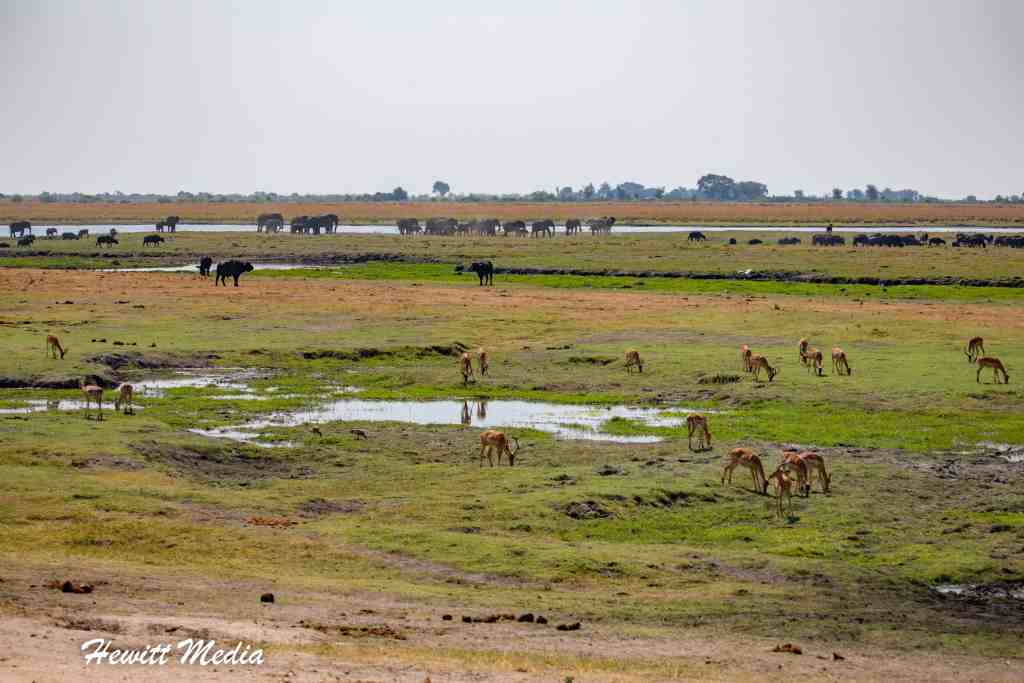
Because the river runs through the park, Chobe National Park is one of the parks in Africa where you have an excellent chance of spotting wildlife no matter what time of year you visit. However, that doesn’t mean that some parts of the year aren’t better than others. If you are in the planning phase for your Chobe National Park safari and are trying to decide what time of year it would be best to visit, I have included a wealth of information for you to review below so that you can make an informed decision.

Average Temperature (℉) by Month
One factor that you will definitely want to consider when deciding what time of year to visit Botswana to go on a Chobe National Park safari is the average temperature. During September through November, the high temperatures can get quite hot. Typically, you will go on safari in the mornings and evenings, so that you can avoid being in the sun during the hottest time of the day. That said, it can still be quite hot while on safari and if you don’t do well in very hot temperatures, you should probably avoid these months.
On the other hand, the average low temps during May through August can be quite chilly. They use open safari vehicles in Botswana, so you will want to prepare yourself for chilly morning game drives if you decide to visit during these months of the year. For more information on what types of temperatures to expect on your Chobe National Park safari, please refer to the chart of average temperatures I provided for you to review below.
Average Precipitation (Inches) by Month
Arguably the most important factor that you will want to consider when deciding what time of year to visit Botswana for your Chobe National Park safari is the amount of precipitation that the area is getting. Not only can a lot of rain put a hamper on your daily safari plans, but an abundant amount of rain can also greatly affect the likelihood that you will see animals. During the dry months of April through October, Chobe National Park gets very little water. As the area dries out, leaves fall, and the vegetation begins to dry out as well. This makes it much easier to spot stealthy animals like the leopard.
Not only that but the amount of water available in the park begins to decline as the weather dries out as well. This means that more and more animals will need to visit the Chobe River and other permanent water sources to drink during the end of the dry season. This makes finding the wildlife much more predictable than it is during the wet, rainy season when water is plentiful. For more information on what levels of precipitation to expect on your Chobe National Park safari, please refer to the chart of average precipitation levels I provided for you to review below.
Best Months to Visit Chobe National Park
If you are starting to plan your Chobe National Park safari and would like to know which months are best for visiting the park, I have put together a chart below that outlines which months I think are the best for visiting Chobe. I have also detailed some of the pros and cons of visiting Chobe National Park during both the dry and wet seasons to assist you in determining which time of year would be best for your visit.
Dry Season (April to October)
- There are a lot of sunny days and very little rain.
- Boat safaris are incredible as animals congregate along the riverfront.
- You can capture some spectacular sunsets on the river.
- The riverfront can get very busy during the peak months of July to October.
- It can be very dusty and dry during the peak of the dry season.
- The end of the dry season (September and October) can be very hot.
Wet Season (November to March)
- It is birthing season for grazing animals, so there are high concentrations of predators in the park.
- Very large concentrations of zebra and other wildlife migrate to the Savuti marsh.
- Migrating birds visit the park, so it is the best time of year in Chobe for bird watching.
- Less wildlife congregates at the riverfront because water is more plentiful in the park, so wildlife is less congregated.
- The temperatures get very hot.
- There are frequent afternoon showers, which can hamper safari plans.
Where to Stay in Chobe National Park

If you do not want to book a tour for your Chobe National Park safari, there are a few options that you can choose that may save you some money. You have the option of arranging your own transportation to the park and then booking your lodging or campsite accommodations separately.
Depending on the lodging that you choose, they may offer guided game drives for guests. If so, you can take advantage of their guided game drives to see the park. If you choose a campsite or a lodge that doesn’t offer guided game drives, you will need to self-drive to see the park.
If you are in the process of planning your Chobe National Park safari and are planning to book your accommodations outside of a tour, I have included some valuable information on self-drive safaris and some recommended campsites and lodges in this section for you to review.
Recommended Chobe Camps and Lodges
Chobe National Park is an incredibly large park and there are many wonderful lodges and campsites in and around the park to choose from. If you are choosing to book your own accommodations for your Chobe National Park safari adventure, I have included some of my recommendations for you to review below. These recommendations include campsites, lodges, and places with a mixture of both. I have also included some of my top picks for campsites and lodges at different price points so that you can choose the accommodations that are right for you and for your budget.
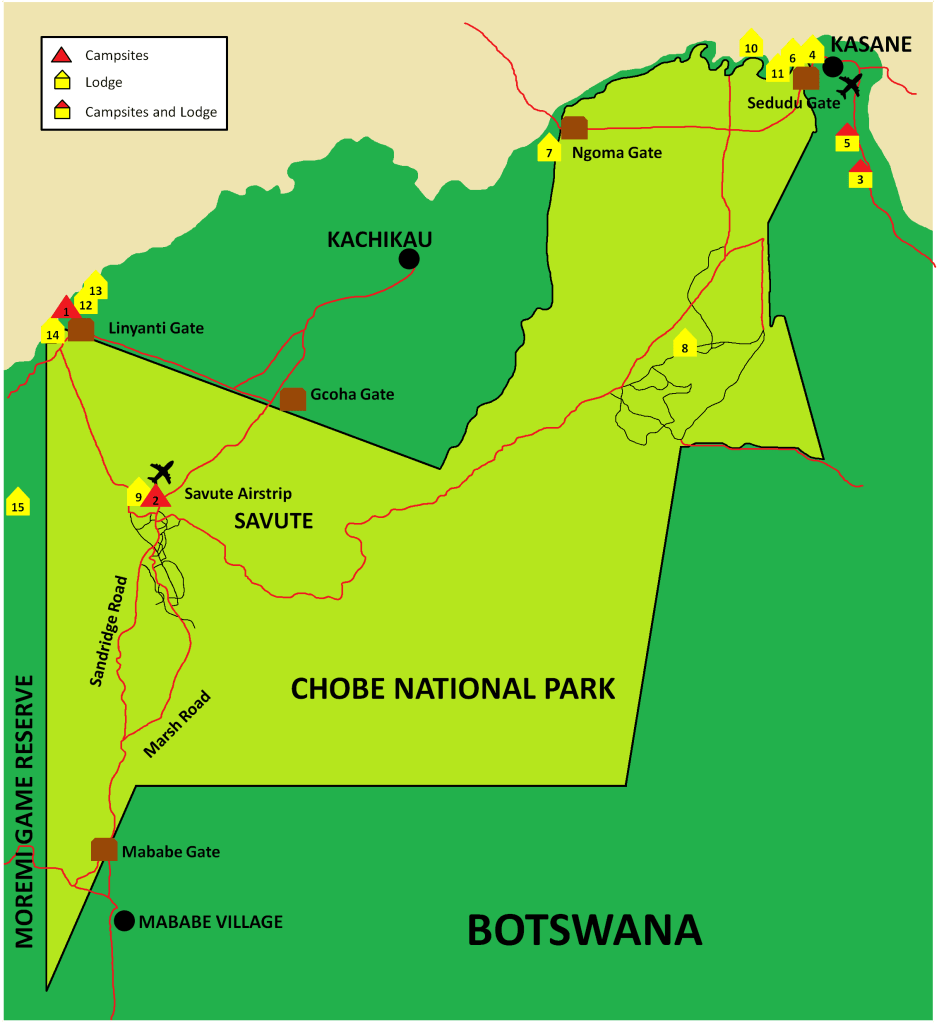
Tips and Guidelines for Self-Drive Safaris in Chobe
Doing a self-drive Chobe National Park safari has its advantages, as you can go your own pace and be on your own schedule, but it does require quite a bit of preparation and planning. If you are planning on doing a self-drive safari in Chobe National Park, there are several things that you should be aware of and prepare for before your trip. To assist you with this preparation, I have included some tips and guidelines for you to review below.
- Park rules require that you stay on the marked roads at all times. You cannot drive off-road in Chobe National Park.
- Target the dry season for your visit as there is far less risk of the roads being flooded.
- Make sure you have a 4×4 vehicle with high clearance. The roads can be rough in areas and you don’t want to get stuck.
- Let some air out of your tires while driving on the gravel and sand park roads. This will give you extra traction and help you prevent getting stuck. Just remember to re-inflate your tires before getting back on the paved roads.
- Bring a satellite phone with you in case of emergencies.
- Make sure you have plenty of food, water, and extra fuel with you.
- Download the Tracks4Africa app for navigation. It is the recommended app for safari navigation in Botswana.
- Be prepared to pay your park fees. They are paid at the park entrance gates and are valid from when you enter until the next day at 11AM. Foreigner adults cost 120Pula per person, per day and cars are 50Pula (about 10 pula is 1$USD).
- And finally, leave yourself plenty of time to get back to your lodge or campsite before dark.
Wildlife You May See in Chobe National Park
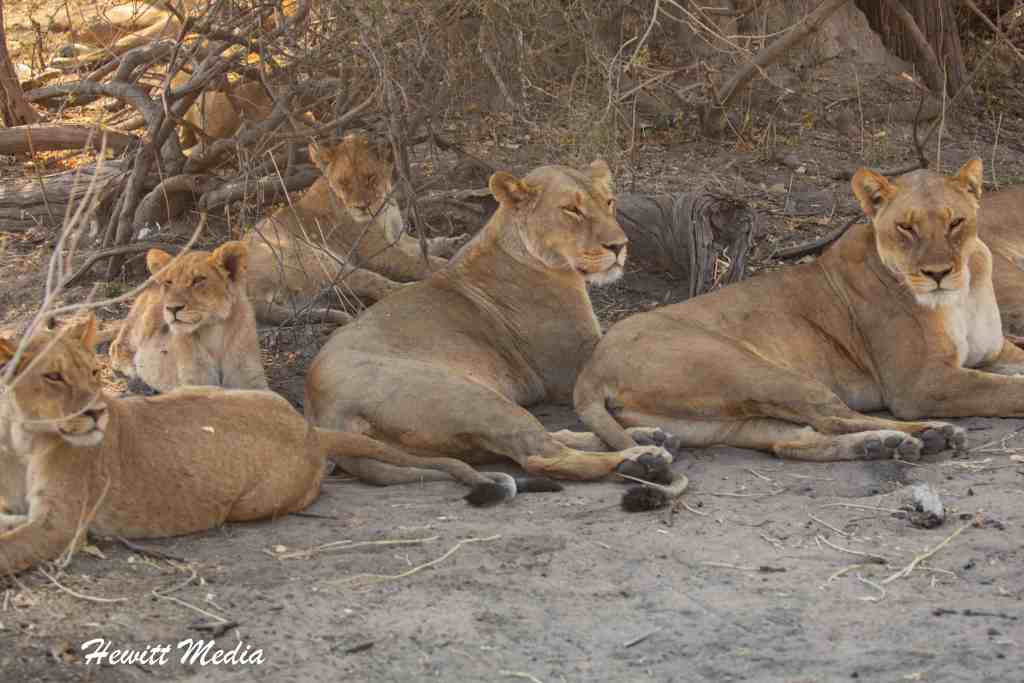
Because of the plentiful water supply to the park by the Chobe and Linyanti Rivers and the Savute Marsh, Chobe National Park in Botswana offers visitors an impressive wealth of wildlife to view. Both Elephants and Cape Buffalo are found along the Chobe River during the dry season and the plains zebra migration to the Savute region is impressive to behold. Along with zebra, it isn’t uncommon to see wildebeest, giraffe, puku, and impala, as well as smaller numbers of greater kudu and sable antelope within the park as well.
For visitors who long to see predators, the Linyanti and Savute regions of Chobe National Park offer some of the best lion-spotting opportunities in Africa, with large prides of lions inhabiting both areas. They often compete with a large density of spotted hyenas, leopards, and even occasional painted African dogs and cheetahs for food. Within the park’s rivers, it isn’t uncommon to see crocodiles sunning themselves on the banks and hippos in the water trying to escape the heat. With so much wildlife in the park, Chobe National Park continues to be one of the most popular safari destinations in Africa.
Chobe National Park Safari Tips
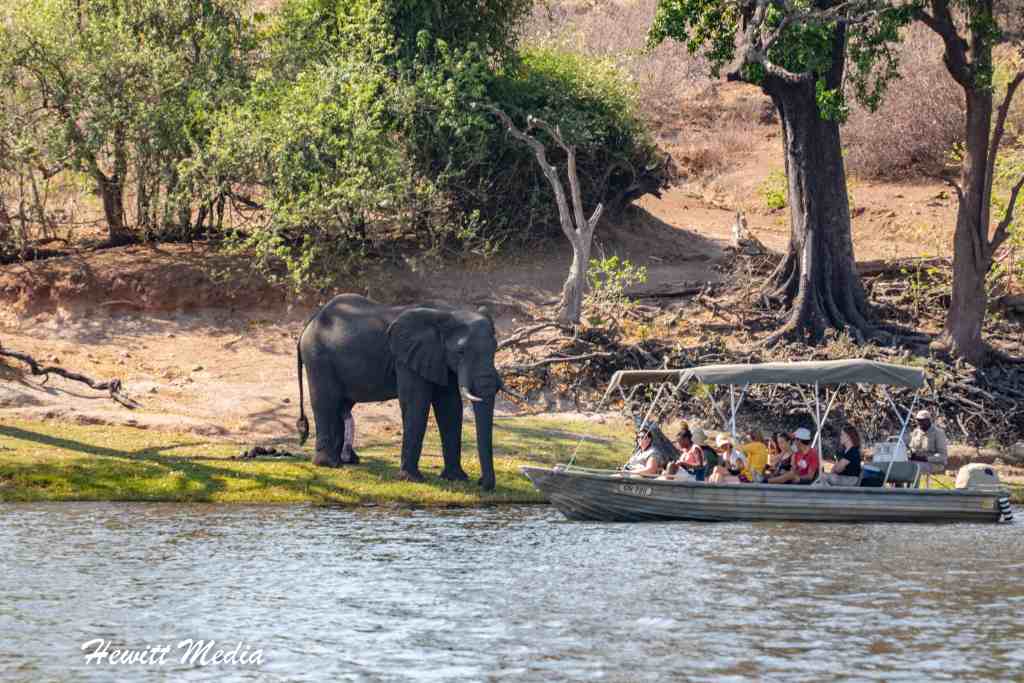
When you are on safari, especially while on a safari in Chobe National Park where you have an opportunity to see animals from land and the water, it is easy to get lost in the experience. Being on safari is such an amazing experience and you should enjoy every single second of it. However, if you aren’t careful, you might not get everything out of the experience that you could have.
To make sure that you get everything out of your Chobe National Park safari that you possibly can, I have provided some general safari tips below for you to review.
Be Patient and Open-Minded
When you are on safari, everything isn’t going to go according to plan. The weather, the animal’s behavior, and other factors are going to impact where you go and what you see. Chobe National Park provides some of the best wildlife viewing opportunities in Africa, but even in Chobe, you have to be ready to adjust your plans if necessary.
Safety First
It is really easy to get caught up in the safari experience and want to get the best pictures you possibly can. However, safety should always be the primary concern. To give you some help on how to remain safe while on safari in the Chobe National Park, I have outlined some general safety tips for you to review later in this guide.
Don’t Get Stuck Behind Your Camera
Everyone wants to get great pictures while on safari, and you should absolutely bring your camera and take a lot of pictures. However, if you spend your entire time in Chobe National Park looking through your camera, you are going to miss out on some of the experience. I would recommend setting your camera down every-once-in-a-while and just enjoy being in such an amazing place.
Ask Lots of Questions
Make sure you ask your safari guide a lot of questions while you are on safari in Chobe National Park. It is easy to get caught up in the moment and forget to ask which type of animal you are looking at or why they are doing what they are doing, but your safari guide is there to answer these questions for you. And believe me, they enjoy answering these questions. Don’t get home and regret not asking those questions.
Do the Land and Boat Safaris
Unlike many wildlife parks in Africa, Chobe National Park allows you the opportunity to see the wildlife from both a safari vehicle and from a boat on the Chobe River. Each of these safari experiences allows you to get different and unique looks at the wildlife. Make sure you leave yourself enough time to do a safari by land and boat or book a tour that offers both.
Give Yourself Plenty of Time
Chobe National Park is a very large park, with very distinct and unique environments. Most day trips will offer safaris in the Kasane area, which allows you to do a boat and land safari near the Chobe River.
However, if you want to experience some of the more wild and untamed parts of Chobe, I recommend spending multiple days in the park and exploring other parts of the park as well.
One of my favorite parts of the park is the Savuti area, which borders the Okavango Delta. This is where you will find the infamous elephant-hunting lion prides and see high concentrations of predators.
Chobe National Park Safari Safety Tips
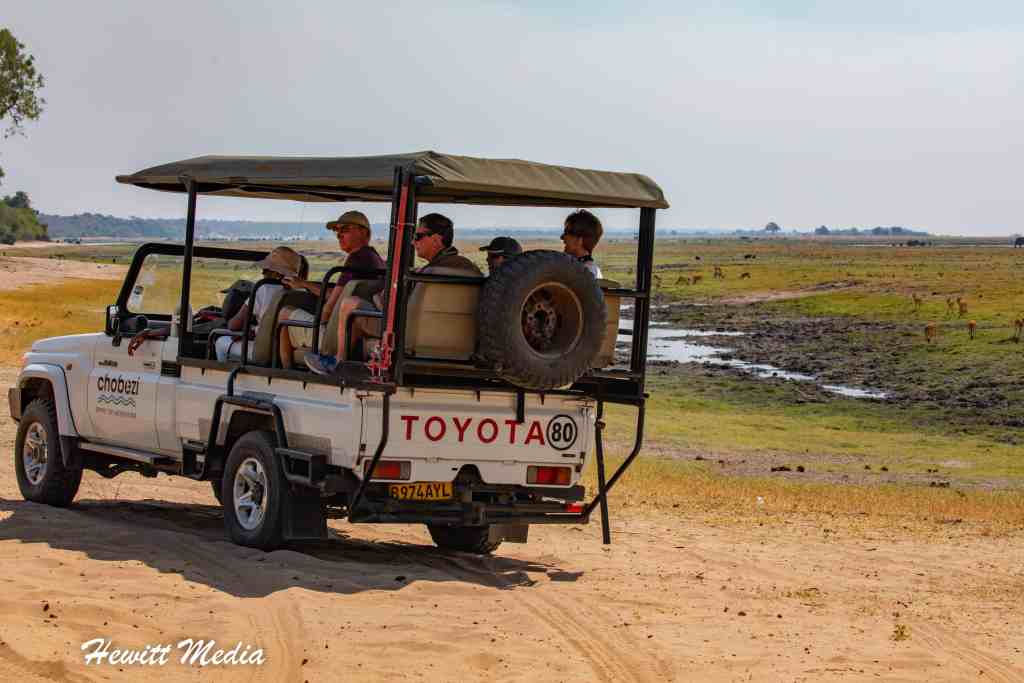
Being on Safari in Chobe National Park can be an amazing and exciting experience, but it can also be a very dangerous experience if you don’t follow the proper safety rules. To ensure that your safari experience is a memorable and safe one, I have outlined some general safari safety rules for you to review below.
Obey Your Safari Guides at All Times
The most important safari safety tip of all is to listen to your safari guide and obey your guides at all times. They are there to keep you safe, so let them.
Don’t Stick Anything Outside the Safari Vehicle
It is never a good idea to stick anything outside of a safari vehicle. Whether this be your arms, your feet, or your camera as you try to get a great picture, keep them inside the vehicle at all times.
Don’t Make Any Quick or Sudden Movements
When you are in the safari vehicle, the animals tend to think of the vehicle and everything associated with it as one homogeneous entity. However, if you make sudden and frantic movements, or do something else to make you stick out as a part of the vehicle, you may become an object of interest to them.
Never Get Out of the Safari Vehicle Unless Your Guide Says You Can
This point cannot be stressed strongly enough. Never, and I mean never, get out of your safari vehicle unless your safari guide explicitly instructs that it is safe.
Never Leave Your Tent or Lodge Room at Night
This is another point that I cannot emphasize strongly enough. You should never leave your tent or lodge room at night without a chaperone. The African bush can be a dangerous place, especially at night, so make sure you follow whichever procedures your safari guide gives you for getting assistance at night. If they don’t mention this, make sure you ask ahead of time.
Never, Ever Run When Confronted by an Animal
If you do find yourself outside of your vehicle and confronted by an animal (hopefully this never happens), then make sure that you stay as calm as possible, walk away slowly (never turning your back on the animal), and NEVER, EVER run away.
Never Swim in Lakes or Rivers
Unless you are explicitly told by your safari guide that the waters are free of hippos and crocodiles, you should never attempt to swim in a lake, river, or pond. Even then, I would think twice about doing it. Hippos kill more people in Africa than any other animal, and crocodiles are not far behind on the list, so you always have to be safe when even approaching bodies of water.
Never Stand Up on Safari Boats (Especially When Moving)
This tip should be very self-explanatory, but it is an important one so I will mention it anyways. When on a boat safari, never stand up in a moving boat. Falling into the water could lead to drowning or a wildlife attack. In addition to staying seated, do not lean out of the boat or touch the water. There are wild animals in the water that may see this as an opportunity to attack.
Chobe National Park Photo Gallery
I have been on safari in four different African countries, and Chobe is certainly one of my favorite spots. I was able to capture so many spectacular photographs during my Chobe National Park safari that I want to share with you, so I have created the Chobe safari picture gallery for you to view below. I hope you enjoy these images and that they inspire you to book your own adventure in Chobe National Park!
If you would like to view some more of my top Chobe National Park safari photos, as well as photos from some of my many other travel adventures, make sure you are following me on Instagram as well!
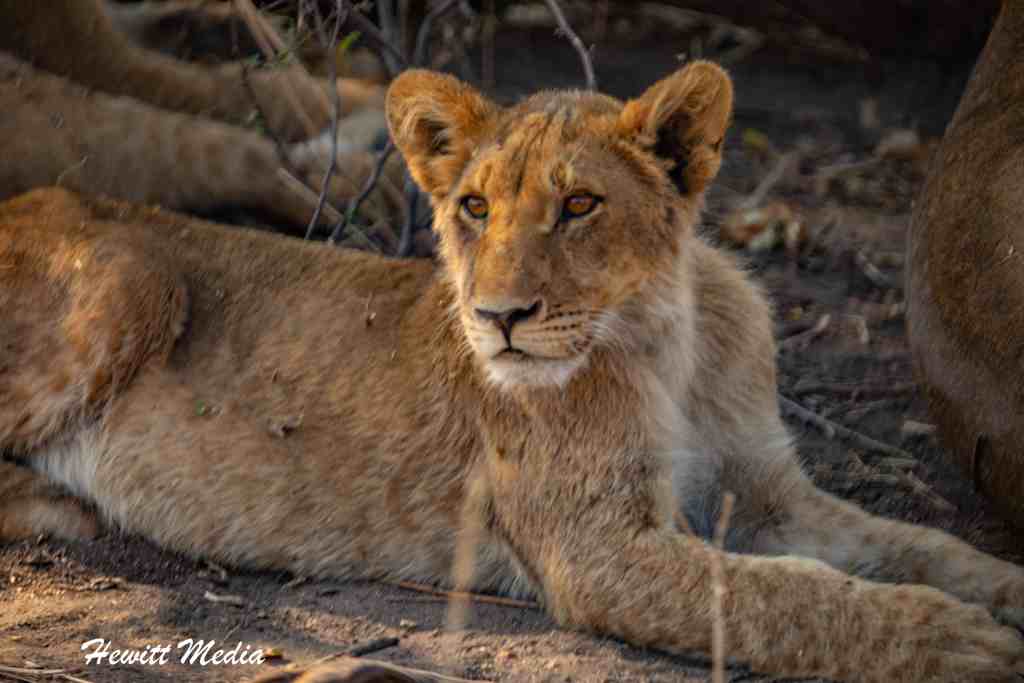
Don’t Forget to Subscribe to My Adventures!
Type your email…

Let Me Help You Save On Your Next Adventure!
‘start exploring today’ merchandise available now.
Published by Josh Hewitt
Avid traveler and photographer who loves to see new places, meet new people, and experience new things. There is so much this world can teach us, we just need to explore! View all posts by Josh Hewitt
Related Articles

Unforgettable Experiences: The Top 25 Things to Do in South Africa

How to Safely Take on a Multi-Day Road Trip

Unforgettable Adventures: Top 30 Things to Do in New Zealand
2 comments ›.
An amazing and thorough guide. Well done, Josh!
Thank you so very much!! That means a ton coming from you!
Discover endless entertainment with KheloYar, the go-to platform for online gaming enthusiasts. Offering a diverse selection of games, from fantasy…
Hi Michael. I would walk in with you wide angle on your camera and have your 100-500 in your bag.…
Heading to Peru in a week. I was going to take my wide angle plus 100-500 lens. Is there a…
Discover more from Wanderlust Travel & Photos
Subscribe now to keep reading and get access to the full archive.
Continue reading

Subscribe To My Adventures!
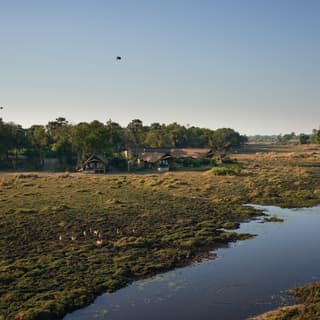
Savute Elephant Lodge
A timeless explorer’s lodge that beats with the pulse of wild Africa
Beside the mysterious savute channel, this tented oasis is the perfect base to discover the wonders of chobe national park.
Breathlessly captivating, this corner of Botswana has long been associated with the world’s greatest explorers, including David Livingstone. Follow in their footsteps at Savute Elephant Lodge. Head out to our unique viewing hide at dusk or dawn, overlooking the watering hole, and see elephants, hyenas and cheetahs in their element. Then find a serene welcome back at the lodge. The contemporary interiors reflects the earthy tones of the wilderness, while eco-friendly design features keep you in harmony with the stunning landscape. Savute Elephant Lodge is now open.

Ways to Book
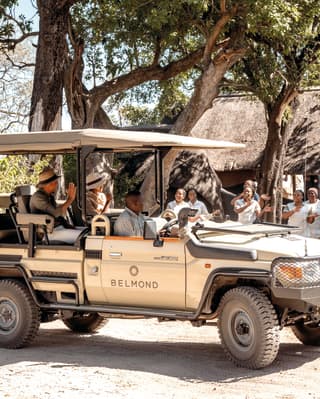
Eagle Island Lodge
Make a direct booking for our experiential lodge in the Okavango Delta
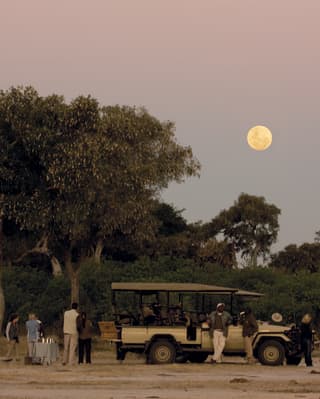
Both Belmond lodges
Allow us to arrange your booking for both our safari lodges in Botswana
Thank you for your interest in Belmond.
Prefer to talk? You can call us on +27 (0)21 483 1600
Submitting......
For further information about how we use your data, please see our privacy policy .
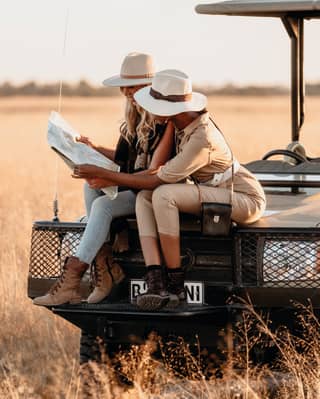
Explore an itinerary
Combine your Belmond safari experience with other spots around Southern Africa
Accommodation

All Inclusive
Raised on wooden platforms, each tented room affords breathtaking vistas across the shifting ecosystem. An outdoor lounge offers post-safari relaxation as giant bullfrogs croak within earshot. Or recline deck-side on your lounger; big game frequently mingle in full view at the adjacent watering hole.
Inside, luxurious interiors feature a netted four-poster bed and lavish bathroom. A fully-stocked minibar and discreet air conditioning refresh and revive.
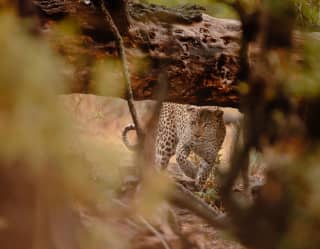
Our Support of the Wild Entrust Africa Conservation Project
We’ve joined forces with Wild Entrust Africa to help mitigate the lethal conflict between predators and people in Northern Botswana. With the help of our partnership, six camera traps will assist the project’s ground-breaking scent-mark research, which keeps predators away from livestock and safely inside protected wildlife areas.
Our guests can visit the Wild Dog Research camp and listen to a Botswana Predator Conservation Programme researcher talk about their fascinating and invaluable work.
Learn more about Wild Trust
Contact us to arrange your visit

The History
When David Livingstone explored the area in 1851 he described the Savute as a marsh. Since then, the Channel alternates between flowing free and drying up. This part of the National Park has been prohibited for humans for decades—save for the area around our lodge. The position is unrivalled; nature’s drama played out on your own private stage.
Wining and Dining
View all dining options
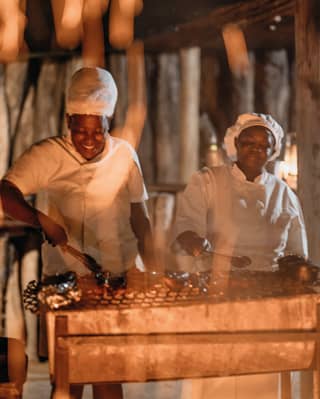
The Savute Boma
Let the stars guide your way into the bush. Recline around the campfire at our own enchanting Boma, a unique dining experience that combines African delicacies with soulful rhythms—all played out under an inky night sky.
Our duo of unforgettable adventures
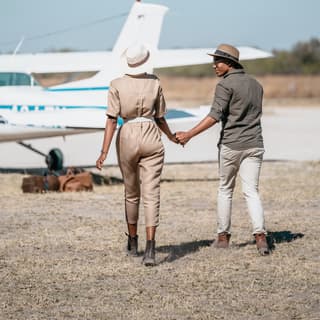
In the heart of UNESCO wetlands, this newly renovated lodge offers boutique tents and thrilling helicopter safaris.
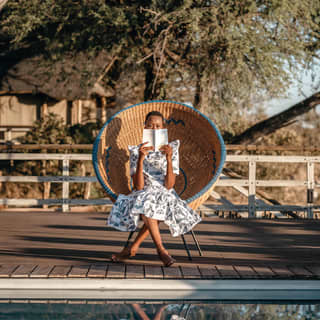
Unpredictable wet and dry cycles create a dynamic landscape alive with a vibrant, raw energy—and wildlife to match.
Sensory journeys inspired by nature
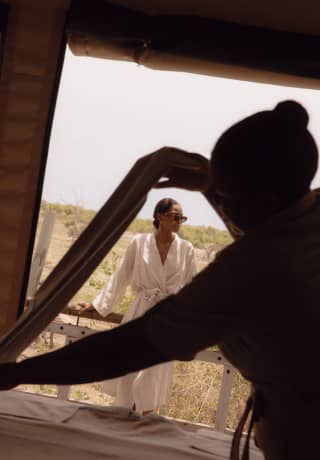
African-inspired botanicals
Unwind and let time stand still as you find true bliss at our spa. Located in a peaceful corner at the edge of the lodge, it’s a serene space of sage-green hues and handcrafted details.
Indulge with a selection of massages, facials, body rituals, manicures and pedicures. We proudly use South African brand TheraNaka. Their organic, sustainably sourced ingredients include marula, immune-boosting rooibos and rehydrating Kalahari melon.
Our Africa Itineraries
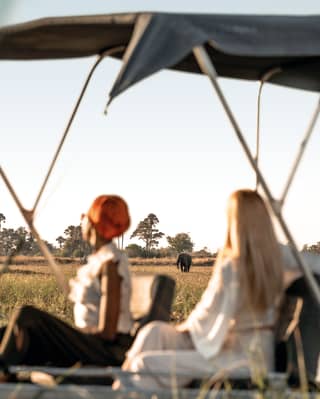
Grand Tour of Botswana
4 or 6 nights Embark on the ultimate Belmond adventure in Botswana with a stay at our two uniquely enchanting safari lodges.
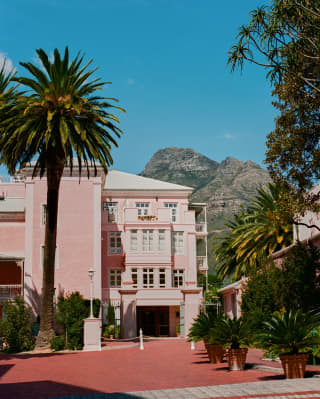
Splendours of Africa
11 nights Experience the splendours of Africa; a luxurious stay at Mount Nelson, a journey on the legendary Rovos Rail, and the untamed romance of Belmond Safaris.
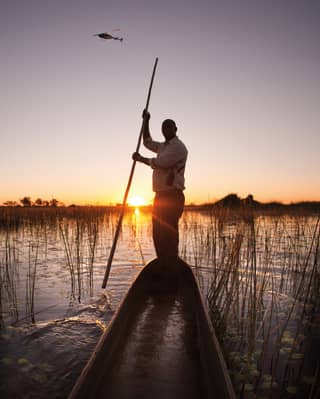
Two Worlds Collide
11 nights Embark on a journey that contrasts the dramatic, beautiful deserts of Namibia with the lush bush-life of Belmond Safaris in Botswana.

Best of Both
7 nights Marvel at the teeming wildlife and majestic scenery of Botswana on a Belmond Safari before being captured by the spellbinding drama of the Victoria Falls.
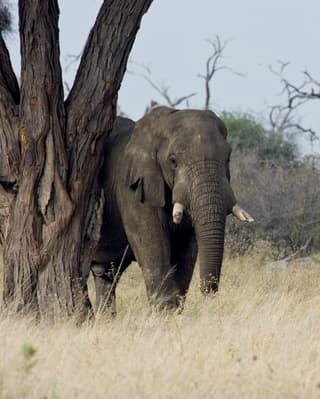
Botswana At Its Best
6 nights Experience extreme diversity as you explore the waterways of the Delta at Eagle Island Lodge, and listen to the rumble of elephants through Savute Elephant Lodge.
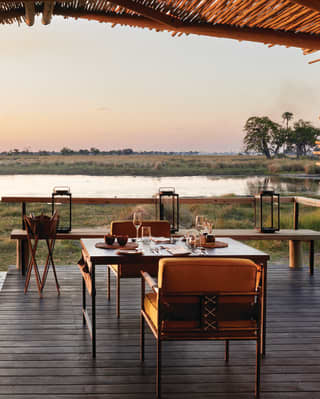
Romancing the Senses
7 nights Combine an action-packed stay at a Belmond safari lodge in Botswana with an indulgent beach break on a journey perfect for honeymooners or families.
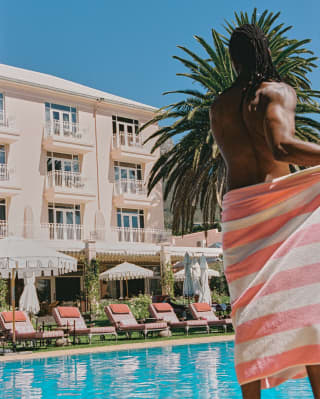
Journey to the Heart of Africa
10 nights Discover the joie de vivre of Johannesburg. Experience the thrills of Belmond Safaris. Be part of the vibrant, cosmopolitan city of Cape Town at Mount Nelson.

Safari Trilogy
10 nights Stay at any Belmond Safari and explore the Okavango Delta in Botswana, a vibrant wetland and UNESCO World Heritage Site. Witness the majestic feline colonies of the Sabi Sand, and learn about rhino conservation among the rugged landscape of the Kalahari Desert.

Whales & Wine
7 nights After a luxury stay at Mount Nelson, sample award-winning vintages in the famous Winelands region. Then head to coastal Hermanus, where the seasonal whales make their annual visit.

The complete guide to a safari in Chobe National park in Botswana
Panning to go for a safari in Chobe National park in Botswana? Here is a comprehensive guide to Chobe national park that will give you all the information to plan your safari.
Located in the North of Botswana, Chobe was declared a national park in 1967 and it spans an area of 11,700 square kilometers making it the third-largest national park in Botswana.
The national park whose main source of water for the park’s wildlife is the Chobe river is divided into four distinct regions; Chobe riverfront (which has the largest concentration of wildlife in the park), Nogatsaa, Savuti, and Linyanti.
Chobe national park Botswana consists of the largest population of African elephants, big herds of buffalos, and also offers a great chance of spotting the big five making it the most visited park in Botswana.
It is indeed undeniably true that Chobe national park is one of the best places to visit in Botswana to enjoy wildlife at its best.
A safari in Chobe National park is sure to provide its visitors with amazing vegetation, pans, wildlife- literally something new every day.
Be it seeing hyenas, elephants, or even hippos at your campsite or hearing roars of the lions from a distance at night, a Chobe National park safari will blow your mind away.
The Ultimate Guide to a safari in Chobe National park
My experience at chobe national park.
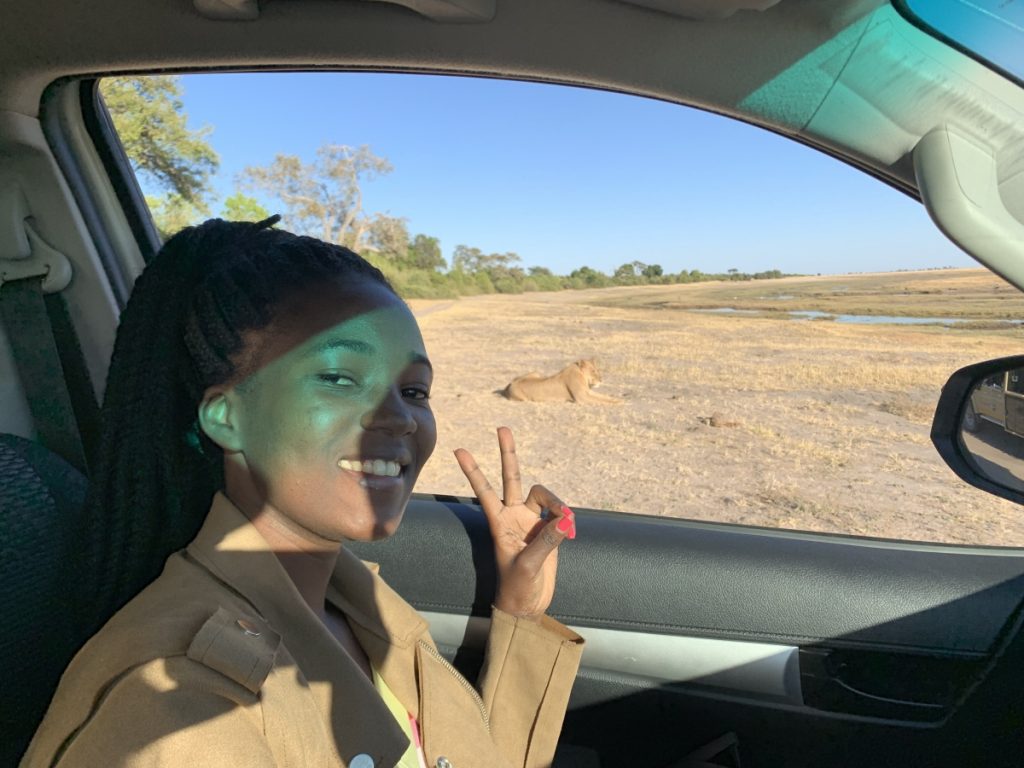
Visiting Chobe national park had been a dream of mine having read so much about it and it being one of the best National parks in Africa.
Even though I did not spot all the “Big Five” animals, I was not let down by Chobe as my expectations were high.
I was able to see a lion sitting in the grass just a few meters away from me at the Chobe riverfront, something I had never experienced in my life. If this is not what they call impressive, then I don’t know what to call it.
As my excitement for wildlife and spotting animals grew, I became obsessed with seeing a leopard or even a cheetah.
I remember at one point, I saw a zebra from a distance and I immediately thought it was a cheetah.
I screamed in excitement saying “omg, omg, there is a cheetah”. Everyone else was wondering where it was since they were only seeing a zebra and not a cheetah.
As we approached it nearer, I realized it was just a zebra. I was made fun of the entire game drive for hallucinating. What can I say, I just wanted to see a cheetah.
But all in all, the safari in Chobe National park was an incredible experience for me that I consider myself lucky to have been to one of the best places for a safari in Africa and one considered the best among Botswana national parks.
Related post: Things to know before going on an African safari
Chobe National park animals and wildlife

Although the wildlife at all 4 distinct parts of the park may not differ, there are greater chances of spotting lions and Cheetahs at the Chobe riverfront.
Chobe is home to approximately 120,000 elephants making it the African country with the most number of Elephants. Often times, you’ll also see herds of buffalos, groups of monkeys playing around the riverfront.
Whether it is Zebras, Giraffes, Red Lechwe, Hippos, crocodiles sunbathing on the river bank or the rare rock monitor, Chobe’s wildlife never disappoints.
Aside from the animals, beautiful common and rare birds also span this amazing park bringing satisfaction to the bird lovers. Also, the vegetation and landscape leave visitors in awe and in appreciation of Chobe National park wildlife.
For the 4 days, I was in the park, I was able to see a pride of lions just a few meters away from the car. However much I would have loved to see Leopards and Cheetahs, I was not lucky enough to spot any.
But some of the wild animals and birds I was lucky to see include, a huge number of Wildebeest, Impalas everywhere, almost the entire park, big and impressive herds of Elephants including some that were swimming in the Chobe River. Spotting giraffes was the order of the day, water back, hippos, and so many others.

With more than 450 bird species recorded in Chobe national park, it is close to impossible to see all of them. But if you’re keen enough, you’ll be able to see some of them.
I was able to spot some like the Burchell’s Coucal, Lilac-breasted Roller, Little Bee-eater, yellow-billed stork, Marabou stock, Grey Heron and so many others.
And if you want to make spotting animals and birds fun, buy the Chobe national park tourist map that has a checklist of all animals, reptiles, and birds that are in the park.
For whichever animal/bird you spot, just check it on the checklist. This checklist is not only fun but it also gives you an idea of what to look out for within the park. In the same way, it helps you learn the name of the animal/bird you see and have no idea what it is.
The Chobe national park tourist map is not just a map but offers important information about the park and the best routes to take.
Pro tip* I highly recommend buying the Chobe national park tourist map plus the Botswana lonely planet guide book . The Botswana Lonely Planet guide book provides insightful information while the map showcases all the loops that you can take mapped out well with coordinates and estimated kilometers. You can buy the Chobe tourist map from any entry point to the park or at wildlife offices. And for the Botswana Lonely Planet guide book (which was extremely useful to me), you can buy it on Amazon.

Malaria at Chobe National park
Many people are always concerned about Malaria before they visit Chobe or even Botswana as a whole.
However, during the dry seasons, cases of malaria are not common but if you’re not sure about how safe it can be, buy an insect repellant before you visit.
During and after my visit, I did not have of Malaria or any symptoms and I also became confident about it when I asked the locals and they said that the country had done a great job in trying to kick Malaria out.
Though I didn’t have an insect repellant, I always zipped the tent at night not to give any chance of mosquitos to enter the tent. But if you want to have a 100% guarantee that you will be free from malaria, you can buy this mosquito repellant.
Related post: Things to know before traveling to Africa
When is the best time to visit Chobe National Park
The best time to visit Chobe National park is between May to October when the weather is dry which is also Botswana’s winter period.
During this period, the days are sunny but the nights can get really cold. Also, the rains have ended causing most pans to dry out.
Even though the water levels of the Chobe river reduce, it becomes almost the only source of water for the wildlife in the park.
This forces most animals to concentrate around the riverfront for water making it the best time to see a large number of animals in one place.
On top of that, Botswana having sandy roads doesn’t make it ideal to visit Chobe national park during the rainy season that spans from December to March.
Actually, some campsites even shut down as some roads become impassable. So if you don’t want to get stuck in the sandy roads of Botswana, May to October would be the best time to visit Chobe National park and Botswana in general as the roads are easily passable with a safari car or even the 4×4 Self-drive cars.
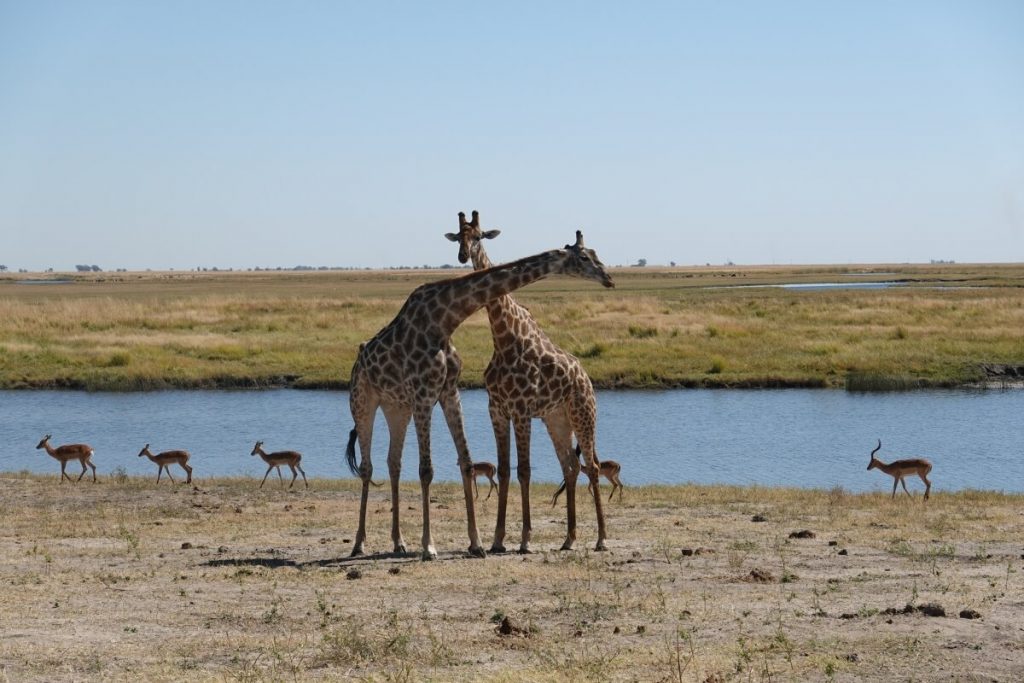
How to get to Chobe National park
There are different entry points to the park and where you enter from depends on where you’re coming from.
The main entrance is the Sedudu gate in the north-east of the park, perfect for visitors coming from Kasane. If you’re coming from Namibia, the Ngoma gate will be the ideal entry point to pay your park fees.
For visitors coming from Maun, the southern entrance at Mababe gate would be ideal. This is also the same route that connects to the Moremi Game reserve.
Since we were coming from Maun, we used the Southern gate of Mababe to connect to Savuti camp, which is next to Savuti Marsh which also has a high concentration of wildlife within the park.
If you’re on a Chobe National park self-drive safari, you can opt for any of those gates or book a tour that comes with a transfer to the park.
Related post: The complete 3 weeks self drive Botswana Itinerary
Chobe National Park entrance fees
To enter the park, you’ll need an entry permit which can be obtained at any of the gates mentioned above.
The entry fees are the same at all gates of the park and you’ll also need to pay for the vehicle.
- Non -residents Adults (18 years and above) – 120 BWP (Botswana Pula) per day.
- Residents Adults (18 years and above) – 10 BWP
- Non-residents children (8-17 years)- 60 BWP per day and children below 8 years are free to enter.
- Residents children (8-17 years) – 5 BWP per day and children below 8 years are free to enter.
- 50 BWP for each non- Botswana vehicle per day.
Pro tip* The entry fees can be paid both by cash or by card
Disclaimer* Please note that the prices discussed were accurate by the time this post was written but are subject to change at any time without any warning.
Chobe national park accommodation
While in Chobe national park, you can choose to go camping which is the most fun way obviously but if you still want to experience a great Chobe national park safari while sleeping luxuriously and comfortably, then you can opt for one of the many lodges in Chobe national park.
Below are the details of the accommodation in Chobe national park.
Chobe National park camping
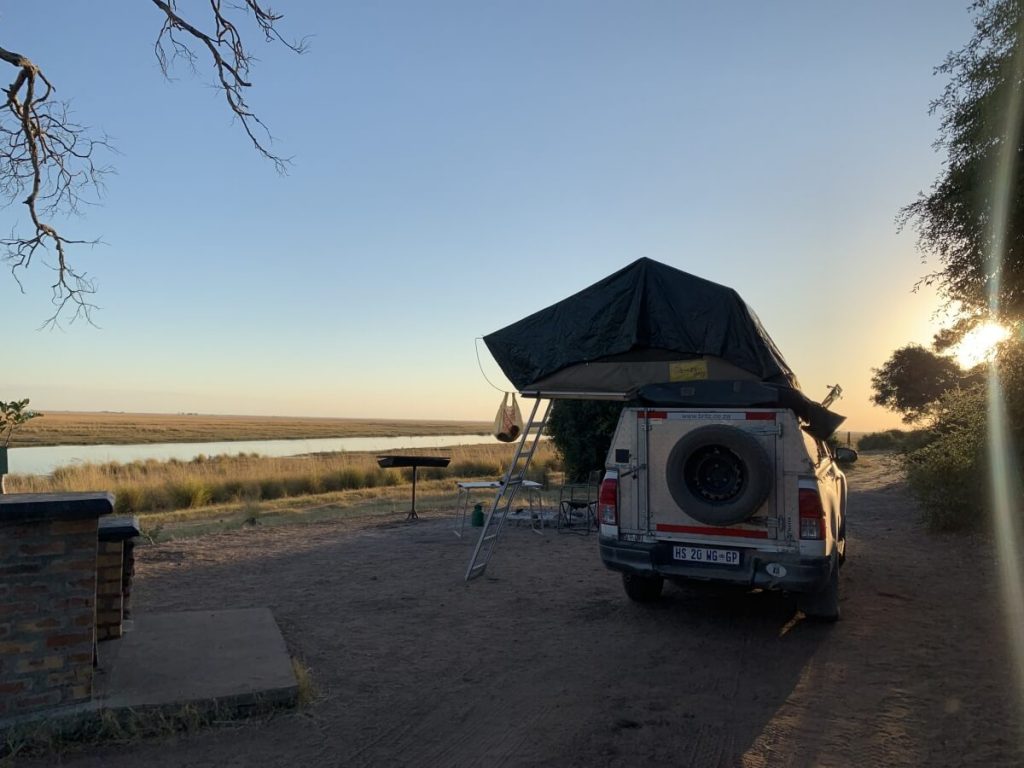
Chobe national park has designated campsites providing a camping experience like no other. All campsites are well maintained with Ablution blocks that come with clean showers with both hot and cold water.
Campsites also have a scullery section to do your dishes from. The ablutions are clean, with flush toilets and toilet paper is also provided.
In the recent past years, all the campsites within the pack were privatized which means that you don’t have to go to the wildlife offices to make bookings but rather book with private companies in charge.
Even though it is advised to book way in advance, it means you must have specific dates already chosen out. You call also directly call the companies for bookings.
Although booking by a phone call can be better, we sometimes found that if you’re a private visitor, you’ll be told that the campsite is full even when it’s not true.
I still find that troubling as to why they would say that on phone but if you insist and just show up at the campsite, you’ll be surprised to find a number of free campsites.
The campsite you choose depends on the route you’ll be taking whether the Savuti Marsh area, Linyanti marsh, Nogatsa or Serondela area which is also known as the Chobe riverfront.
For our safari, we chose to go to Savuti Marsh Area and the Chobe Riverfront and below are the campsites I camped at.
Related post: Safest countries to visit in Africa
Savuti campsite

Savuti campsite is well located in the heart of Chobe national park just next to the Savuti Marsh which has a large concentration of wildlife.
Savuti has 14 unfenced campsites, an ablution block surrounded by an elephant protective wall to keep elephants out of the shower- something that used to be an issue in the past.
The ablutions are fitted with flush toilets, electricity, hot and cold showers powered by solar panels, and are always kept clean.
The campsites at Savuti have no electricity and have huge volumes of sand just like most areas of the park. The campsites also have designated fire pits where visitors can enjoy a nice campfire.
While at the campsite, be sure not to leave food unattended to and not to go far away from the camping grounds at night because wild animals are always nearby.
At our campsite, we were able to see Elephants, Impalas, wild dogs running to go for a hunt, an experience that was both exciting and a bit scary.
Savuti campsite prices: 50$ per person per night for Non residents.
To make a reservation at Savuti, contact SKL Group of companies which not only manages Savuti campsite but also Khwai and Linyanti. Call them at +267 6865365/6 or email at [email protected]
Looking for where to stay in Gaborone, Botswana? Here is my honest review of Masa square hotel
Ihaha campsite

If you’re to visit the Chobe riverfront, of which you should, sleep at Ihaha campsite.
Ihaha campsite which has 10 designated campsites is located at the Chobe riverfront offering breathtaking views of the hippos cooling off in the river making it one of the best campsites in Chobe.
Even though the Ablutions are a bit old and not well maintained, they still have flush toilets, hot and cold water but unfortunately no electricity in the ablutions.
Just like the Savuti campsite, Ihaha does not have electricity at the camping grounds but the clean grounds with no masses of sand makes up for it.
All campsites are just next to the river which makes the camping grounds also home to wildlife, meaning at any time, you can spot animals at the campsite and this is the exact reason why the management advices visitors not to move away from their camping grounds at night. Even going to the ablutions when it gets dark is advised against.
To make reservations at Ihaha campsite, you can call management at +267 6861448. Although this option might work out for you in my experience, it didn’t.
When we called management to make a reservation, we were told that it was fully booked for the days we wanted but that wasn’t going to make us cancel our programs because we were on a fixed itinerary.
So what we did was to taste our chances and just show up. To our surprise, we reached and over 5 campsites were free yet we had called earlier and they said they were fully booked.
We asked one of the staff and he said, the phone operators normally say that when they hear that you’re a private individual instead of a tour company representative. That is something that still beats my understanding but hey, we got where to stay for 2 nights.
Ihaha campsite prices: 260 BWP per person per night for non-residents.
Related post: Things to know about camping in Botswana
Chobe national park lodges
If camping is not for you but still want to explore the wildlife in Chobe national park, then you can take advantage of the lodges within the park.
These luxurious lodges are on the high end of the budget but offer comfort and a deluxe experience within the park.
Some of the famous lodges in Chobe National park you can stay at include;
- Ngoma Safari Lodge . You can book your stay at Ngoma Safari Lodge from here
- Chobe Game Lodge.
You can also opt for the private tented camps that offer a feeling of modern and luxurious camping. These can be booked by calling the management of the campsite or from the campsites themselves.
Activities at Chobe national park: Things to do

Multiple game drives
A game drive is definitely the major activity to do within the park and that’s the main reason people travel from miles away to experience Africa’s best safari destination.
You can either enjoy a game drive by booking a guided game safari or opt for a self-drive in your 4×4 car.
As a self-driver, you might not be aware of the best loops to take at specific times but the staff at the different campsites are always willing to tell you where to go and at what time to maximize the chances of seeing the Chobe National park animals.
If you prefer booking a guided game drive in the park with an experienced tour guide, you can book a tour from here .
Pro tip* The best time to go for a game drive in Chobe National park or any safari for that matter is either early in the morning or late in the evening but even if you do an afternoon game drive, you’ll be able to see some animals.
Chobe river cruise
The other activity to do in Chobe National park is to go for a cruise along the Chobe River. You’ll need to book a cruise with a tour company.
The cruise offers an ideal opportunity to see animals up close and those that might have come to drink water at the river banks.
This is the Chobe river cruise that I personally recommend to get the most of your trip as it comes with knowledgeable tour guides with lots of information to provide.
More Chobe National park tours you can opt for
What to take for a game drive in Chobe National park
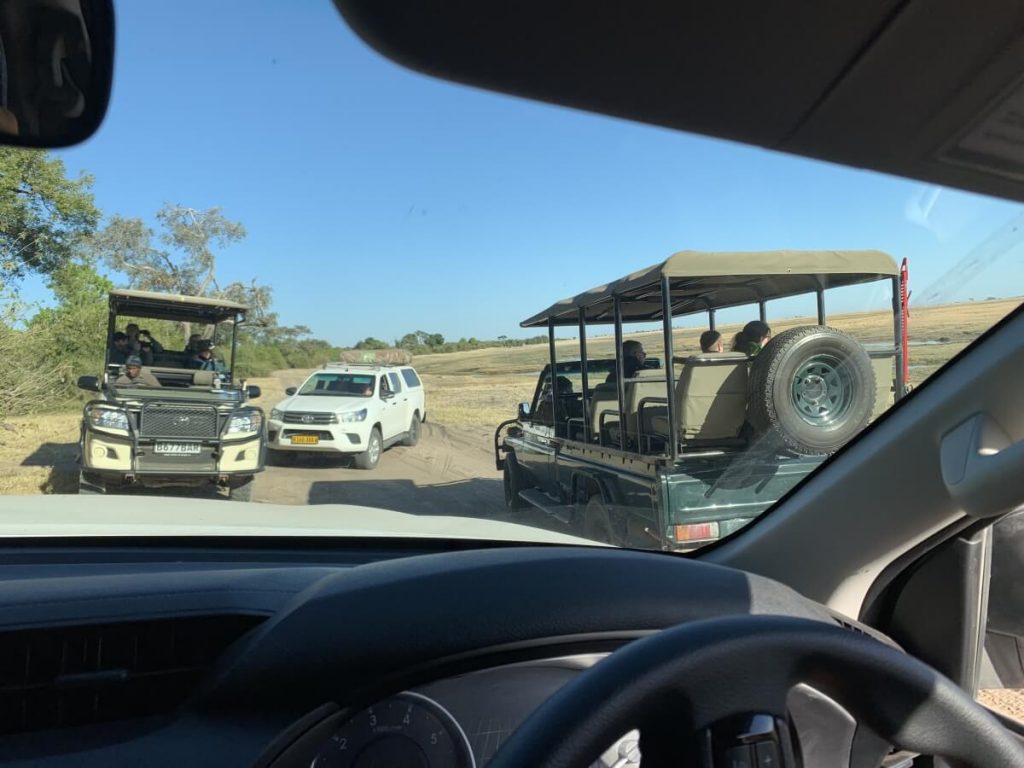
What to take for a safari in Chobe National park doesn’t differ much from what you’ll need for all African safaris but here is what shouldn’t miss.
- A good camera: It will be an injustice to yourself to come to the best wildlife destination and not take amazing photos. So before you go, make sure you buy a good safari camera , the more lightweight, the better. You can also draw inspiration from these best travel cameras.
- Binoculars : Who wouldn’t want a better view of the wildlife. These ones are my favorite.
- ChapStick Lip Moisturizer: Botswana, in general, is dry, so whether you like it or not, your lips are likely to become dry. So buy this ChapStick Lip Moisturizer that I used to keep my lips moist.
- Sunglasses : The sun can be pretty rough on the eyes, so buy these sunglasses to protect them.
- A safari hat: This may not be so necessary but if you feel the sun will be merciless on your head, buy it from here before you go.
- Extra memory cards and batteries: You wouldn’t want to stop capturing the beauty of this place by running out of space on your memory card. Carry these extra memory cards to be on a safe side.
- Sunscreen: You’ll need one by all means. This one has an SPF 30 which is recommended.
To get the full list of what you’ll need for your Chobe national park safari, check out this complete packing list for Africa
General tips for visiting Chobe national park
- You’ll need a 4×4 wheel drive car to be granted access to the park – a 2×2 can’t make it in the sandy roads.
- If you’re self-driving, observe the driving rules within the park- 2 tires should always touch the road.
- The park is soo big, you’ll need more than 2 days to at least see the biggest part of it.
- But wherever you choose to go, don’t miss the Chobe riverfront and Savuti marsh areas, they have the largest concertation of animals in Chobe National park.
- Do not get out out of your vehicle due to excitement – you don’t want to go back home in a plastic bag.
- Do not feed the wild animals.
- Actually, it’s not even allowed to eat right in front of them – for your safety.
- Visit in the dry months of the country.
- Do not be tempted to leave the park with any animal. I can’t believe I am even saying this but some people are just too weird. The park security even checks at exist to make sure that you have none. Even your uncooked meat maybe taken away unless it’s fully labeled that it was bought from a supermarket.
There you have it, folks, I hope that this complete guide to a safari in Chobe national park guide helps you make your planning process to the best African safari destination easier.
If you still have any more questions about Chobe national park, leave them in the comment section and I’ll answer them as soon as possible.
* The adventurous feet is a proud member of the Amazon Associate and other affiliates. This means that if you purchase anything through the links on this website, I might get a small commission without any additional cost to you. *
Was this post helpful? Please pin it:

Similar Posts

Hotels in Gaborone: A honest review of Masa square Hotel in Gaborone, Botswana
Masa square hotel is a beautiful 4-star hotel located in the iconic Masa square right in the heart of the business district of Gaborone city in Botswana. The hotel provides a welcoming and tranquil feel after a hot day in Botswana’s capital. With en-suite rooms, fast wifi, great views with a stunning swimming pool, Masa…

What to pack for Africa: The only Africa packing list you’ll need
Planning to go for an African safari? Here is the ultimate Africa packing list with everything you’ll need to have a perfect safari. So you’ve already planned your trip to Africa or even drawn out your Africa travel Itinerary, and booked your hotel and air ticket. (If you haven’t booked your hotel yet, book it…

Apps to download before traveling to Uganda
Travel apps have not only made traveling more fun and easier but also saved travelers a lot of time and trouble while enjoying their adventures. In the olden days, all you could do is get a huge paper map, countless travel guide books and head up to your destination, but these days travel apps have…
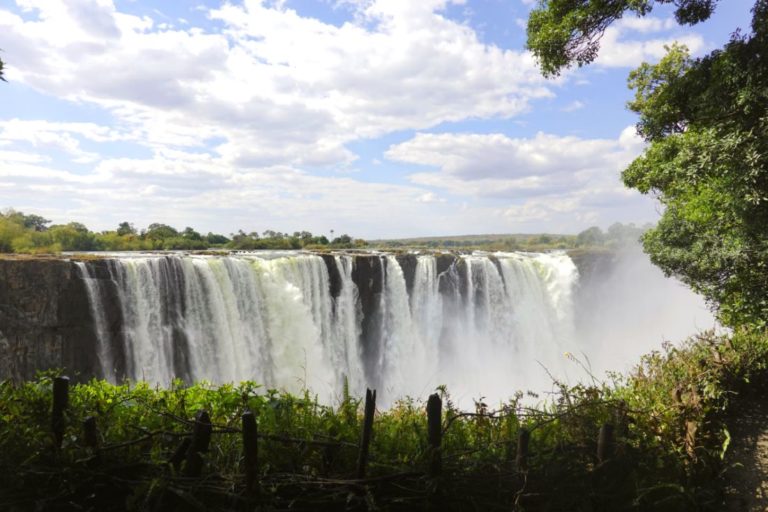
28 Tips for Backpacking Africa: Everything you need to know
Planning to travel to Africa as a backpacker? These tips for backpacking Africa will show you what to do and what to expect on your African safari. Africa is an amazing destination that backpackers are starting to embrace. Gone are the days when you needed to have hundreds of thousands of dollars to enjoy Africa…

What to Wear in Egypt: The Complete Packing List for Egypt
Not sure what to pack or wear in Egypt? This packing list for Egypt will show you everything you’ll need to have a fun trip to Egypt. Like any first-time traveler, I remember I scouted the internet nonstop looking for what to pack for Egpyt especially the clothes for my first Egyptian trip. I knew…

A comprehensive guide on how to get to Victoria falls in Zimbabwe
If you ever get an opportunity to travel to any of the Southern Africa countries, don’t miss the chance to visit the glorious Victoria falls which is on the border of Zambia and Zimbabwe. Being named as one of the seven natural wonders of the world, this Mosi-oa-Tunya translated as the “smoke that thunders” is…
Keep up the great work. This is really hepful information which is hard to find in other blogs. This is very helpful for planning our trip to Botswana and Namibia.
This really warms my heart, this is the exact reason i started this blog – to provide useful information and knowing that it helped you plan your trip feels like success to me. I hope you have an Incredible safari and fingers crossed for you to see the big 5 animals
Leave a Reply Cancel reply
Your email address will not be published. Required fields are marked *
This website uses cookies to ensure you get the best experience on our website. Learn more
- Australian Dollars
- British Pounds
- Canadian Dollars
- New Zealand Dollars
- South African Rands
- Swiss Francs
- U.S. Dollars
Talk to an expert +44 203 405 6666 Lines open now
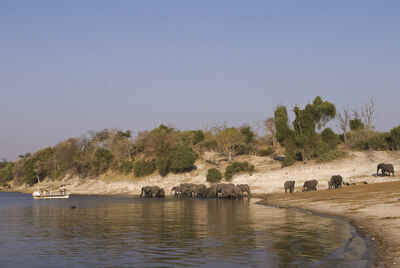
Chobe, famous for its magnificent elephant herds
Explore the park on a mobile safari
Explore Botswana's northern boundary - the Chobe River
The wildlife is equally relaxed with boats on the Chobe River
The peace and quiet of an African sunset
The rains mean lush grazing opportunities in the Chobe
Chobe National Park
From fertile floodplains to open expanses of some-time marshland, Chobe is an irresistible magnet for wildlife.
Even in the heart of the dry season, when vegetation shrivels across most of the Kalahari, the permanent waters of the Chobe River provide sustenance for hungry animals. Near Kasane, the gateway to the national park, herds of elephant regularly cross the river – an unmissable spectacle from a riverboat, whose passengers may also be treated to yawning pods of hippo and a motley array of cranes, herons and storks along the banks. Above the river, dense thickets of bush conceal prides of lion, alert for a stray zebra or even a giraffe, while concealed up in the trees lurk leopards, awaiting their nightly prowl. The riverfront may be a busy area for safari-goers, but the rewards are many. And at its western end, where lodges – and 4x4 vehicles – are fewer, the sense of seclusion is an added bonus. While the range of accommodation in the riverfront area is as varied as the wildlife, whilst just a small handful of lodges are located near Savuti Marsh. To drive from the riverfront to Savuti is to experience the full gamut of the Kalahari: thick drifts of sand punctuated by pockets of scrubby thorns, culminating in broad, seemingly empty plains, where the occasional rocky outcrop secretes ancient rock paintings. When the erratic Savuti Channel is flowing, its waters spill over the plains to create a marshland that is both beautiful and bountiful. Even when it’s dry, the seemingly hostile environment is flush with new growth in the early part of the year, a place of plenty for wildlife. As the land dries up, so the pools shrink, the last vestiges of water attracting predators to their wary prey. And so the cycle continues.
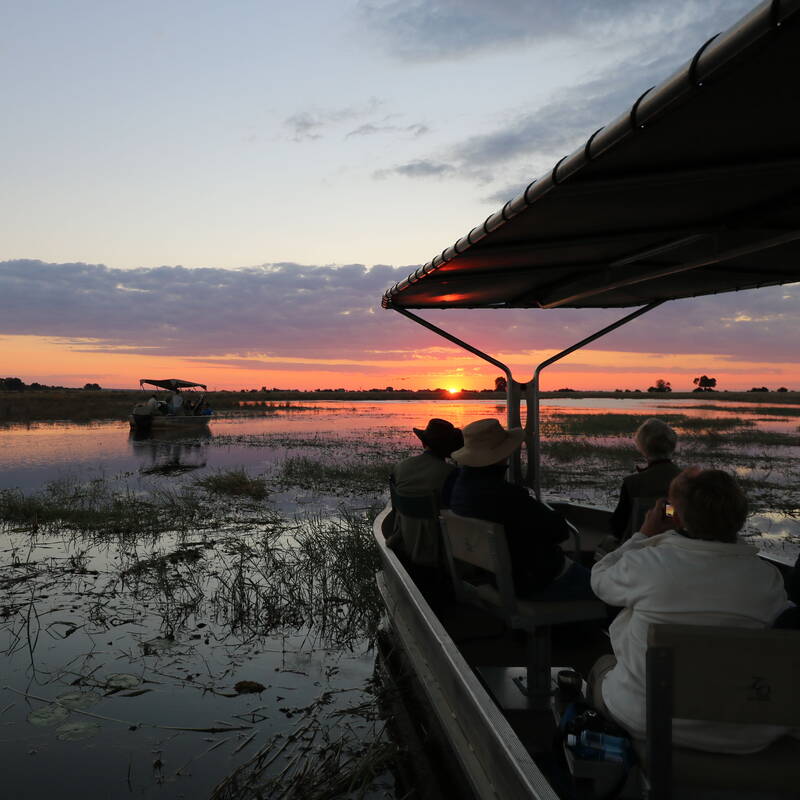
Chobe National Park: in detail
Safaris visiting Chobe
Just ideas, we'll always tailor-make a trip for you
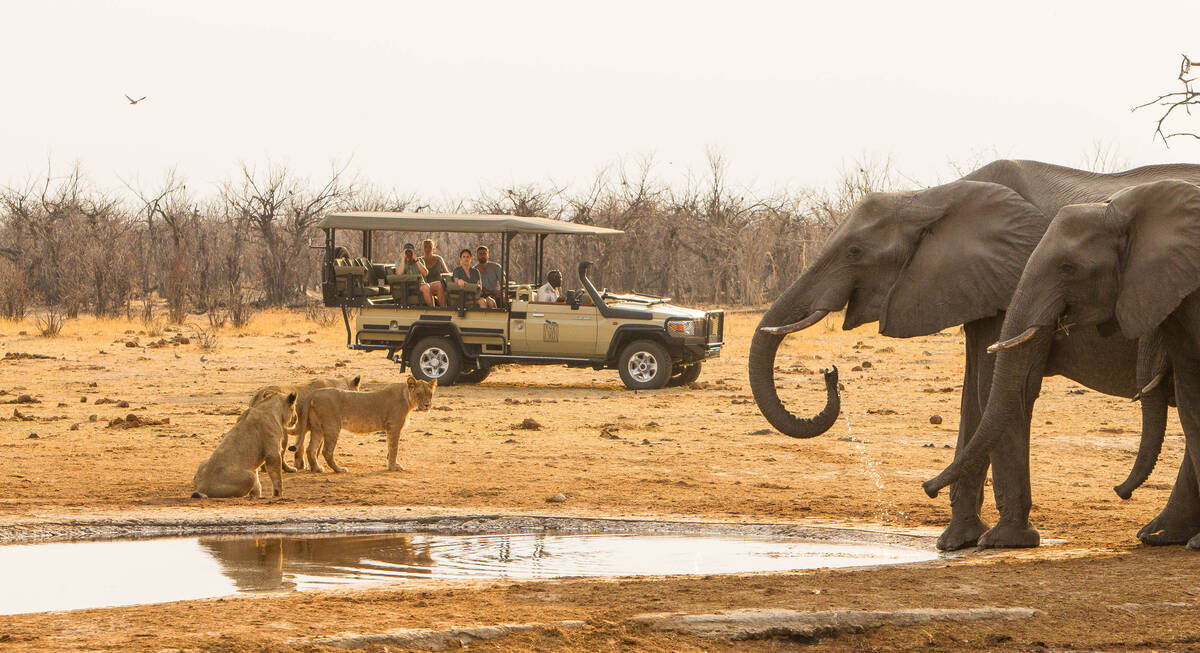
Spring Hare Safari
9 days • 3 locations KASANE AIRPORT TO MAUN AIRPORT
An authentic and diverse safari to Botswana combining the Chobe Forest Reserve, Savuti Marshes and the Okavango Delta. Strong wildlife viewing, a variety of activities and excellent value camps.
US$7,290 - US$13,320 per person
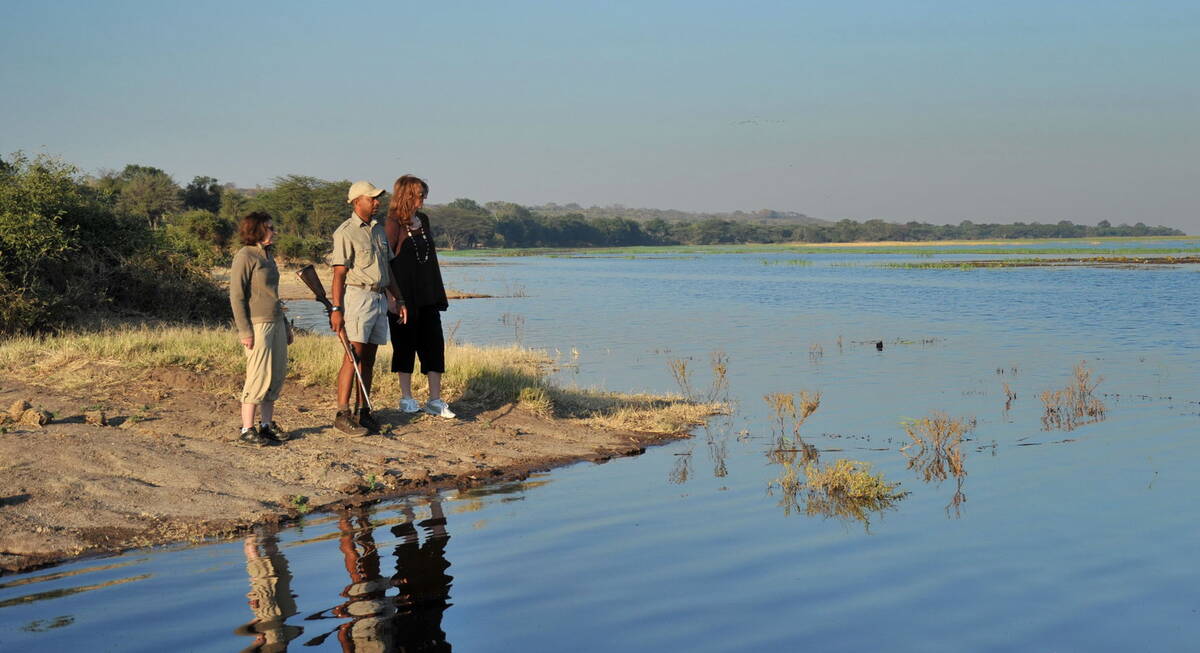
Wild Dog Safari
13 days • 5 locations KASANE AIRPORT TO MAUN AIRPORT
An in-depth discovery of northern Botswana’s wilderness, from Chobe and the private Kwando Reserve to the Moremi and iconic Okavango Delta with a great variety of activities and wildlife.
US$12,230 - US$21,930 per person
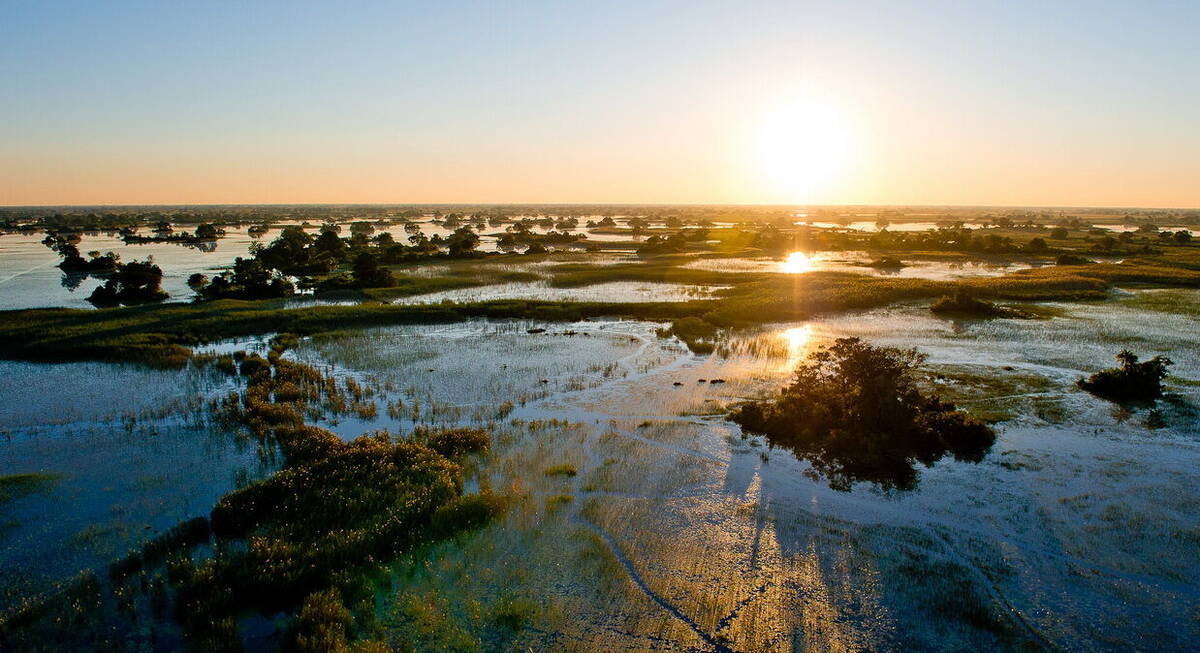
Steenbok Safari
9 days • 3 locations MAUN AIRPORT TO MAUN AIRPORT
A classic Botswana safari exploring the Moremi, Chobe National Park and Okavango Delta. Excellent wildlife viewing and a variety of activities from three of our favourite traditional tented camps.
US$7,260 - US$13,480 per person
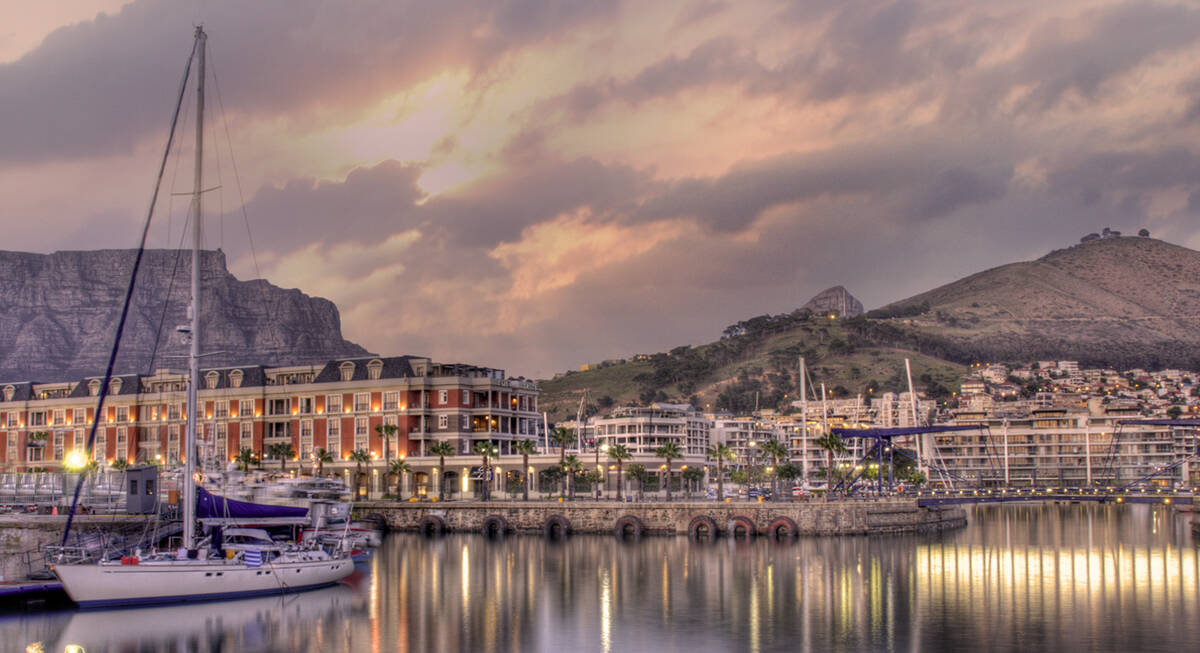
Leopard Safari
13 days • 4 locations VICTORIA FALLS AIRPORT TO CAPE TOWN AIRPORT
Victoria Falls, Botswana and Cape Town – a classic southern African itinerary combining luxury, wilderness, safari and culture. We can't think of a better way to spend two weeks.
US$12,320 - US$18,110 per person
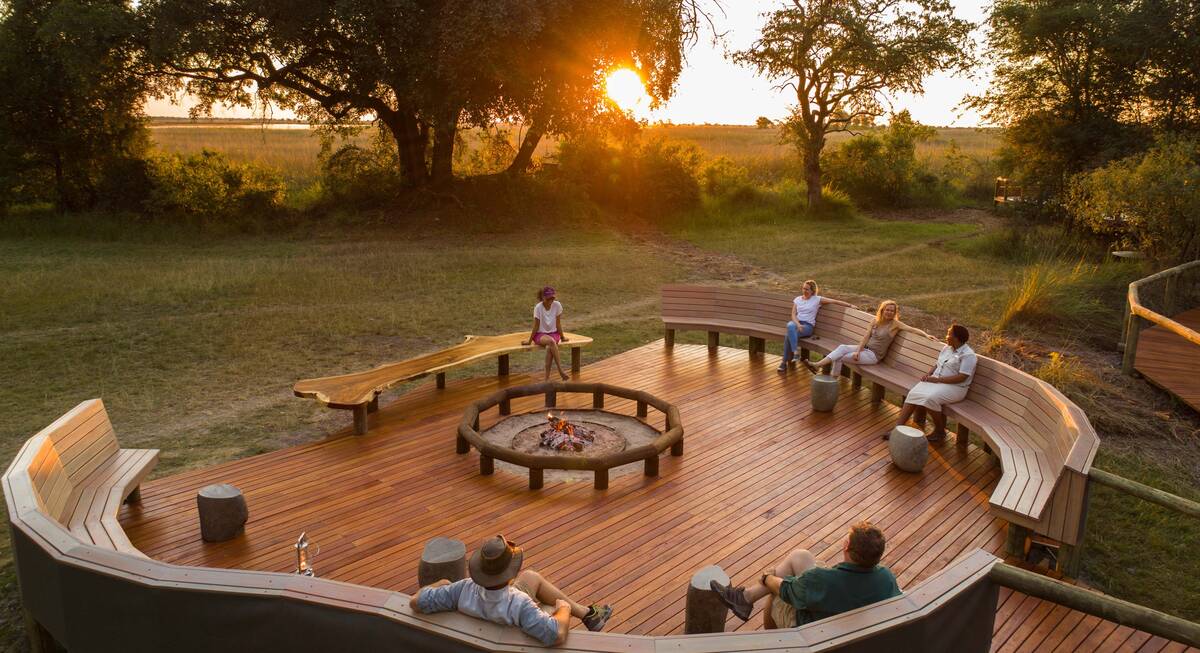
Wattled Crane Safari
5 days • 2 locations MAUN AIRPORT TO MAUN AIRPORT
A good-value Botswana safari staying at comfortable lodges in prime wildlife-viewing areas – Chobe National Park and the Moremi Reserve in the Okavango Delta.
US$4,690 - US$8,310 per person
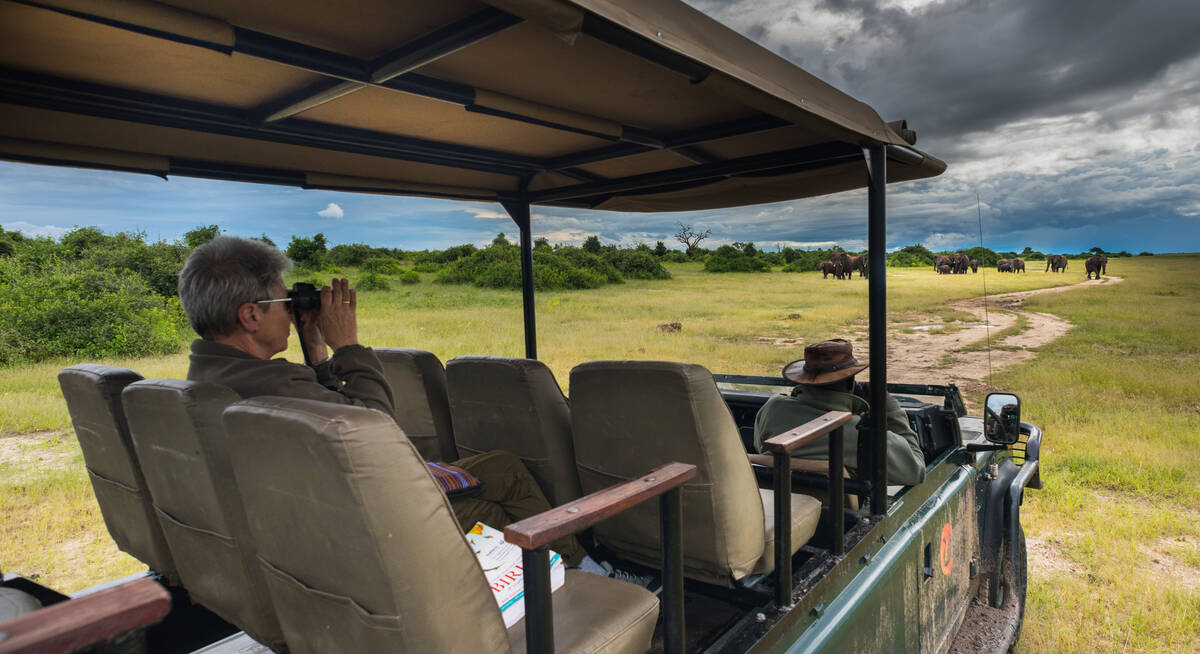
Pygmy Mouse Self-drive Safari
18 days • 10 locations WINDHOEK AIRPORT TO VICTORIA FALLS AIRPORT
A truly epic southern African self-drive safari adventure from Namibia’s mountains and deserts, along the lush Caprivi Strip to Botswana and Victoria Falls in Zimbabwe, staying at luxury lodges throughout.
US$6,270 - US$10,530 per person
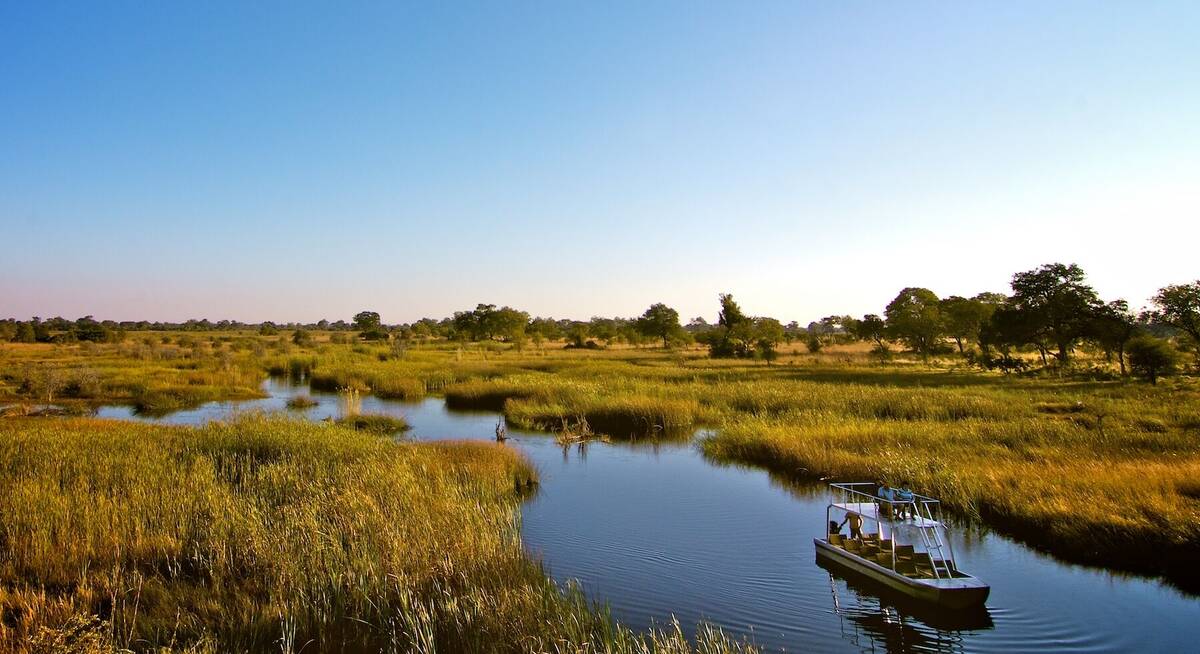
Sable Self-drive Safari
12 days • 7 locations WINDHOEK AIRPORT TO VICTORIA FALLS AIRPORT
A great-value southern African self-drive adventure from Namibia along the Caprivi Strip to Botswana and Zimbabwe, combining other-worldly landscapes, unforgettable wildlife spectacles and rarely visited places, and ending at Victoria Falls.
US$6,230 - US$8,400 per person
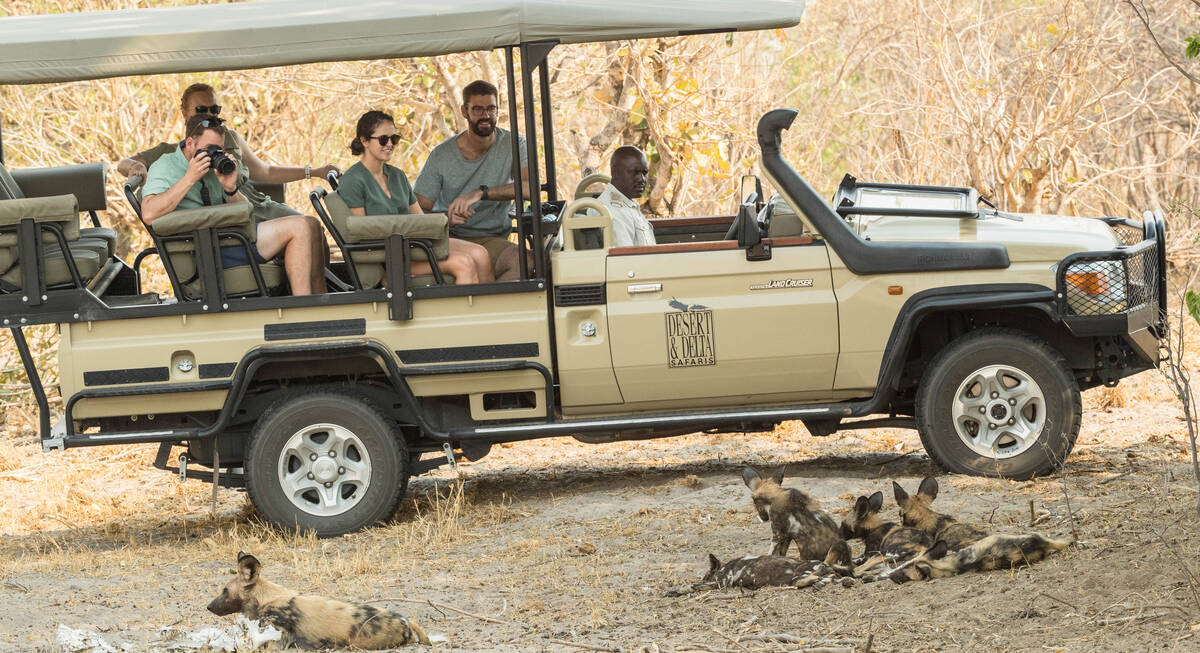
Porcupine Safari
11 days • 4 locations MAUN AIRPORT TO MAUN AIRPORT
Visit dramatically contrasting landscapes boasting a variety of species during this exploration of Botswana’s top-safari destinations. A combination of national parks and private reserves allows for a range of activities.
US$10,710 - US$16,860 per person
View all safaris
Most recent reviews of our safaris to Chobe
Click below to browse all 360 reviews from Chobe National Park. All from our travellers; all are in full & unedited.
Arrived 10 Jul 2024, 13 nights
"My Jul 2024 trip"
Overall rating: Excellent
Arrived 19 Jul 2024, 14 nights
"My Jul 2024 trip - Botswana & Namibia"
Arrived 15 Jun 2024, 16 nights
"My Jun 2024 trip"
Arrived 10 May 2024, 24 nights
"My May 2024 trip"
Arrived 25 May 2024, 11 nights
"Trip of a lifetime was all we dreamed of!"
Arrived 29 Apr 2024, 25 nights
"Namibia, Zimbabwe and Botswana Adventure"
Arrived 11 May 2024, 15 nights
Arrived 19 Oct 2023, 20 nights
"My Oct 2023 trip"
Arrived 2 Oct 2023, 17 nights
Arrived 6 Sep 2023, 13 nights
"Our Sep 2023 trip back to superb Botswana"
See all Chobe National Park reviews
Where to stay in Chobe
Our suggestions for safari camps in Chobe National Park
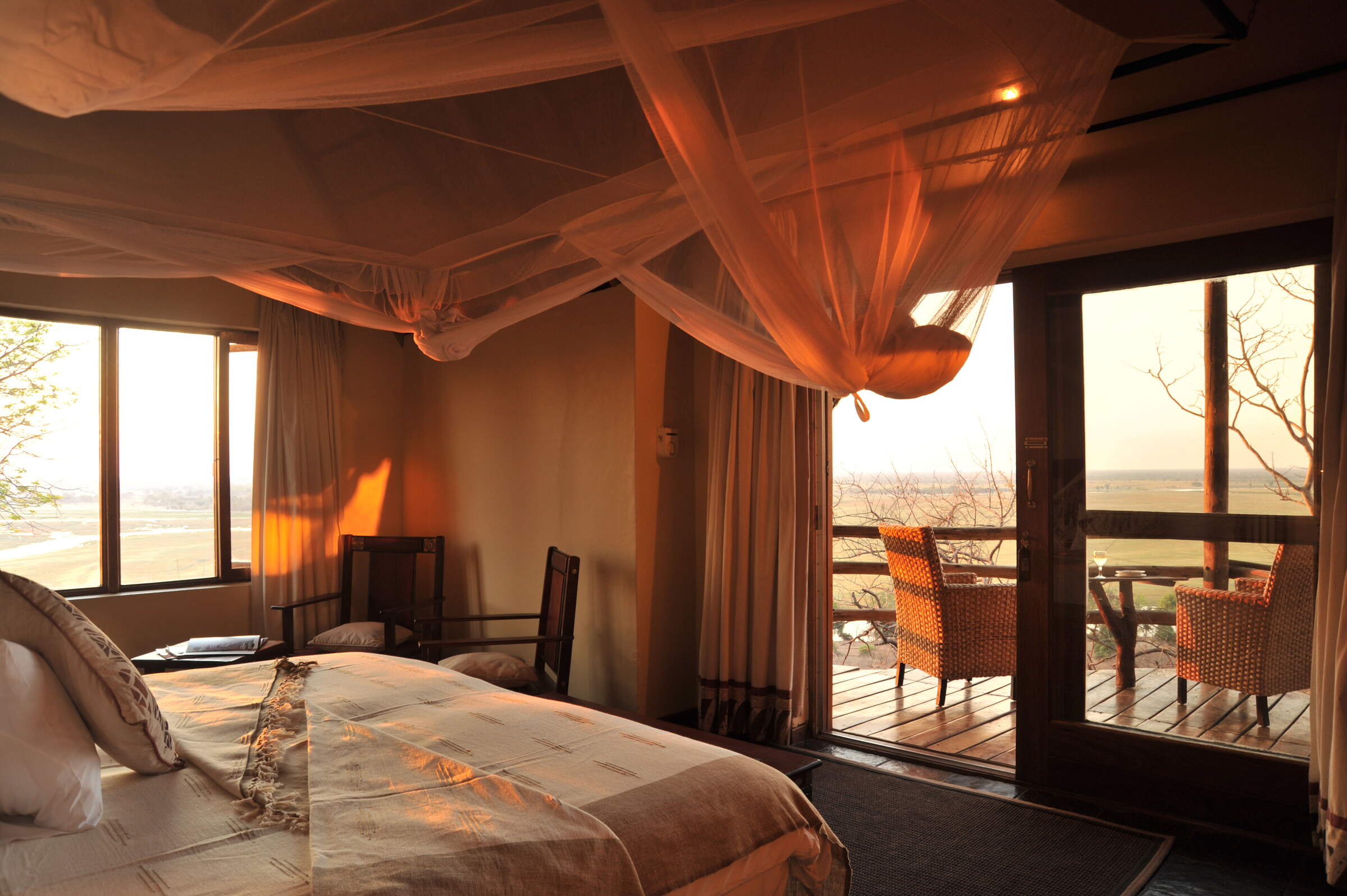
Muchenje Safari Lodge
One of our favourites in the area, Muchenje is a small, welcoming lodge at the quieter, western end of the Chobe Riverfront.
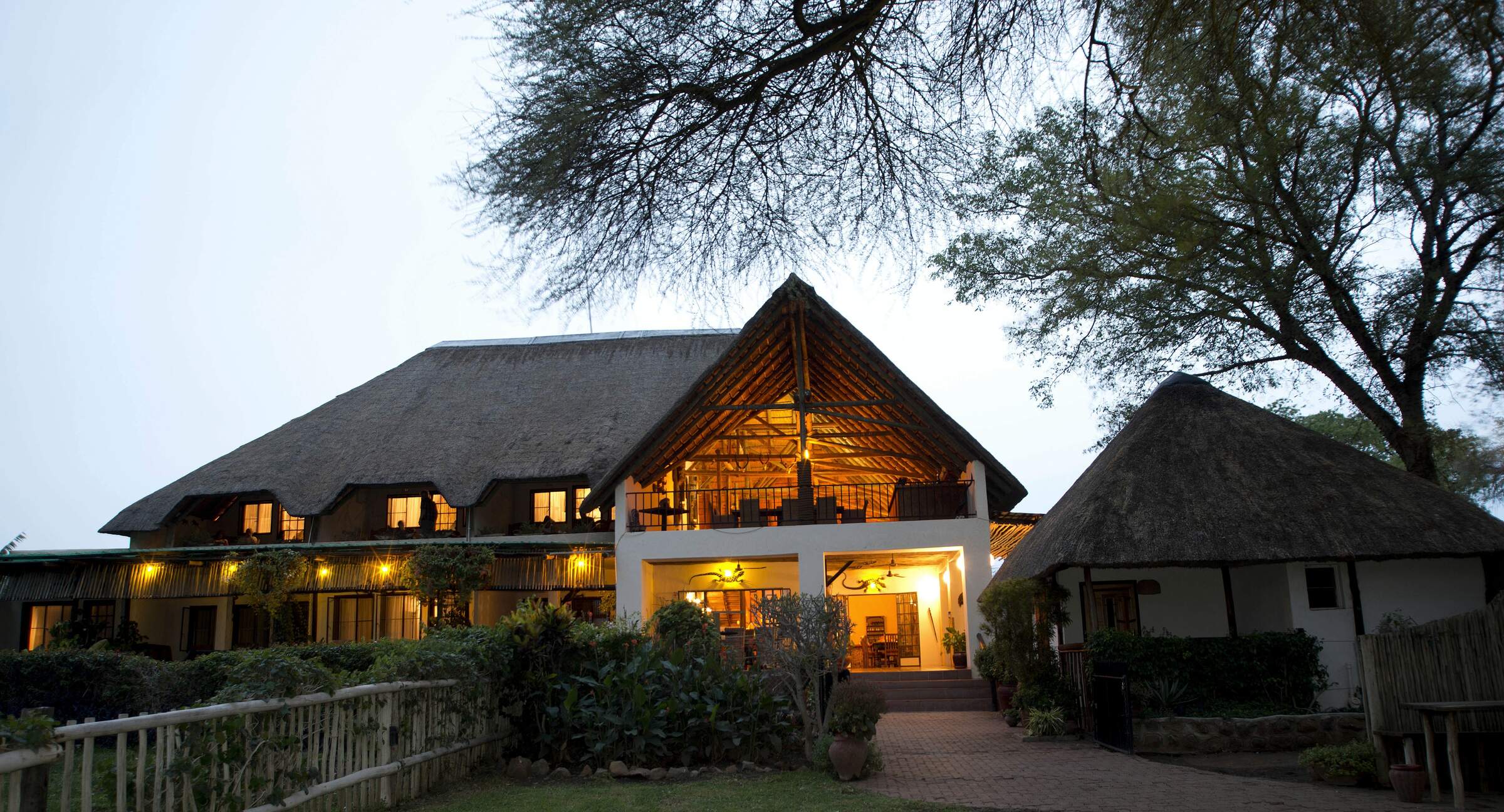
Chobe River Lodge
Overlooking the Chobe River, the intimate Chobe River Lodge is a haven of tranquillity away from the bustle of Kasane.
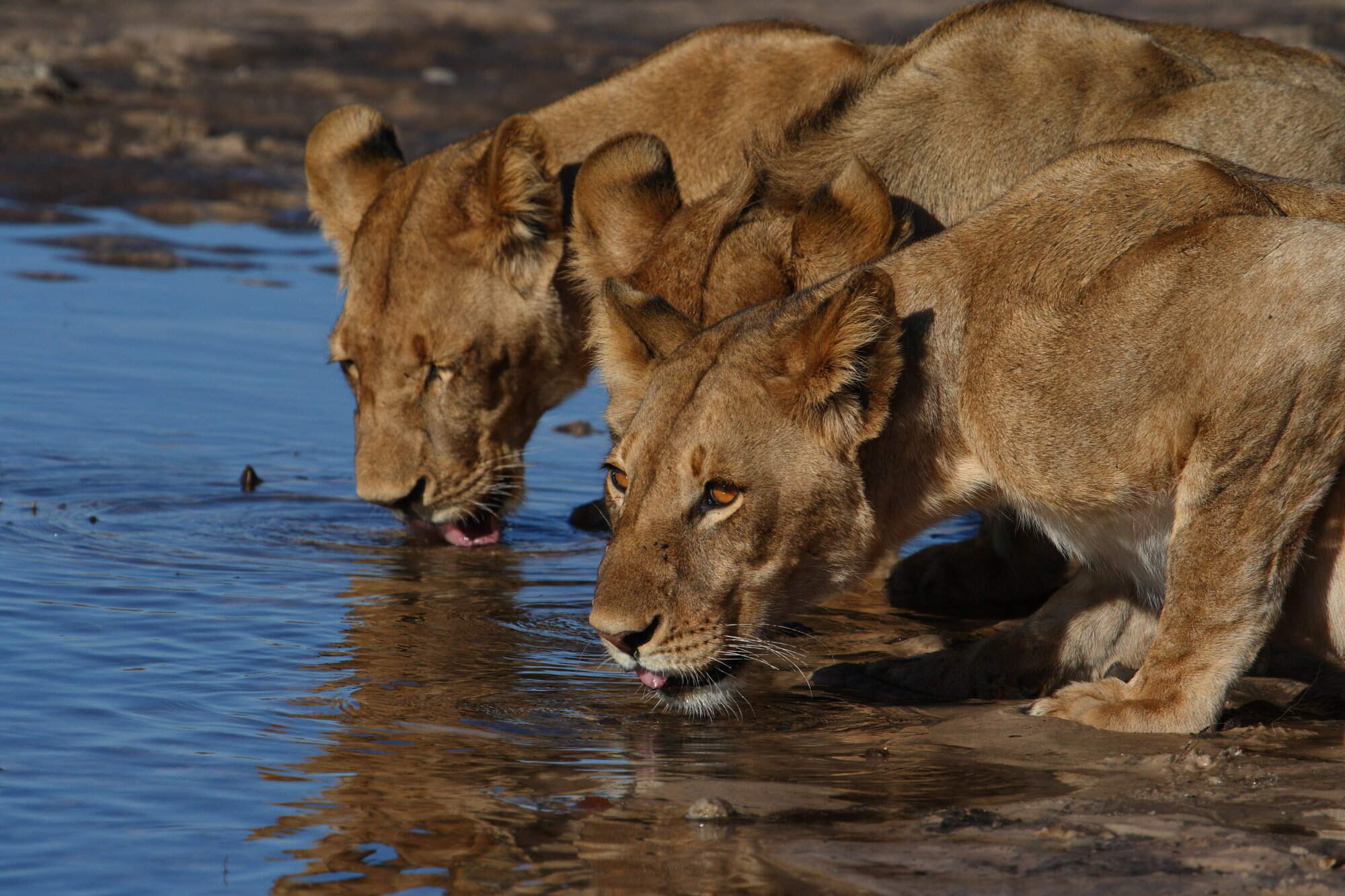
Savute Safari Lodge
Savute Safari Lodge sits on the banks of the Savuti Channel within Chobe National Park, and offers access to excellent game viewing, especially during the dry season.
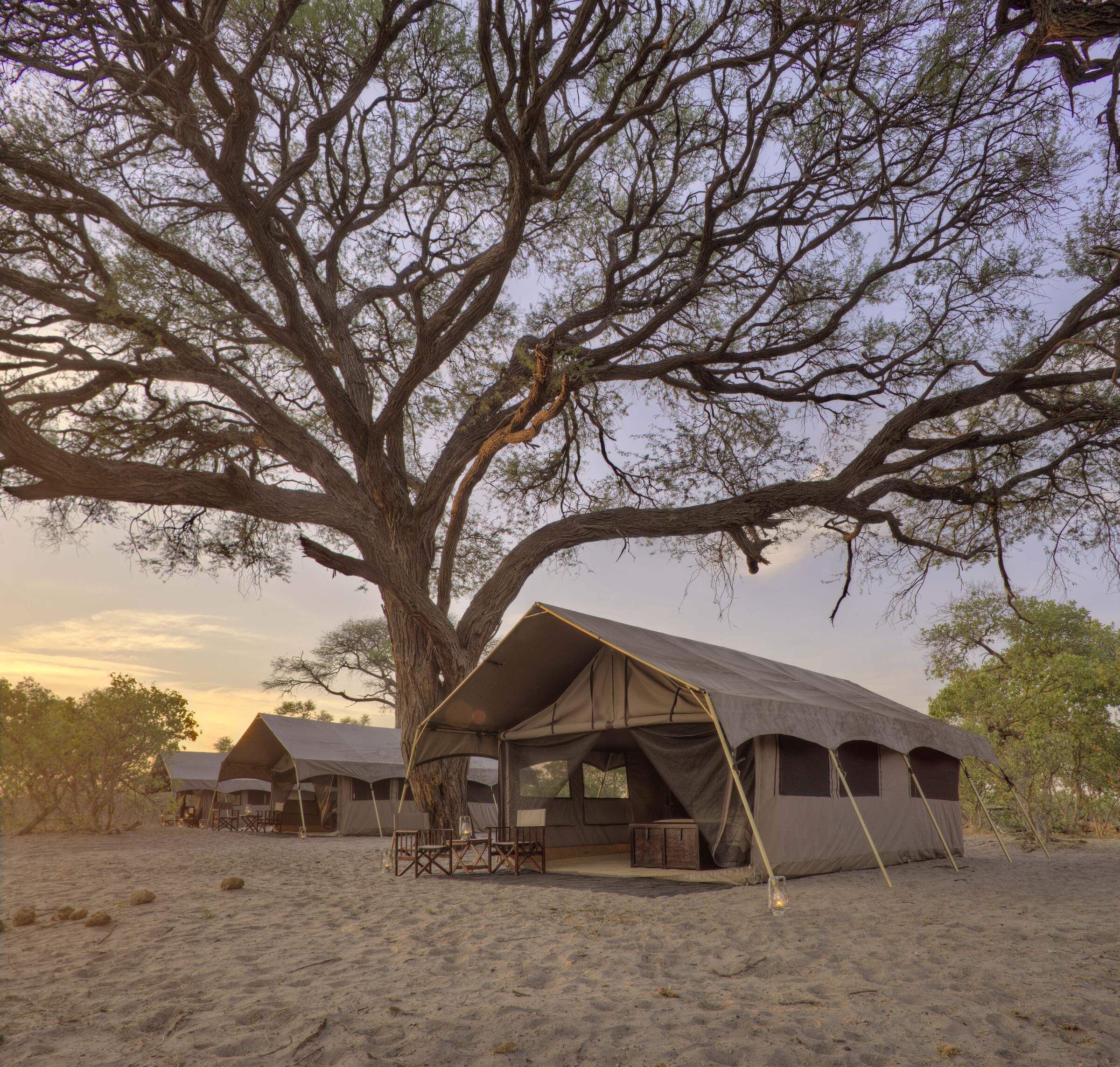
Savute Under Canvas
A mobile camp with the comforts of a semi-permanent tented camp, Savute Under Canvas offers guided game drives within the Savuti region of Chobe National Park.
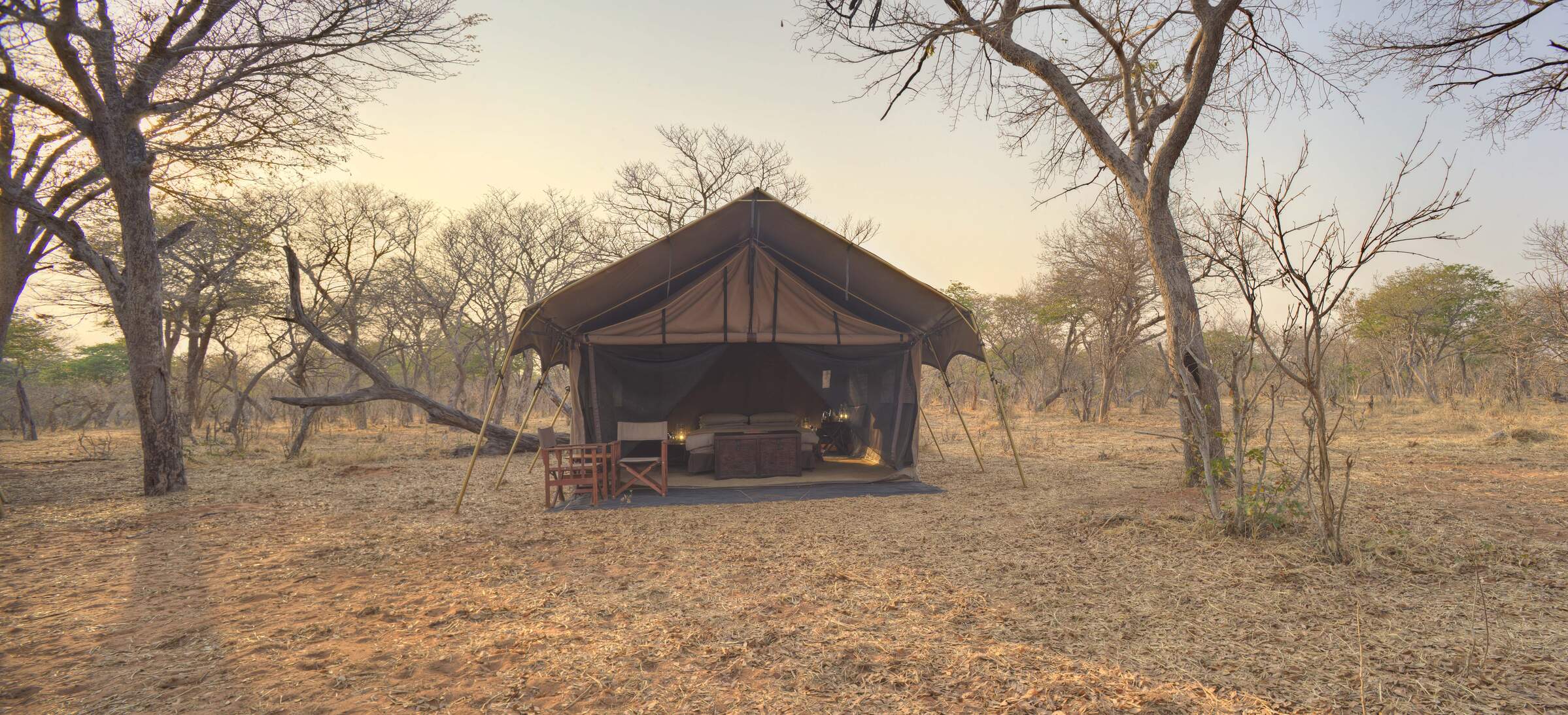
Chobe Under Canvas
This is a typical location for Chobe under Canvas, a small, semi-permanent camp in the Chobe Riverfront area that offers good value for money and high standards of care.
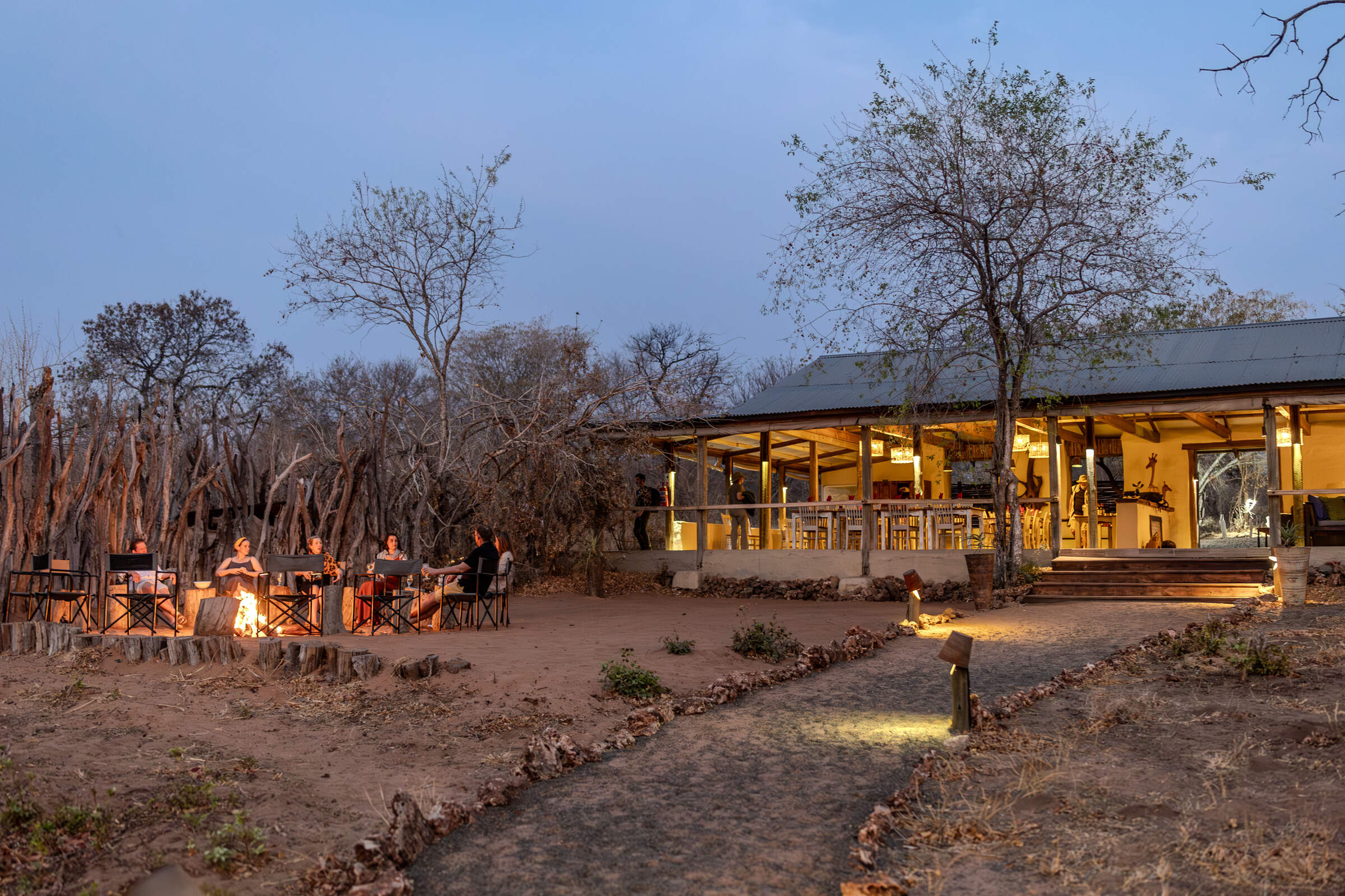
Chobe Elephant Camp
Located in one of our favorite areas of Chobe National Park, Chobe Elephant Camp is a simple but well-appointed camp with a strong bush feel.
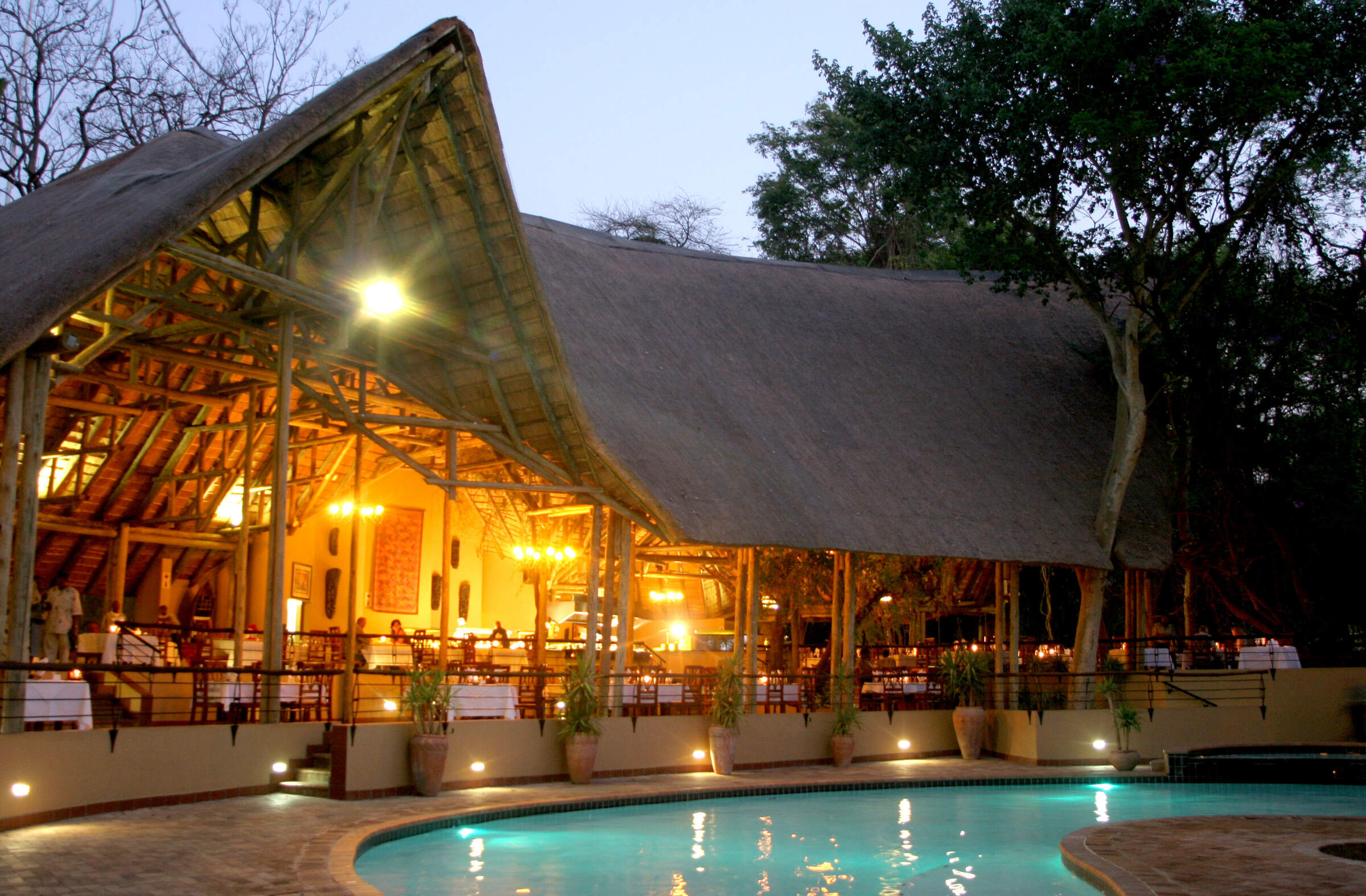
Chobe Safari Lodge
Chobe Safari Lodge is a good value, hotel-style lodge in the heart of Kasane offering game drives, boat cruises and fishing trips.
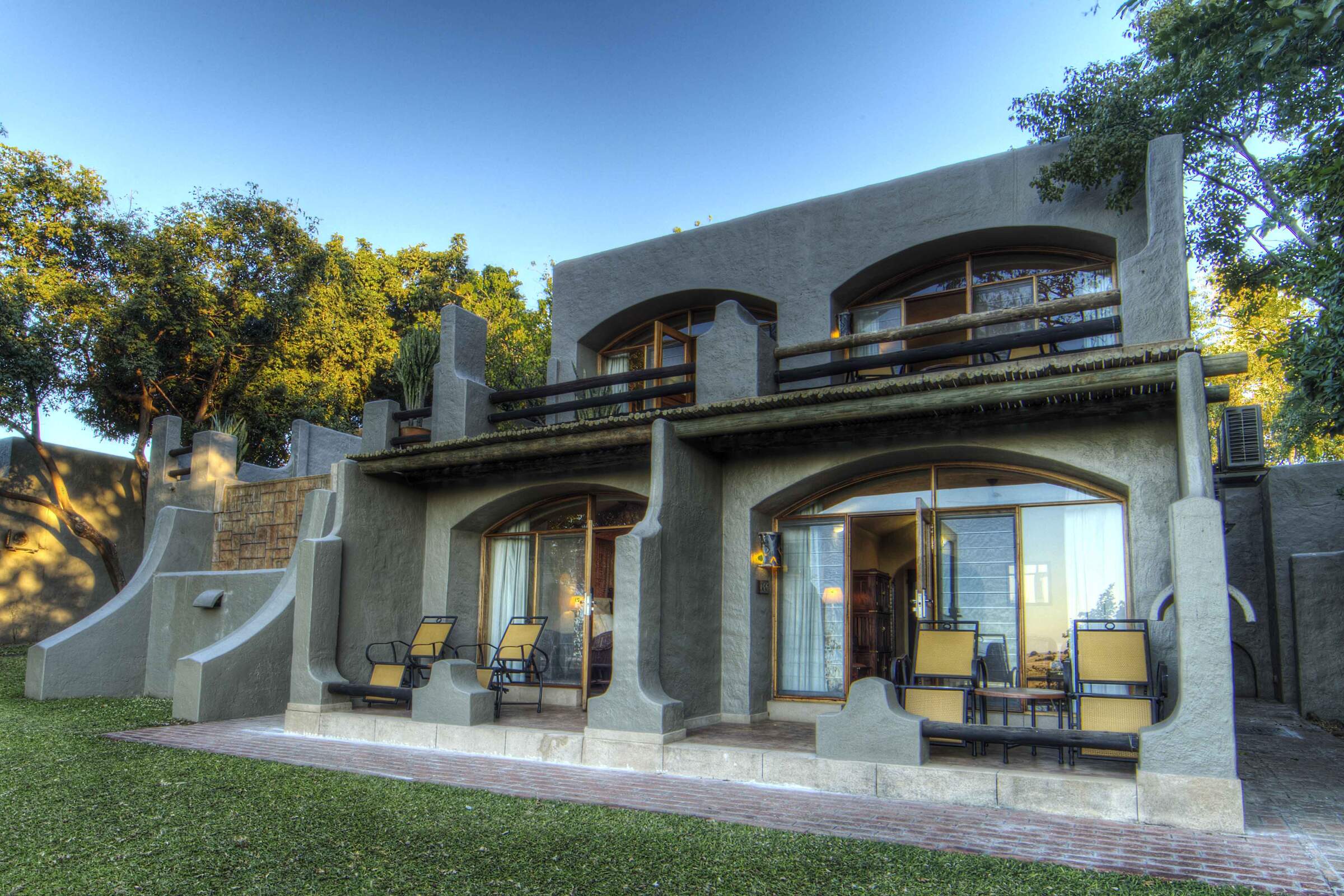
Chobe Game Lodge
Chobe Game Lodge occupies an enviable riverfront location within Chobe National Park and boasts well-earned 'eco' credentials, as well as an excellent all-female guiding team.
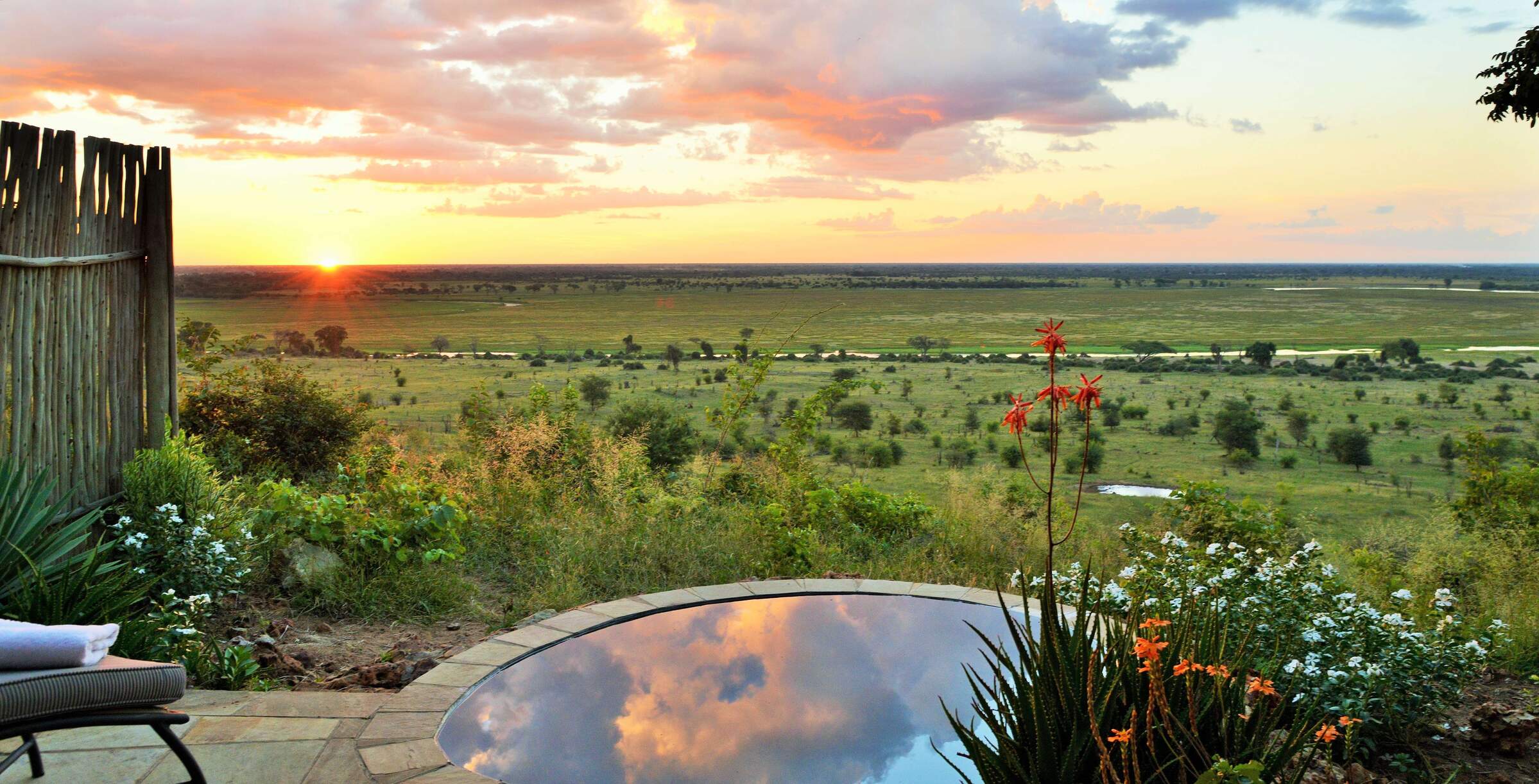
Ngoma Safari Lodge
With sweeping views across the floodplains of the Chobe River, Ngoma offers superb food and flexible safari activities.
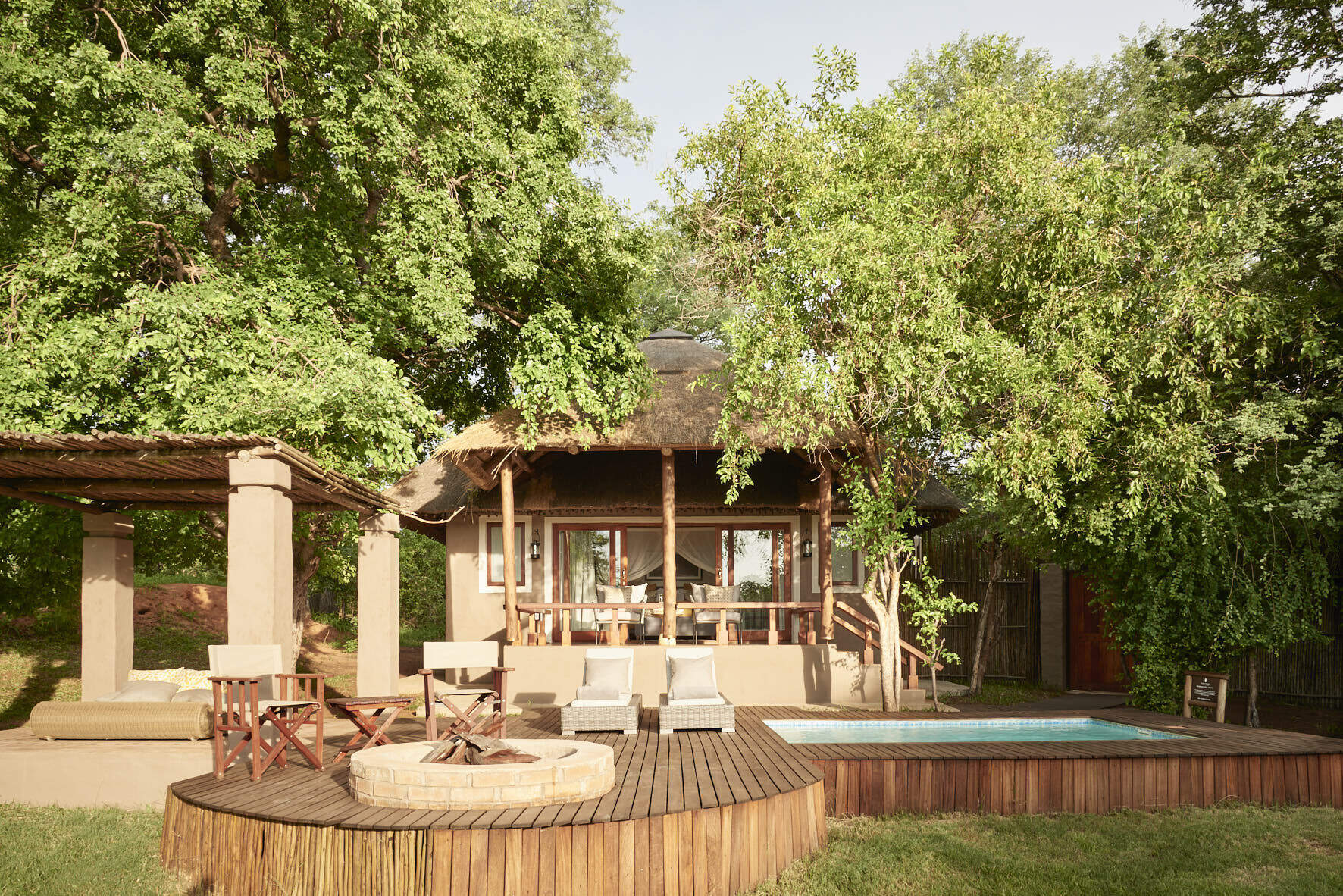
Chobe Chilwero
On the periphery of Chobe National Park, Chobe Chilwero offers luxurious surroundings and excellent food, which complement superb game viewing on game drives and boat trips.
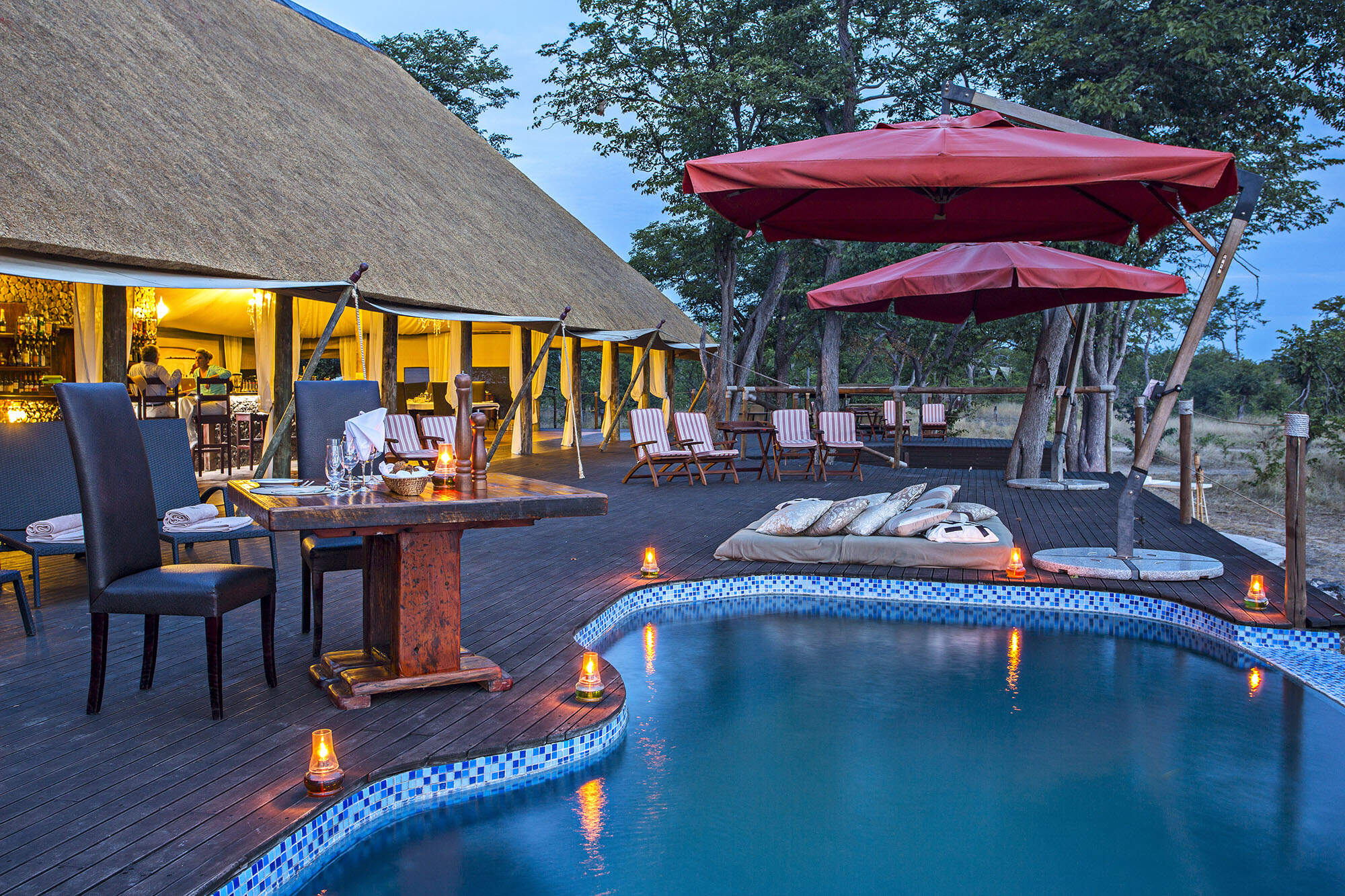
Camp Kuzuma
Camp Kuzuma sits in the Kazuma Forest Reserve and is an excellent place to see elephant in particular. Away from the busier riverfront area of Chobe National Park this camp offers a luxurious base form which to explore this less visited region of northern Botswana.
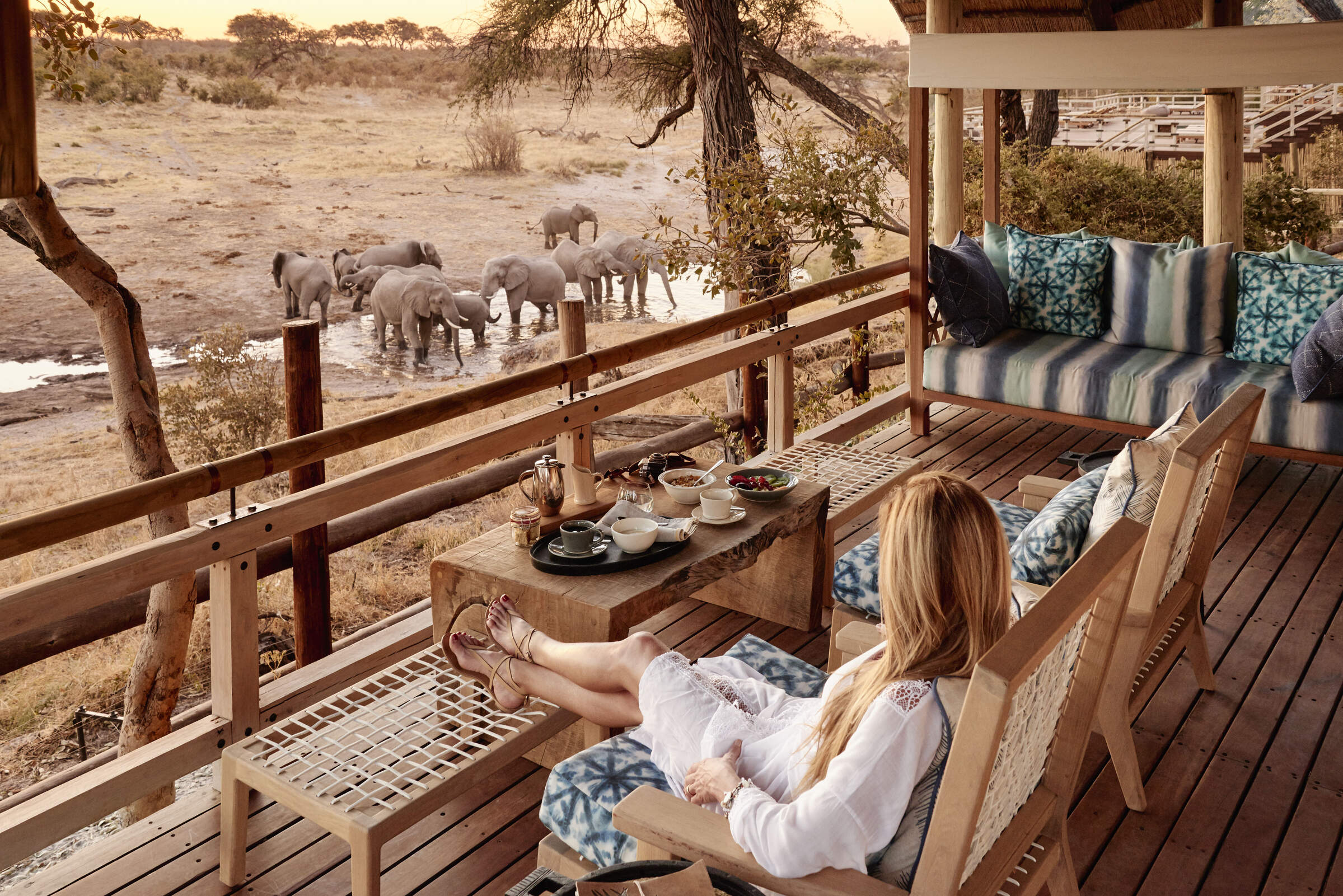
Savute Elephant Lodge
Savute Elephant Lodge is a luxurious camp on the banks of the now flowing Savuti Channel. This is a classic big-game area, although its location within Chobe National Park does limit the activities which are possible here.
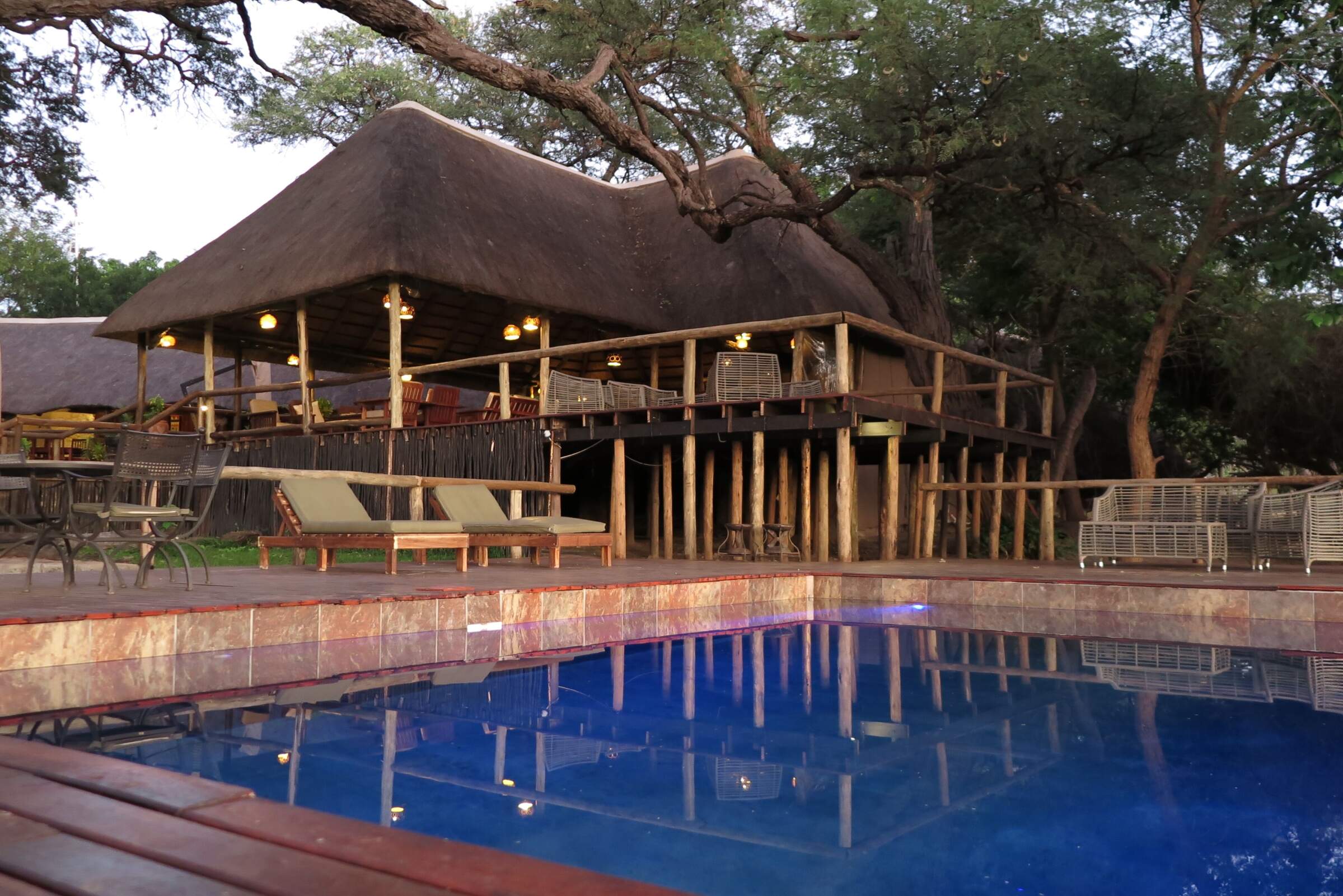
Elephant Valley Lodge
Elephant Valley Lodge is a lovely camp in a beautiful setting – sit in its hide and watch the wildlife come to drink at the waterhole. Activities focus on boating and drives in Chobe which - although very busy, and a long drive from the lodge – is very rich in wildlife.
View all places
Our travellers’ wildlife sightings in Chobe
This is their success for sightings in Chobe National Park. Click on a species for more detail. How we work this out.
99% success
91% success
89% success
51% success
49% success
48% success
40% success
39% success
26% success
19% success
13% success
When to go to Chobe National Park
Our month by month guide: What it's like to visit Chobe in Botswana
Botswana in January
January is at the peak of Botswana’s rainy season. These rains are often in the evening and are short but heavy, with occasional thunderstorms. Temperatures will still be high but cooler than October–December. Animals are generally dispersed, and not easy to spot, with the best game viewing found in the north of Chief’s Island and on the eastern and southern sides of the Okavango Delta . January is also one of the best months to see the zebra and wildebeest migration in the Makgadikgadi salt pans and at Nxai Pan . Migratory birds abound throughout northern Botswana, along with a large number of breeding flamingos in the flooded salt pans. Rates are generally relatively low, making this a good time to visit on a budget.
- Temperatures are still warm, with occasional thunderstorms
- The bush feels alive; birdlife is at its most spectacular
- Big game is dispersed
- Zebra & wildebeest migration at its height
- Availability in lodges and camps is often very good
A good time to visit, with pros & cons
Weather in January
Botswana in February
The weather in February is very similar to January, with heavy rain most days – often towards evening – and temperatures on the high side, albeit cooling off from the rains and surface water. Across northern Botswana, the landscape feels green and alive; insects and smaller animals are more easily seen, and many birds and animals are raising their young. However, the rains have created pools and waterholes in the bush and thicker vegetation and tall grass makes it trickier to spot larger animals. Further south, the game viewing is beginning to pick up in the Central Kalahari Game Reserve. Visitor numbers remain low, with attendant rates and availability in camps and lodges.
- Temperatures still warm with occasional thunderstorms
- Many animals with young; birdlife at its most spectacular
- Game viewing picking up in the Central Kalahari
- Visitor numbers are low, so camp availability can be very good
This is not a great time to visit
Weather in February
Botswana in March
March usually sees Botswana’s main rains starting to tail off. Many days will be clear, with a strong sun raising temperatures. On some days clouds will build, and the late-afternoon may see a short thunderstorm. Across the country, the landscape is green and alive. Many birds and animals are finishing raising their young. Much of the migration is now moving north towards the Savute area or Chobe National Park, though thick vegetation still makes it trickier to spot even larger animals. March is one of the best times to be in the Central Kalahari Game Reserve, where many of the pans fill up and animals come to drink, closely followed by predators. With few visitors in most areas, rates may still be relatively low.
- Variable weather: rains tailing off but still hot
- Occasional small thunderstorms
- Many animals finish raising their young; birdlife still spectacular
- The best time to visit the Central Kalahari Game Reserve
- Few tourists visit during March, so rates often low
Weather in March
Botswana in April
During April the rains have usually stopped, though there may be still be the odd late downpour. This results in clear skies and a lovely green, lush landscape. Night-time temperatures usually start to drop during April with this being most noticeable in the Central Kalahari and the Makgadikgadi areas. The Central Kalahari is really coming into its own at this point and from April through to May/June the Savute region is a particular favourite of ours, with good predator/prey interaction. In much of northern Botswana, the camps are coming into their “shoulder” season, so rates are on the rise but still relatively low.
- Evening temperatures cooling with just the odd shower
- Northern Botswana is green and lush
- Many animals still with young; good predator/prey interaction
- Central Kalahari and Savute the best places for wildlife
- A popular shoulder season time to book. Rates relatively low
Weather in April
Botswana in May
May is a very popular month to visit Botswana, often the last month of the “shoulder” season before camp rates hit their peak. While there is very little chance of rain, the annual floods from Angola are starting to make their way through the northern part of the Delta, and will eventually reach the majority of the Okavango late June. With cooler temperatures morning and evening, predator activity tends to be higher, although tall grasses can still obstruct game viewing. With cool crisp evenings, and the game viewing really picking up, this is the favourite time to visit for many of our team – and camp bookings throughout Botswana are snapped up quickly.
- Cool mornings and evenings with little chance of rain
- Game viewing is beginning to pick up
- Predator activity increasing, though grasses still quite high
- Last month of “shoulder” season for most camps
- Availability goes quickly throughout Botswana
A very good time to visit
Weather in May
Botswana in June
June is the real start of the dry season. Temperatures are still cool in the morning and evenings with night-time temperatures sometimes reaching freezing, rising to 25–30 degrees Celsius during the day, with blue skies. Along with this comes a certain clarity to the air, favourable for serious photographers. Surface water and waterholes begin to dry up during this period and many animals begin to congregate around the remaining areas with water. Visibility is improving as the grass is beginning to die back, and game viewing is very good everywhere, with particular improvement in the Kwando–Linyanti areas. Not surprisingly, camp availability is becoming scarce and rates are high.
- Warm, comfortable days; cold nights, morning & evenings
- Air clarity favours serious photographers
- Wildlife is gravitating to waterholes, making game-viewing productive
- Grasses beginning to die back
- Most camps are into peak season, with rates correspondingly high
Fantastic: the very best time to visit
Weather in June
Botswana in July
Evenings and mornings are still cool in July, and this combined with great game viewing makes it one of the most popular times to visit Botswana. Vegetation is really thinning out now making game easier to spot, with the few remaining waterholes attracting lots of wildlife. The north-eastern side of Chobe National Park, along the Chobe River, is also very rewarding, although this area can become very busy. Game viewing is extremely good in the Khwai areas, too, but again, this is a public area and – unlike in the private concessions of the Delta – vehicle numbers can be high. Camps are now very much into the peak season, and tend to be full.
- Comfortable days; cold nights, morning & evenings
- Game viewing very good as vegetation dies back and waterholes dry out
- Chobe Riverfront and Khwai areas become very busy
- Private concessions helps to avoid potentially high vehicle numbers
- Now very much into peak season
Weather in July
Botswana in August
August is a popular time to visit Botswana, coinciding with the European summer holidays, and camp availability is difficult. Temperatures are generally cool at night, and comfortable during the day, although towards the end of the month they can rise above 35 degrees Celsius (albeit with low humidity). Cloudless skies bring spectacular star-gazing. Wildlife has congregated around the few remaining water sources, and much of the vegetation has now died back, so wildlife viewing tends to be varied and rewarding, particularly in the Okavango Delta. Depending on the rains in Angola this can also be one of the best times to see the delta floods at their peak.
- Dry, warm days, with mainly cool nights
- Cloudless skies with spectacular stars at night
- A fantastic time for wildlife watching, particularly in the Okavango
- Traditionally one of the best times to see the Delta in full flood
- Peak season: so high rates and many lodges full
Weather in August
Botswana in September
September is another favourite month for some of our team members. Daytime temperatures are getting warmer, but nights remain cool. With the drier conditions, most of the greenery has faded from the landscape, and dust or even smoke create hazy conditions that aren’t great for photographers – though this does result in fantastic sunsets. This is another extremely good month for game viewing, with large numbers of elephant and buffalo congregating in the Chobe region and migrant birds begin to return to Botswana. Rates remain high – and availability correspondingly low.
- Warmer days and cool nights
- One of the best months for wildlife viewing
- Large congregations of elephant & buffalo in the Chobe region
- Hazy conditions less good for photographers, but brilliant sunsets
- High season rates; many lodges & camps are full
Weather in September
Botswana in October
October is the one of the hottest months of the year, and usually one of the driest. Towards the end of the month the chances of rain can increase, and along with this can come greater humidity. The air is usually dry and hazy, making photography more challenging, but the lack of water and vegetation result in very good big-game viewing. Water levels are now much lower, so water-based activities such as boating, mokoro trips and fishing cease in many of the camps which are not on major tributaries.
- Hot temperatures, with the chance of rain towards the end of the month
- Great big-game viewing
- Less opportunity for water activities in camps as floods recede
- Hazy air not great for photographers
- Final month of the peak season in camps
Weather in October
Botswana in November
November usually marks the end of the dry season in Botswana, when increasing temperatures drive a rise in humidity, sometimes culminating in the first rains. These are often short but very heavy showers in the late afternoon or during the night, and can be spectacular. The rains lower the temperatures slightly but bring a flush of green back into the dry landscapes. As waterholes in surrounding areas fill, wildlife will gradually begin to disperse as it is not restricted by the availability of water. November is a great time for birdwatching, with the arrival of many migrant birds. The first couple of weeks are very popular with travellers looking for great game viewing at lower rates as Botswana enters the “shoulder” season.
- Hot in the middle of the day; sometimes humid
- Heavy showers increasingly likely as the month progresses
- Wildlife watching still good, but less reliable once it rains
- Migrant birds start to arrive
- “Shoulder” season brings mid-range rates in camps
Weather in November
Botswana in December
The rains in Botswana have now started, bringing some respite to the high temperatures. Game viewing becomes harder as wildlife is more dispersed but great sightings can still be had in the right areas such as Khwai and the Kwara and Mombo concessions. Areas such as the Makgadikgadi Pans change completely with the salt pans becoming covered in a shallow layer of water attracting large numbers of breeding flamingos. Low-season rates at many camps are a draw.
- Temperatures starting to fall from the highs of October/November
- Very high chance of rain, usually large heavy storms for short periods
- Flamingos return to breed at the Makgadikgadi Pans
- Wildlife more dispersed, so game viewing more challenging
- Typically low-season rates in the camps
Weather in December
Chobe National Park: In detail
The Chobe National Park covers about 11,700km² of the northern Kalahari, much of it impenetrable thorn bush growing on deep sand.
This is an old safari area. Livingstone visited it in the 1850s, as have countless big-game hunters since. It's famous for huge herds of elephant and buffalo, and large prides of lion that have learnt to hunt them; for a river that apparently flows both ways; and for the mysterious, disappearing (and reappearing) Savuti Channel. The key to this safari area is Chobe's animal migration. Chobe's animals move in complex, ancient patterns determined by the rain and available food.
Chobe National Park safari areas
The savuti area, map of chobe national park.
Choices for where to stay in Chobe National Park
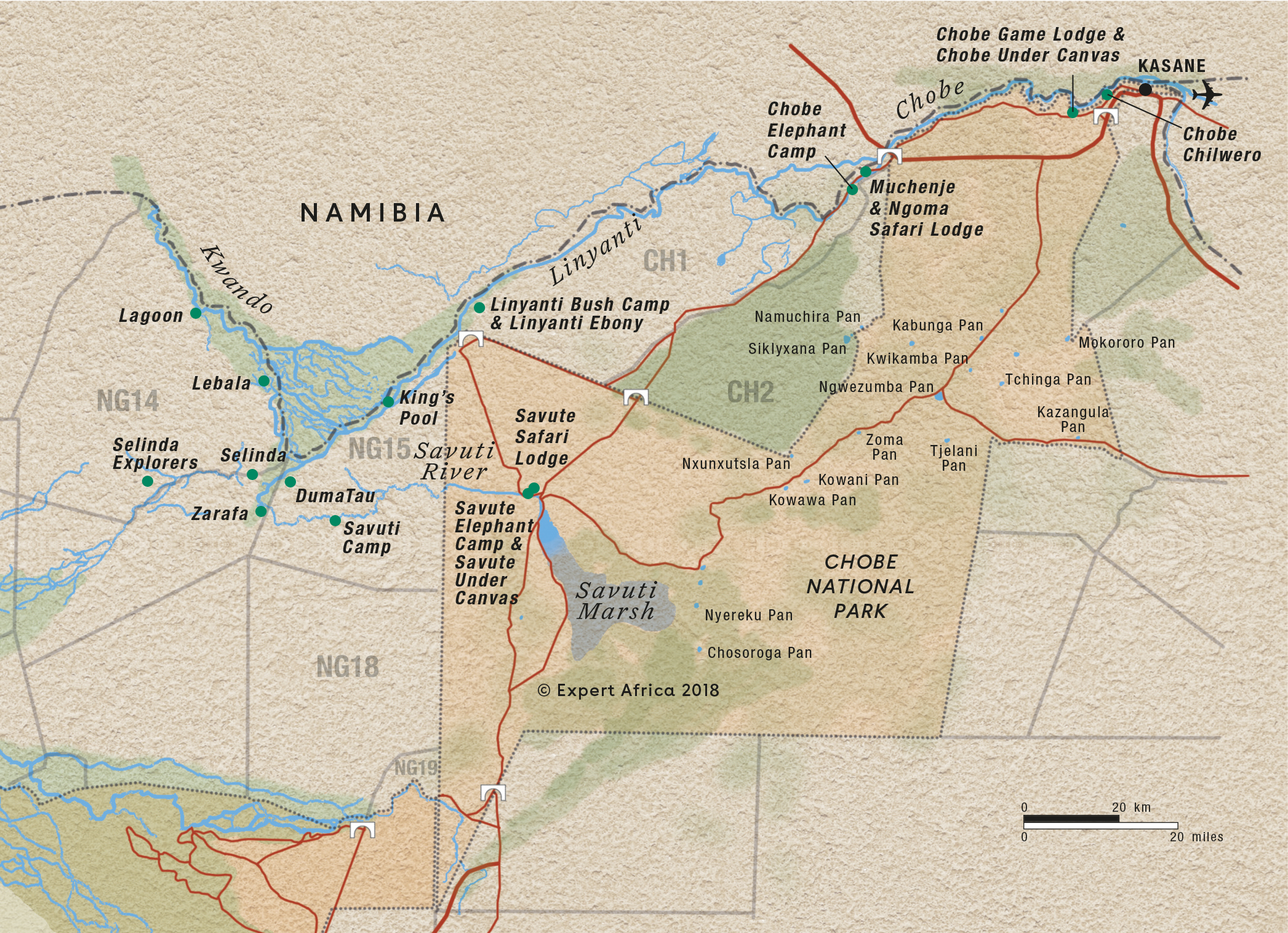
Chobe National Park: Safaris
Come to Chobe National Park on your Botswana safari holidays for impressive herds of buffalo and elephants, hunted by large lion prides, as well as magical waterways! This famous Botswana safari area can either be visited on a mobile safari or while staying at a luxurious private camp. See the list below for ideas for both ways of travelling!
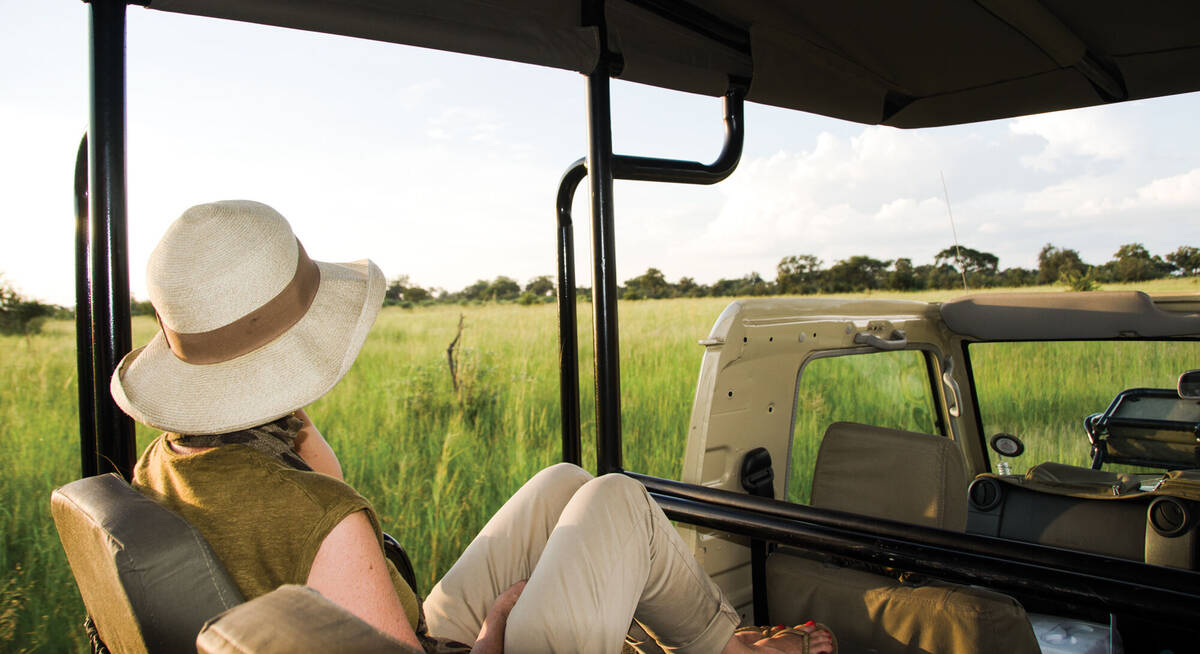
Rock Hare Self-drive Safari
20 days • 12 locations WINDHOEK AIRPORT TO VICTORIA FALLS AIRPORT
An in-depth look at Namibia from the Namib Desert to the Caprivi, with additional stops in Botswana and Victoria Falls. This three-week adventure includes an unrivalled mix of environments and is great value.
US$5,330 - US$7,570 per person
13 top lodges and safari camps in Chobe National Park
Our suggestions here cover both places which are inside Chobe National Park, and those just outside.
In the north of the park, the Chobe Riverfront is a big attraction, and to see this most visitors stay in or around Kasane. There’s just one lodge in the park, the stylish Chobe Game Lodge, the rest are just outside, with some even floating on the water. Further south, the iconic Savuti area is also a draw, with a number of lodges and safari camps there inside the park.
Excursions in Chobe National Park
Optional, extra day-trips and excursions that are possible while you’re staying in Chobe National Park. Talk to us: these excursions are usually best arranged before you go.
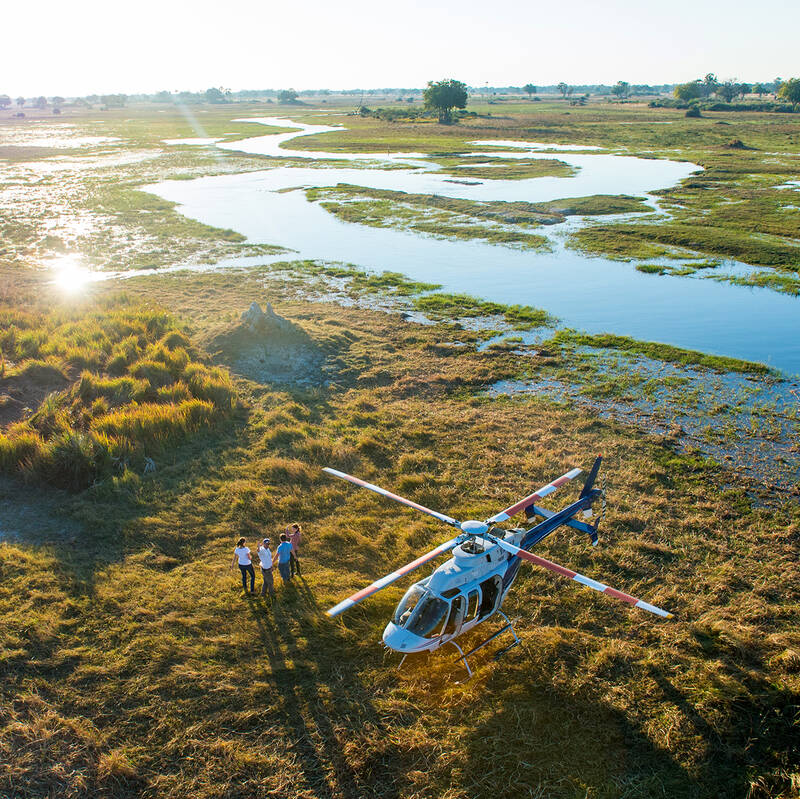
Helicopter Flight - Botswana
Various: from 30 minutes to half a day.
Low-flying, agile and offering superb views, helicopters are an ideal way to move around the Okavango Delta. You can use them instead of fixed-wing inter-lodge transfers or as an addition to other wildlife watching activities, and of course, helicopters can hover to allow that perfect pic, whereas fixed-wings can’t.

Need inspiration?
Let our trip chooser narrow down the options for you
Other areas in Botswana
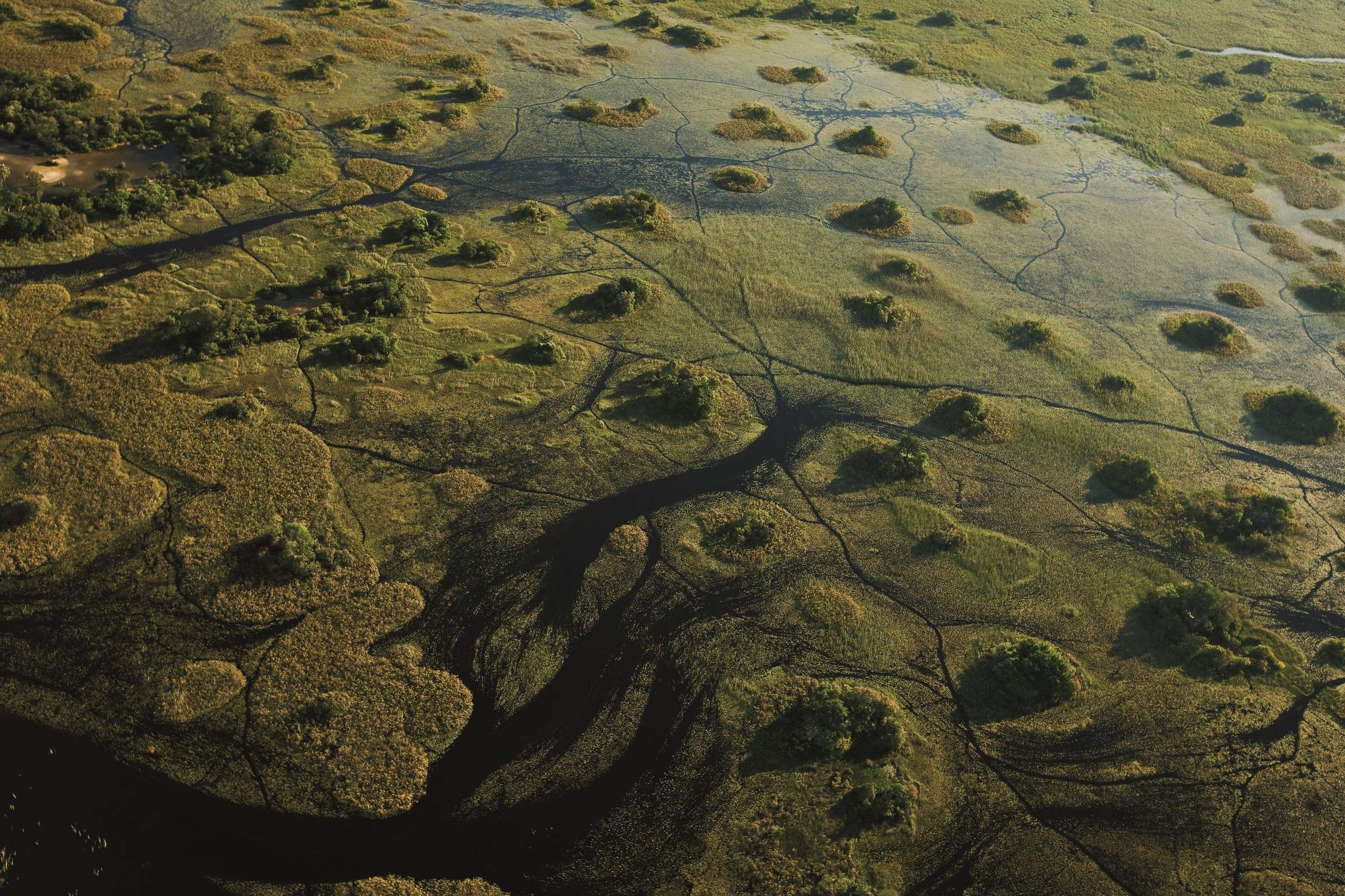
Okavango Delta
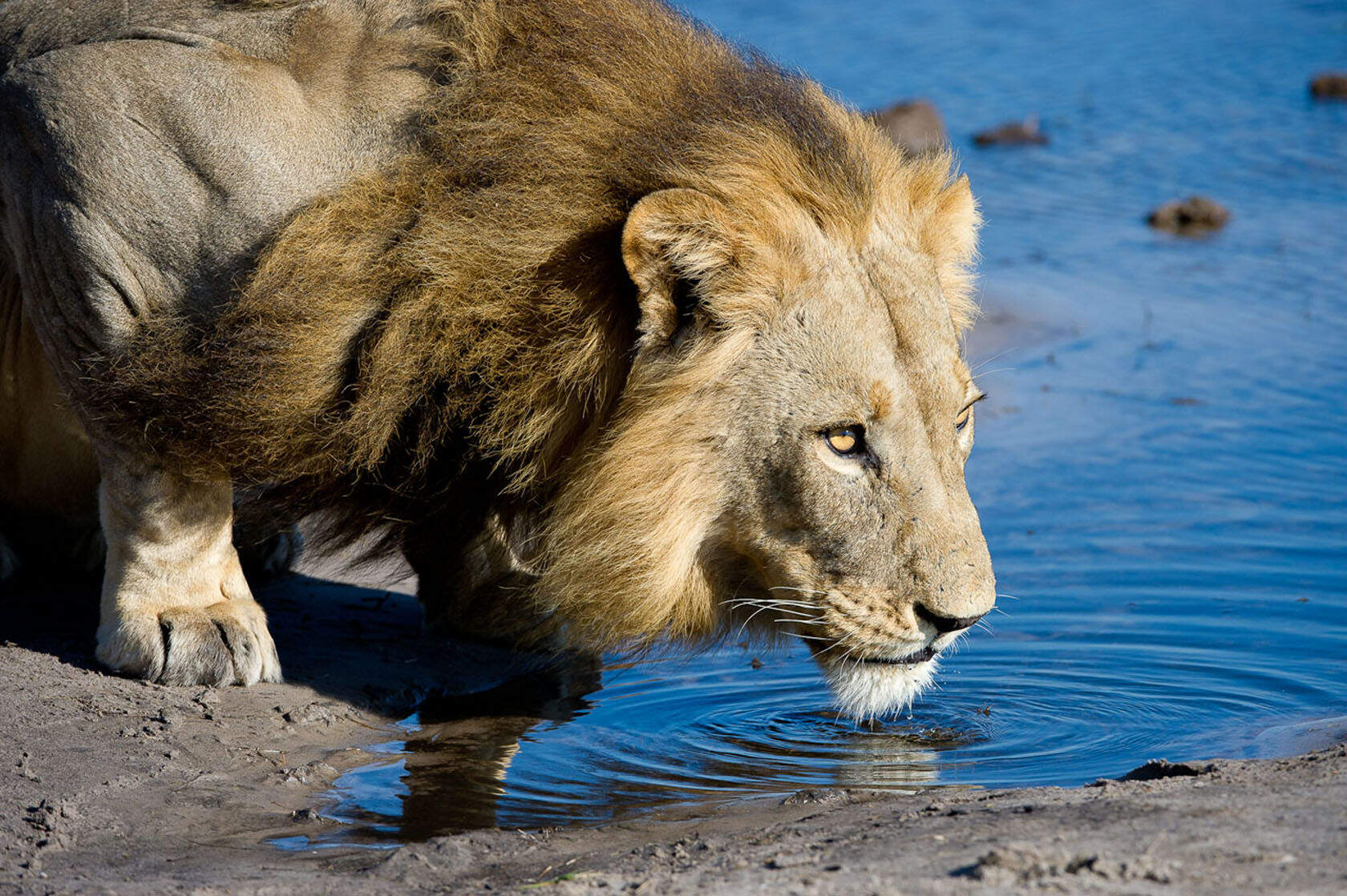
Kwando-Linyanti
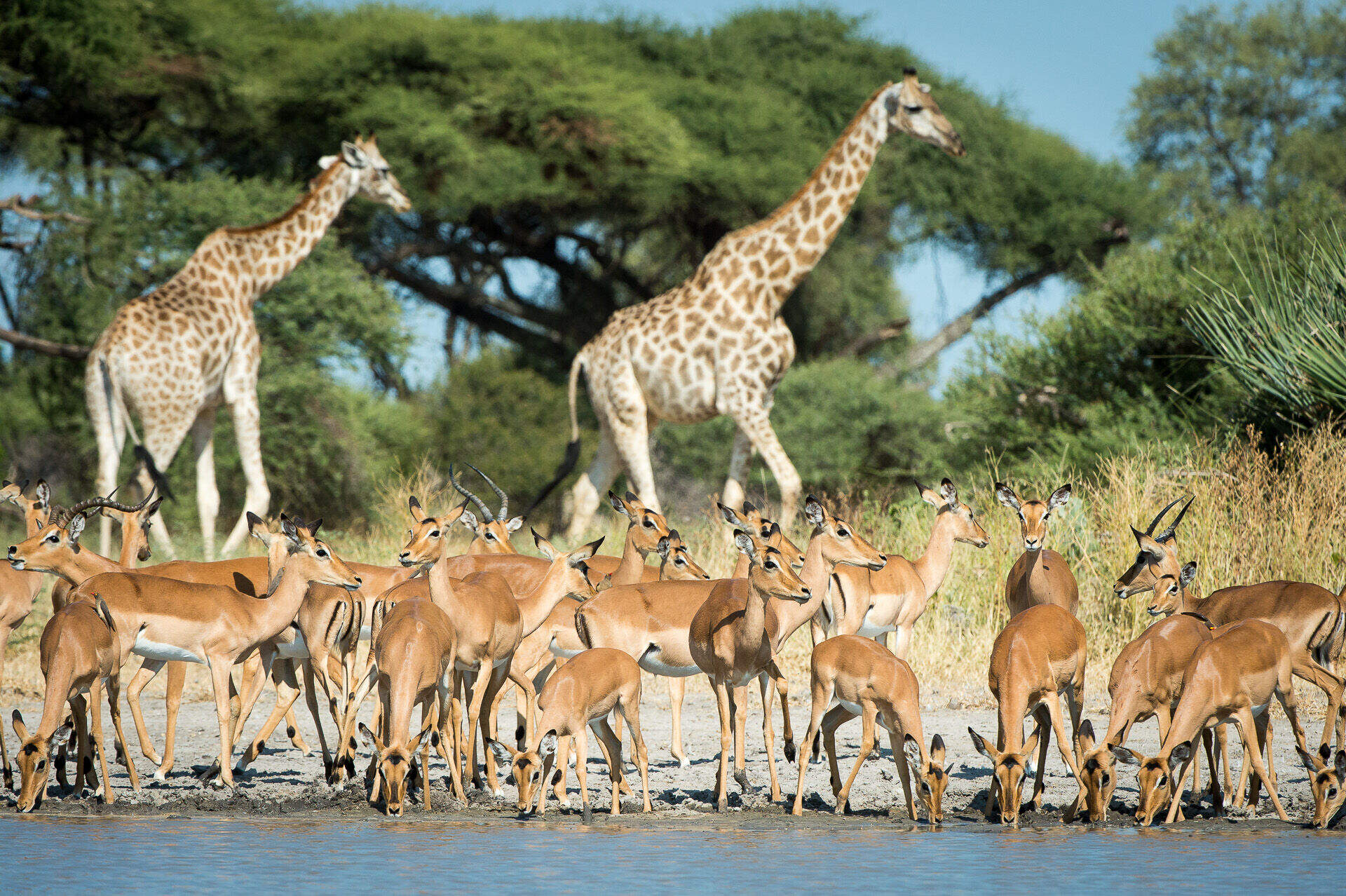
Kalahari Salt Pans
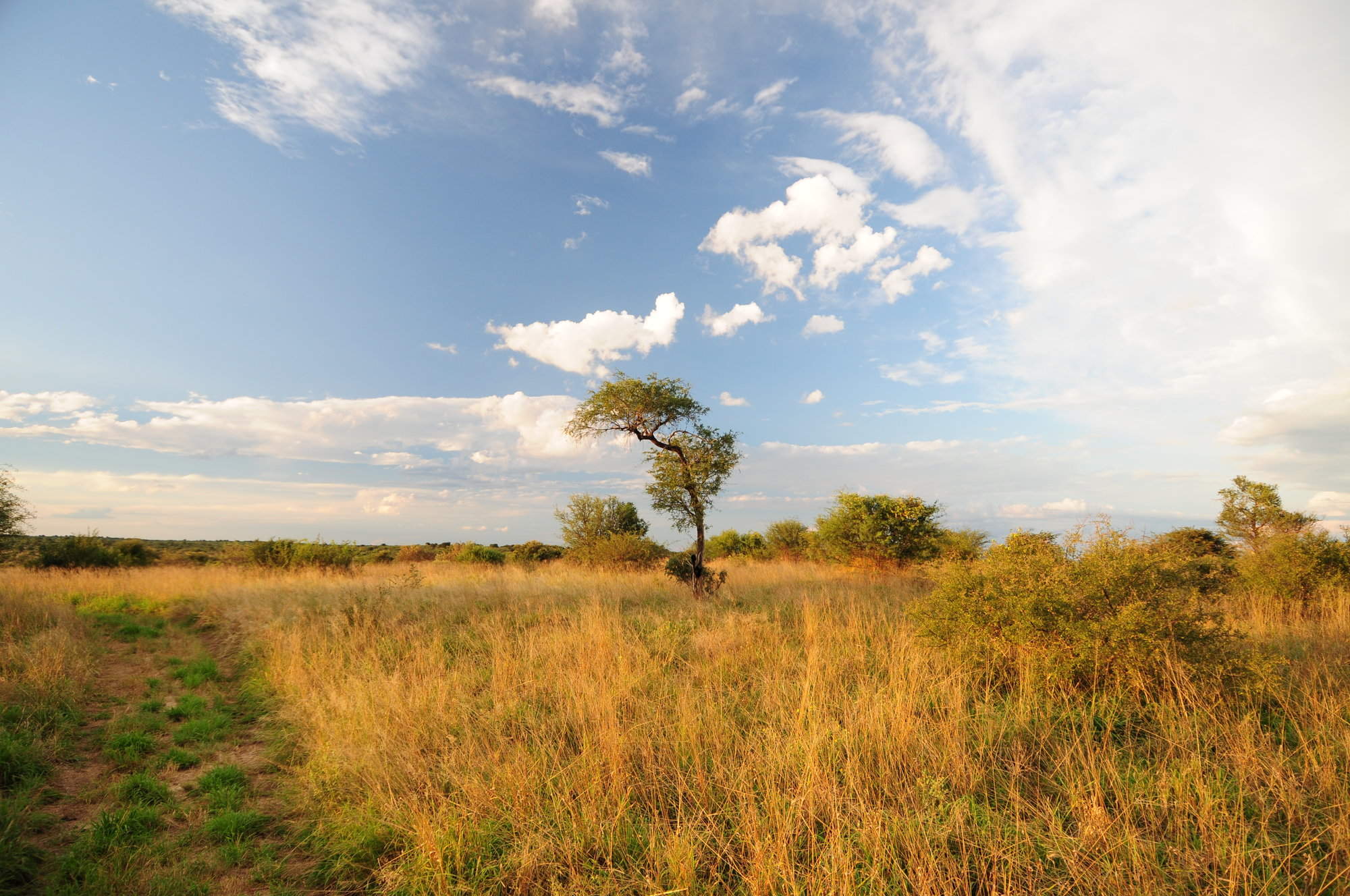
Central Kalahari
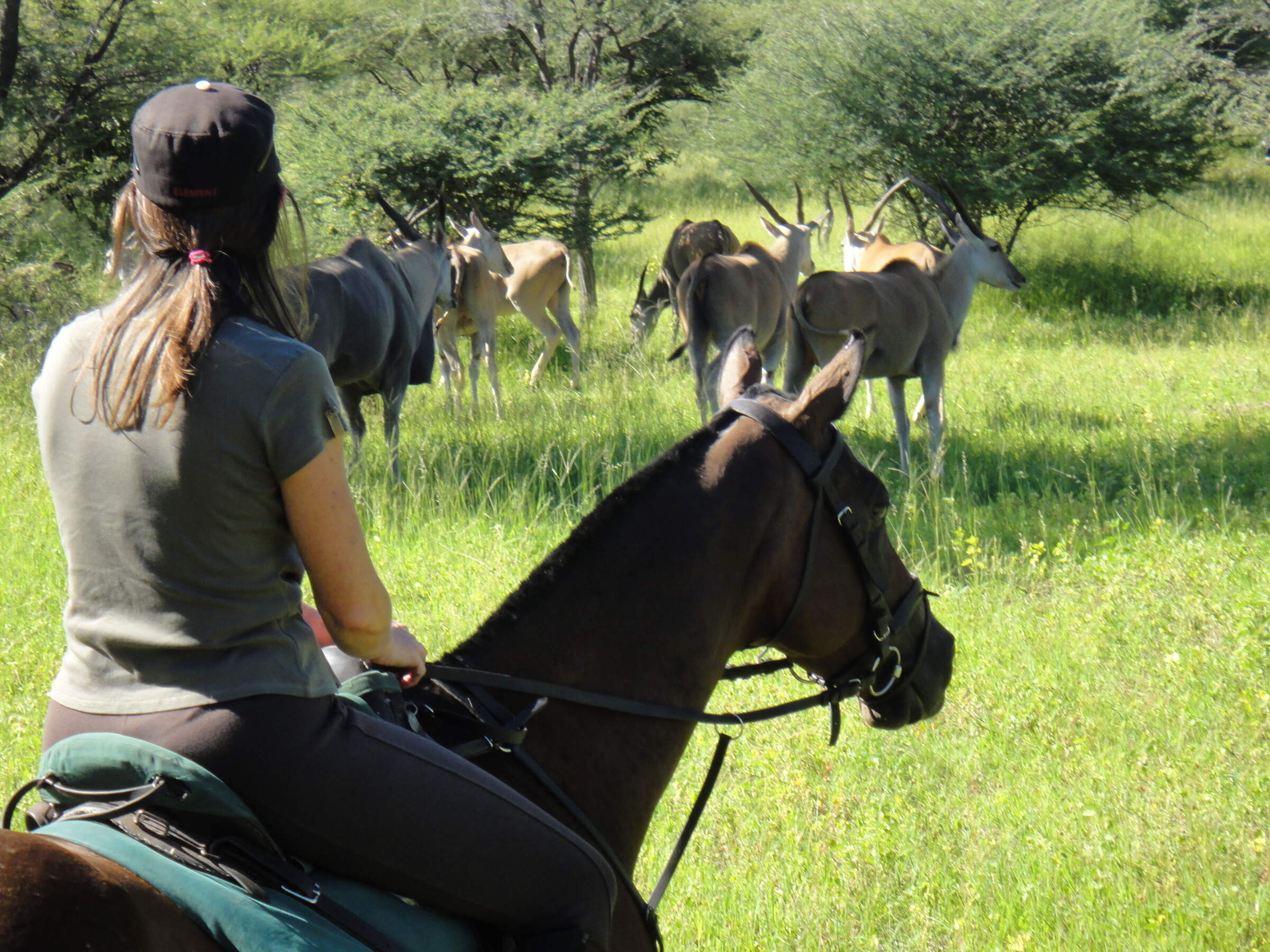
North-west Kalahari
Login to Expert Africa
Sign in with password
Sign in with email link
New to Expert Africa? Create an account
Forgotten your details?
It's free & quick to set up
- Save your wish-list
- Send us an enquiry
- Pay online for your trip
- Subscribe to our newsletter
- Give us feedback on your trip
- Full site benefits of the site
Need some help? Talk to our team

Stay in the know with Expert Africa
Join our newsletter. Get the latest on new camps and lodges, insights from our team, uplifting conservation stories and more...
A few more details and you're subscribed

Chobe National Park

Sub regions inside
Broader region.

Chobe National Park nestles in northern Botswana and is renowned for Africa's largest herds of elephant and Cape Buffalo. Considered to be Botswana's oldest reserve, Chobe offers a true wilderness experience with private concessions and camps that are unfenced and open to free roaming wildlife.
Chobe National Park can be visited throughout the year. Wildlife migrates through the park with the seasons. The riverfront area is best visited in the dry months, from May to October. August to October are the optimum months for wildlife viewing here, but it gets extremely hot at that time. During the wet months, many animals, plains zebras specifically, migrate to the Savuti Marsh. Linyanti is best visited from April onward.
There are three significant areas that make up the Chobe - Kasane, Savuti, and Linyanti.
Kasane is the perfect starting place for your safari adventure, a bustling town that shares an unfenced border with the Chobe National Park and is the main gateway to the Chobe and the rest of Botswana. It also offers an easy access point to Zambia, Zimbabwe and Namibia. The Savuti , also known as Savute, is renowned for its predator sightings and big game, offering sanctuary to the greatest concentration of animals in Southern Africa. The Linyanti is situated north of Savuti in a corner of the Chobe National Park and is most famous for its large herds of elephants, lion, sable, roan, hippos, and wild dog.
The Chobe National Park offers a well-rounded safari experience with open-vehicle game drives, walking safaris, mobile safaris, birding safaris, and boating safaris. Accommodation in Chobe varies from private safari lodges and authentic tented camps to luxurious houseboats on the Chobe River.
.webp)
Customer Testimonials

Aug 30, 2024
Leigh-Ann super star ⭐️
I am so pleased to share my experience with Leigh-Ann, who assisted with our safari and South Africa travel arrangements. From start to finish, Leigh-Ann went above and beyond. Her attention to detail and smooth communication made the planning process effortless. No request was too big or too small, and she handled everything with efficiency. Leigh-Ann exceeded all expectations, making our trip both stress-free and enjoyable. Her exceptional service reflects her professionalism. I highly recommend her for anyone seeking top-notch travel support. Thanks so much Leigh-Ann :)
Aug 27, 2024
Very good experience with getting quotes
I didn’t end up booking with safari.com but I did have a great experience with their consultant, Leigh-Ann Croeser. I originally wanted to book a safari at a specific lodge but it was not available for the dates we wanted. She offered suggestions and helped us secure holds on other dates. She worked hard and sent several follow up emails as she was able to hold some dates for available rooms at the original lodge! We did end up booking with another safari tour company as I sent out a few quotes at the same time and that worked out better for us but next time I would definitely consider booking with her again!
Easy,reliable
I do all my bookings through…
I do all my bookings through safari.com. Fast feedback. I changed my booking twice and was assisted in 12 hours after my email. Great service
Aug 24, 2024
Pascal the man
South Africa & Mauritius honeymoon
Its been fantastic to work with Leché from over the last number of days in planning our honeymoon. Leché has been excellent with communication, approachable and affable. She has been on hand to answer any queries immediately, day and night. With excellent guidance or work around solutions and advice. I would highly recommend Leché for booking your trips, she is a credit to the company and a really nice person
Aug 23, 2024
Available and competent
Available and competent, thank you.
Aug 22, 2024
Leché Miller is the best
Leché Miller is the best. Very communicative, responsive, and thorough in her explanations, quotes, and detailed itinerary. Made planning this incredibly easy.
Shann has been absolutely exceptional
Shann has been absolutely exceptional. She is super responsive and has gone above and beyond in assisting us to book a 50th birthday celebration for a large group. Highly recommend her! Thanks so much Shann!

THE JEWEL OF WESTERN CHOBE
Muchenje Safari Lodge is situated high on an escarpment on the quieter western side of Botswana’s Chobe National Park. With wonderful views of the Chobe River and the seasonal flood plains, its position means that it is far away from the bustle of Kasane yet just two hours from the magnificent Victoria Falls.
Muchenje Safari Lodge is independently owned and run. It is within the Chobe Forest Reserve, just a short drive from Chobe National Park. There are no fences between the Western Chobe Park Boundary and the Lodge; animals roam free.
Chobe is renowned for its prolific wildlife and huge concentrations of game. Muchenje prides itself in the variety and quality of safari experiences, allowing you to explore the Chobe and all its wonders.
There are wonderful views over the Chobe River from the main lodge and all of the luxurious cottages.
Being owner run, Muchenje Safari Lodge allows for a more personalised service and homely atmosphere. With experienced managers and guides looking after you every step of the way.

Awarded the Certificate of Excellence
Muchenje Safari Lodge offers 12 thatched private cottages, each beautifully appointed and having its own unique view of the Chobe river and the animals who drink from it.
We are just 2 hours from Victoria Falls and 45 minutes from Kasane International Airport.
Muchenje is an independently owned safari lodge welcoming guests to muchenje for over 20 years.
The lodge was formally opened by the then Vice President of Botswana, Festus Mogae, in October 1996.
The original founders Shaun Metcalfe and Ted Makgekgenene, are both still heavily involved in the Lodge.

Pack for a Purpose
Muchenje Safari Lodge has supported the nearby Mabele Primary School for over 20 years. The school is a Government School which also includes much younger pre-school children.
A number of our guides attended Mabele School when they were younger and so maintain strong links with the school. Indeed, many of Muchenje’s staff had their primary schooling at Mabele.
We also support Kachikau Special Unit School which is for children with special needs.
Muchenje is part of “Pack for Purpose” which arranges contributions, gifts and donations to Mabele Primary School and to Kachikau Special Unit School.
If you save just a few kilos of space in your suitcase and take supplies for the projects we support in need, you’ll make a priceless impact in the lives of our local children and families. Please click here to see what supplies are needed for our project/projects for example pens, pencils, paper, footballs, books, and writing pads.
Muchenje is extremely proud of its involvement with Mabele Primary School and will continue to support the school. These children are the future of Botswana.
If you don’t have space to spare then please let us know and we can assist with locally sourcing supplies for you when you are at Muchenje.

READY FOR AN ADVENTURE?
Request our brochure.
Email: [email protected] Skype: muchenje.reservations Phone: +27 (0)72 170 8879

Copyright © Muchenje Safari Lodge | Sitemap
3 days (2 nights)
Day 1 – Arrive at Muchenje around lunchtime
3pm, game drive to Western Chobe National Park
After dinner, night time safari
Day 2 – Sunrise, early morning game drive, back for breakfast. On cold mornings, we provide ponchos and hot water bottles.
09.30am, all day safari with Sedudu boat cruise
Day 3 – Sunrise, early morning walk (weather permitting), back for breakfast
Morning departure
4 days (3 nights)
Day 3 – Sunrise, early morning walk (weather permitting), back for breakfast. On cold mornings, we provide ponchos and hot water bottles.
10am, Cultural village tour, and/or school visits (term time only), back for lunch
3pm, game drive to Western Chobe National Park, or relaxation time before
4pm, game drive in front of Muchenje with sundown drinks and snacks.
Day 4 – Early morning activity, walk or game drive- or relax at the lodge
5 days (4 nights)
After dinner night time safari
Day 2 – Sunrise, early morning game drive, back for breakfast
09.30am, all day safari Sedudu boat cruise
Day 3 – Sunrise, early morning game walk (weather permitting), back for breakfast
10am, Game drive followed by lunch at Ihaha, return to the lodge by 5pm (boat cruise included April to September), or return earlier for sundown drinks and snacks on the river in front of Muchenje.
Alternatively, another full day safari (Sedudu) could also be made available on any of the days. We are very flexible.
Day 4 – 6.30am leave for breakfast at Ihaha, with return back to Muchenje by 1.30pm for lunch.
OR – cultural trip to the village and schools, leaving the lodge at 10am
3.30pm, mokoro (canoe) excursion on the Chobe river, return to the lodge by 6pm.
Day 5 – Early morning game drive or walk/mokoros
ALL THESE ITINERARIES ARE FLEXIBLE. GUESTS CAN PICK AND CHOOSE WHAT THEY WISH TO DO.
IF PEOPLE WISH TO RELAX AT THE LODGE, SWIM, ENJOY THE VIEWS, CHAT TO A GUIDE, THEY ARE WELCOME TO DO SO. THERE IS NO PRESSURE TO DO ALL OF THE ACTIVITIES.
FOR 5/6 DAY VISITS WE CAN OFFER AN ALL DAY TRIP TO VICTORIA FALLS (EXTRA CHARGE).

Boat Cruise & Game Drive Day Trip

Okavango – Chobe – Victoria Falls

Four Rivers Safari

Botswana Adventure Safari

Chobe Savuti Safari

Chobe Photographic Safari

3-Day Chobe Camping Safari

Okavango Lodge Safari
Chobe Safaris
Chobe Safaris inside the Chobe National Park. This unique national Park offers 4x4 roads along with an abundance of wildlife. Chobe safaris provide a variety of safari options to travellers. We have selected a range of experiences, including visiting the Chobe National Park. You can choose the level of comfort and adventure on your Chobe safari. Plan your visit to Chobe National Park. You can stay inside the Park or outside on the outskirts of the Park. The Chobe is accessible, and one can visit the Park daily.
Chobe Activities
Chobe Day Trips: You can visit Chobe Park on an open game drive vehicle and experience the wildlife of Botswana. You can also select a boat trip and enjoy a game viewing or sunset boat trip on the Chobe River.
Photographic Safari: Join a team of professional photographers and learn the art of wildlife photography. Wildlife photography is more than just capturing animals and landscapes. You can learn the techniques and functions of your camera equipment. Learn how to catch the action and compose your photographs. This Photographic safari will give you an added advantage before starting your Botswana Safari.
Multi-Day Camping Safari
These multi-day safaris are inclusive. These safaris will include park fees, entrance fees, all camping equipment, and meals and game drives—an excellent safari package for travellers on a budget.
Mobile Camping Tours: Mobile camping tours will take you into the heart of Chobe Park. Usually, a camp and passenger crew will guide you on your safari. These mobile safaris can be anything from 2 days to 21 days. They all pass through Chobe National Park.
Chobe Lodge Safaris: Lodge safaris are fully inclusive, with all activities, meals, and accommodation inclusive of the packages. Enjoy the wilderness and bush life in your chosen lodge's comfort.
Chobe Exclusive Flying Packages: Flying Safaris is the perfect fully inclusive safari for the discerned traveller. Suppose you seek a level of comfort, luxury and adventure in the bush. Small charter planes will transfer you to your lodges and destinations of choice. The advantage is the aerial views of Botswana and exclusive remote destinations. Flying Safaris are perfect for travellers with a limited travel time.
Chobe Safaris Highlights
- Multi-Day safaris.
- You can enjoy Exclusive Safari Packages.
- Book your Private Safari Tours.
- Enjoy the Excellent views over the Chobe Floodplains.
- Drive along the Chobe River.
- Experience Some of the best Birdwatching in Botswana.
Kasane is a popular destination in Botswana. It is a gateway to three surrounding countries, Namibia, Zimbabwe, and Zambia, neighbouring Botswana. The city is perfect for a two or three-day stopover, making vehicle repairs, buying supplies and experiencing the Chobe National Park.
Day visits are prevalent in the Park. Enjoy an open game drive vehicle with a local guide. Most of the Kasane and the Park lodges offer whole game drives during your stay. Do not miss the opportunity to explore the Chobe National Park with professional safari guides.
When is a good time to visit Chobe on safari?
Chobe National Park is accessible throughout the year. Some roads will be closed during the Rainy season from November to April. However, you can still visit and experience the change of season. The camping safaris are best from May to December every year. Day visits during the rainy season will still allow for excellent wildlife experiences.
The local guides are professional and have years of experience. It is best to partake in a guided safari to introduce the Park and the animal behaviour. After that, you can explore the Park once you have an orientation and the road conditions.
Why Choose a Chobe Safari with local companies and guides?
The Chobe Park is a vast conservation area, and at Kasane, the Park meets with the Chobe River. Local knowledge and experience will teach you the behaviour of the animals. You will also have the chance to orient yourself in the Park and familiarise yourself with the roads. As a first visit to the Park, the local knowledge is decisive for your experience and identification of the wildlife and birdlife. A combination of a Chobe Game Drive and a Chobe River Experience will show the contrast between the Park and the behaviour of the animals.
How to Choose your Chobe Safari?
First, decide how you will travel towards the Chobe National Park. Are you joining an existing safari tour, flying to Botswana or undertaking a self-drive safari? Once you have chosen your mode of travel to the Park, select your time frame within this area of Chobe and Kasane. Select your accommodation or camping site in Chobe or Kasane. We suggest visiting the Park and the Chobe River for at least two full days.
Chobe Camping Safaris

Zahn, thank you very much :-)))) we are so happy!! You Made my day ;-))

CONNECT WITH US
Our website uses Cookies for a premium user experience and for statistics tracking
BOOKING REQUEST FOR

~ ASK US A QUESTION ~
Thank you for your interest.
Hello world
4-day Chobe National Park SAFARI
Exclusive all-inclusive luxury experience - promotion 33% off, considered to be botswana's oldest reserve.
Chobe National Park nestles in northern Botswana and is renowned for Africa's largest herds of elephant and Cape Buffalo. Chobe offers a true wilderness experience with private concessions and camps that are unfenced and open to free roaming wildlife.
There are only 8x suites available at Ngoma Safari Lodge, which speaks to the intimacy of lodge. Each suite has a view of the river offering the opportunity to see the famous Chobe elephants, migrating zebra or buffalo grazing on the floodplain below.
Located in the Chobe Forest Reserve, on a private concession, and only 3km away from Chobe National Park. This means it offers seclusion and privacy, while being close to the popular tourist destinations and boasting the exclusivity you'd expect on a private reserve.
Bush walks, night drives, full day safaris, bird-watching, cultural experiences and, last but not least, game-viewing by boat! A private vehicle for game viewing is available on request at an additional charge.
Location and getting here
Firstly, we'll handle everything including your lodging, flights and transfers! Ngoma Safari Lodge has three nearby airports. The great news is your safari begins at the airport, as the drive features game-viewing en-route. - Kasane Airport (BBK), which is 45min away from the lodge - Victoria Falls Airport (VFA) is a 2h drive to the lodge - Livingstone Airport (LVI) in Zambia is also a 2h drive from the lodge Guests can do a self-drive by picking up a rental car at the airport, or we can arrange a transfer for you.
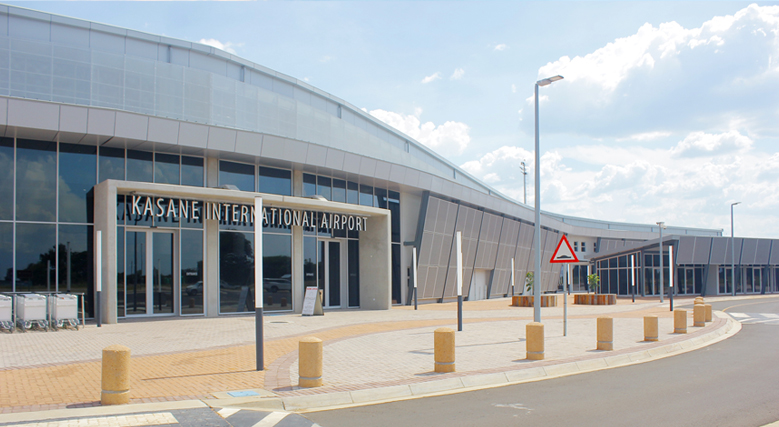
Our 5-star service
1 Place your enquiry. Be sure to include number of travelers, dates and whether you require flights and/or transfers
2 A reservations agent will liaise with you directly to coordinate all the details of your trip.
3 You'll receive a provisional booking via email. Complete payment and you're ready to travel!
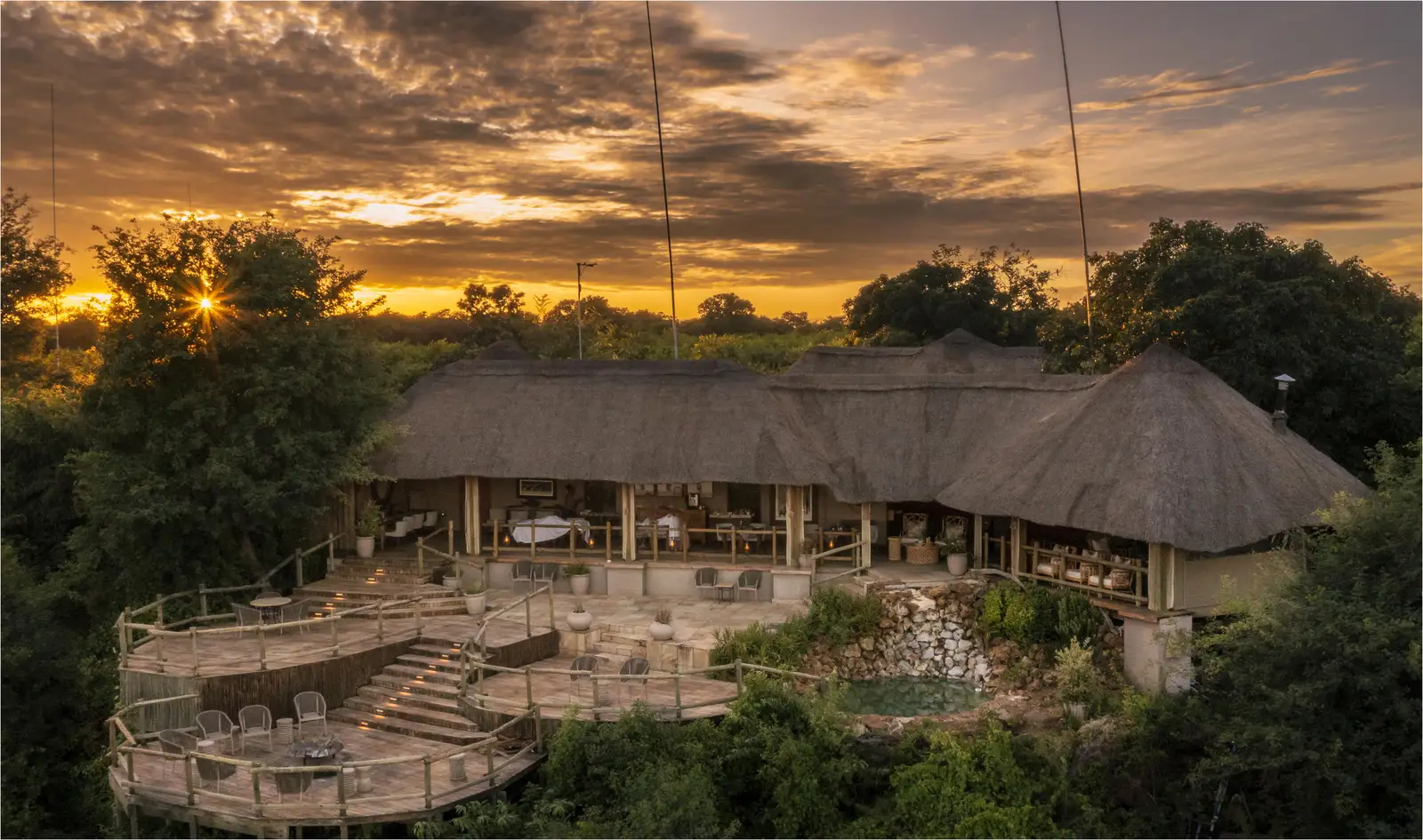
THE ROOMs - ONLY 8 UNITS AT LODGE
Suites with balcony, outside shower and private pool.
Each of the lodge’s river-facing suites offers quiet refuge in a luxurious setting with an emphasis on space and comfort, and comes complete with overhead fan, air conditioning, mini-bar and tea/coffee facilities, bath, indoor and outdoor showers as well as a private outdoor living area with a ‘refresh and relax’ pool.
PROMOTION: 4 DAY package in a river-view suite
Meet anja, our resident expert, she'll help you book your trip..
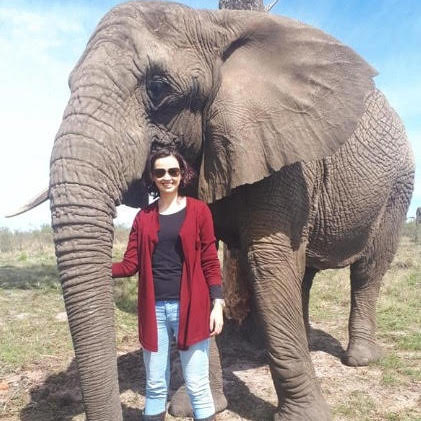
Our reviews from TripAdvisor
Intimate luxury near the chobe national park.
Chobe National Park
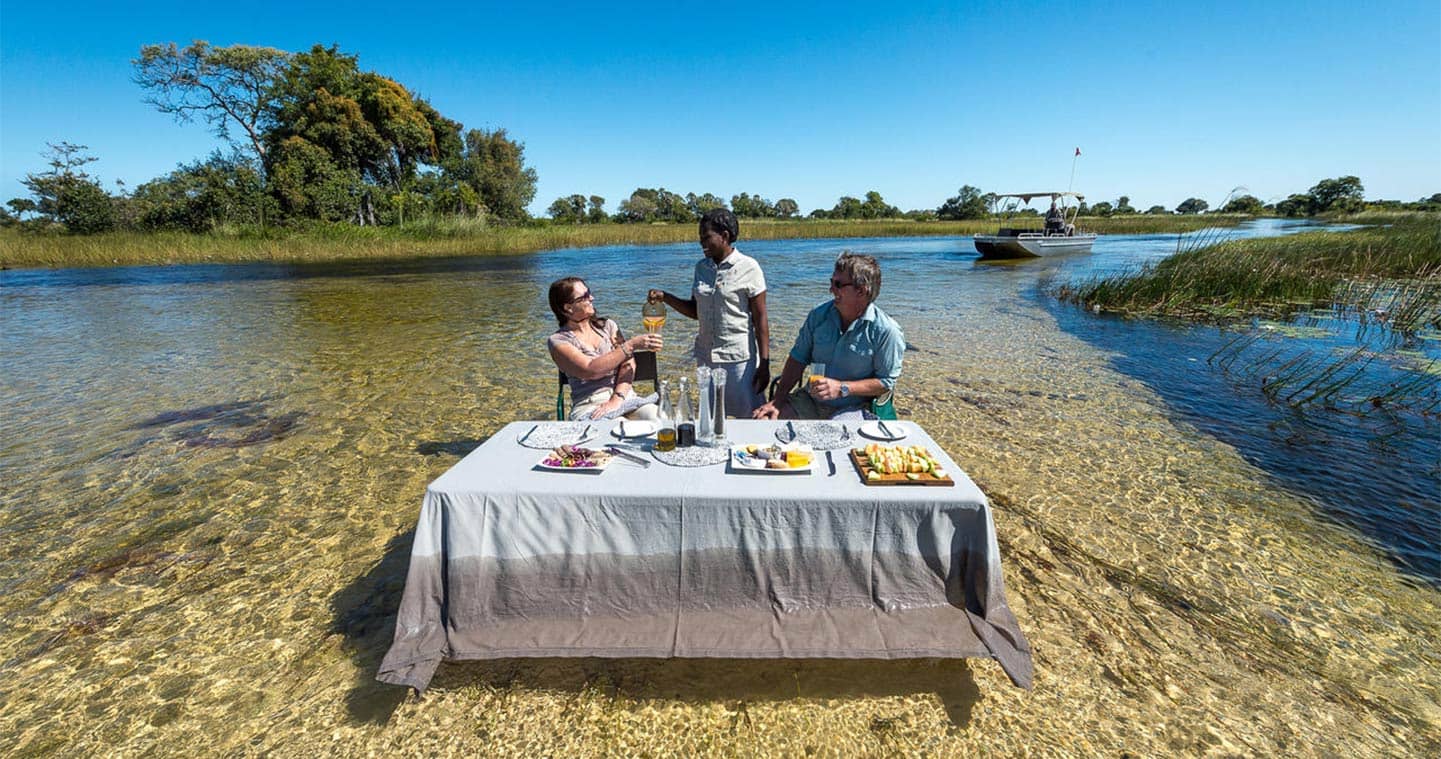
When to visit the Chobe National Park
We would love to provide a simple ‘this is the best time to visit’, but there is no such thing when it comes to Botswana. The Chobe National Park changes dramatically with the seasons, making it a year-round destination. Feel free to come at any time to experience the wonder.
Visiting Chobe National Park is more than just crossing the Big Five off your list. It is the complete package: broad skies, amazing sunsets, constantly changing colours, a warm African breeze (and even warmer African hospitality), lily padded waterways and – of course – some of the best game viewing imaginable. This combined, is what will make your trip truly memorable.
Chobe National Park and the seasons
We can definitely help you determine what is the best time for you to go. Botswana has both wet and dry seasons. In Chobe National Park, you will find a wider variety of bird species during wet season. When it comes to game migration: during dry season most animals stay around the riverside. When wet season begins, the interior pans (Savuti) provide amazing game sights. Although this is worth visiting all year round, April, May and November are particularly good times.
Wet.. or dry?
Most travelers pick the dry season for a safari in Chobe National Park, as ever-increasing water independent animals stay around the Chobe River. During the hot months – August, September and October – there is some sensational game viewing, if you can stand the heat… The rainy season is definitely worth considering, especially for birdwatching. During the wet season, most accommodations have less visitors, so you are in for a very personal experience. Also, child policies can be more flexible in this period. Nevertheless, all camps in the Chobe National Park feel personal, intimate and are small-scale.
Here’s a little bit about both seasons.
- May to November
- Ideal for a first time Africa trip
- Nights in the Chobe are never below freezing and the days are seldom unbearably hot
- Note that in November the weather is variable: rain or shine, hot or cold
- Between December and April
- January and February are the rainiest months
- Spectacular skies can change within minutes from cloudy to sunny to cloudy again
- Showers are usually short and heavy, but there are days when the sky remains grey
- Waterproof clothing is necessary, but the rain doesn’t need to stop you from doing anything
Please note that in Africa the weather is harder to predict these days. But as long as you look at your trip as an holistic experience with all its aspects, you will fully enjoy it.

Self-Drive safari in Chobe National Park in Botswana: Complete guide
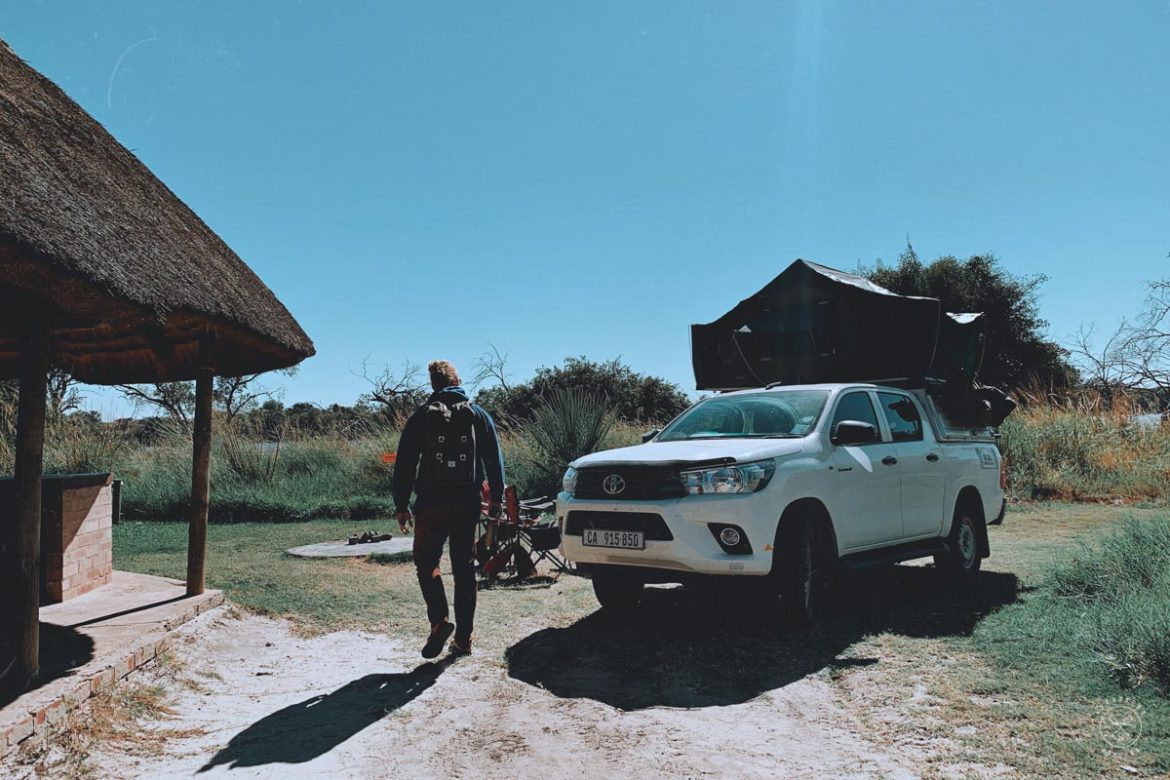
If you are planning a road trip in Botswana and planning to do a few self-drive safaris, Chobe National Park and the Okavango Delta is certainly one you can’t miss! You must be on point with your information, and for several reasons as tour companies and locals are quite protective of their national parks to encourage local businesses while you book their local safari excursions.
Best time to go do a self-drive safari in Chobe
First things first, when is the best time to visit Chobe National Park? We traveled in early May in Botswana. April to October is the best period to go to the Southern African part in general for wildlife watching. As the dry season is during this period, animals tend to roam more around waterholes, making it easy for animal spotters like us to find them around those points of interest.
Weather is chilly at night and hot during the day but not horribly hot, which makes it even better for safaris.

Chobe National Park fees
Park fees are to be paid at the entrance gates. Fees are valid from whenever the time you pay them until the next day at 11 AM. Foreigner adults are 120Pula per person, per day and cars are 50Pula (about 10 pula is 1$USD) Campsites within the park are approximately 50$USD per night.
Recommended car for a self-drive safari at Chobe National Park
Needless to say, you better be experienced driving on sandy roads and off-road because there are no nice roads at all in Chobe! Better not drive alone but with another car for the classic and famous “just in case” situation!
This mean that you better have a car that can drive off-road, means that it is recommended to drive a 4×4. 4×2 tend to also get stuck so if you are driving a 4×2, just go along with friends so they can tow you out in case of being stuck. If you plan to only rent your car in Botswana, you can rent self-drive 4×4’s in Maun or Kasane.

How to get to Chobe National Park and get around
Chobe has several gates to the reserve but from Kasane, you will take the main one that all safari’s of the lodges around take. Pay your park fees and the adventure begins.
If you drive North coming from Maun (a central city in Botswana), you will visit Moremi National Park before entering Chobe.
You won’t get good cellphone reception at all, non-existent we must say, so it is recommended to have your Maps.me downloaded to navigate and being able to pin places you’ve seen in the park. Tracks4Africa is a recommended app to get your way around in the National park. as it includes interest points like campsites, attractions, petrol, etc. In other words, it’s like iOverlander but with more information and which you will have to pay 20$US to buy the Botswana guide. Your GPS or Garmin will work to navigate around as well.
Things you need for a self-drive safari in Chobe National Park
- Proper vehicle: As we mentioned before, you better have a 4×4 and a driver comfortable driving on sandy roads and off-road. It is very common for cars to get stuck in Chobe.
- Food & drinks: Get all the snacks you need for the day if you plan to only do a day trip. If you plan to drive to a campsite within the park, make sure to have everything you need for dinner unless you plan to dine at the restaurant of your lodge. Make sure to bring a whole lot of water with you as it can get hot during midday.
- Extra fuel: Only if you plan to stay within the parks, bring enough gas as there are no petrol stations in the parks. If you drive from North to South towards More, you can find fuel in Khwai village in Moremi from locals but it is expensive and it is not certain to get some.
- Sat phone: If you plan to get really adventurous staying long in the national park, it is recommended to have a satellite phone to be able to have some means of communication for emergency situations.
Camping and staying in the park during your self-drive safari in Chobe National Park
Note that it is quite expensive to camp within the camp. Prices are around 500 Pula (around 50$US) per person just for camping in the park. We really recommend you to stay at one of the lodges around and get in an out of the park after your safari.
Kasane is a popular base for people that want to do a Chobe Safari and there are several options you can choose from. During high season, it is highly recommended to book in advance, otherwise, you are fine doing like what we did and choose one from iOverlander and drop-in to see if they have space. We personally camped at the Thebe River Safari Lodge and also tried their safari sunrise game drive at 440 pula per person.
If you plan to camp within the parks, you will probably need to book in advance as they are your only options for accommodation. Wild camping is not recommended nor allowed and if a ranger catches you wild camping, you will be invited to leave.
List of lodges/campsites in Chobe
There are 3 public campsites in Chobe but the public still means that you need to pay to stay there! Note that the stays inside the park are mostly booked out well in advance, mostly because of the tour groups.
- Savuti Campsite & Linyanti Campsite (by SKL Camps), note that the road to Savuti can be hectic just after the rainy season and that guests have been minding the terrible noise of the generator.
- Ihaha Campsite(by Kwalate Safaris)
- Other options are Mwandi view and Muchenje campsite, around 14km to the western gate of Chobe.
List of lodges/campsites in Moremi
- Xakanaxa Campsite & South Gate Campsite (by Kwalate Safaris)
- Third Bridge Campsite and Gcodikwe 1 Island Camp (by Xomae Group)
- North Gate Campsite (by SKL Camps)
Chobe National Park Self-Drive Safari Complete Checklist
- 4×4 vehicle
- Good camera with a zoom lens, 70-200mm or 200-400mm, read more about our safari Nikon photography gear
- Petrol if you have a small
- 4×4 Toolkit (recovery kit): make sure it has a shovel, high-lift jack, sand ladder and tow rope
- Lower your tire pressure as soon as you enter the park as it is sandy right away
- Tire air compressor
- One or ideally two spare tires
- A satellite phone or other navigation systems
- Food and beverages, lots of water
- First aid kit
- Lighting devices
- If you are camping, make sure you have your own wood, matches, etc just in case the lodge doesn’t have any for you to buy
The recommended number of days for a safari in Chobe National Park
Specifically, if you are self-driving, it is recommended to stay about 5-days to about a week if you plan to as well see Moremi National Park. That long period is suggested just to increase your chances to witness animals hunting and for you to spot the harder species like lions and leopards.
What animals can be spotted in Chobe National Park
- Elephants, a whole lot with their beautiful tusks
- Hippopotamus
- A whole lot of birds
If you are lucky you can also spot
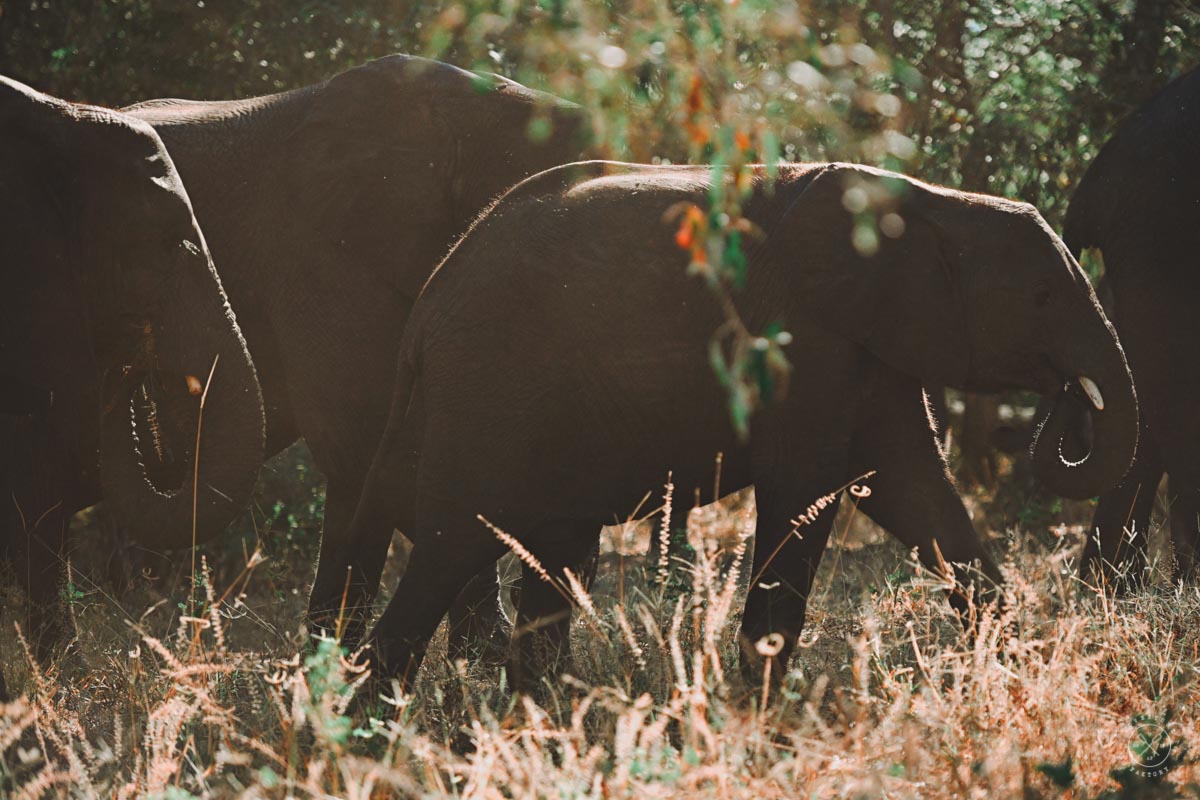
Have a Safe Safari in Chobe!
Hope you get an amazing time at the Chobe National Park for your self-drive safari. Information is important, so let us know in the comments below if any changes or extra tips would be useful for travellers to know about.
PS: Note that after some research, we found that rangers sometimes make you wait until 9 AM to give priority to all the private safari guided tours. This is not always enforced but when it happens, there is no point to argue to make them let you in.
- Let us know how your trip goes and please do contribute and leave us updated info in the comments section so every future traveller can benefit from the collective knowledge.
- If you want to drive Southern Africa like us, go read Driving From Cape Town To Johannesburg Passing Through Nambia, Zambia and Botswana so you can get all the precise and day to day tips from our experience!
- Don’t forget to book your travel insurance before travelling.
- If you don’t have your flights, check out ways to book the cheapest fares here .
If you like this article, follow our Adventures on Facebook , YouTube , Twitter , Instagram @adventurefaktory , but most importantly sign up to our E-mail list to keep up with updates and travel trends + deals!
Living in Dubai
You may also like.

A Pet-Friendly Getaway at the Radisson Hotel RED Dubai Silicon Oasis

Best Places to have Ice Cream in Montreal
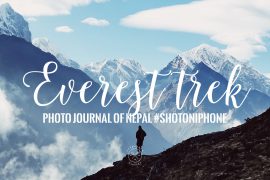
Incredible photos of Nepal shot on iPhone 8 Plus
More stories.
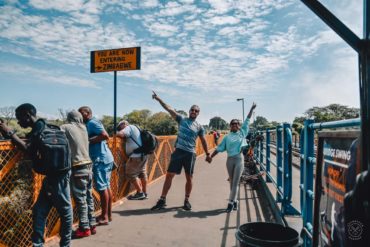
Bungee Jumping in Victoria Falls: Feel the rush!

- Gift Vouchers

Chobe Day Trip from L/stone Zambia EXCLUDING Park&Bridge Fees
Victoria falls.

Our sign-up free booking process temporarily stores booking details on your device.
To continue, please disable private browsing and refresh the page., activity description.
Full Day Chobe Trip from Livingstone, Zambia. Enjoy game viewing in this iconic park. Chobe National Park is well known for its large herds of elephant that frequent the Chobe River on a daily basis. In the dry season an estimate of up to 85,000 elephants can be dispersed within the Chobe National Park, where the majority of them can be found along the river. Apart from the herds of elephants, Chobe also has lots more to offer. The Park has lion, leopard, buffalo and a whole host of antelope like sable, puku, kudu, eland, roan and many others which you can get to see. The river is filled with big pods of hippos and some of the biggest crocodiles in Africa.
This tour departs daily to the Chobe National Park in Botswana. Clients will be transferred to the Kazungula border where their Botswana guide will meet them. They will proceed straight to the morning cruise where they will spend the morning game viewing along the Chobe River. The cruise will end at around 12h30 and clients will go to a hotel on the riverbank for lunch. After lunch, guests will board safari vehicles for an afternoon game drive in the Chobe National Park. Following this they will be taken back to the Kazungula Border where they will be met by their Zimbabwean guide for their return transfer to Victoria Falls.
Arrangements
Requirements, inclusions and exclusions.
Visas may be required for this tour (for guests own account). Chobe National Park entrance fee & Kazungula Bridge Levy not included. Transfers outside Livingstone, Zambia
07:00 to 07:30 – Guests will be picked up from their hotel, in a closed bus, and proceed on a 70km journey through the countryside to the Kazungula border. • 08:30 – Arrival at the Kazungula Border, where guests will exit Zimbabwe/Zambia and enter Botswana. At the border guests will change vehicles and are met by their Botswana guide. • 08:45 – Once guests have gone through Botswana immigration, they will take a short drive to Chobe Marina Lodge. • 09:00 to 09:15 – Arrival at the hotel, where guests will have a short bathroom break, and will also be required to fill out the Park Entry form. • 09:30 – Depart on guests’ first activity; either game drive or boat cruise. If guests would like to go on a specific activity first, then they should please specify. • 12:30 – Return to the hotel for lunch. This will be served either a la carte or buffet style, with a selection of traditional and modern day meals to choose from. • 13:30 – Depart for guests’ second activity. This will be the activity of which guests will have not done yet. If guests did boat cruise in the morning, then they will do a game drive in the afternoon and vice versa. • 16:00 – Return from the Park and head back to the Kazungula Border. • 16:30 – Guests will meet their Wild Horizons bus and are transported back to their hotel. • 17:30 – Arrive at guests’ hotel.
Other Options

Customer Reviews
Overall, we were extremely happy and impressed with the service! The only thing that threw us off was the initial lack of contact prior to the trip. We were assuming that the company would reach out to us beforehand to determine where the pick-up location would be. However, once the day actually started, we loved the entire process. Thank you! - Lauren
The day trip to Chobe from Livingstone was excellent. The organisation, picking us up from our hotel, taking us to the Botswana border and through passport control and to the next guide was seamless both there and on the return. Chobe was a delight, both the river safari and jeep safari was exceptional and we saw loads of elephants, hippos, lions, giraffe, impala and warthogs amongst many other species of bird and fauna. - Helen
There were four people total in our car -- picked up from our hotel and taken to the ferry terminal. Up to this point, everything was going smoothly. We were transported to the other side -- and told that we would be met by the company/people who would be taking us to Chobe. We were not given the name of the company or any other information. We sat and waited, and watched as other people came across, were met by their guides, gone into their cars and left. Nobody seems to know why our vehicle/driver/guide was not there or even if they were just delayed (but on their way) or not coming at all. This was a rather frustrating start. We all would have understood if the driver was delayed. These things happen but the guests/clients should be informed. It is easier to be understanding and accommodating when we are kept in the loop. Instead, we encountered people who just shrugged their shoulders. I strongly recommend that you instruct your drivers and employees, particularly at the ferry crossing and the Botswana side, to take this onboard. Once we did get underway, the trip improved significantly. The boat ride was wonderful. The land part was rushed - and most of us felt like we missed out on incredible photo moment. At least six people in our party would have preferred to have gone BACK OUT on the boat in the afternoon...so two boat rides instead of boat ride followed by a drive. I think the excursion could be greatly improved by offering the clients a choice. - Arif
The Chobe day trip from Livingstone was wonderful. Our driver was on time and gave us lots of information on the local area as we proceeded to the border crossing. The next driver was ready for us and the transition into Botswana was smooth. The 2nd driver was very informative as well. We had an excellent river safari with the vessel crew. Lunch was good at the Chobe lodge. The land based safari in Chobe National Park was very interesting . At the end of our safari the transitioning was smooth again. I was very pleased with our day trip. The views along the Chobe River were beautiful and loaded with wildlfe - Joseph
- Privacy Policy
- Cookie Policy

© 2024 Tornado Tour Systems (Pty) Ltd ta Activitar.

Discovering the Wild: Best Places to Spot Exotic Animals
Top safari destinations.
E mbarking on a safari adventure is an exhilarating experience that allows you to connect with nature and witness some of the world's most magnificent creatures up close. From the vast savannahs of Africa to the dense rainforests of Southeast Asia, there are countless destinations around the globe that offer incredible opportunities for spotting exotic animals in their natural habitats. In this article, we will take you on a journey to explore some of the best places to spot these majestic creatures.
1. Maasai Mara National Reserve, Kenya
The Maasai Mara National Reserve in Kenya is undoubtedly one of the most renowned safari destinations in the world. Known for its spectacular annual wildebeest migration, where millions of wildebeests and other herbivores make their way across the plains in search of greener pastures, this reserve offers a truly awe-inspiring wildlife spectacle. In addition to the migration, visitors can spot lions, elephants, giraffes, cheetahs, and a wide variety of bird species.
2. Serengeti National Park, Tanzania
Adjacent to the Maasai Mara National Reserve lies the Serengeti National Park in Tanzania – another remarkable safari destination. With its sprawling grasslands, rolling hills, and picturesque acacia trees, the Serengeti is not only home to the legendary Big Five (lion, leopard, elephant, rhinoceros, and Cape buffalo), but it also hosts the iconic wildebeest migration. Witnessing thousands of wildebeests and zebras crossing crocodile-infested rivers is an experience that will stay with you forever.
3. Kruger National Park, South Africa
Situated in the northeastern part of South Africa, Kruger National Park is one of the oldest and largest game reserves on the African continent. Renowned for its extraordinary biodiversity, Kruger is home to an abundance of wildlife, including the Big Five, as well as hippos, crocodiles, zebras, giraffes, and numerous bird species. Thanks to its well-maintained infrastructure and a variety of accommodation options, Kruger offers visitors an unforgettable safari experience.
4. Pantanal, Brazil
Located in the heart of South America, the Pantanal is the world's largest tropical wetland and offers an unparalleled wildlife experience. This vast region is teeming with wildlife and provides a haven for jaguars, giant river otters, capybaras, anacondas, and an extraordinary variety of bird species. Exploring the Pantanal on boat safaris, hiking trails, or on horseback allows visitors to immerse themselves in its unique ecosystem and get closer to its mesmerizing inhabitants.
5. Ranthambore National Park, India
Ranthambore National Park, situated in the Indian state of Rajasthan, is famous for its population of majestic Bengal tigers. This picturesque park, with its ancient ruins and beautiful lakes, provides a stunning backdrop for wildlife enthusiasts and photographers alike. Apart from tigers, Ranthambore is also home to leopards, sloth bears, crocodiles, and a rich array of birdlife. The park's diverse landscapes, from grasslands to dense forests, make it a fascinating destination for spotting exotic animals.
Wildlife Photography Locations
For those passionate about wildlife photography, there are certain destinations that offer exceptional opportunities to capture stunning images of exotic animals in their natural habitat. These locations not only provide breathtaking backdrops but also allow photographers to hone their skills and create captivating compositions. Here are some of the top wildlife photography locations around the world:
1. Masai Mara National Reserve, Kenya
As mentioned earlier, the Maasai Mara National Reserve in Kenya is a haven for wildlife photographers. With its dramatic landscapes and diverse range of animals, it offers endless possibilities for capturing incredible shots. Whether you're hoping to photograph the intense migration or get up close to big cats, the Mara Triangle region of the reserve is particularly famous for its superb photographic opportunities.
2. Galapagos Islands, Ecuador
The Galapagos Islands, located in the Pacific Ocean off the coast of Ecuador, are renowned for their unique wildlife and incredible biodiversity. This volcanic archipelago is home to a plethora of exotic species, including giant tortoises, marine iguanas, blue-footed boobies, and playful sea lions. With its untouched natural beauty, the Galapagos Islands offer photographers the chance to capture rare and captivating images unlike anywhere else on Earth.
3. Svalbard, Norway
Svalbard, a remote archipelago situated in the Arctic Ocean, is a dream destination for photographers seeking Arctic wildlife encounters. Here, you can find polar bears, Arctic foxes, reindeer, and walruses against a backdrop of stunning ice formations and snow-covered landscapes. The long summer days and the mesmerizing midnight sun provide ample opportunities to capture extraordinary images of these magnificent creatures in their icy realm.
4. Chobe National Park, Botswana
Chobe National Park in Botswana is home to the largest population of elephants in Africa, making it a prime location for photographing these gentle giants. The park's proximity to the Chobe River allows photographers to capture images of elephants bathing, drinking, and interacting with their families in the water. Additionally, Chobe is also known for its abundant birdlife, stunning sunsets, and diverse ecosystems, providing photographers with a wealth of subject matter.
Wild Animal Hotspots
If you're looking to immerse yourself in the world of wildlife and experience the thrill of close encounters with exotic animals, there are specific hotspots that guarantee unforgettable wildlife encounters. These destinations offer unique opportunities to observe wildlife behavior, learn about conservation efforts, and contribute to the preservation of these incredible creatures. Here are some top wild animal hotspots:
1. The Great Barrier Reef, Australia
The Great Barrier Reef is not only a natural wonder of the world but also a haven for marine life. Snorkeling or diving in this magnificent ecosystem allows you to witness a kaleidoscope of colorful fish, turtles, rays, and even majestic whales during their migration season. By visiting the Great Barrier Reef, you support ongoing conservation efforts to protect this fragile and diverse ecosystem.
2. Borneo, Malaysia
Borneo, the third-largest island in the world, is a treasure trove of unique and endangered species. The island is home to orangutans, pygmy elephants, proboscis monkeys, and a wide range of bird species, including the rare Bornean bristlehead. Exploring the lush rainforests of Borneo and witnessing the incredible biodiversity it offers is an experience that fosters a deep appreciation for the natural world.
3. The Amazon Rainforest, Brazil
The Amazon Rainforest is the epitome of wild and untamed nature, hosting an incredible array of wildlife. From jaguars and pink river dolphins to vibrant macaws and curious monkeys, this lush jungle is a paradise for nature enthusiasts. By visiting the Amazon, you not only get to see these exotic animals but also contribute to sustainable tourism initiatives that support the protection of this vital ecosystem.
4. Raja Ampat, Indonesia
Raja Ampat, often referred to as the “epicenter of marine biodiversity,” is a true hidden gem for divers and snorkelers. With its crystal-clear waters, vibrant coral reefs, and diverse marine life, including manta rays, sea turtles, and tropical fish, Raja Ampat offers unparalleled underwater experiences. By supporting responsible tourism in this remote Indonesian archipelago, you contribute to the preservation of this fragile marine ecosystem.
Exploring the wild and immersing yourself in the natural habitats of these exotic animals is a privilege that allows us to better understand and appreciate the incredible diversity of life on our planet. Whether you're a wildlife enthusiast, a passionate photographer, or simply seeking a unique and meaningful travel experience, visiting these top safari destinations, wildlife photography locations, and wild animal hotspots will undoubtedly leave you with memories to treasure for a lifetime.
The post Discovering the Wild: Best Places to Spot Exotic Animals appeared first on Things That Make People Go Aww .
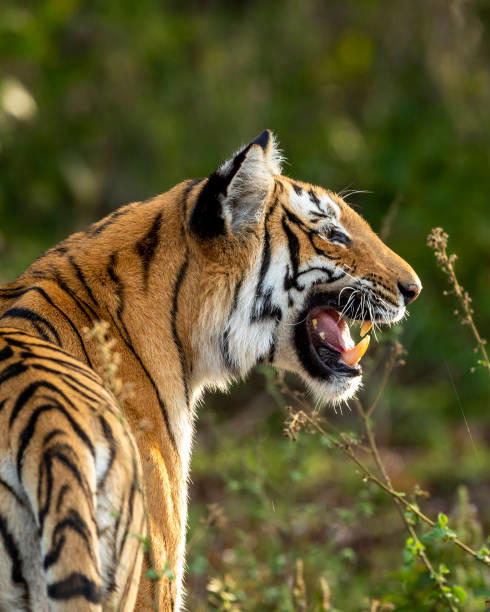
How Much Does an African Safari Cost?
Being surrounded by giraffes, elephants, lions, zebras, and cheetahs in Africa sounds like a dream come true. But it also sounds expensive. Getting a guide, accommodations in an area with easy access to wildlife, and airfare adds up quickly. So, how much does an African safari cost?
An African safari can run anywhere from $200 to $1,600 per person per day, or even more for something ultra-luxe. Read on for an in-depth breakdown of the costs below.
How Much Does an African Safari Cost on Average?
The cost of an African safari will vary depending on the specific destination, the type of accommodations, and the time of year among other factors.
The most budget-friendly safari includes tent accommodation and costs approximately $200 per person per day, while the most luxurious African safari can be up to $1,600 per person per day or more, with the sky the limit on high-end perks.
Your African safari costs include all park admission fees, meals, camping equipment, drinking water, and transportation. While most are at least a few nights, they can range from a short one-day adventure to a multi-week-long excursion. You’ll also need to account for tipping your guides thorughout, with the standard tip $10 to $20 per person per day.
Things That Impact Your African Safari Cost
You can do many things to cut your African safari costs, while other things will bring the price up. I always tend to focus on what’s important to me and splurge on those aspects. For instance, if you like staying in luxury accommodations, you might plurge on your stay but go during the off-season so it’s not as pricey.
The Length of Your Safari
Obviously, the total cost of your safari will be more the longer it is. However, the daily cost is cheaper when you book multiple days with one guide. It’s kind of like buying in bulk at Sam’s Club or Costco.
The Time of Year You Go
There is a high and a low season for African safaris. The high season is generally from May through September, when the kids are out of school in the Northern Hemisphere, the weather is the coolest and driest, and it’s easy to spot the animals. The downside is that it will cost more due to the higher demand.
For a more budget-friendly safari, consider the low season which is primarily summer in the Southern Hemisphere from around October through April. It will be hot and humid, typically with short bursts of rain between the sunshine, although heavy rains can occur in March and April.
Where Your Safari Is
The country and park you choose for your safari will have an affect on the cost. A safari that includes multiple countries will cost more compared to staying in one park. South Africa offers some of the cheapest safari options because it’s easier for self-drive trips, with the parks built better for these types of excursions.
The Level of Accommodation
You can stay in everything from a tent purchased at your local outdoor sporting goods store to yurts and lodge rooms with furniture and modern technologies like Wi-Fi. There are resort-like stays possble too, if you want an African safari that includes high-end accommodation like a villa, along with pools, bar and restaurant service.
Your Mode of Transportation
Driving yourself through one of the many parks and reserves is an option, but it’s generally not the best way to go. A guided safari ensures a better experience as the guides know where the animals hang out, which means you’re much more likely to spot the wildlife you want to see.
Less costly guided safaris are typically in open-roof minivans that people are crammed into. The nicer African safari tours use more comfortable Jeeps that are entirely open, ensuring that you’ll see everything wherever you sit.
How Many People Go On The Safari
The more people that come with you, the less your African safari will cost. Most accommodations will hold two people, and some have capacity for as many as five, although there’s usually a per-person charge for the safari. Still, it will cost less since you’ll be sharing one accommodation.
The Best African Safari Destinations
There are safari destinations throughout Africa. Each location has its own unique wildlife and price range, so it’s important to choose based on the type of African safari experience you want and your particular budget.
Kenya is the original safari destination. It makes sense, with multiple large game reserves, the great migration, and a slew of cultural experiences to encounter. Some of the best reserves to visit in Kenya include:
- Masai Mara National Reserve- The most popular park in Kenya.
- Samburu Game Reserve- Has unique wildlife, like Beisa oryx, reticulated giraffes, and Somali ostrich .
- Tsavo National Parks- The largest and most remote park in Kenya.
- Amboseli National Park- You can see Mount Kilimajaro at this park.
- Lake Nakuru National Park- Millions of flamingos and white rhinos live here .
There are many great lodges to stay at in around these parks that will take you on a drive to see the wildlife every day. One that we can recommend is Elephant Bedroom Camp which gets its name from the elephants known to frequent the grounds. You might see monkeys and impalas right from your luxury tent too.
This camp has all of the comforts that any modern accommodation would include like a pool, hot and cold water, electricity, and WI-FI. A daily drive through the bush in an open-air vehicle, a picnic lunch, cultural visits, and entertainment by Samburu warriors are all included.
If your dream is to see a gorilla or chimpanzee in the rainforest, then Uganda is the African safari destination for you. It’s different than most of the other African safaris in that here they’re enjoyed in rainforests rather than the desert. You can check out some amazing waterfalls during your safari. Some of the top parks to consider in Uganda are:
- Murchison Falls National Park- Has various mammals such as giraffes, buffaloes, and crocodiles.
- Bwindi Forest National Park- Has the largest population of endangered silverback gorillas.
- Kibale Forest National Park- Has the highest diversity of primates in Africa.
- Mgahinga National Park- A large park spanning three countries where endangered silverback gorillas live.
- Queen Elizabeth National Park- One of two places where lions climb trees.
To be fully immersed in the rainforests that gorillas and chimpanzees roam, stay at Bwindi Lodge . You might even spot colorful birds and chimpanzees swinging from the trees in the Bwindi forest right from your room. There’s also a village nearby hosting the award-winning Bwindi Bar.
Another advantage of staying at the Bwindi Lodge is that you can trek into the forest to see the mountain gorillas and other wildlife instead of having to get into a vehicle. There’s also a waterfall trail for exploring the landscape as well.
Botswana is a lesser-known safari destination, so it will feel more exclusive and it comes at a smaller cost. There are a variety of landscapes and different types of wildlife, but one of the most popular types of safaris here is a boat safari where you can see elephants and hippos. The best parks in Botswana are:
- Okavango Delta- The most popular park in Botswana, famous for boat safaris on its winding channels.
- Chobe National Park- You can take a car to this park, making it more accessible. Elephants are a popular group here.
- The Kalahari- Look for black-maned lion during the wet season.
- Makgadikgadi Pans- Find unique African animals across glistening salt pans.
- Moremi Wildlife Reserve- One of the most remote and diverse wildlife areas of Botswana.
Staying at Abu Camp gets you up close and personal with elephants. Since the camp is next to a lagoon, there is a herd of elephants that call it home. There’s even a chance to sleep in the elephant boma for the ultimate experience. Every type of safari is available here too, from game drives to boat safaris.
Abu Camp has super comfy accommodations with modern furnishings and all the luxuries of any good hotel. There’s a plunge pool to cool off during the day while you wait for your evening safari while the private canvas tents overlook the Delta providing picturesque views.
Tanzania is home to the Serengeti, where millions of wildebeest form one of the most incredible sights that can be witnessed on the planet. It’s also home to Mount Kilimanjaro, where the most adventurous can summit its peak. This place is basically home to everything you’d envision when thinking of Africa. The most popular safari parks in Tanzania are:
- Serengeti National Park- The world’s most popular destination for a safari.
- Ruaha National Park- The largest park in Tanzania with many elephants and giraffes.
- Ngorongoro Crater Conservation Area- Home to the Ngorongoro Crater, where you can find the largest population of lions in the world .
- Lake Manyara National Park- Home to a massive lake where you can spot animals looking for water during the dry s eason.
- Mikumi National Park- Mostly flat grassland, making it easy to spot wildlife.
For the best views over the Serengeti day and night, Klein’s Camp is a great place to stay for your safari. It’s situated on the border of the national park, allowing it to be one of the only camps offering open-air night drives. It’s also perfectly positioned to watch over the Serengeti right from your room.
Klein’s camp feels extremely exclusive as it includes 10,000 hectares of privately leased land. You can go off-roading anytime during the day, or follow a zebra trail. There are also specialized photography tours and visits to the Maasai village to experience their unique culture.
South Africa
South Africa is where you want to go to save a few dollars. There is plenty of wildlife and it has better infrastructure than most other safari destinations. That means there’s more opportunities for self-guided tours, which means significant savings. Of course, there are great guided tours too they just cost more. The best reserves in South Africa are:
- Kruger National Park- The most popular park in South Africa with the Big Five.
- Madikwe Game Reserve- A malaria-free, affordable park with rare wild dogs.
- Sabi Sands Game reserve- A private reserve bordering Kruger National Park.
- Phinda Private Game Reserve- Famous for cheetah sightings.
- Tswalu Kalahari Reserve- The largest private game reserve in South Africa.
If you want to stay in luxury on your South African safari, Loapi Tented Camp provides the quintessential safari aesthetic. However, it comes with a fully stocked kitchen, and an environmentally friendly plunge pool. All have plenty of space between each for a more secluded feel.
Each safari home comes with your own personal butler, a private chef to cook all your meals, a study with Wi-Fi, a full bar, and indoor/outdoor shower. You’ll even have your own safari vehicle with a private tour guide to take you out every evening. When you don’t feel like exploring by vehicle, head out on horseback instead.
About The Author
K.C. Dermody
K.C. Dermody is the author of Best Travel Guide for First Time Visitors to Ireland and has had hundreds of travel articles published online and in print, including Yahoo! Travel, Trips To Discover, Hotels.com, Travelocity, and many more. She also creates itineraries for major tour companies focused on Greece, Croatia, Iceland, Ireland, the UK, Canada, and the US.
Share This Article

IMAGES
VIDEO
COMMENTS
lodge style Mystic safari nights. If you want to experience the magic of a Chobe National Park safari, this is the place. Built around a majestic 800-year- old baobab tree and boasting great river views, this is where modern hospitality and century-old landscapes blend seamlessly. from US$ 375 per person per night.
Safaris in Chobe National Park. 1. From Victoria Falls: Chobe National Park Small Group Tour. Visit one of Africa's most popular parks on this Chobe day trip from Victoria Falls. Travel the rugged landscapes of the…. 2. Chobe Full Day Safari Trip. A Trip all day in the Chobe National Park Botswana for about 9 hours.
Entrance fee to Chobe National Park. For international non-residents, adult daily fees cost $11 and children cost $5.50. Carrying a small amount of Botswana currency, the Pula (BWP) is useful when paying for smaller food or ticket items. Regulations.
Situated in the north of Botswana, Chobe National Park is one of Africa's most legendary safari destinations. It's home to the world's largest elephant population, along with a wonderful variety of other wildlife. Chobe is also a great destination for a budget safari. The park is easily accessible and highlights as big as elephants are ...
Chobe National Park in Botswana, known as the 'elephant capital of the world', is one of my absolute favourite safari destinations in Africa. Chobe was declared a national park in 1967 and it covers over 11,700km 2 - that's about the size of Qatar. It's a popular destination for both guided and self-drive safaris - although a 4×4 is needed as it's pretty sandy!
Popular Chobe National Park Safaris. Experience Chobe's exceptional safaris, renowned for its high concentration of elephants and diverse wildlife. Enjoy boat safaris along the Chobe Riverfront and thrilling predator sightings in the Savuti Marsh, offering unforgettable adventures in this stunning national park. 5 DAYS.
Being on Safari in Chobe National Park can be an amazing and exciting experience, but it can also be a very dangerous experience if you don't follow the proper safety rules. To ensure that your safari experience is a memorable and safe one, I have outlined some general safari safety rules for you to review below.
Breathlessly captivating, this corner of Botswana has long been associated with the world's greatest explorers, including David Livingstone. Follow in their footsteps at Savute Elephant Lodge. Head out to our unique viewing hide at dusk or dawn, overlooking the watering hole, and see elephants, hyenas and cheetahs in their element.
Welcome to one of the great wildlife destinations of Africa. When you visit the Chobe National Park, you will never forget the first glimpse of the dazzling, deep blue Chobe River, as it winds its way through sandy terrain, small towns, lush floodplains, dense forests of cathedral mopane trees, and endless broadleaf woodlands. The park is named after this majestic river that protects 10.700 ...
General tips for visiting Chobe national park. You'll need a 4×4 wheel drive car to be granted access to the park - a 2×2 can't make it in the sandy roads. If you're self-driving, observe the driving rules within the park- 2 tires should always touch the road. The park is soo big, you'll need more than 2 days to at least see the ...
Chobe National Park: In detail. Chobe National Park. The Chobe National Park covers about 11,700km² of the northern Kalahari, much of it impenetrable thorn bush growing on deep sand. This is an old safari area. Livingstone visited it in the 1850s, as have countless big-game hunters since.
Compare 375 Chobe safari tours offered by 65 specialized tour operators. Find the best deals using the largest marketplace for African safaris. Best price guarantee! ... 1-20 of 375 trips, packages and vacations to Chobe National Park Top Rated Operator. 5-Day Botswana Luxury Tour. $3,346 to $5,849 pp (USD) ...
The Linyanti is situated north of Savuti in a corner of the Chobe National Park and is most famous for its large herds of elephants, lion, sable, roan, hippos, and wild dog. The Chobe National Park offers a well-rounded safari experience with open-vehicle game drives, walking safaris, mobile safaris, birding safaris, and boating safaris.
Month by month description of the best time to visit Chobe National Park. Including the best months, pros/cons, high/low seasons and the best/worst weather! Menu. Safaris & Tours. Botswana (562) ... Safari Tours to Chobe NP. 5-Day Botswana Luxury Tour. $3,346 to $5,849 pp (USD)
Muchenje Safari Lodge is situated high on an escarpment on the quieter western side of Botswana's Chobe National Park. With wonderful views of the Chobe River and the seasonal flood plains, its position means that it is far away from the bustle of Kasane yet just two hours from the magnificent Victoria Falls.
Chobe Photographic Safari. Our 6-Day Chobe Savuti Safari is a fly-in, luxury lodge safari. Explore the best Chobe National Park has to offer with this fully inclusive package. USD3700. FROM: USD3700. Chobe Savuti Safari. This Okavango Chobe Victoria Falls package is a tailor made trip for individuals or groups alike.
Chobe National Park nestles in northern Botswana and is renowned for Africa's largest herds of elephant and Cape Buffalo. Chobe offers a true wilderness experience with private concessions and camps that are unfenced and open to free roaming wildlife. There are only 8x suites available at Ngoma Safari Lodge, which speaks to the intimacy of lodge.
Most travelers pick the dry season for a safari in Chobe National Park, as ever-increasing water independent animals stay around the Chobe River. During the hot months - August, September and October - there is some sensational game viewing, if you can stand the heat…. The rainy season is definitely worth considering, especially for ...
The recommended number of days for a safari in Chobe National Park. Specifically, if you are self-driving, it is recommended to stay about 5-days to about a week if you plan to as well see Moremi National Park. That long period is suggested just to increase your chances to witness animals hunting and for you to spot the harder species like ...
2 Day 1 Night Chobe Safari ex Livingstone/Victoria Falls. 15. 4WD Tours. from . C$537.12. per adult. SPECIAL OFFER. chobe 3hr sunset boat cruise. 10. 4WD Tours. from . C$68.86. ... Chobe National Park Game Drive, Botswana. 15. 4WD Tours. from . C$87.58. per adult. Chobe 6 Hours Game Drive. 1. Nature and Wildlife Tours. from . C$123.95.
Enjoy game viewing in this iconic park. Chobe National Park is well known for its large herds of elephant that frequent the Chobe River on a daily basis. In the dry season an estimate of up to 85,000 elephants can be dispersed within the Chobe National Park, where the majority of them can be found along the river.
Botswana's Chobe National Park Chobe is well-known for having a sizable population of elephants, especially around the Chobe River, where herds gather in great quantities during the dry season.
Do a Day trip to chobe national park for a safari game drive and game cruise. Tour one of the 7 wonders of the world "The Mighty Victoria Falls That Thunders" Ticket Options. 1 Option Available. 3 Nights Victoria Falls , Chobe Safari and Hwange National Park Safari: $410.26
Chobe National Park, Botswana Chobe National Park in Botswana is home to the largest population of elephants in Africa, making it a prime location for photographing these gentle giants.
Your African safari costs include all park admission fees, meals, camping equipment, drinking water, and transportation. While most are at least a few nights, they can range from a short one-day adventure to a multi-week-long excursion. ... Chobe National Park- You can take a car to this park, making it more accessible. Elephants are a popular ...